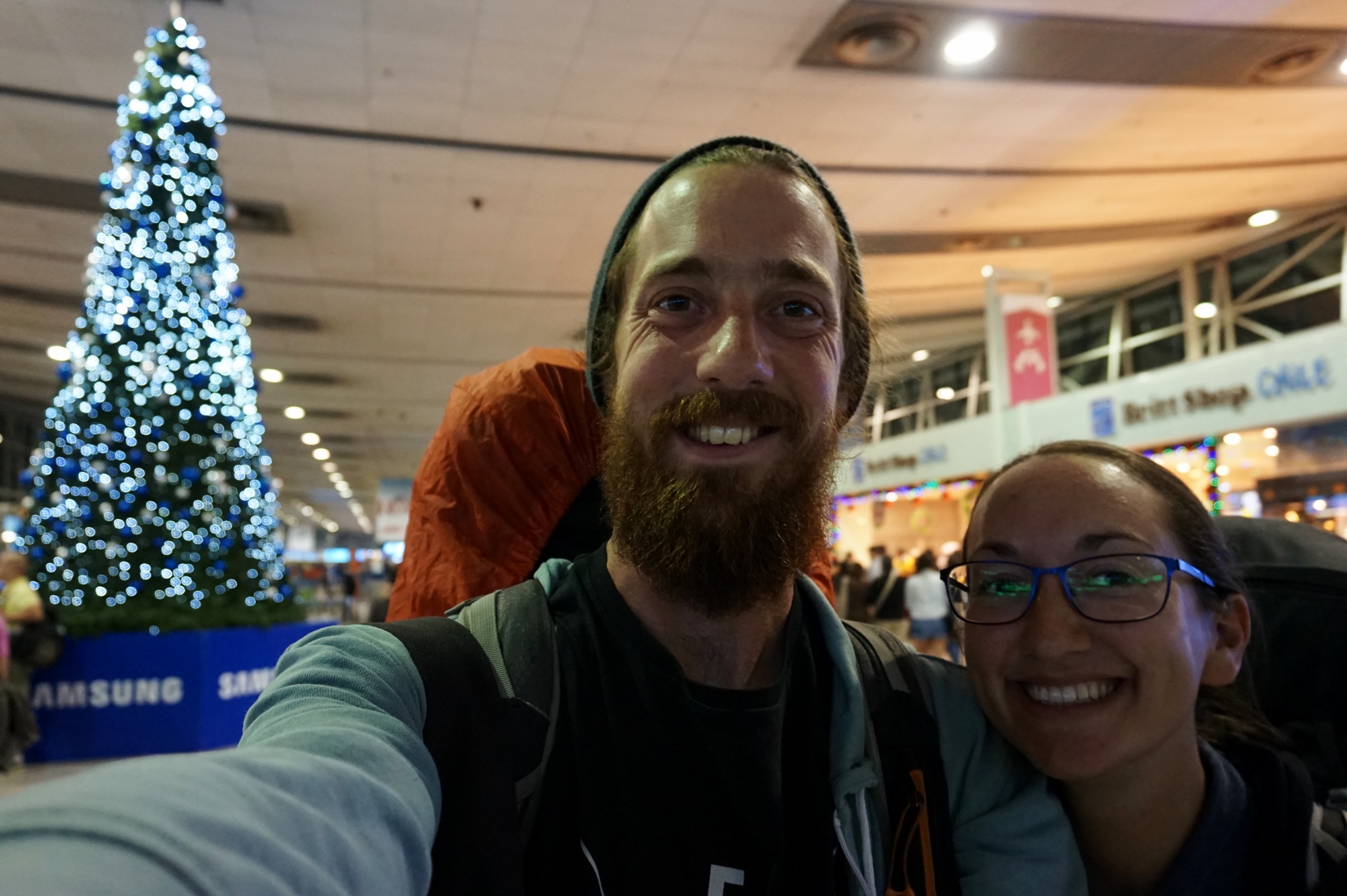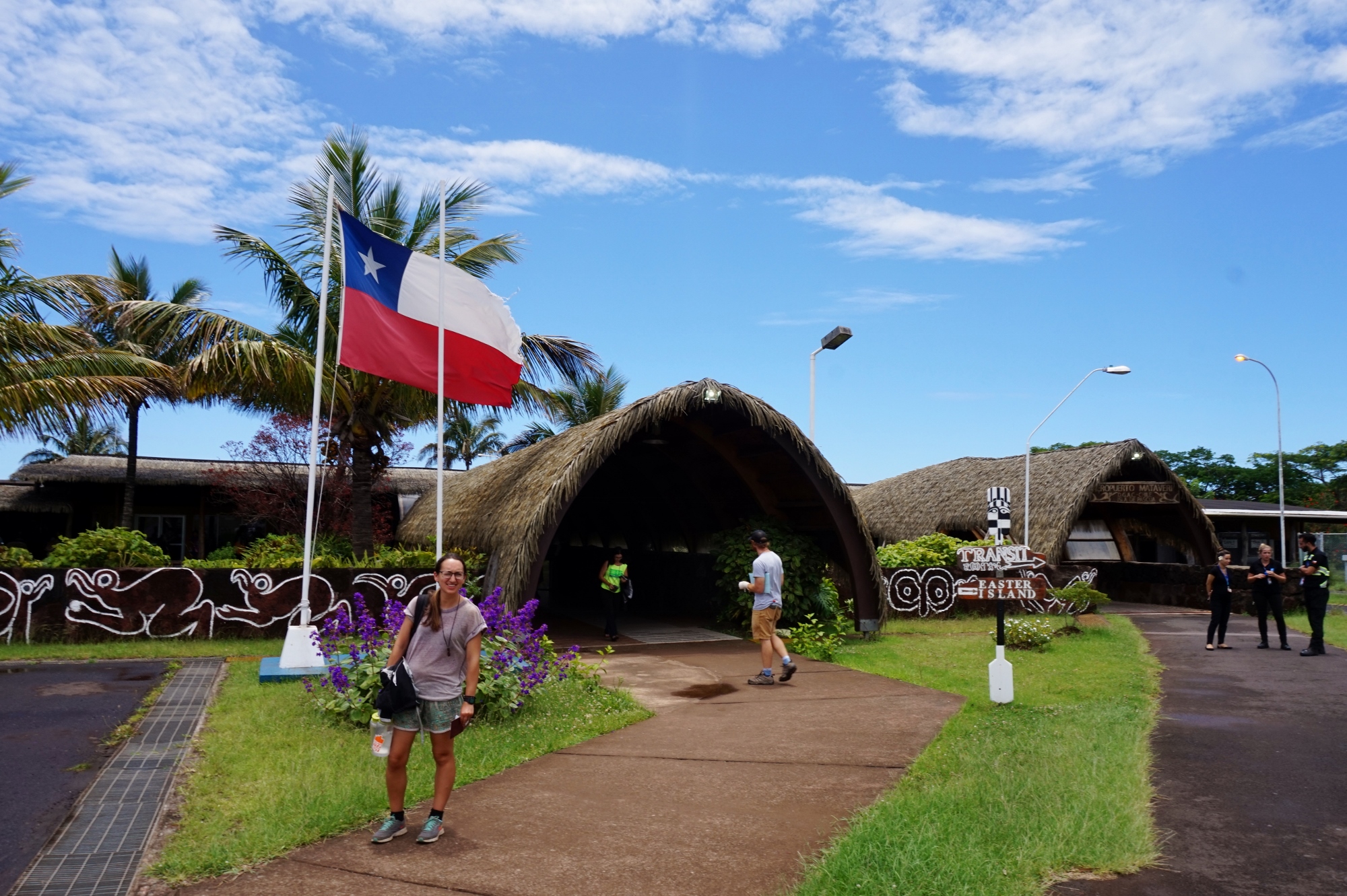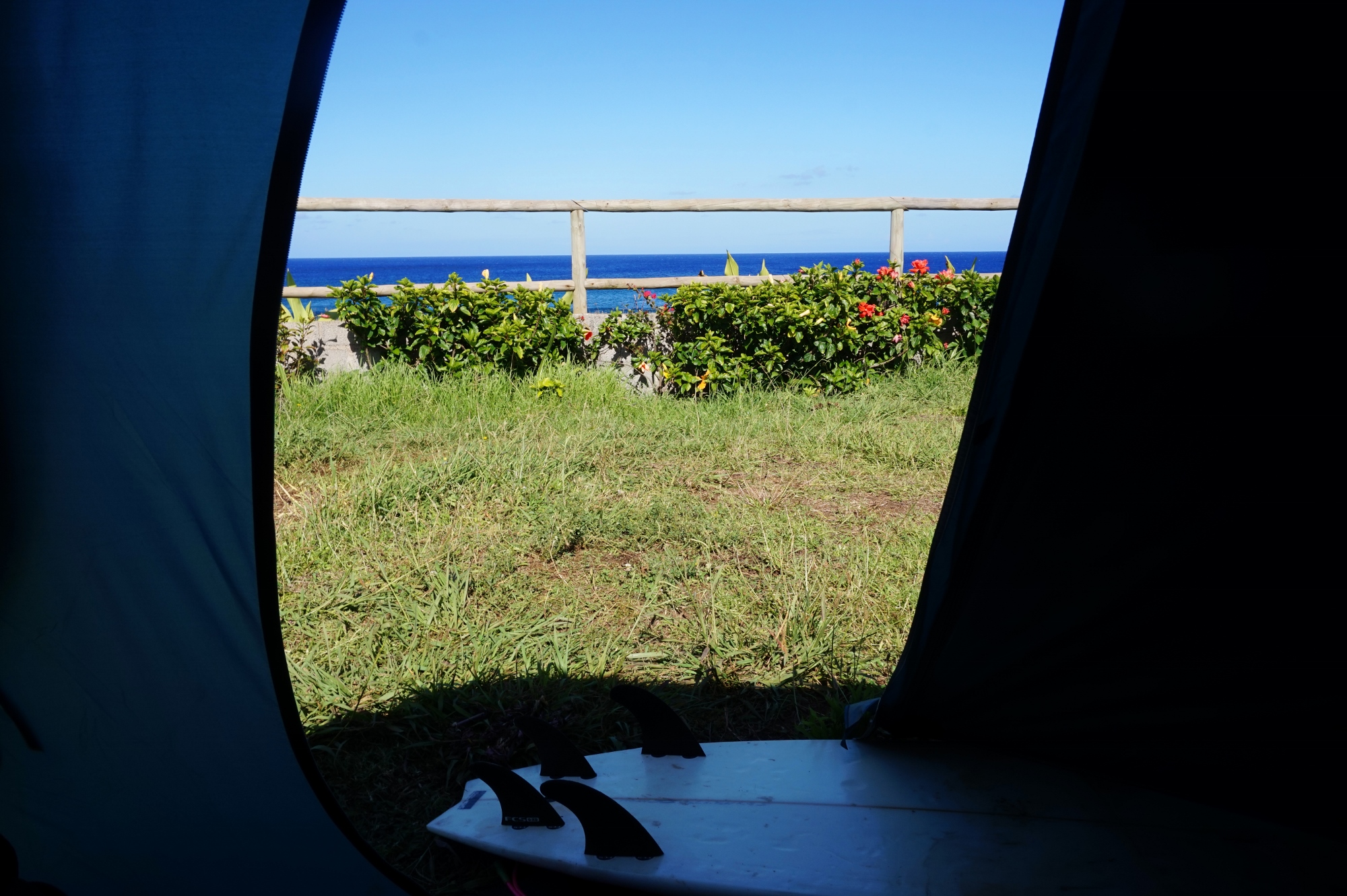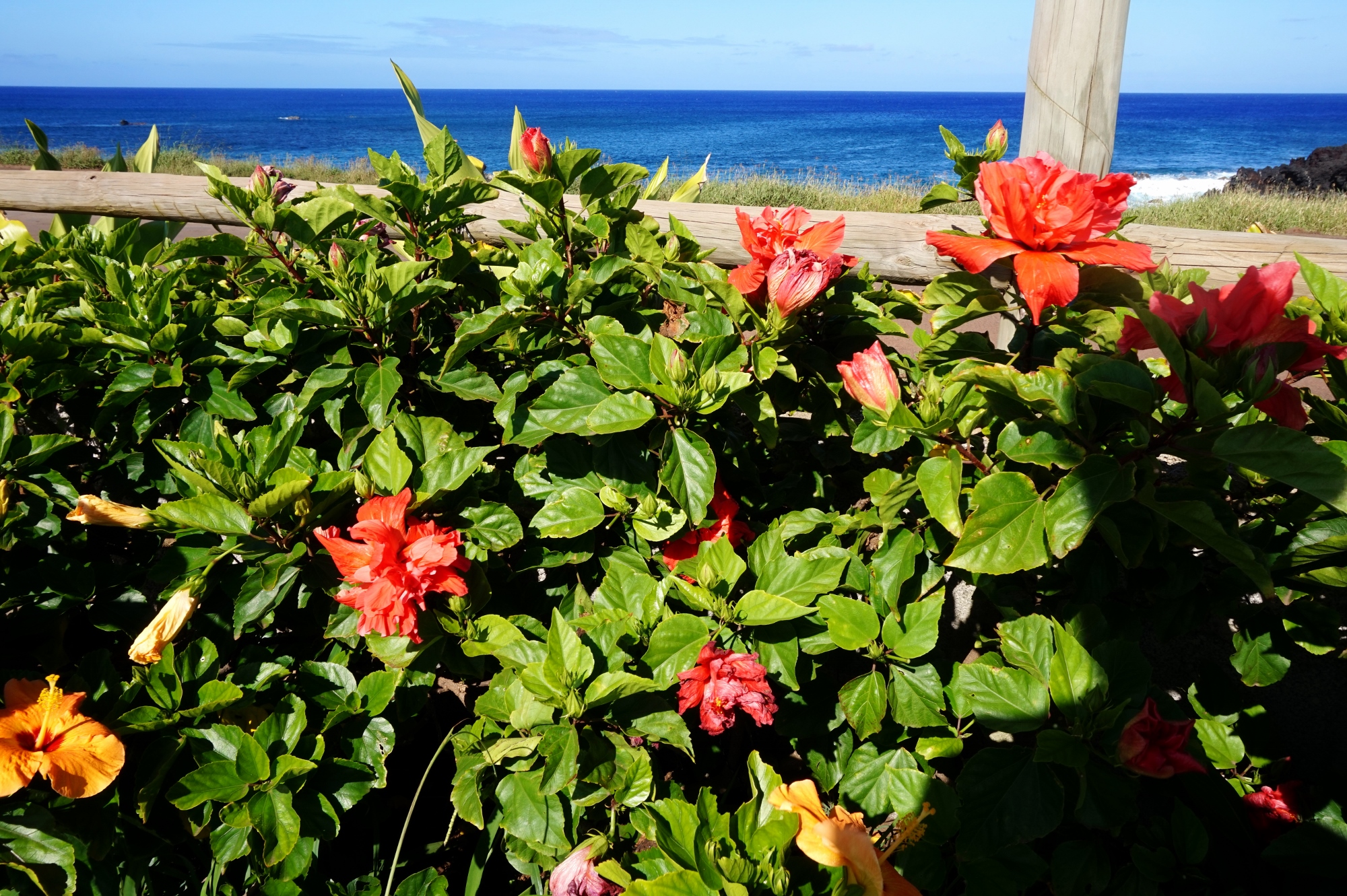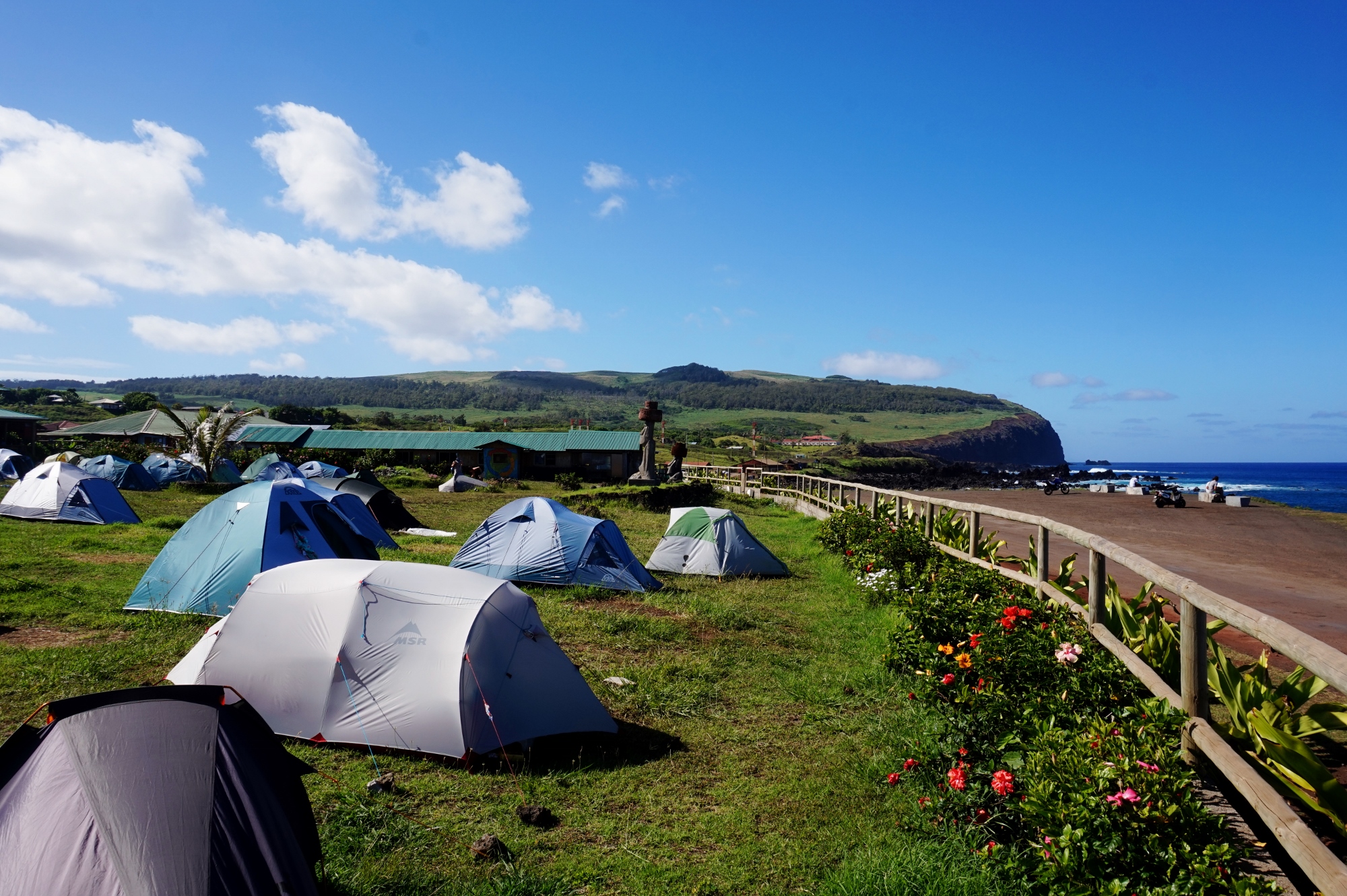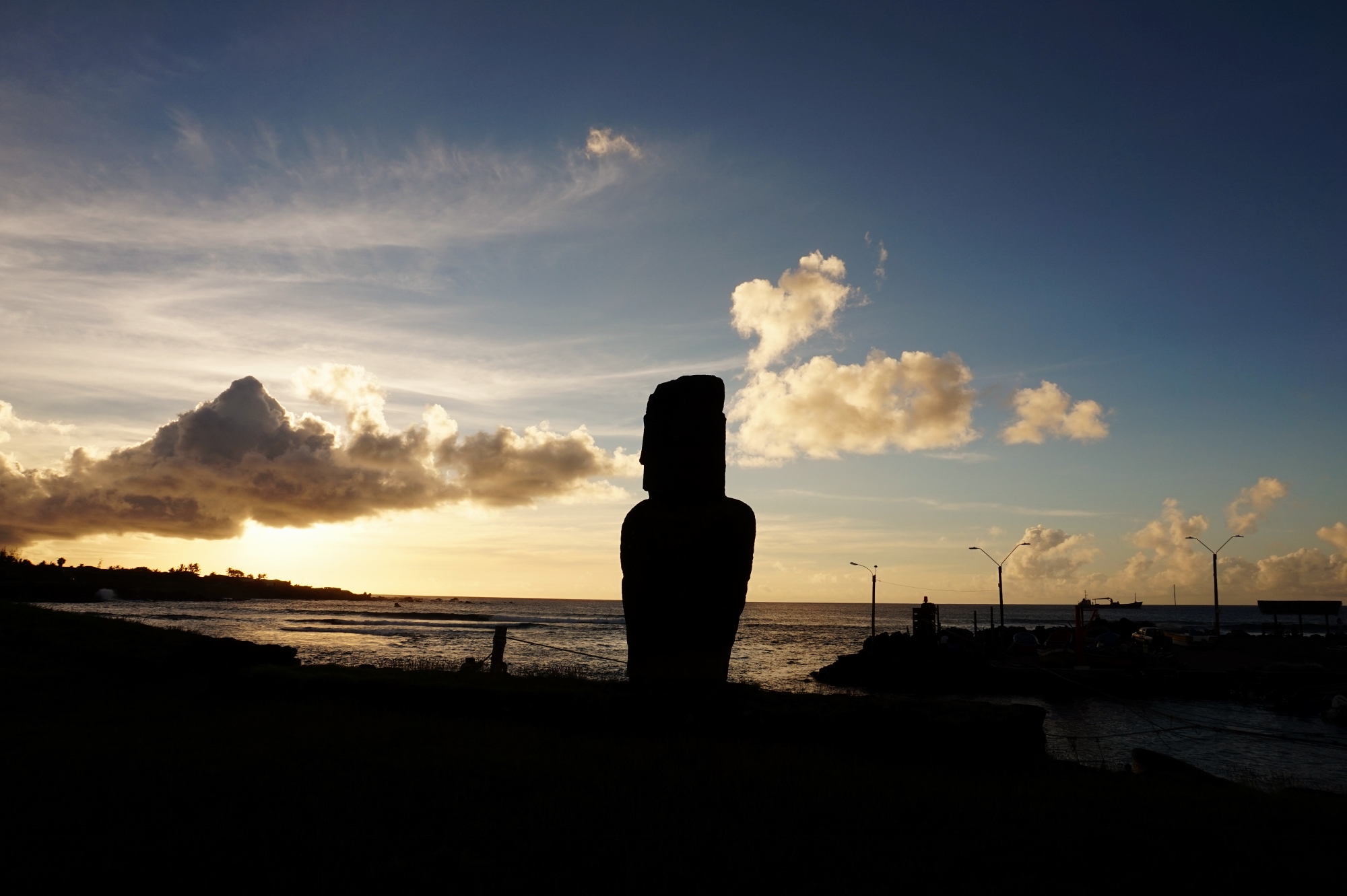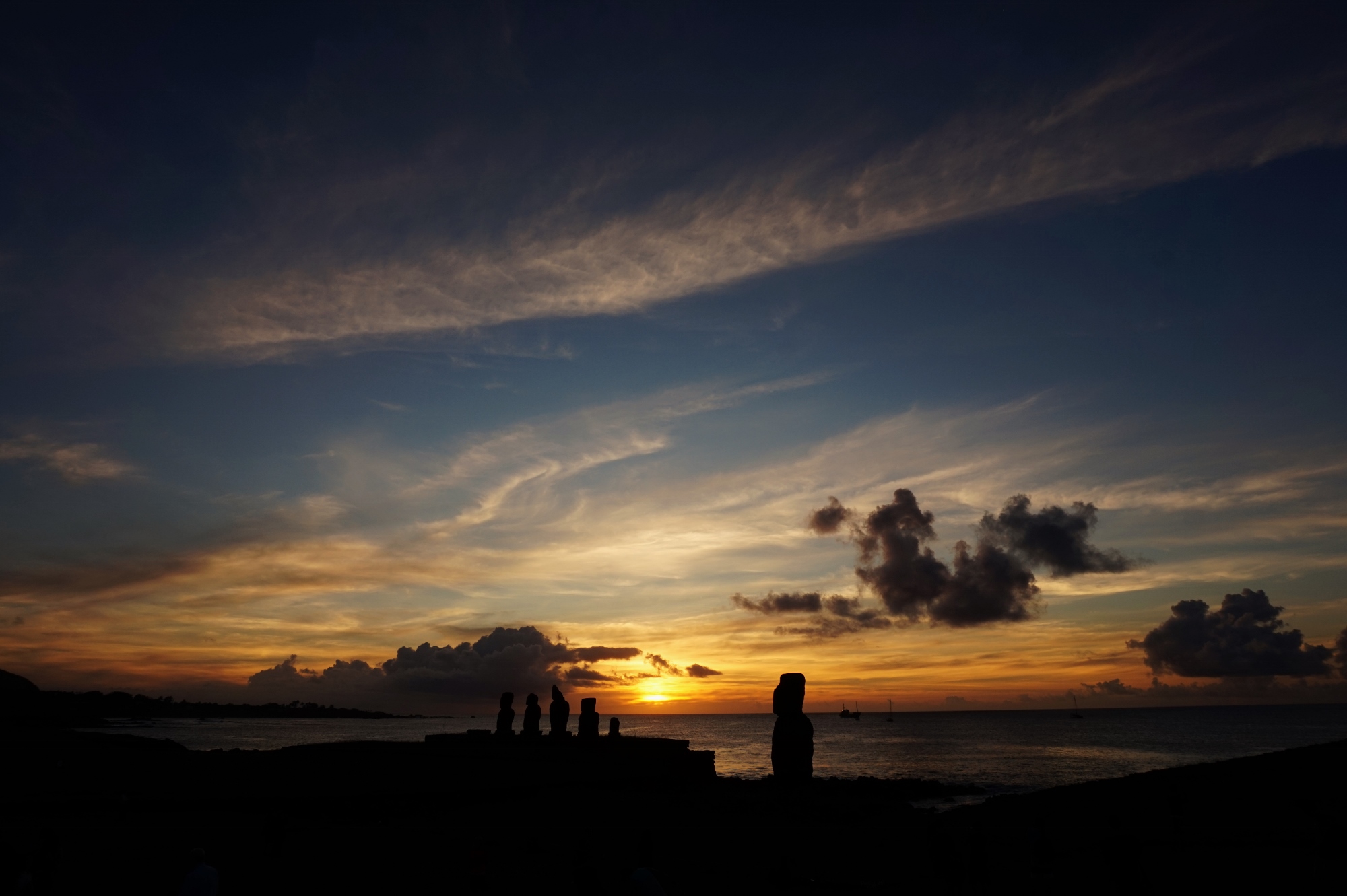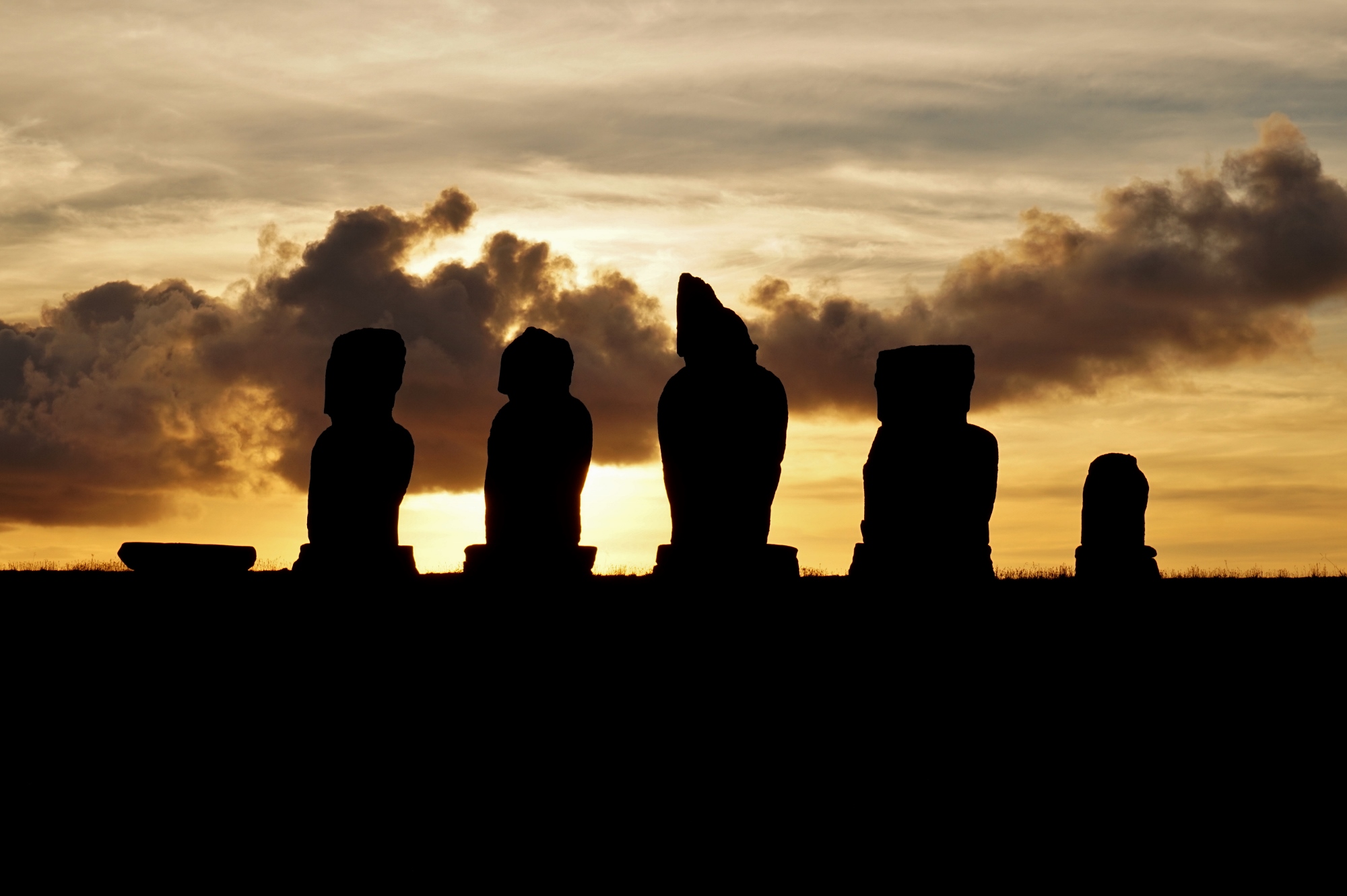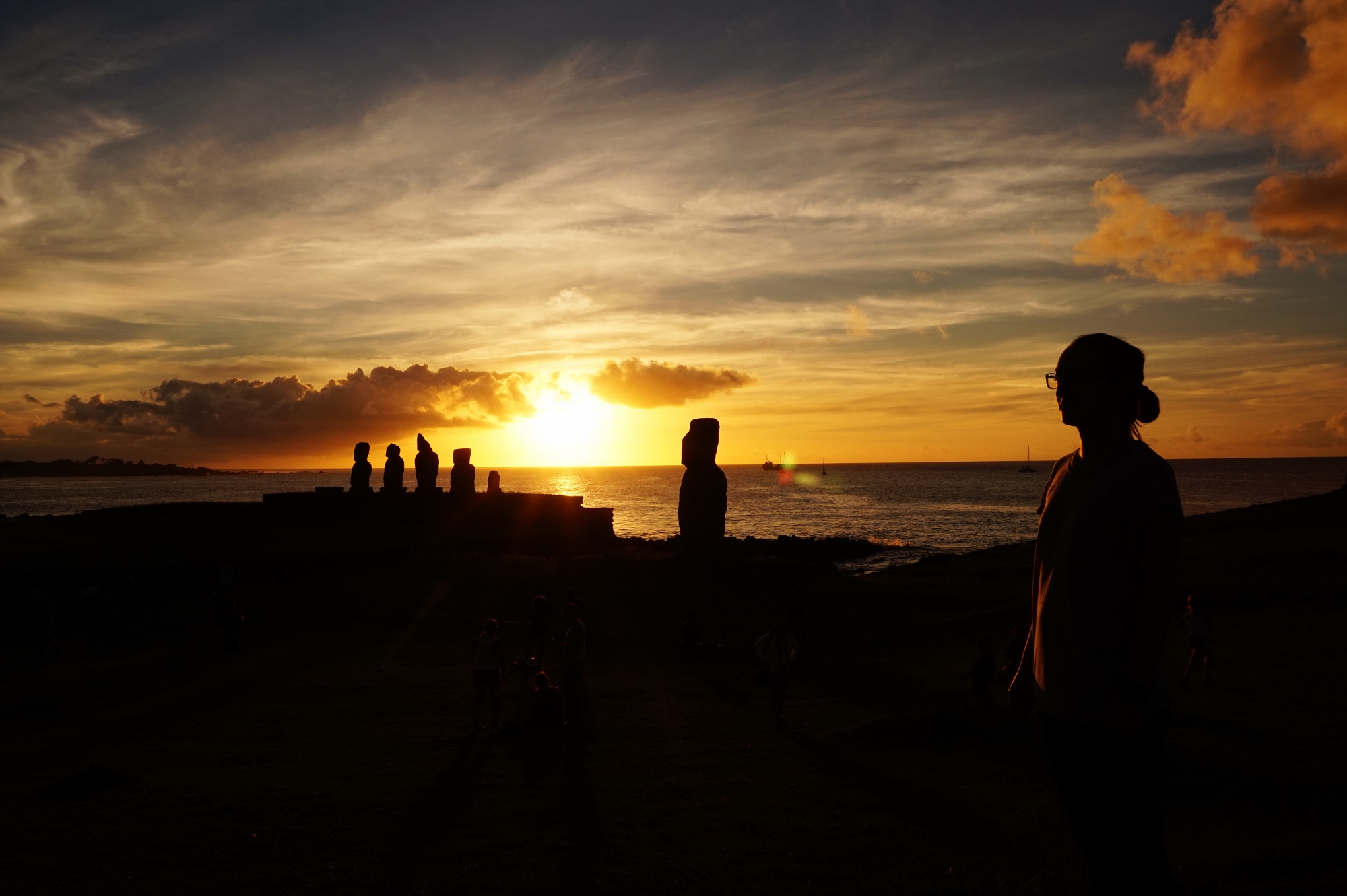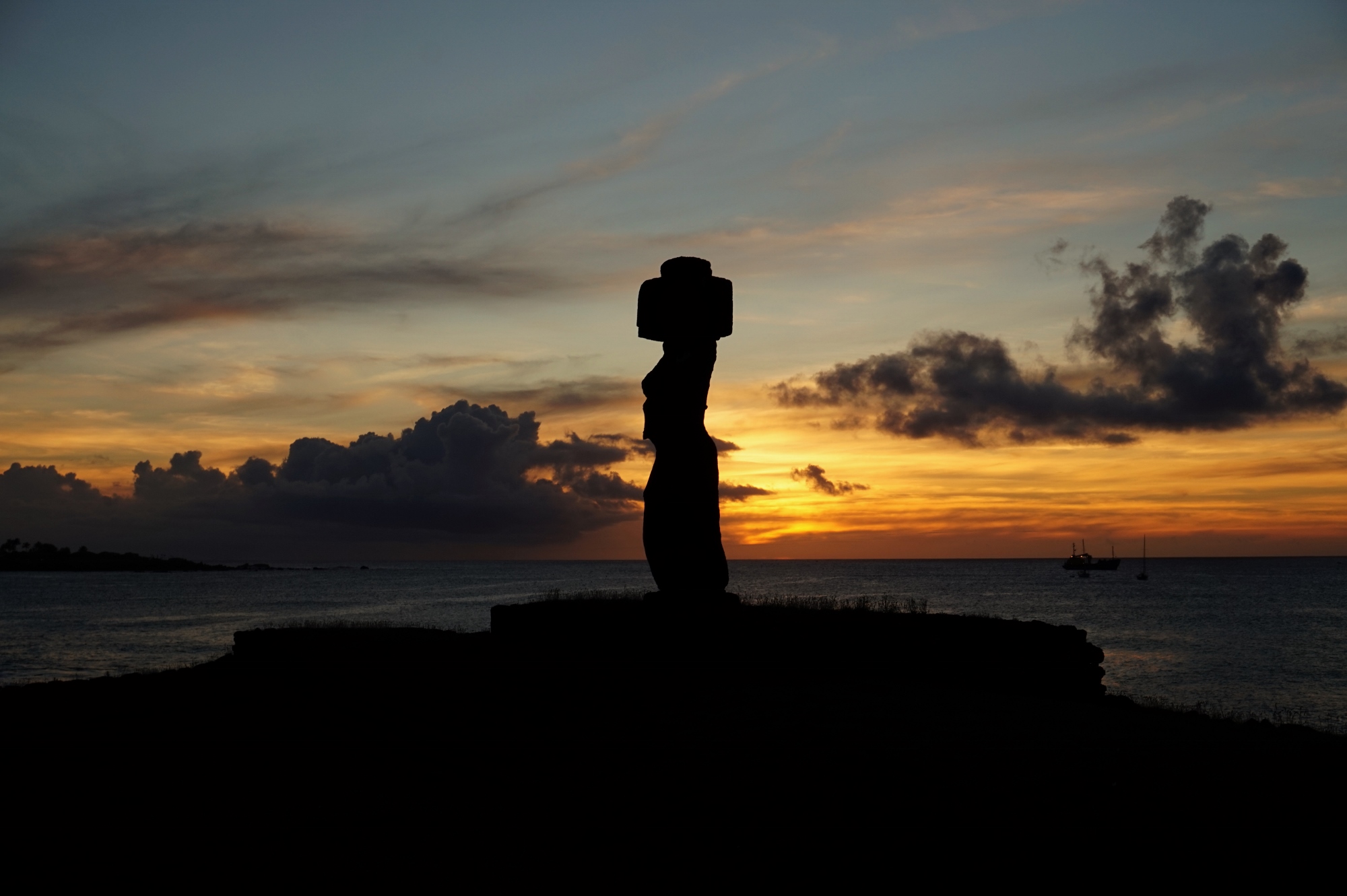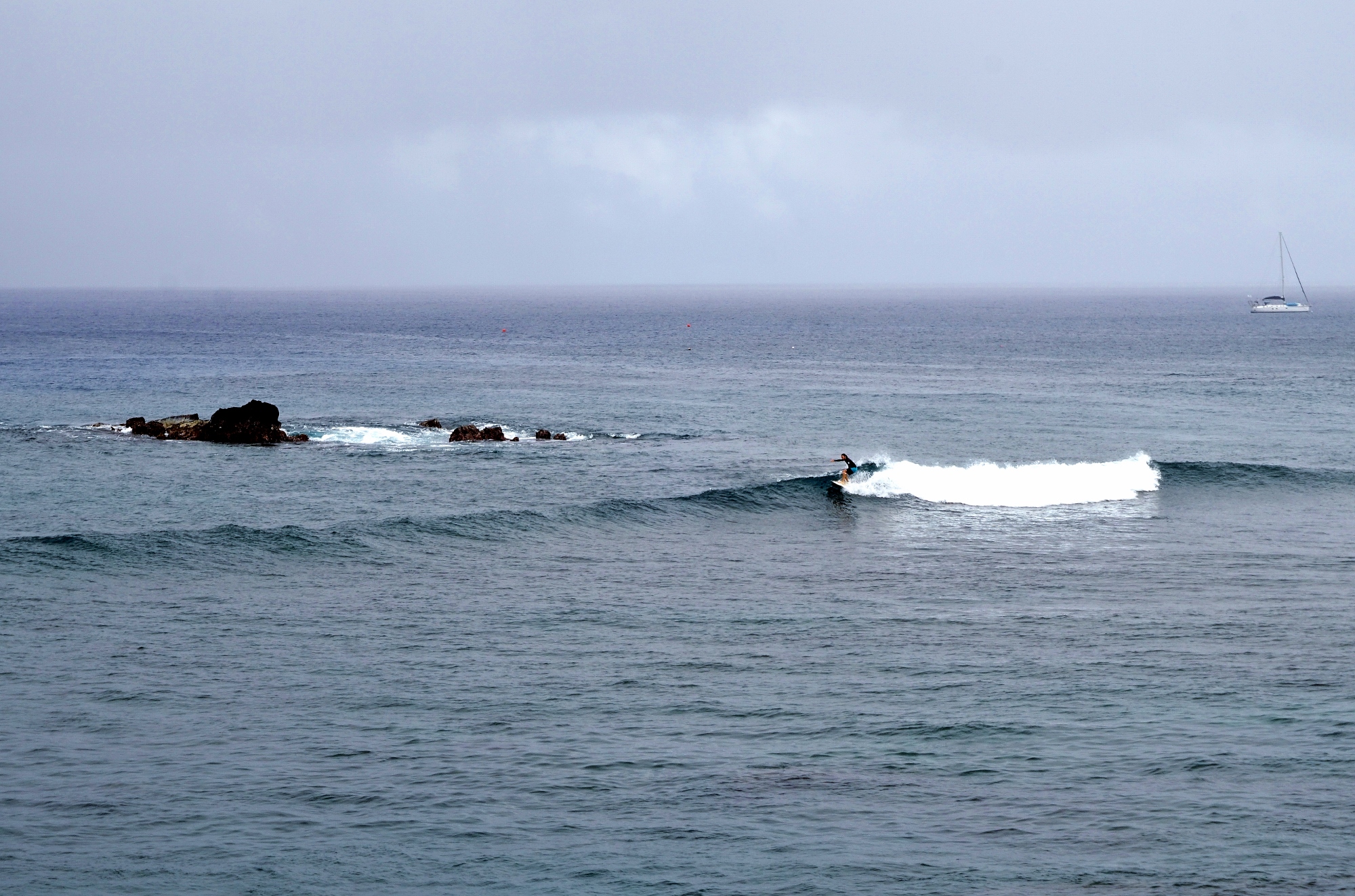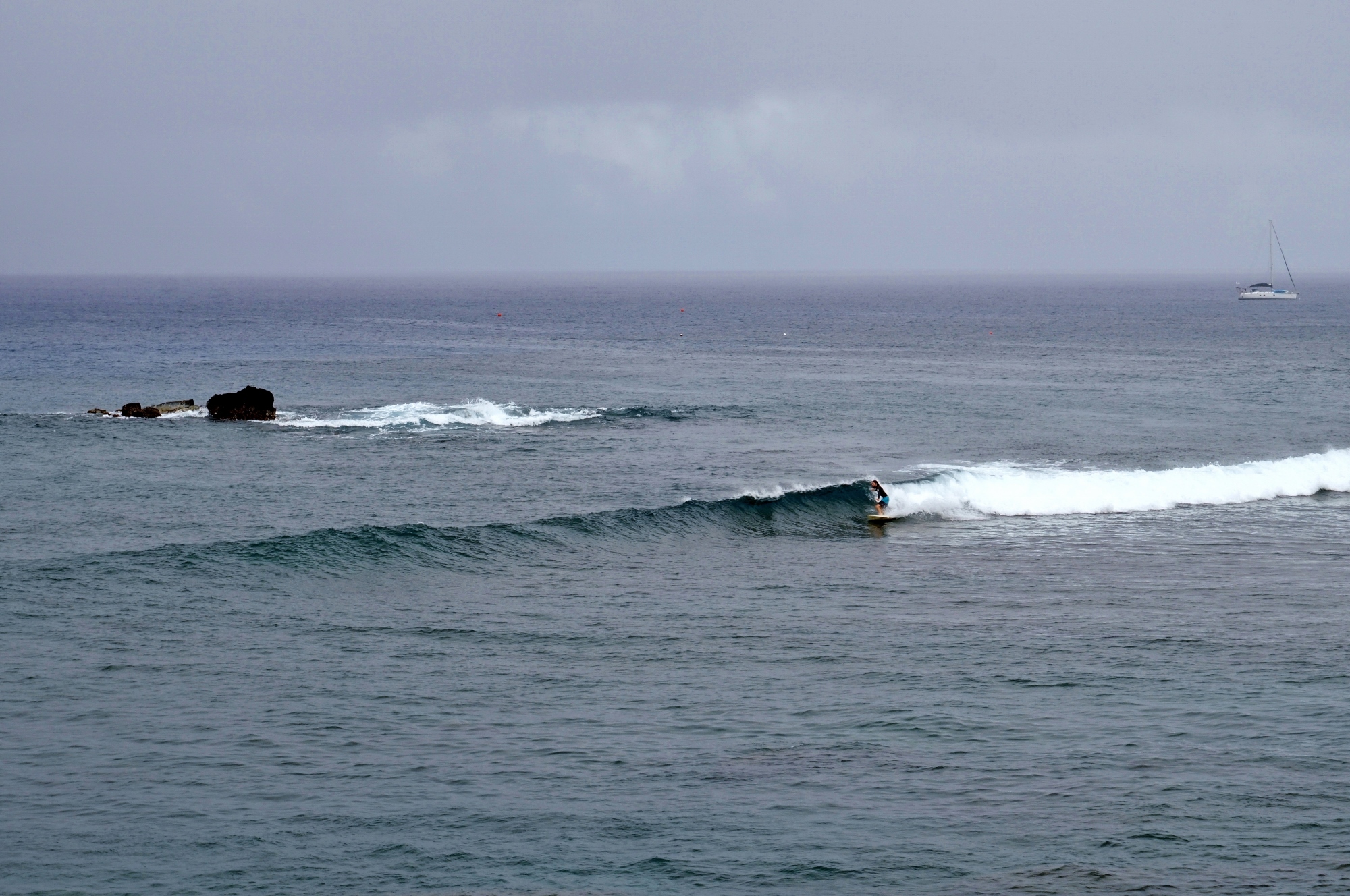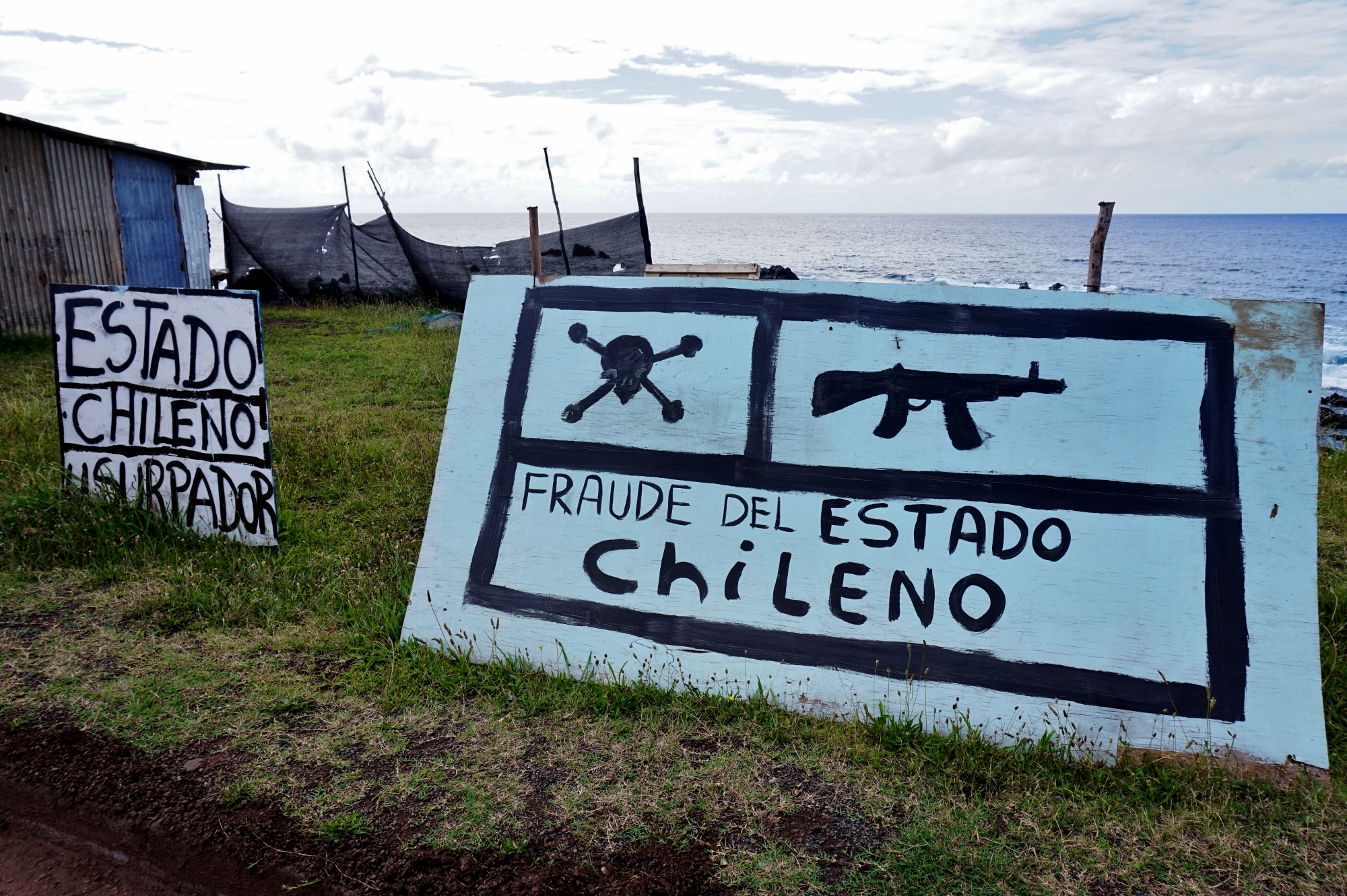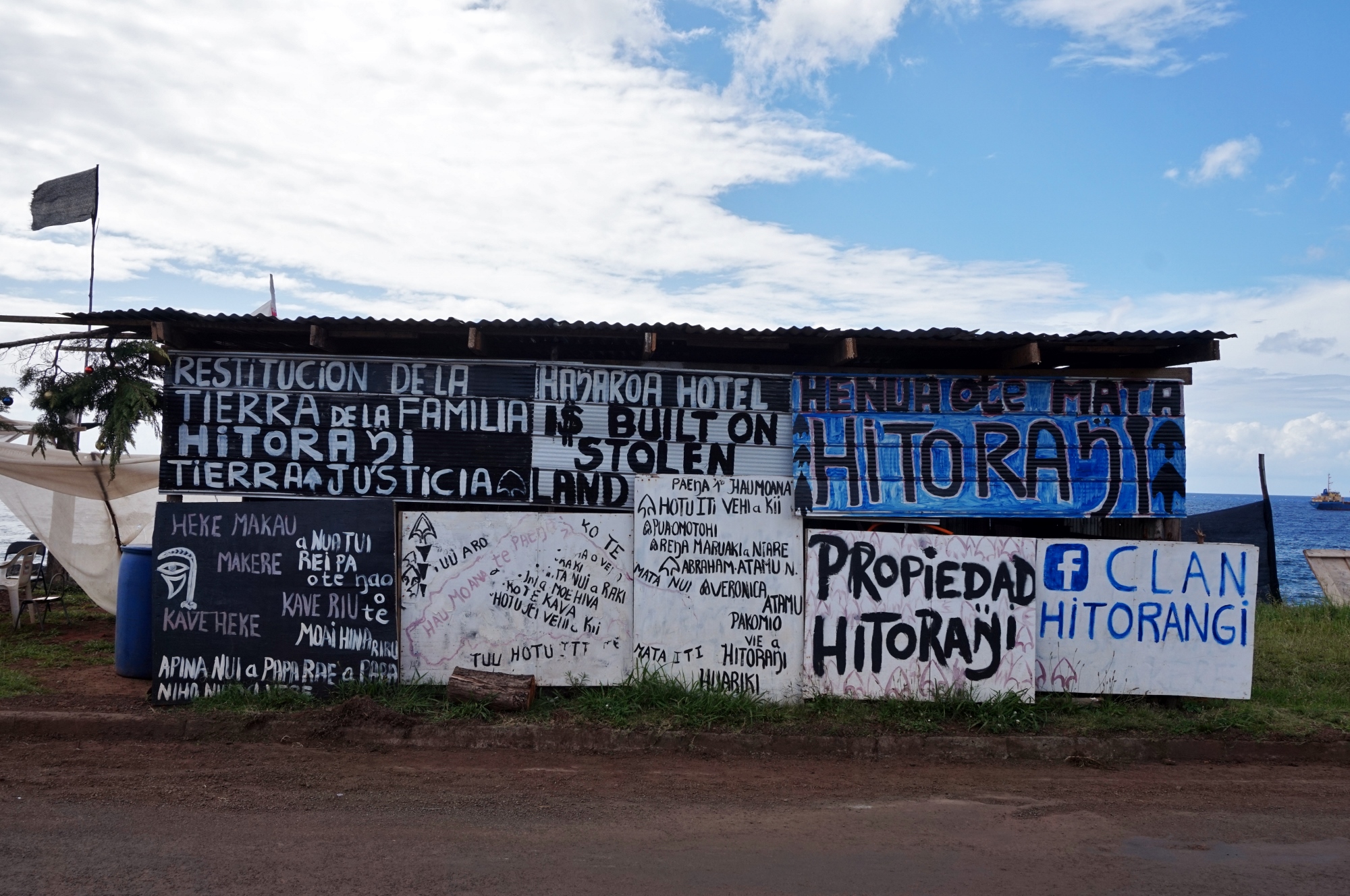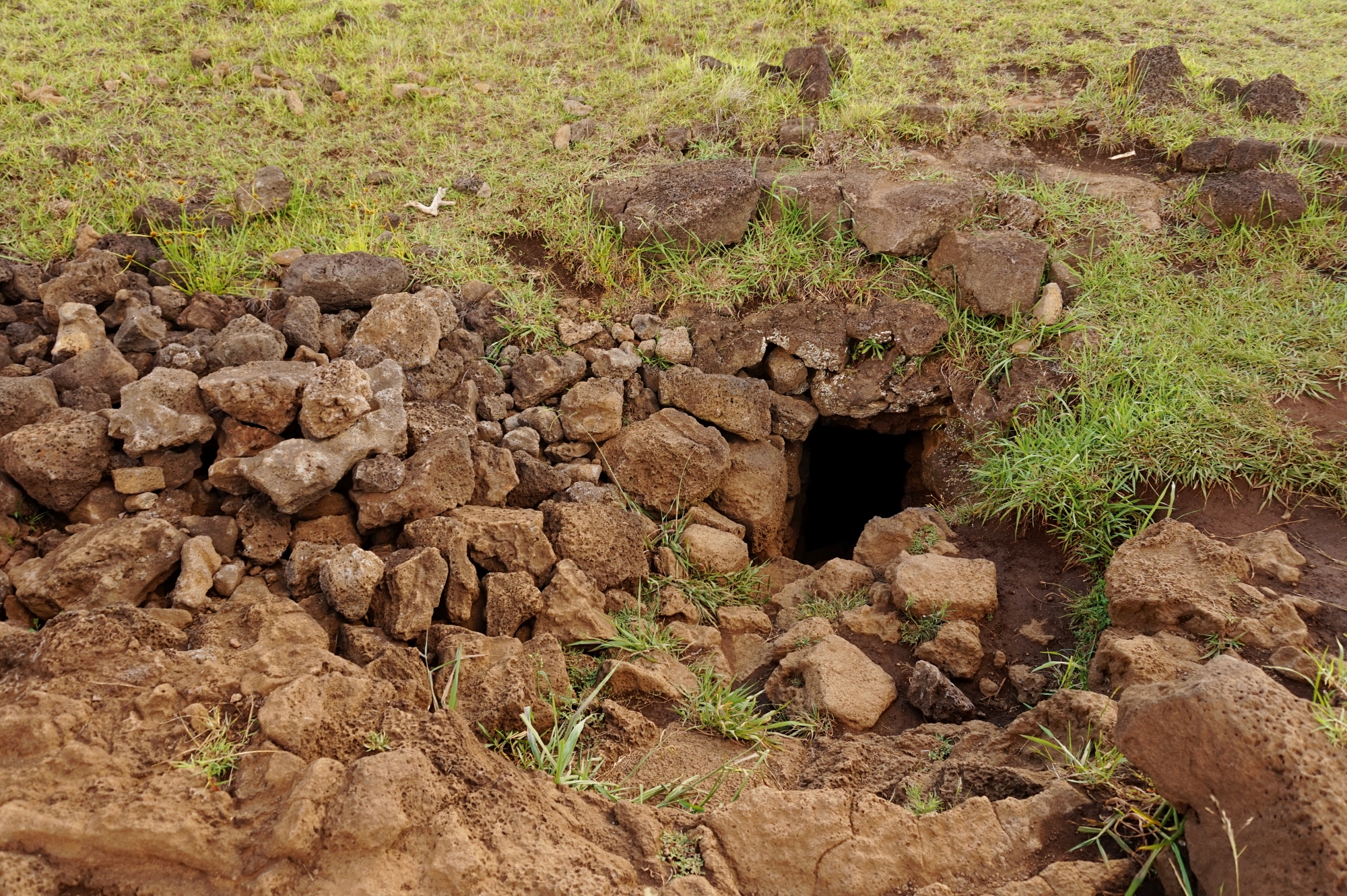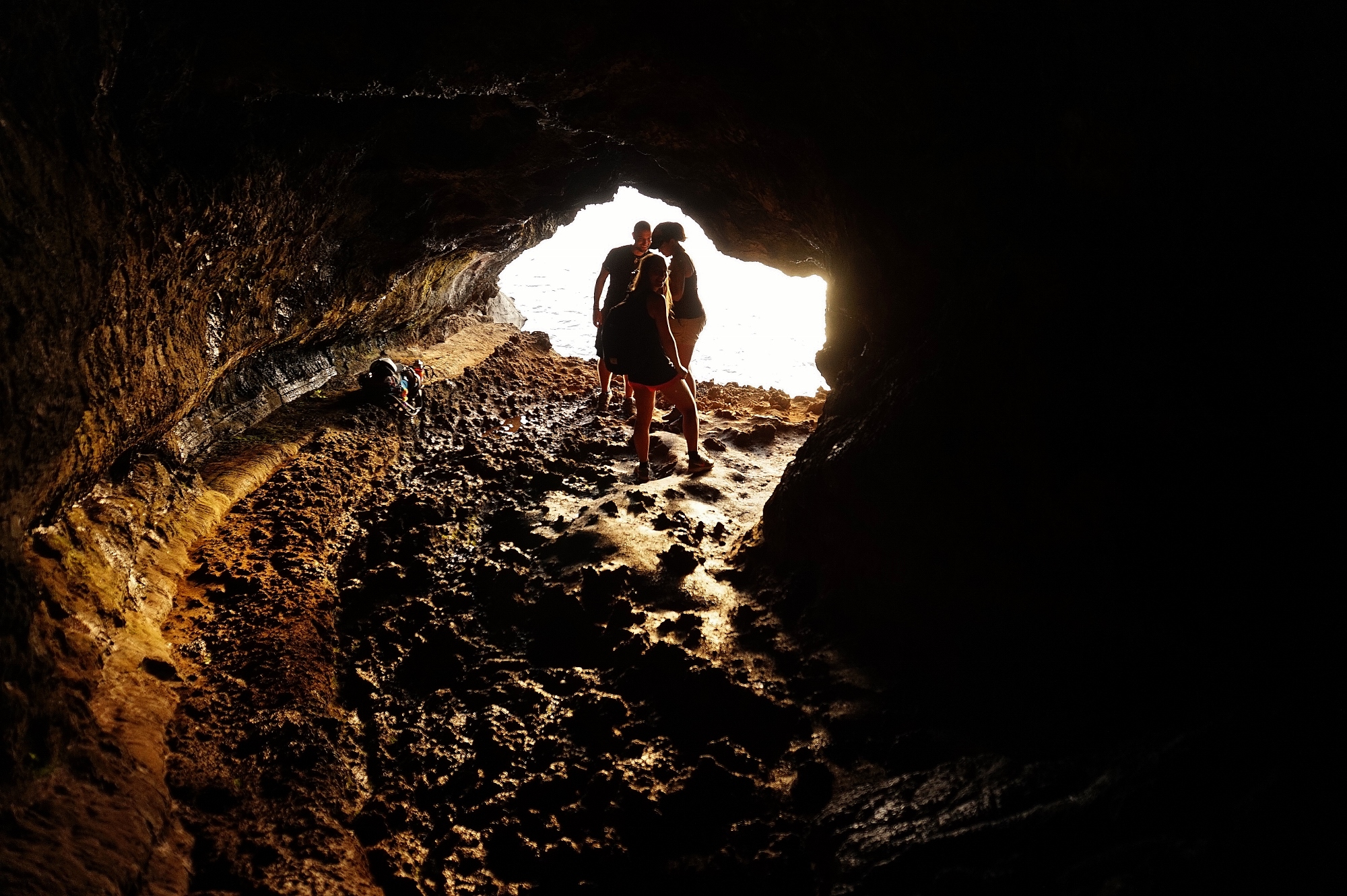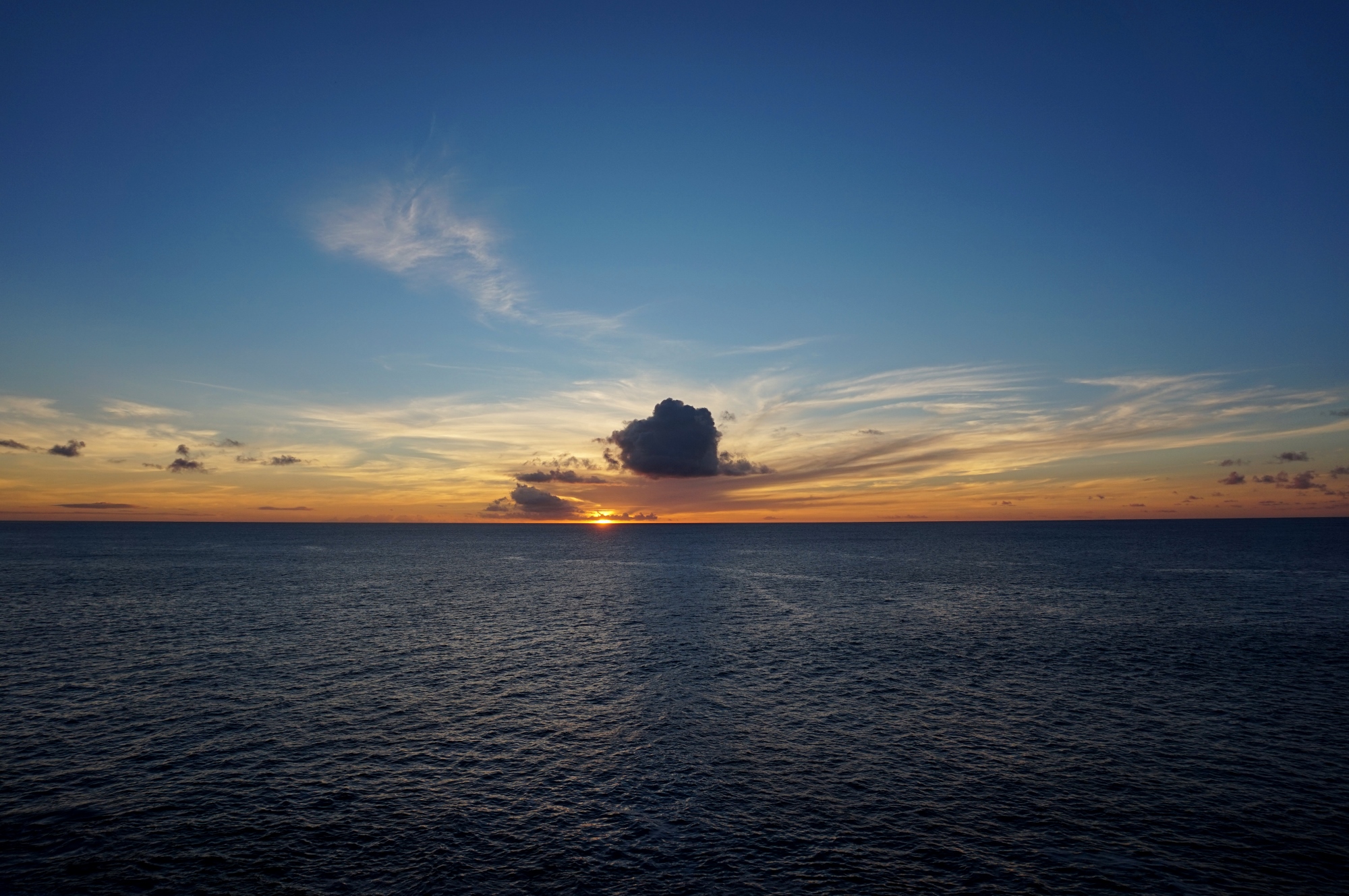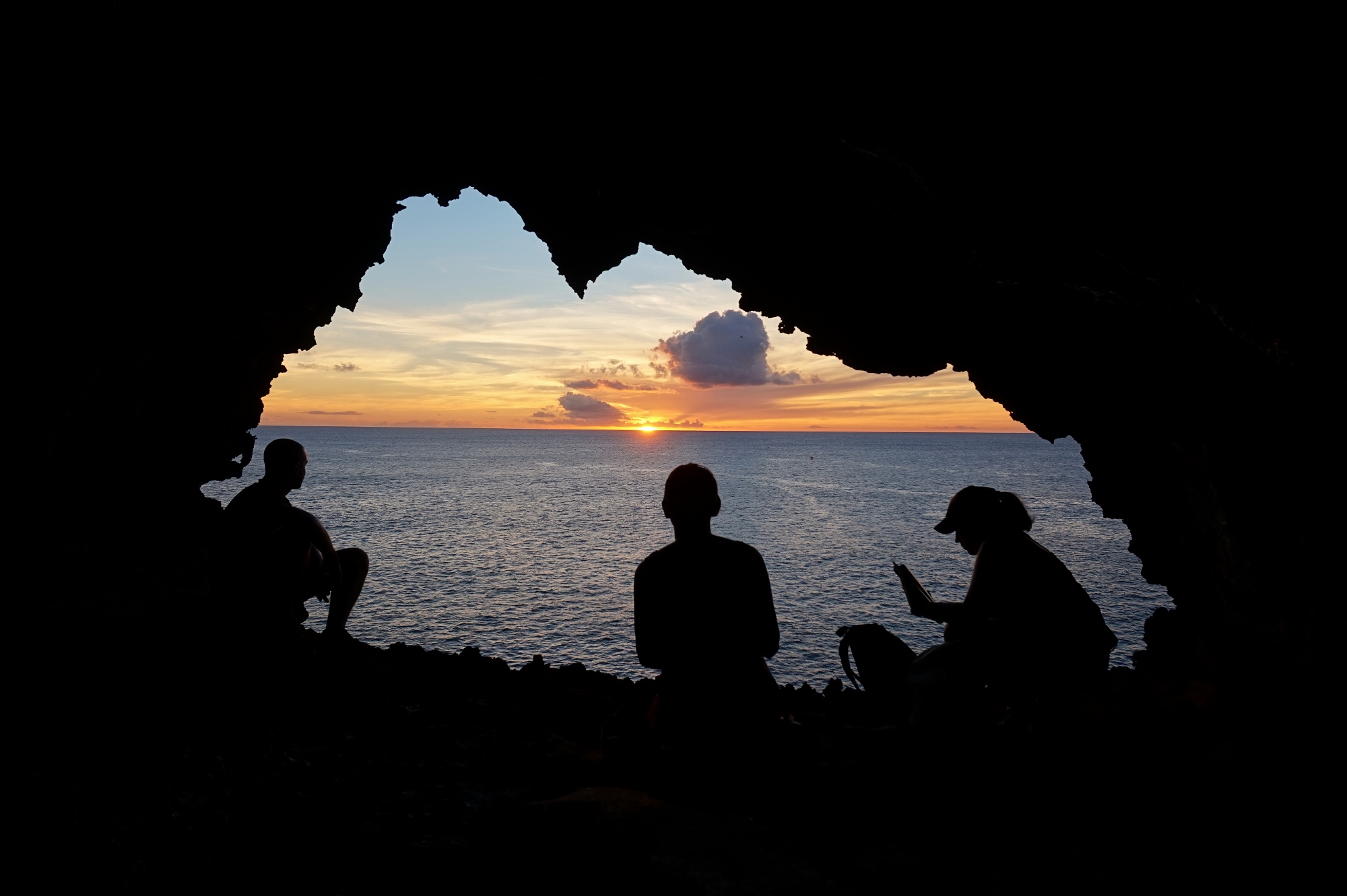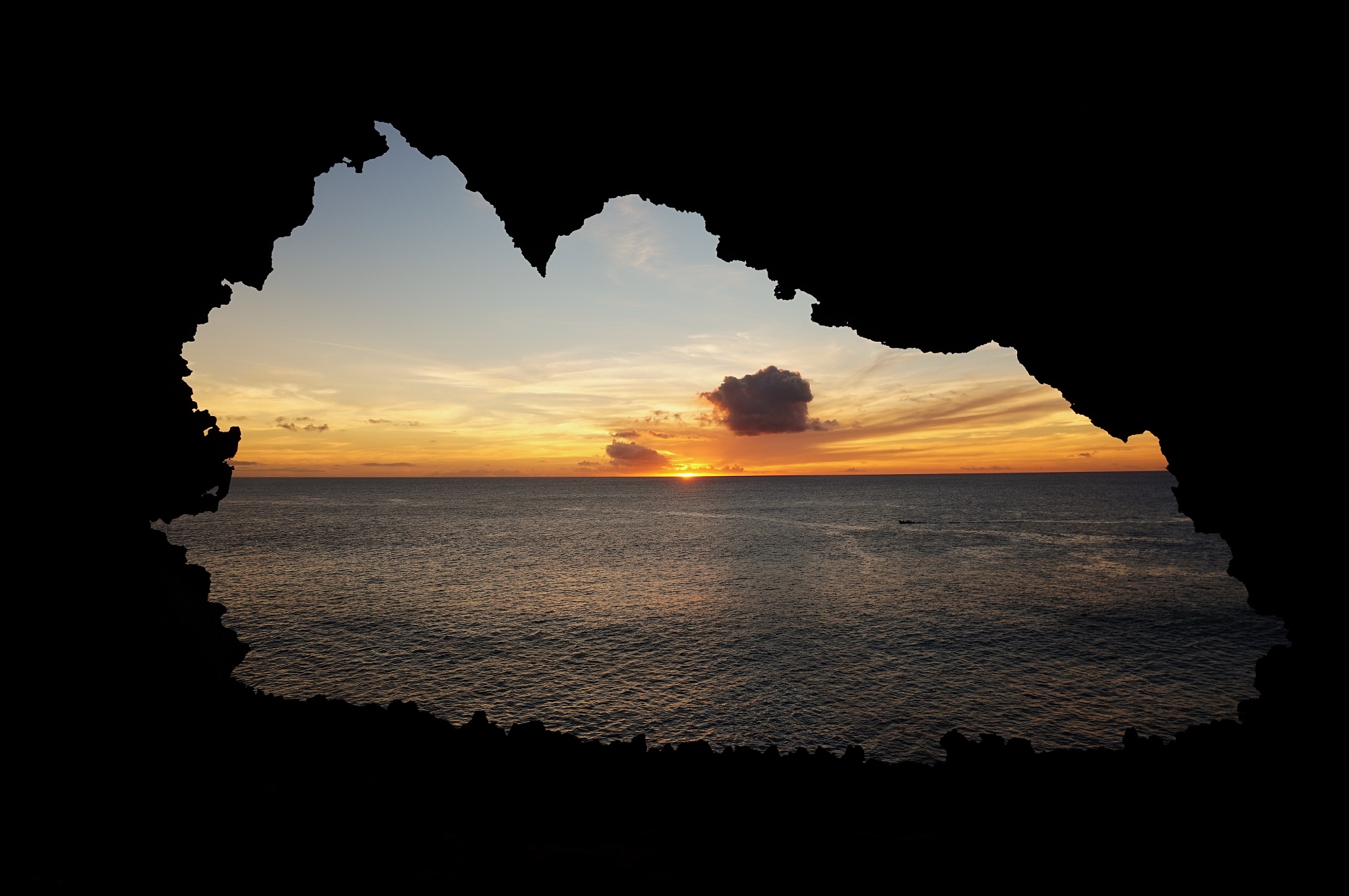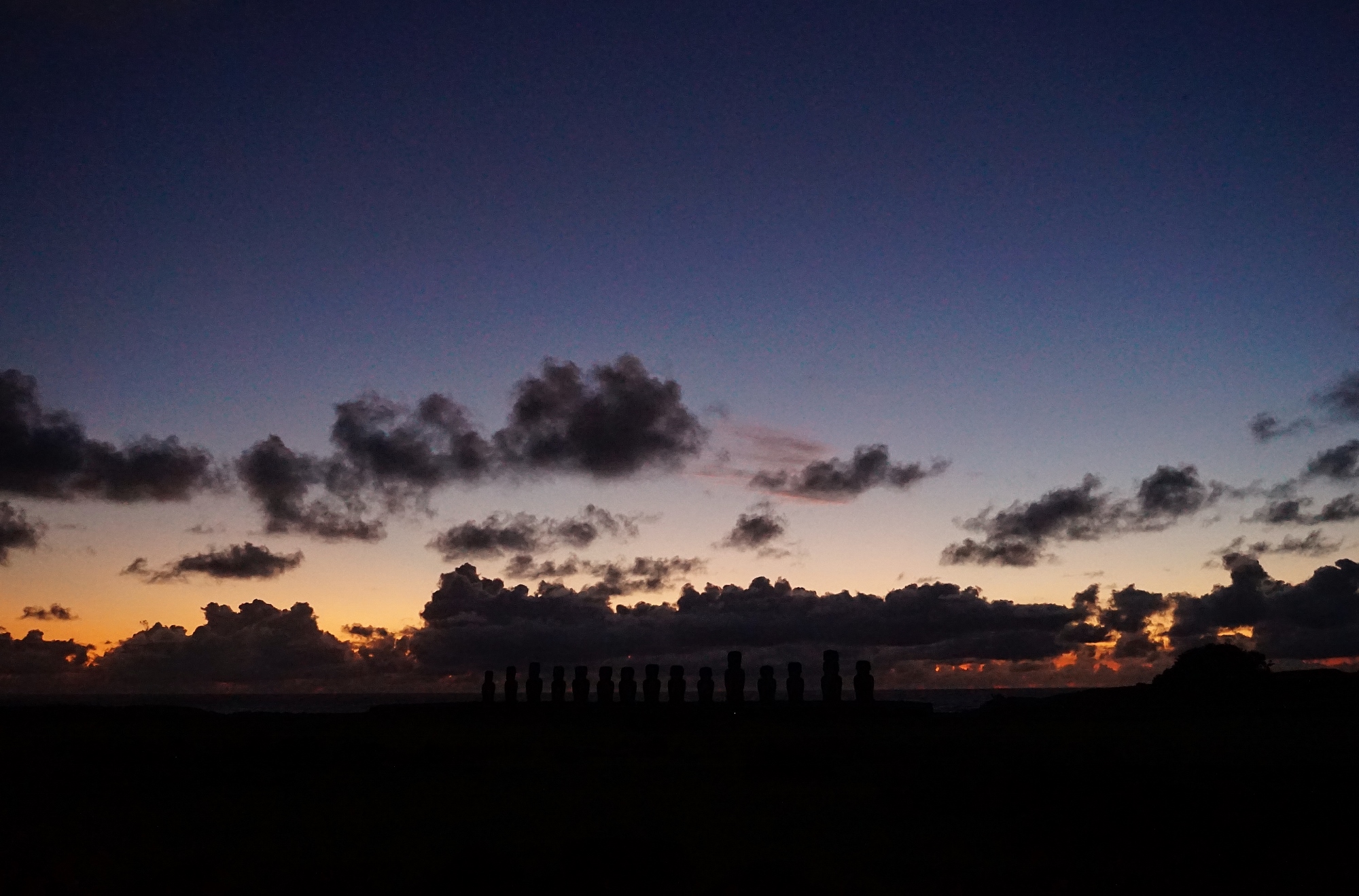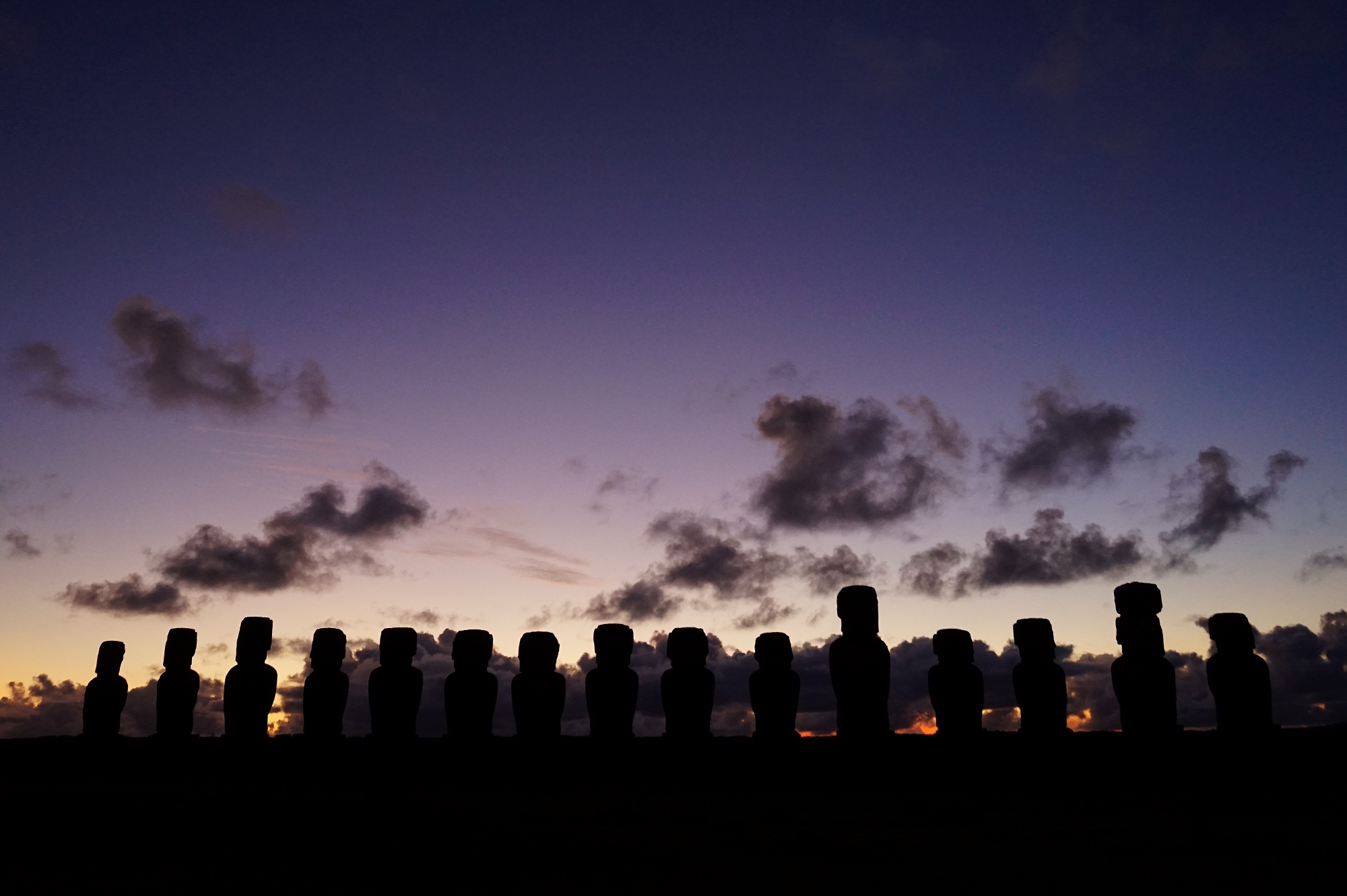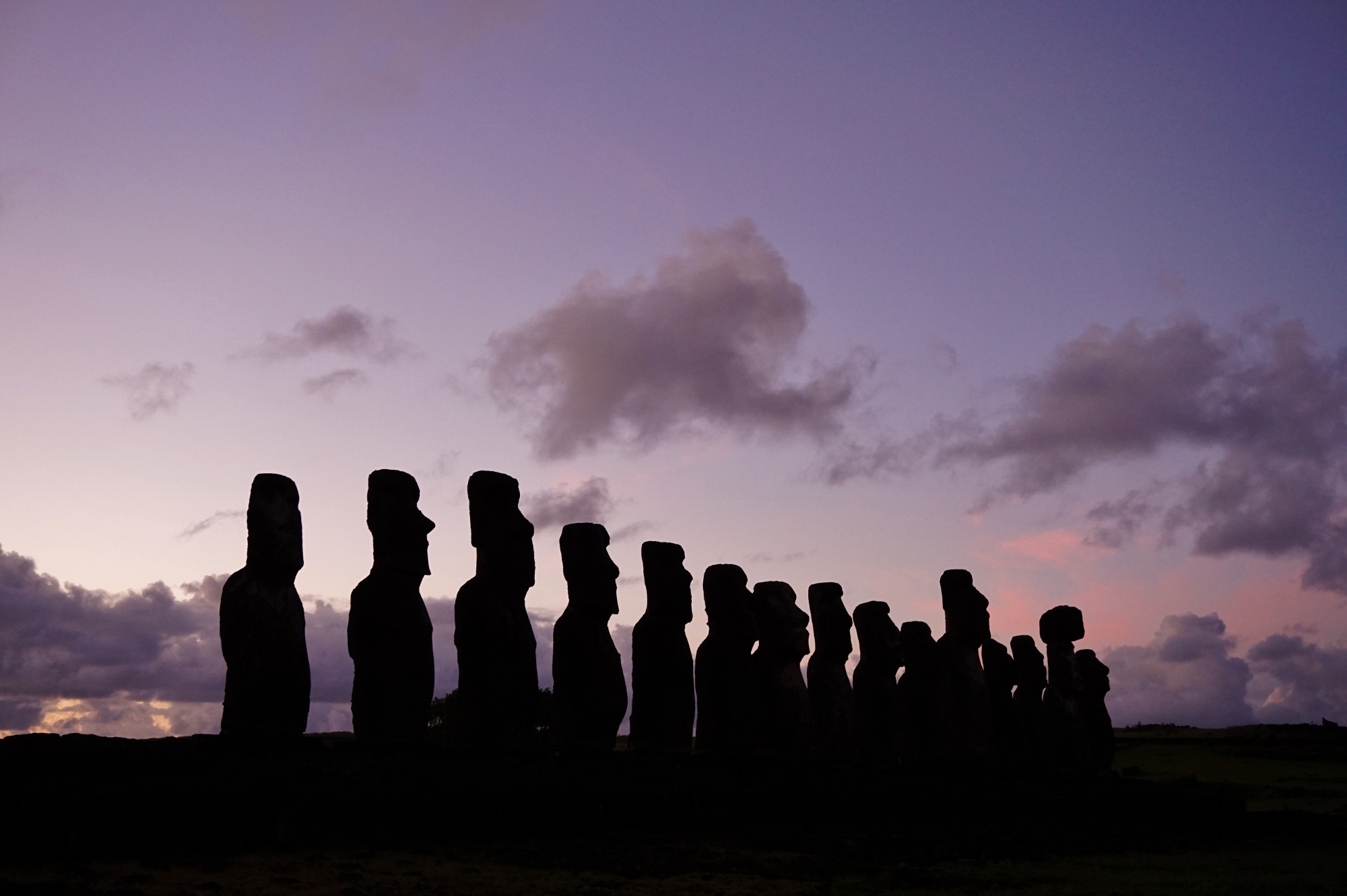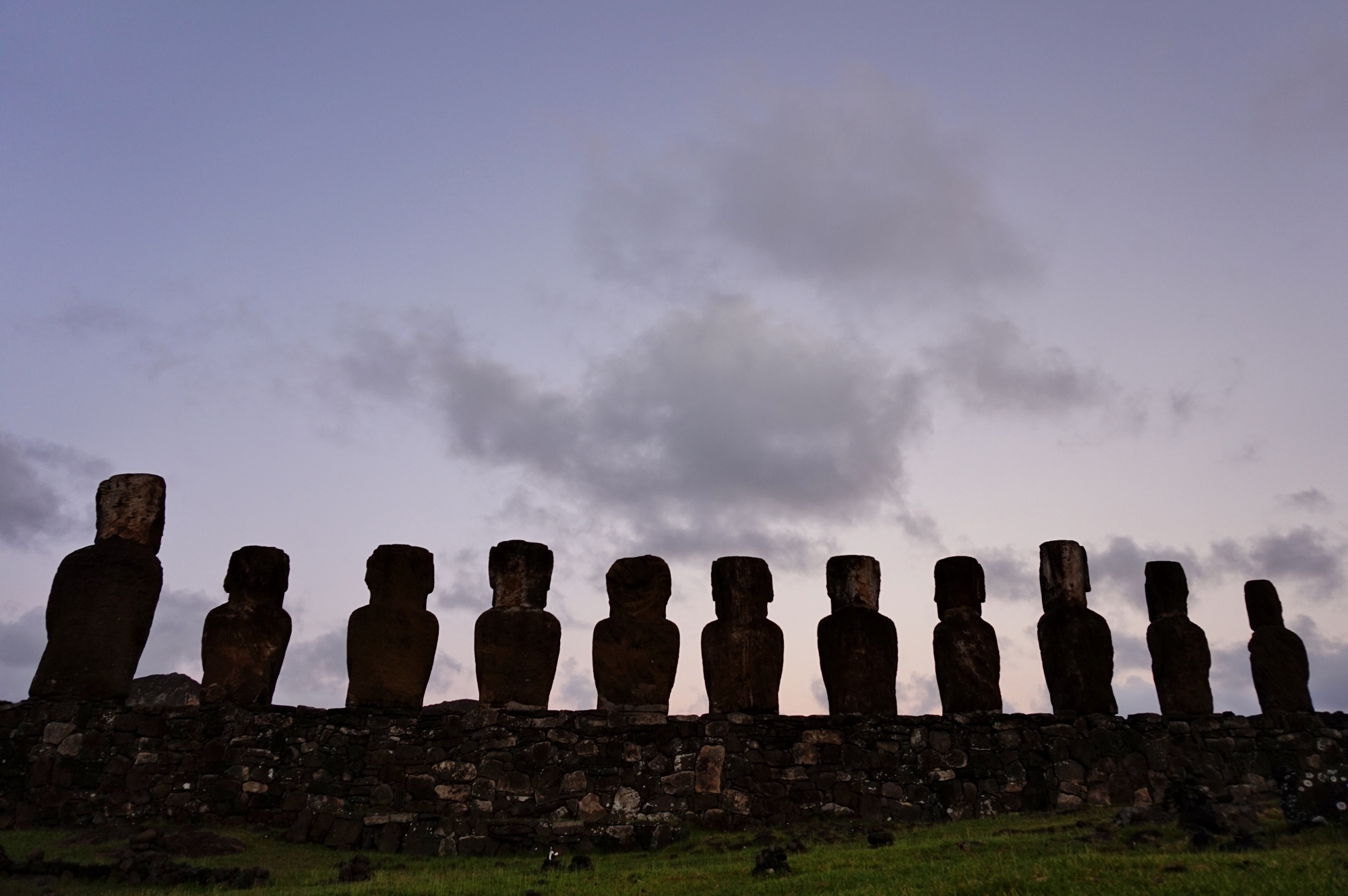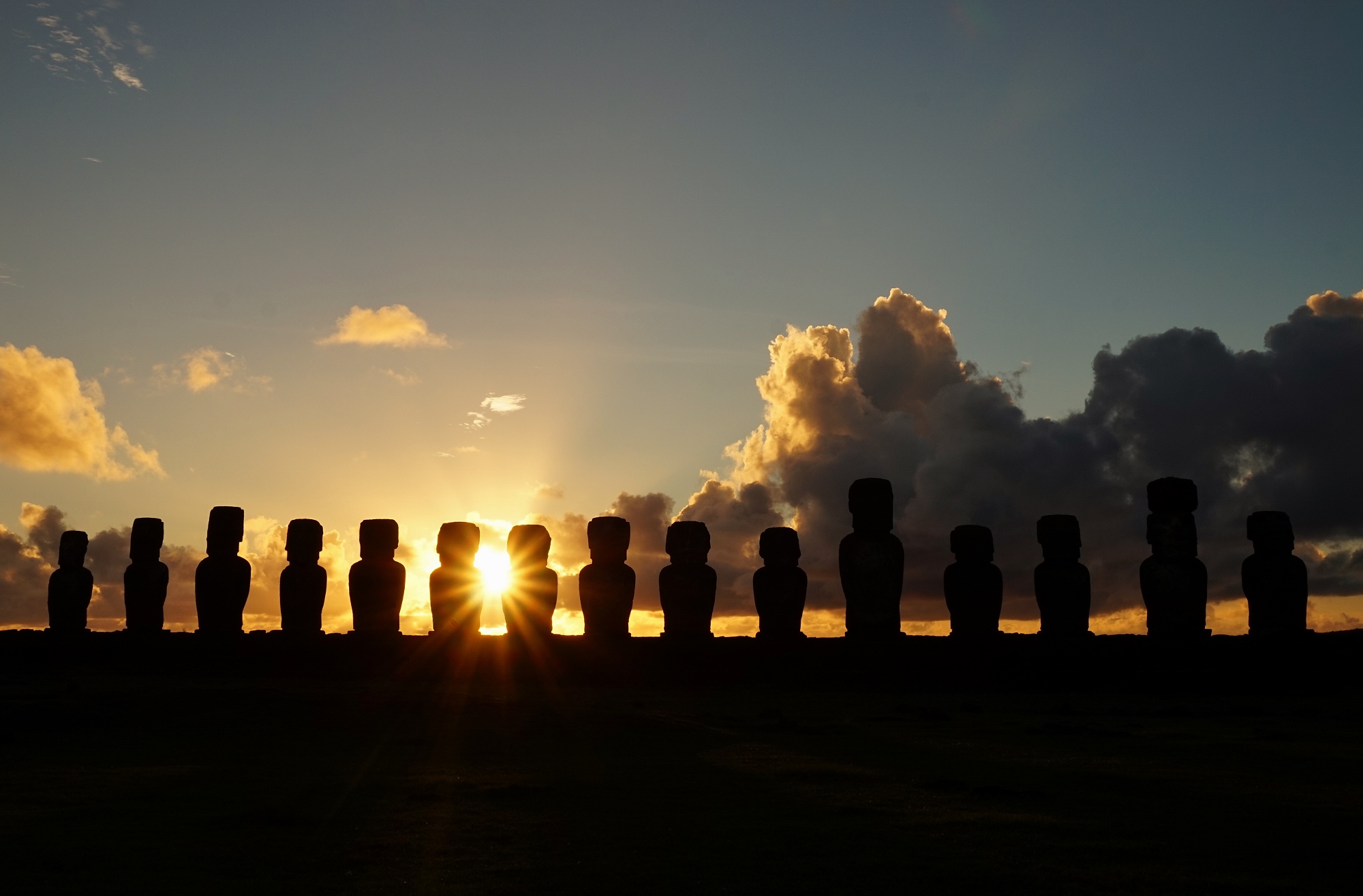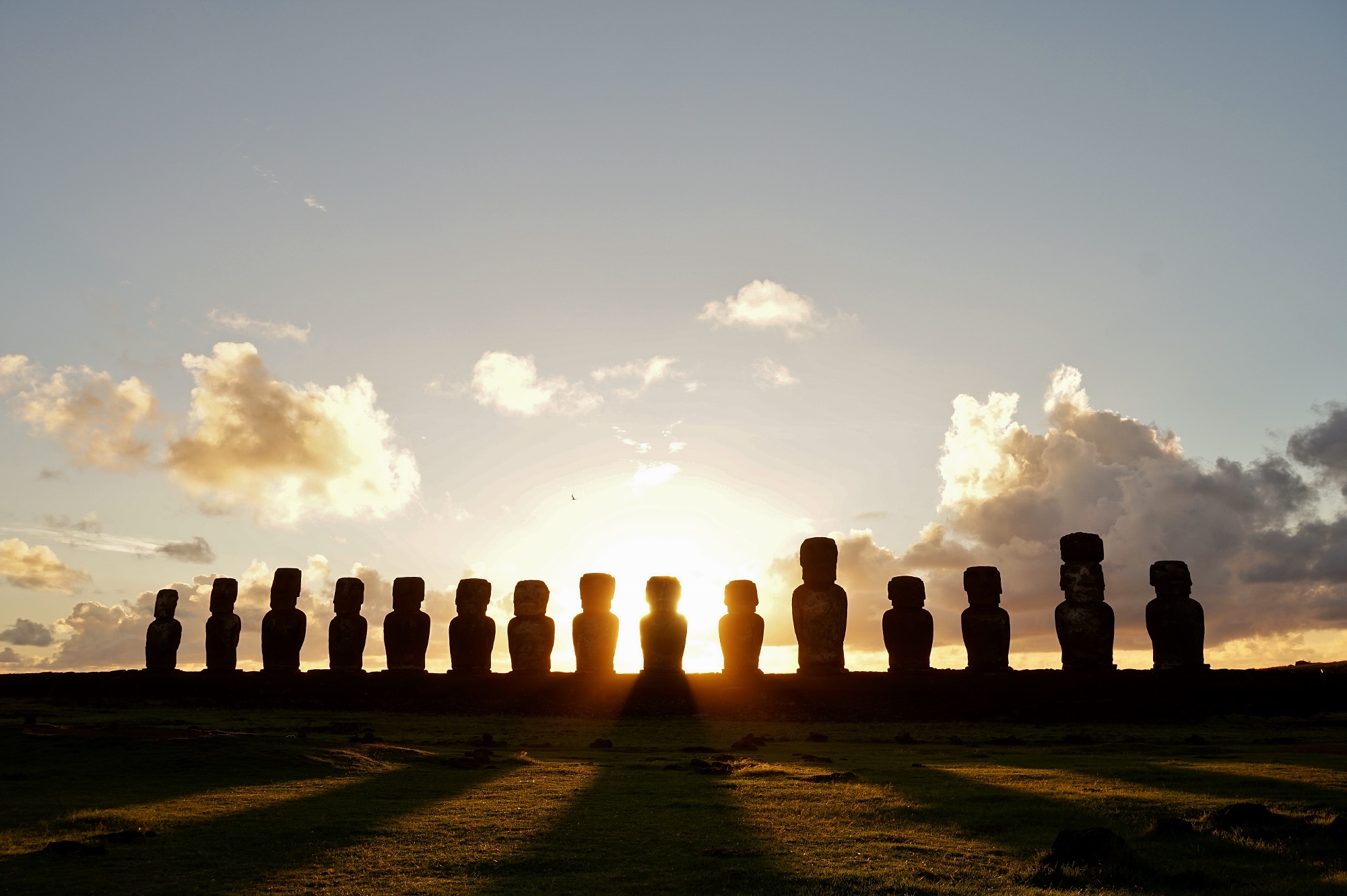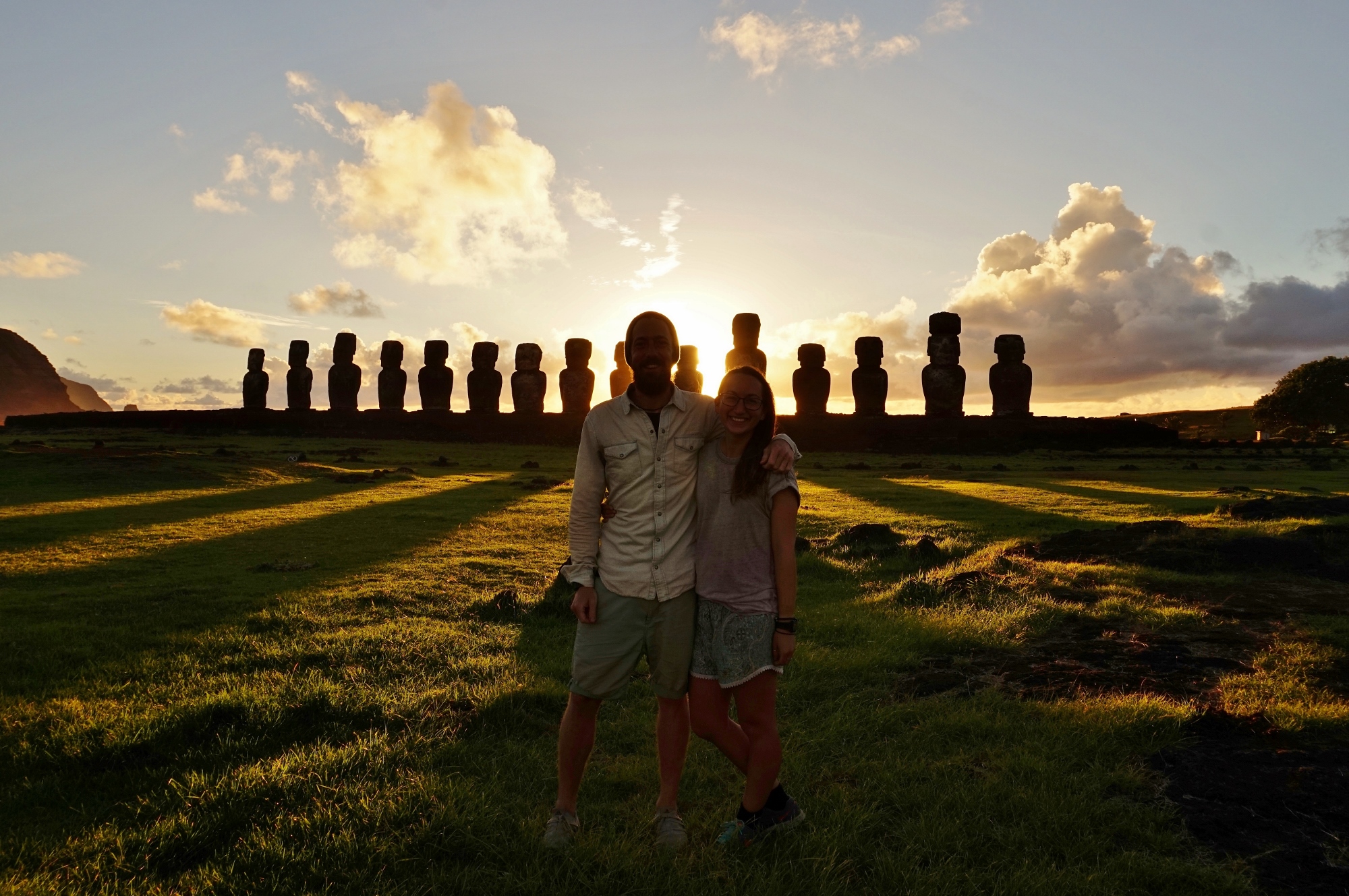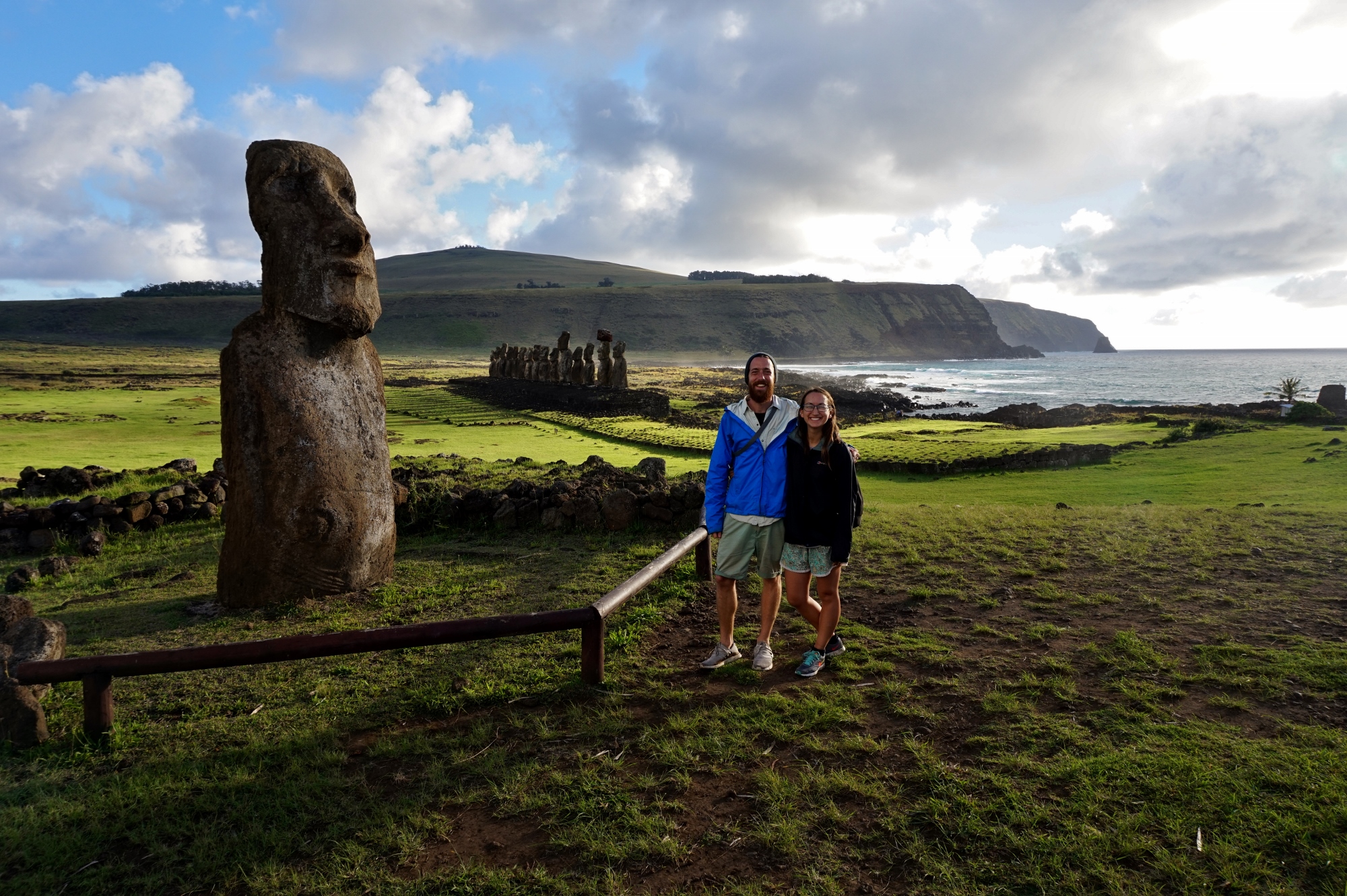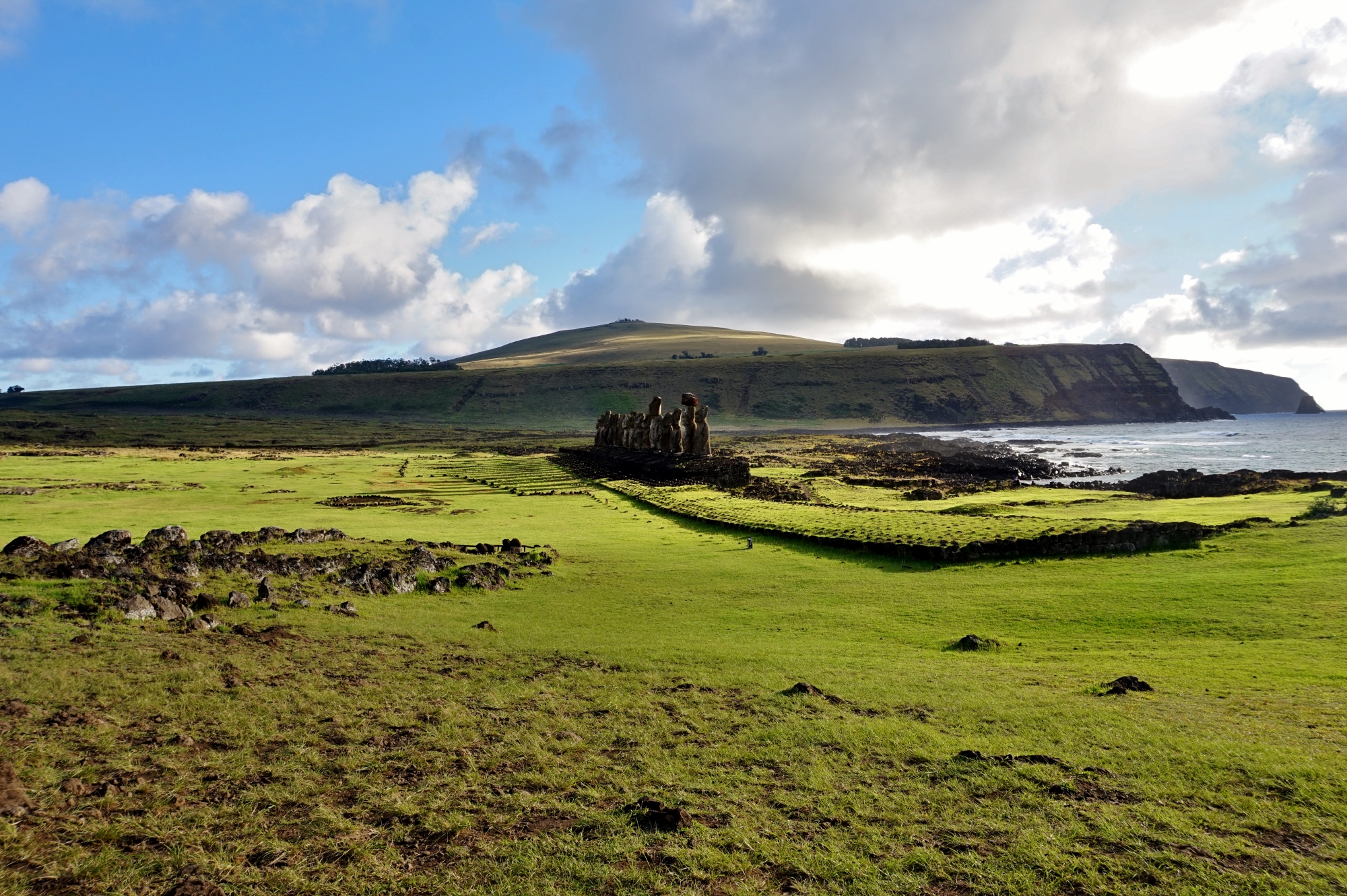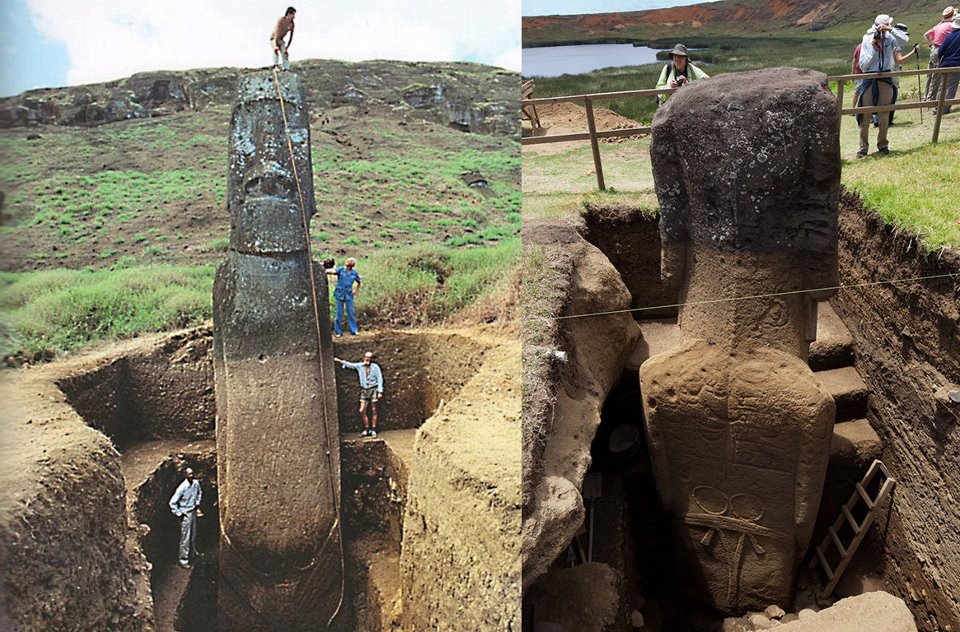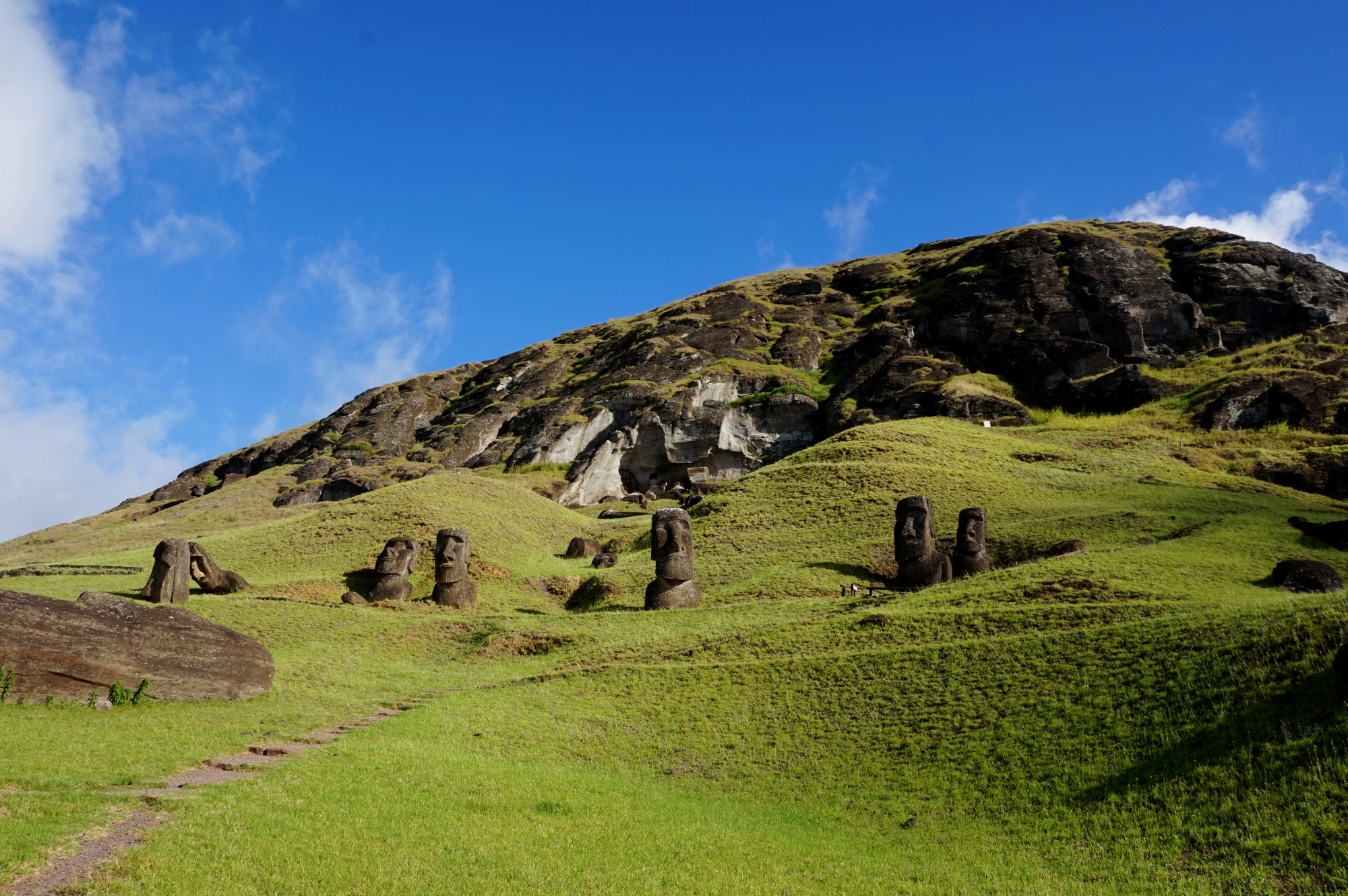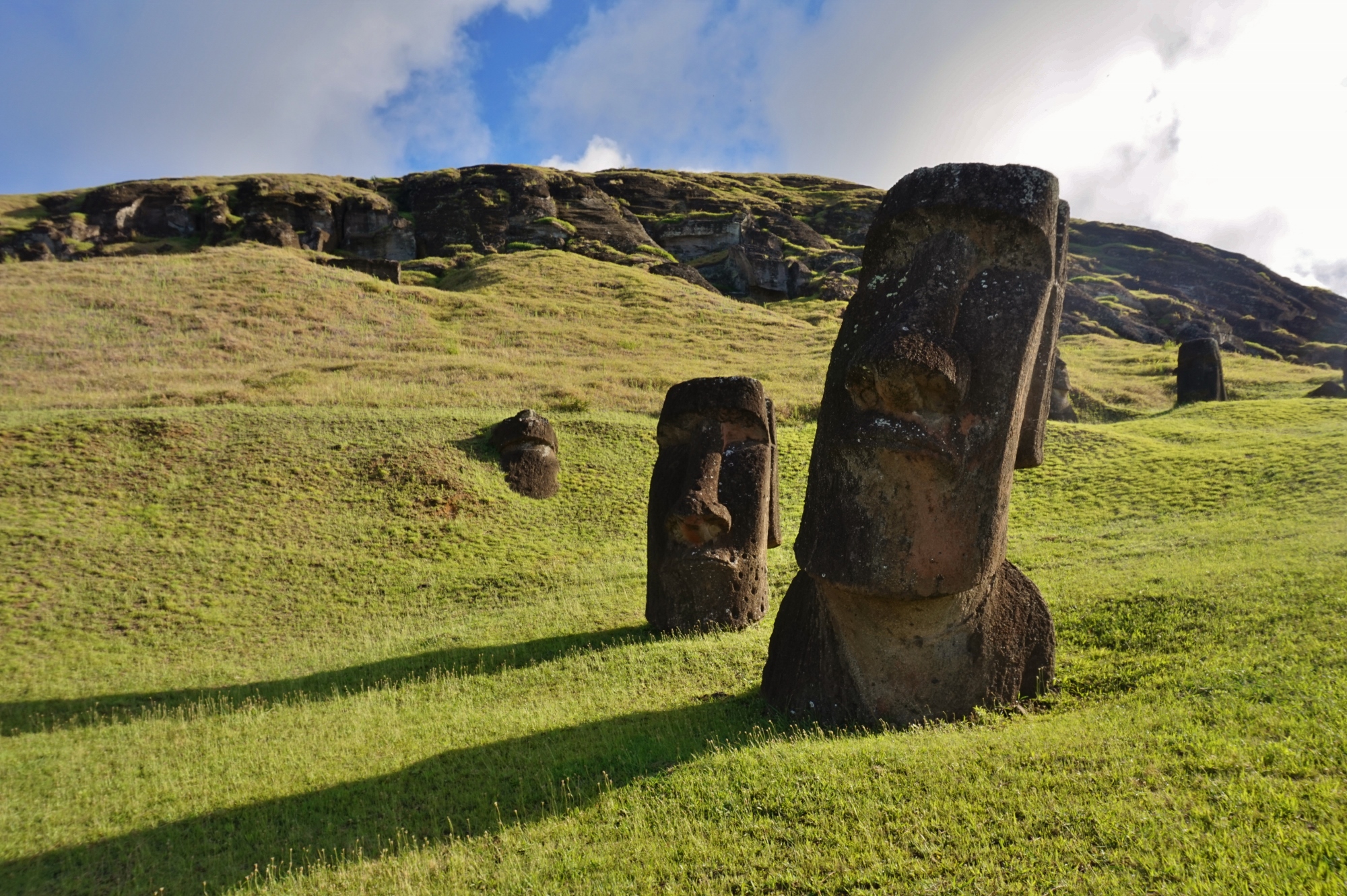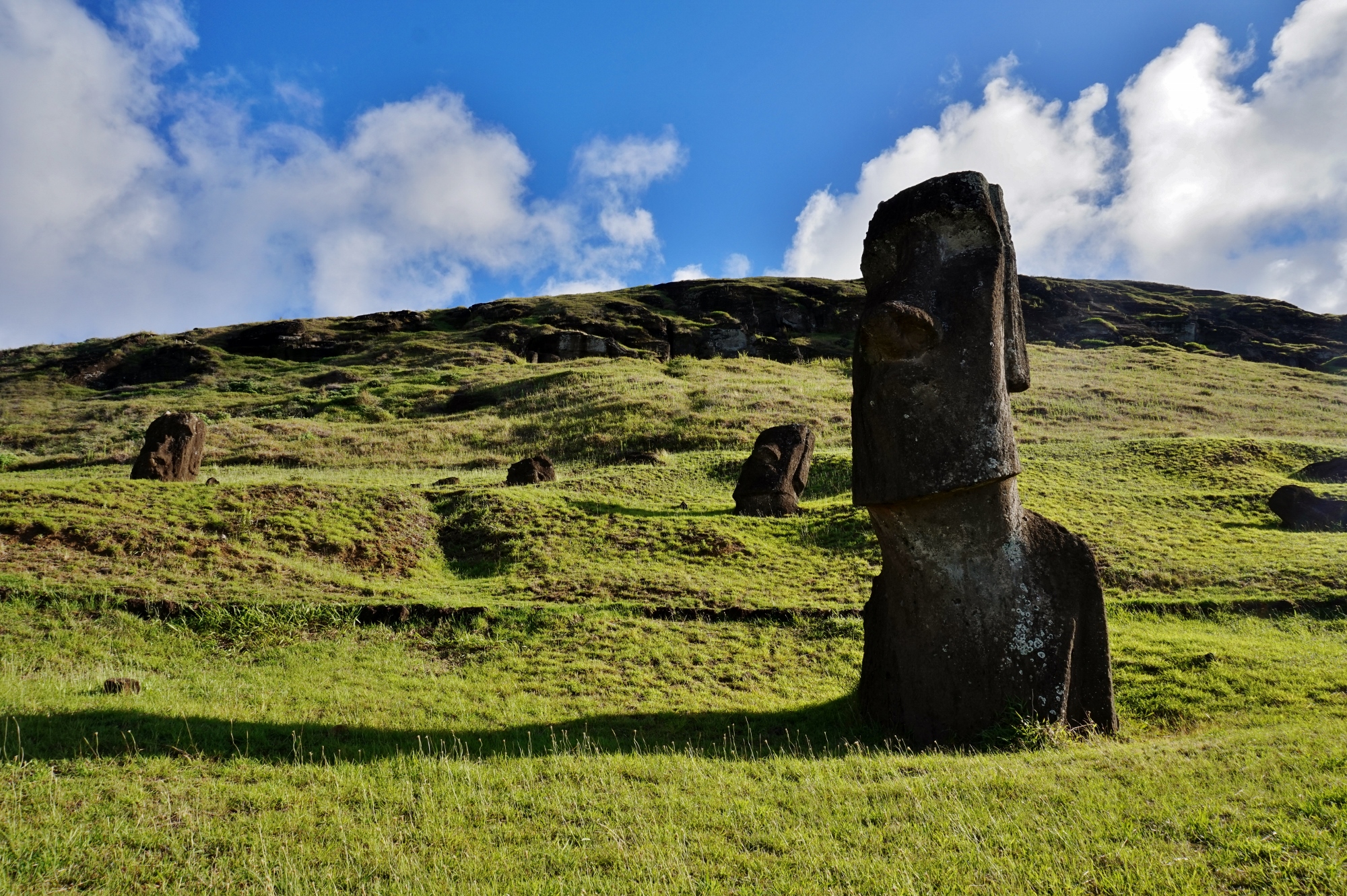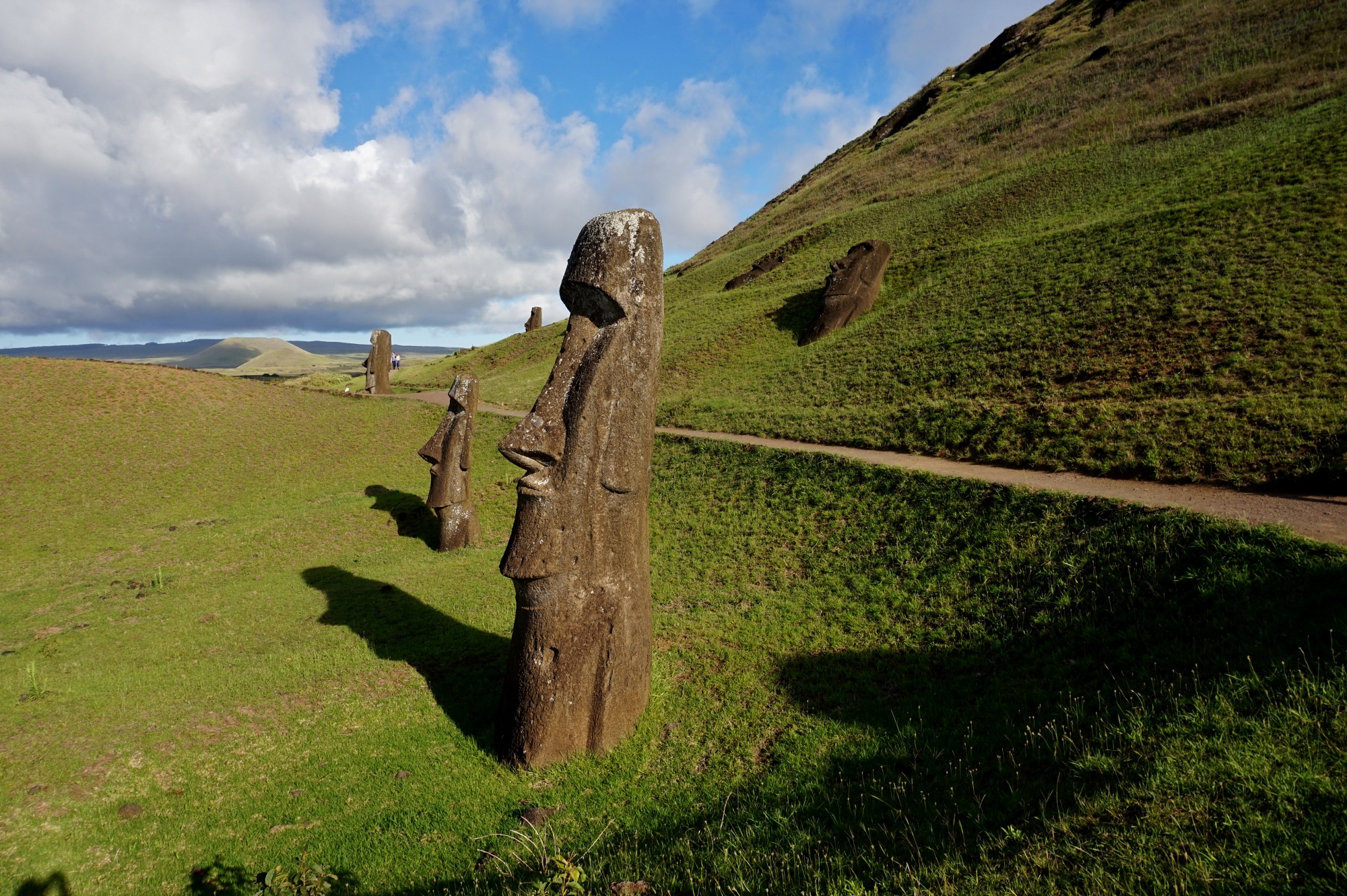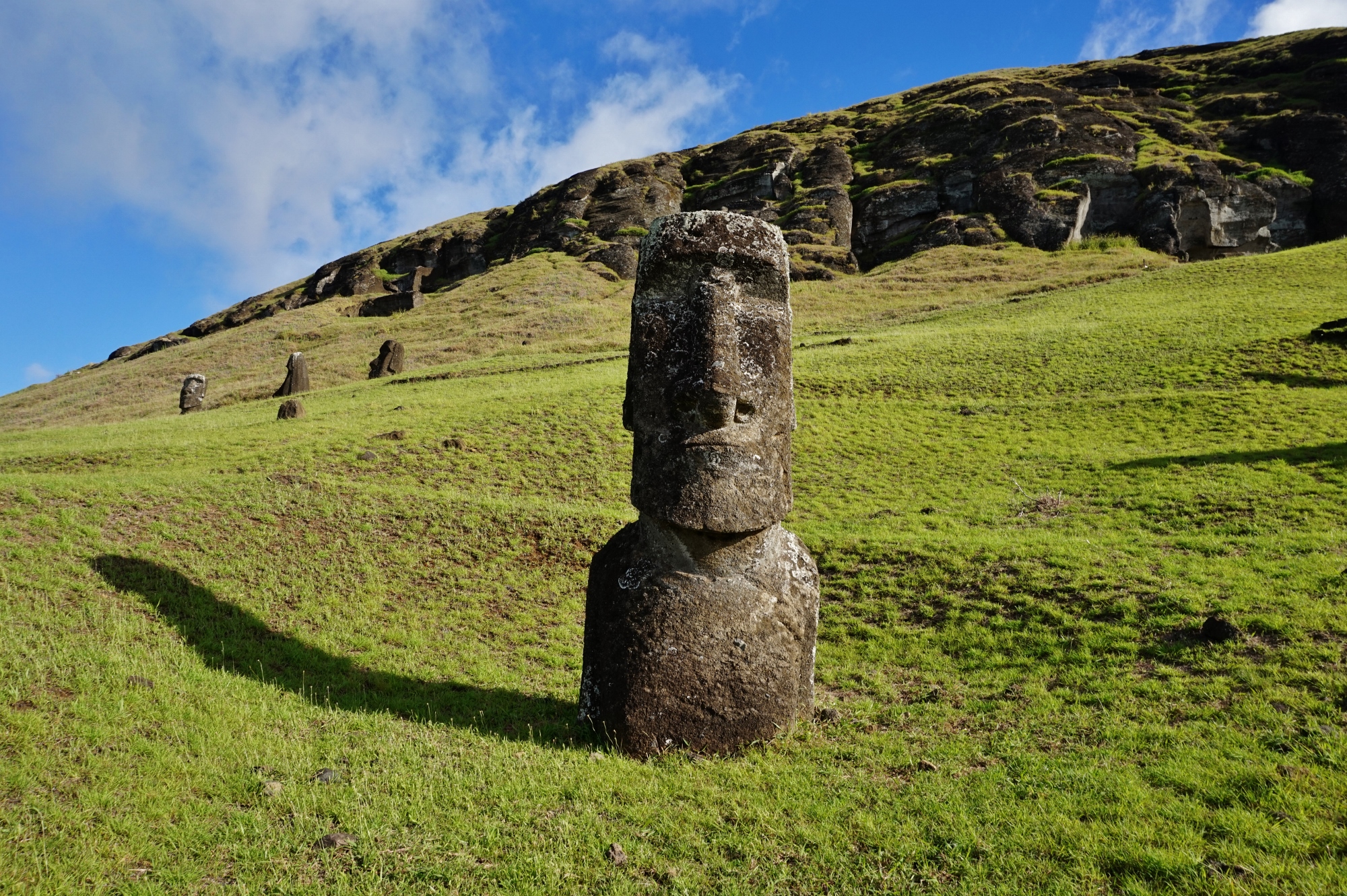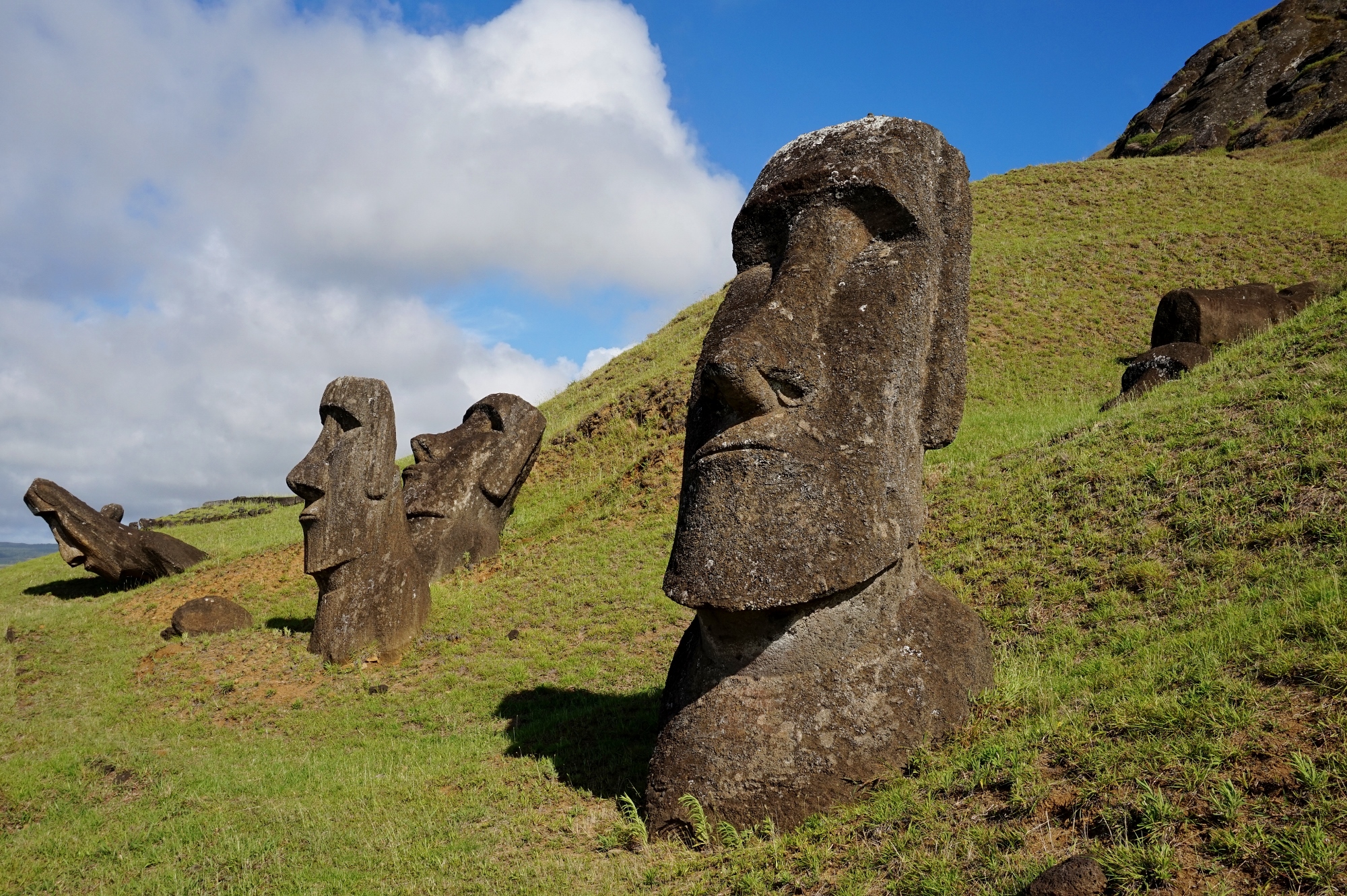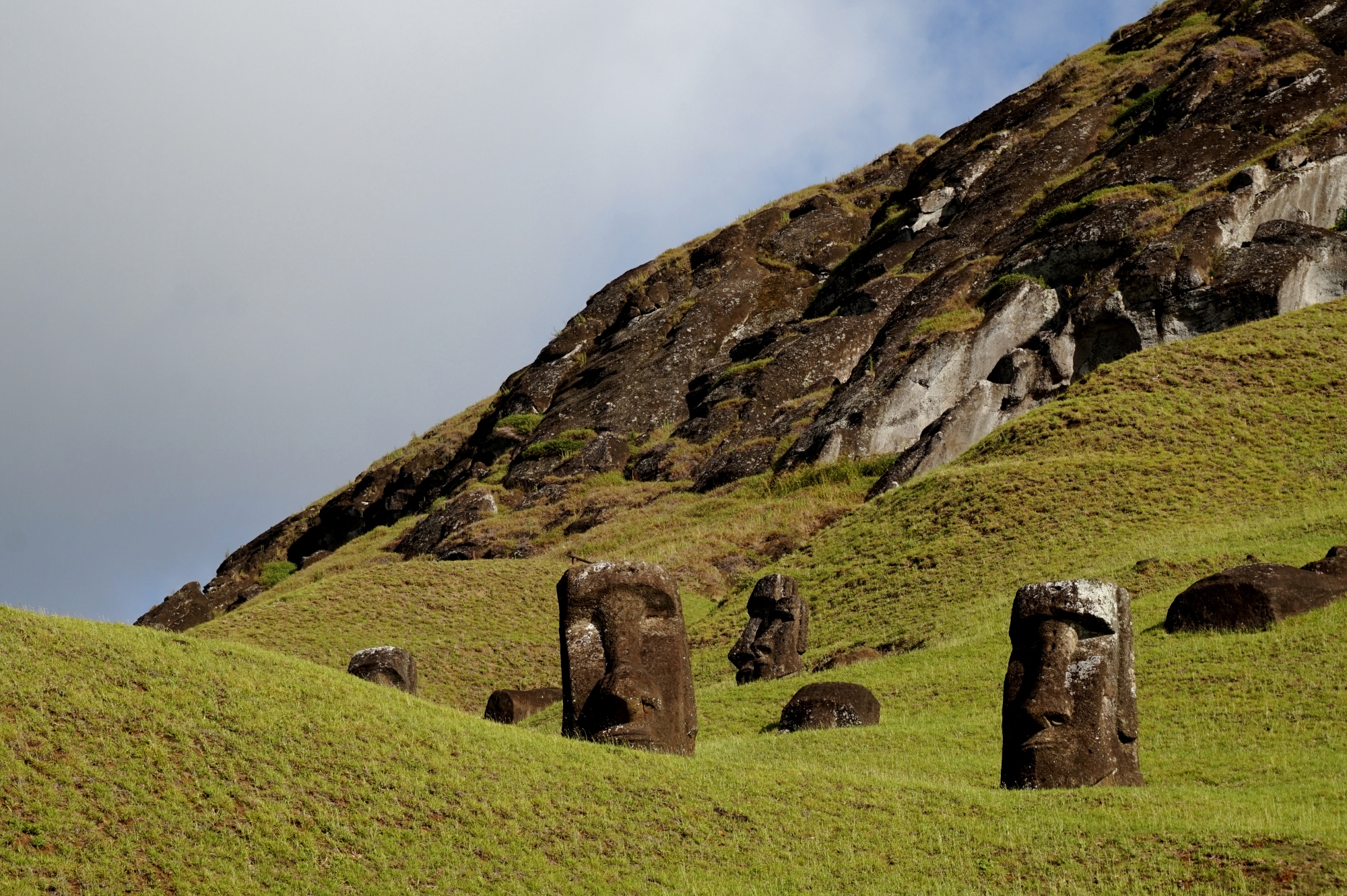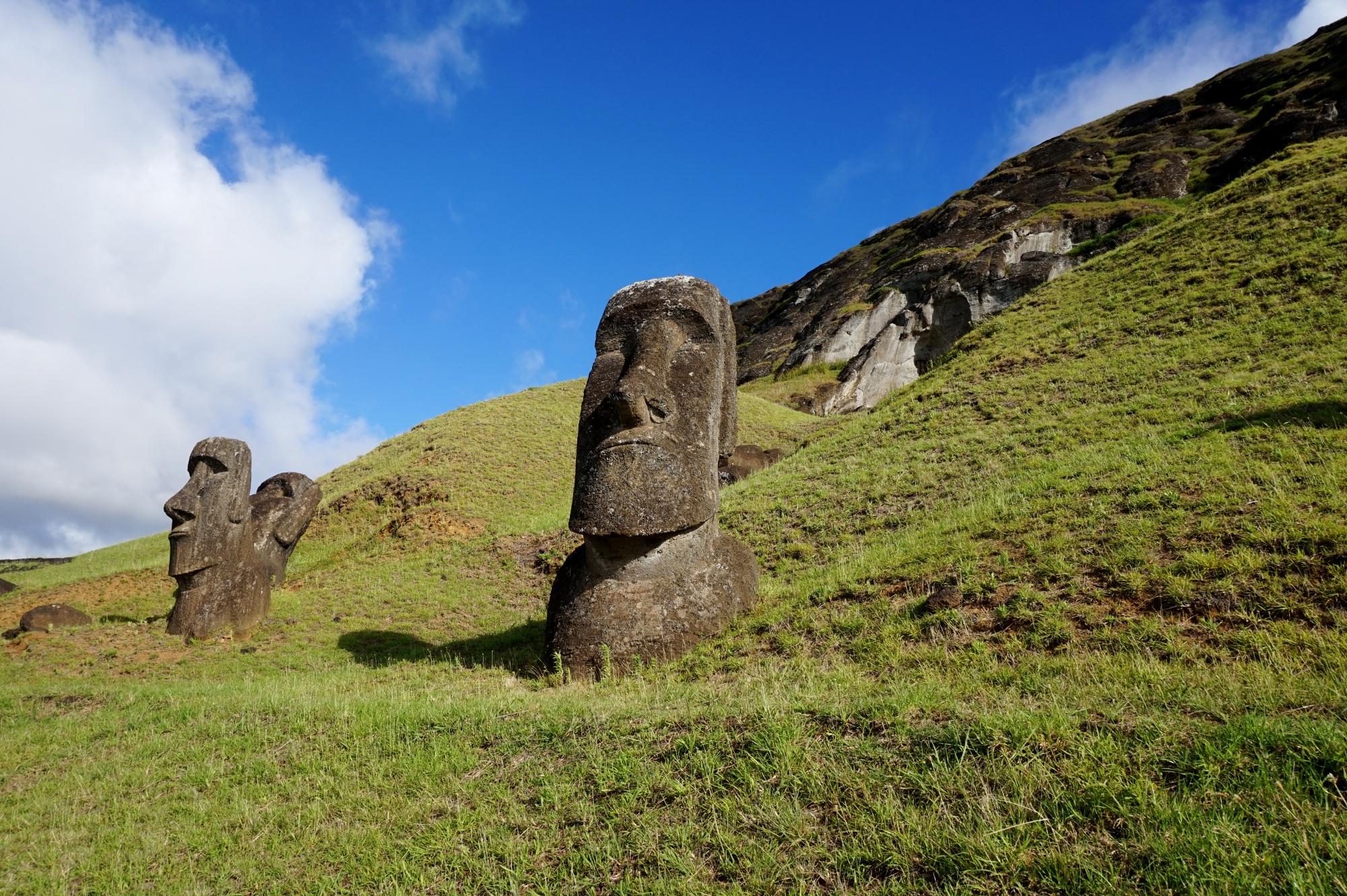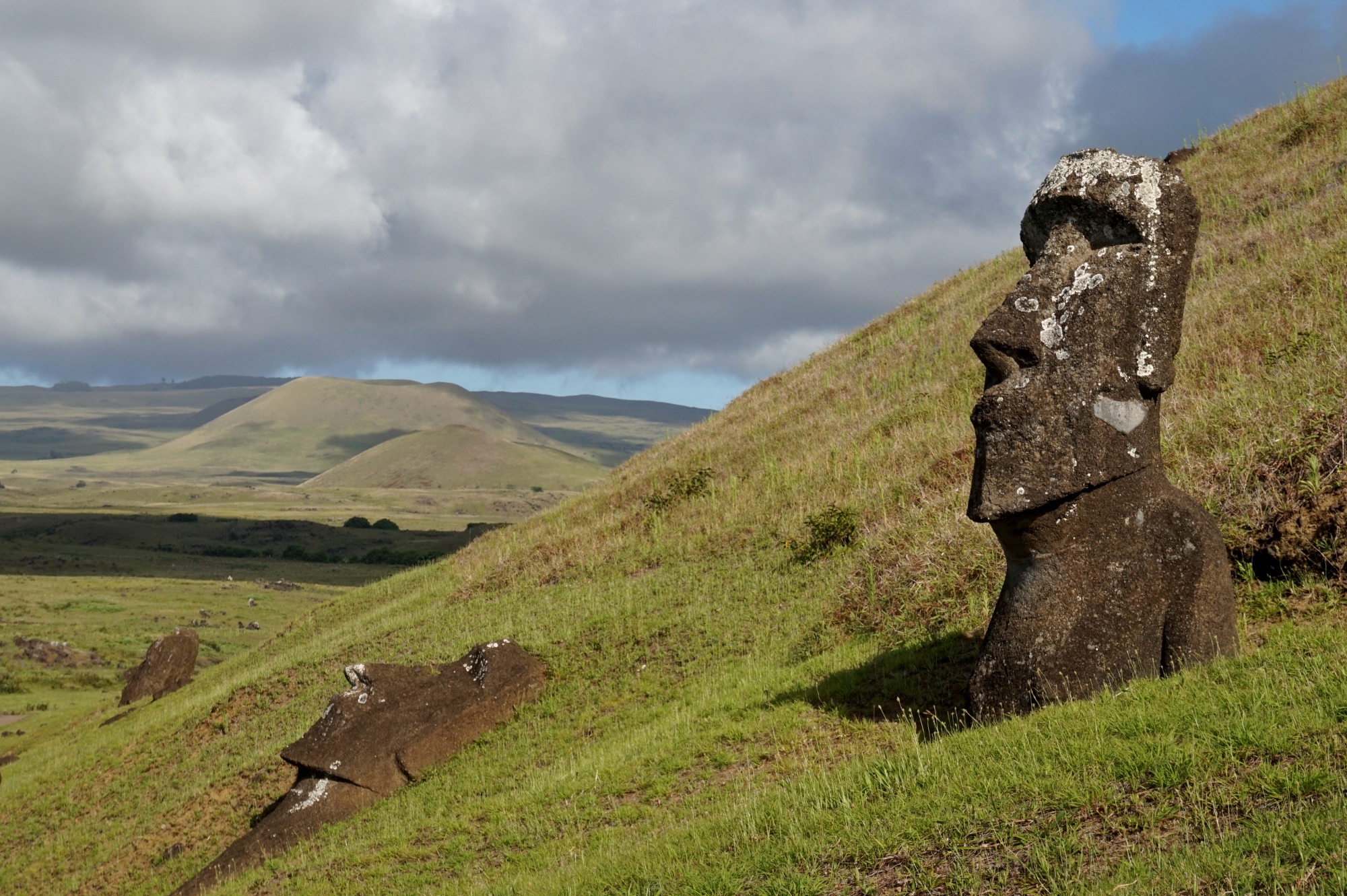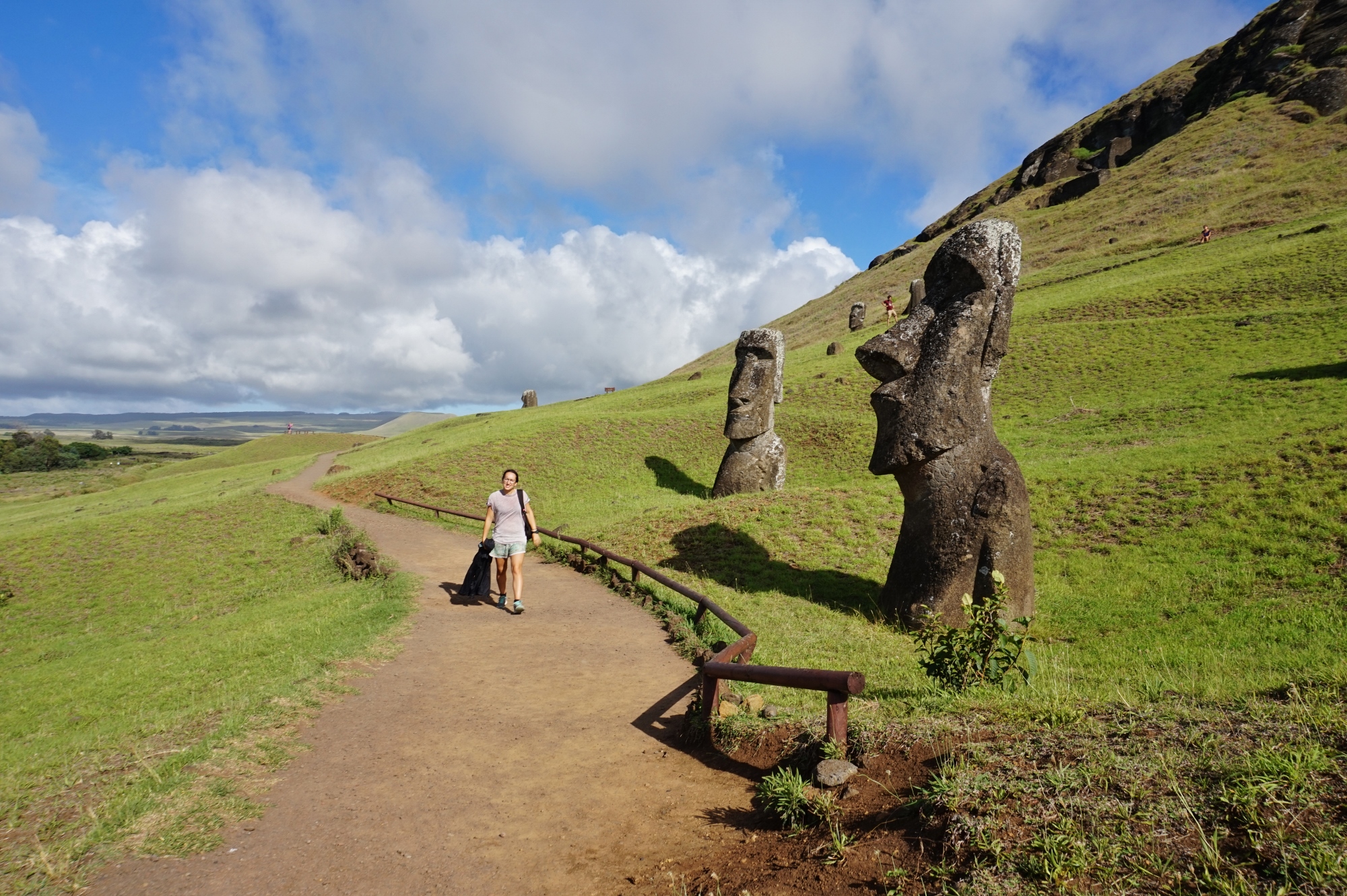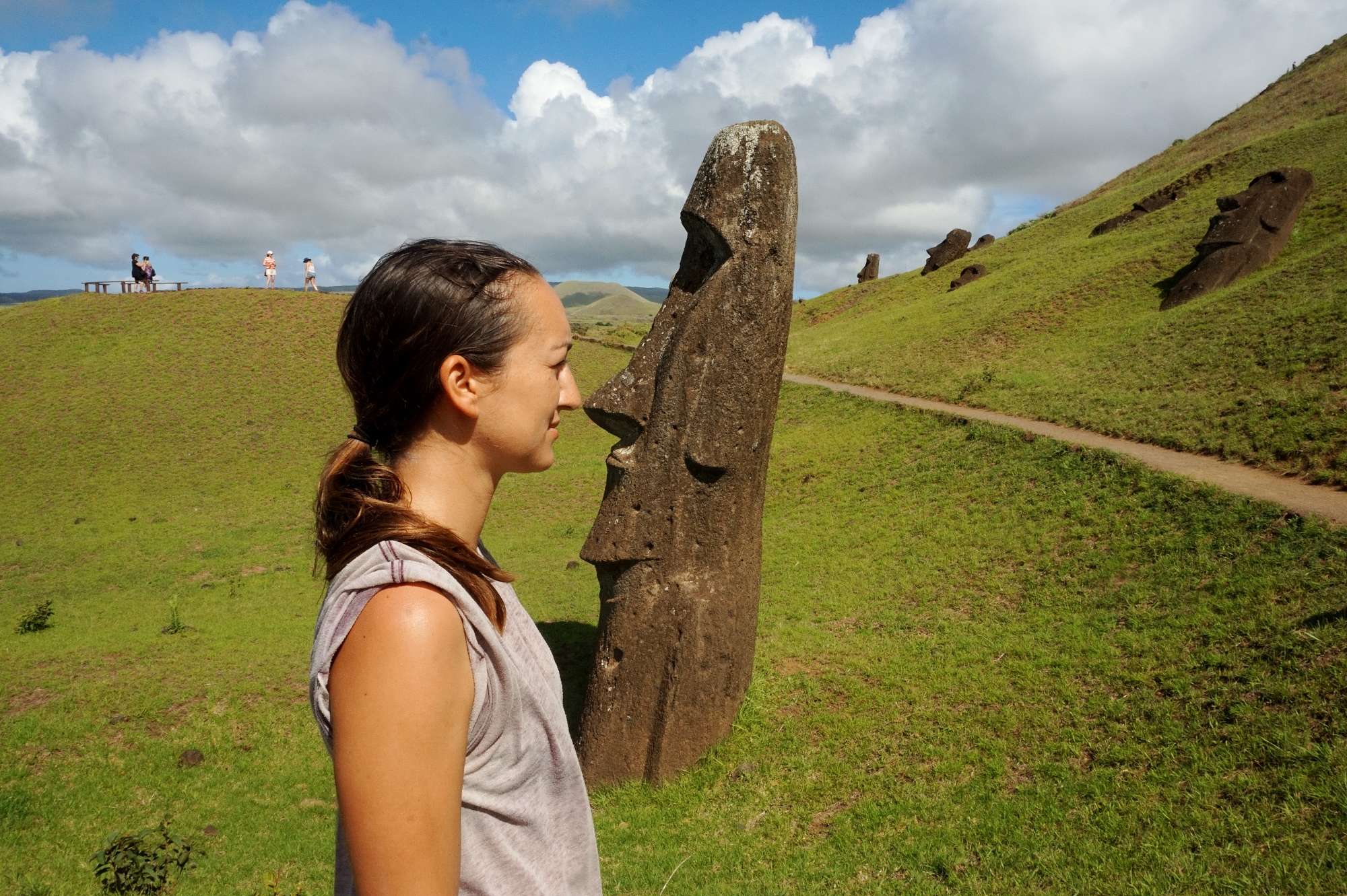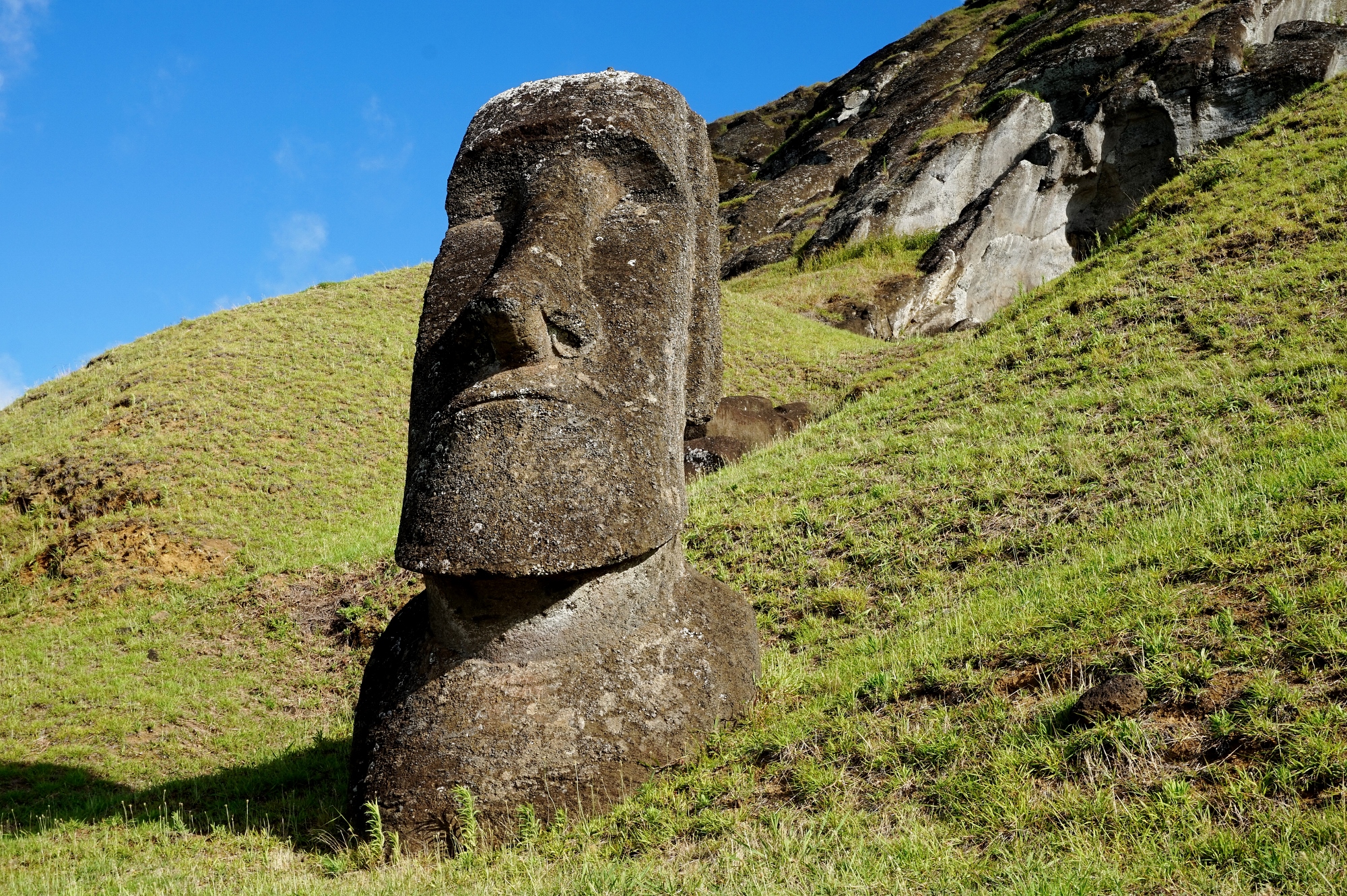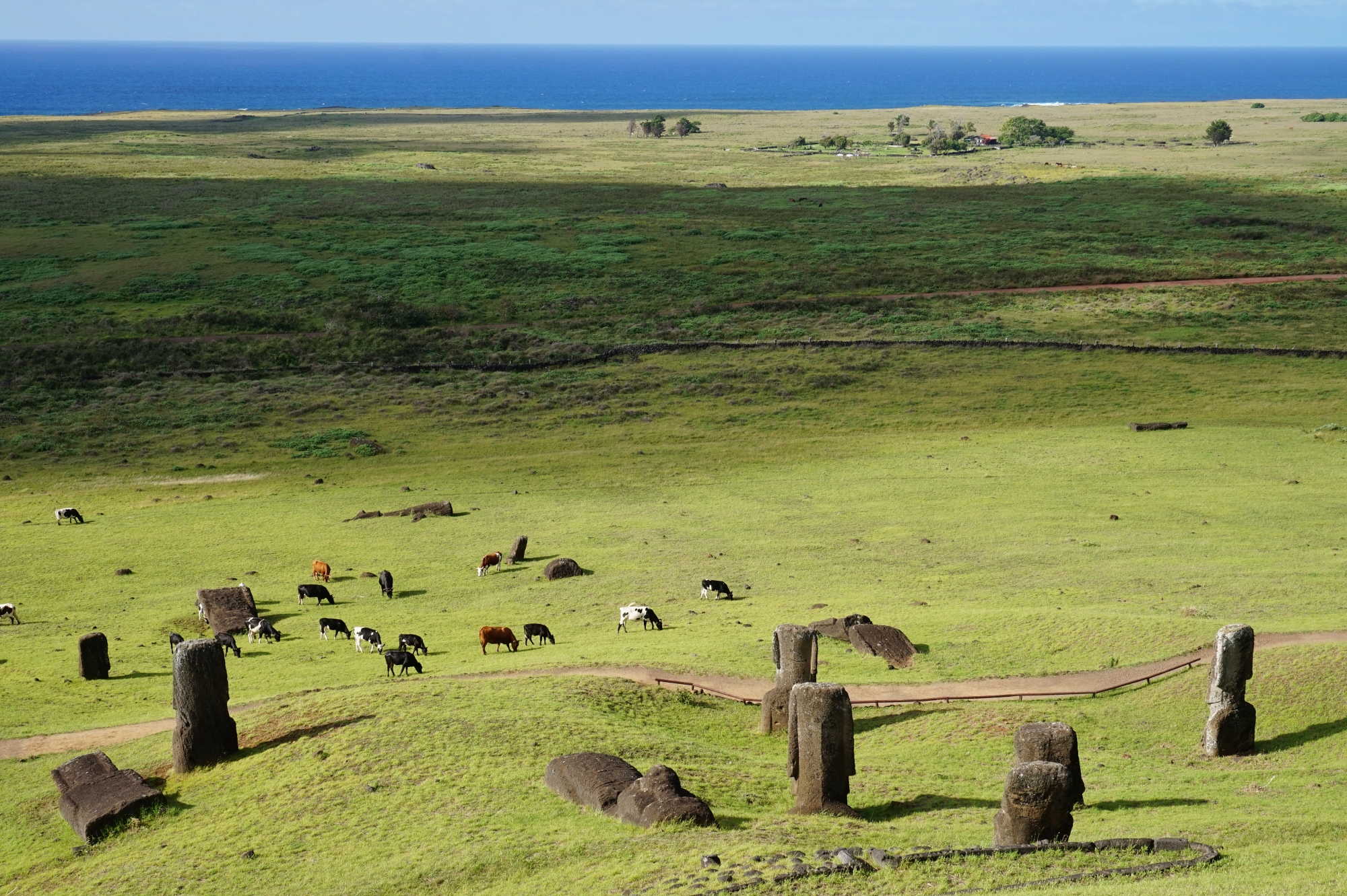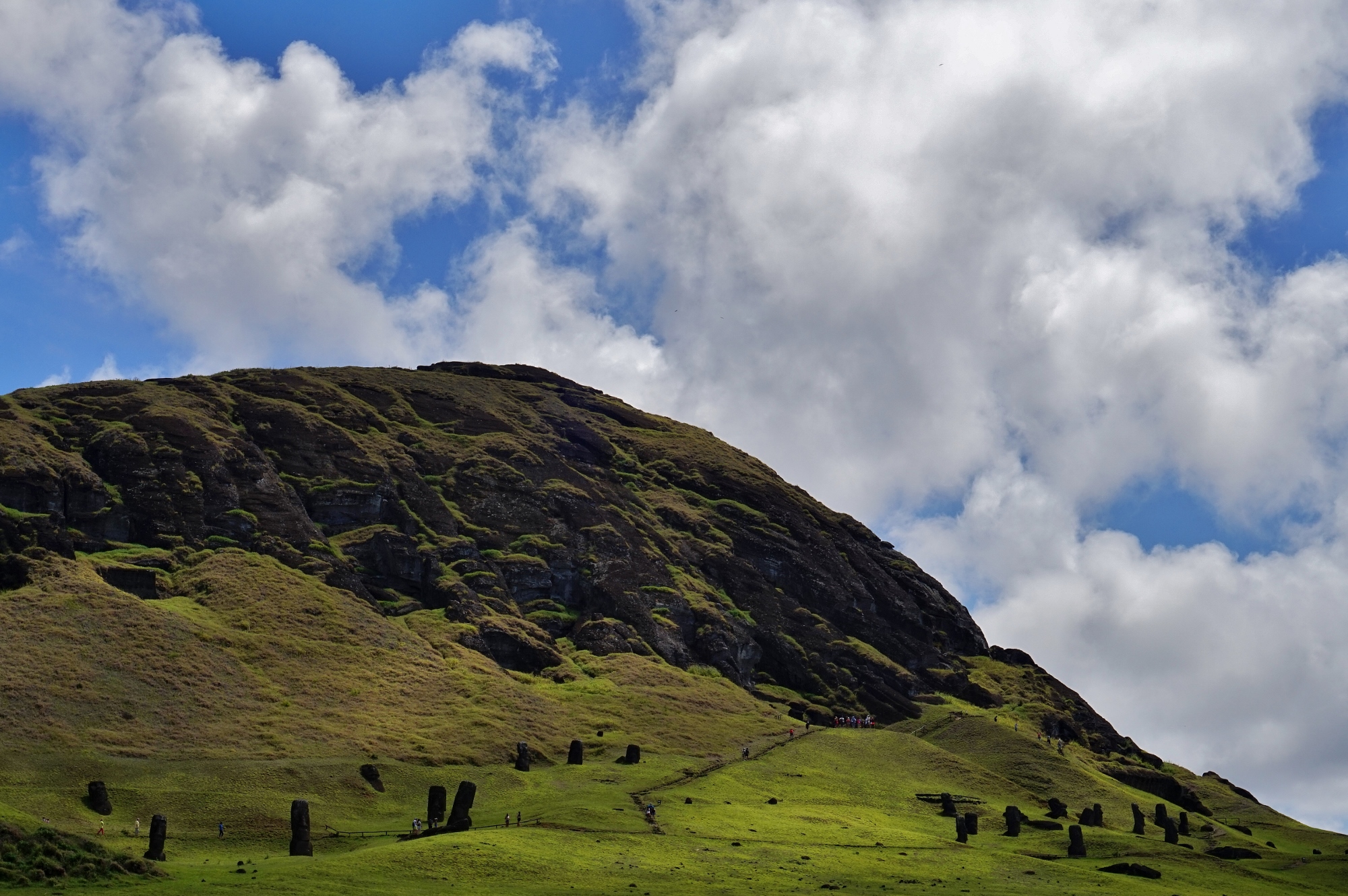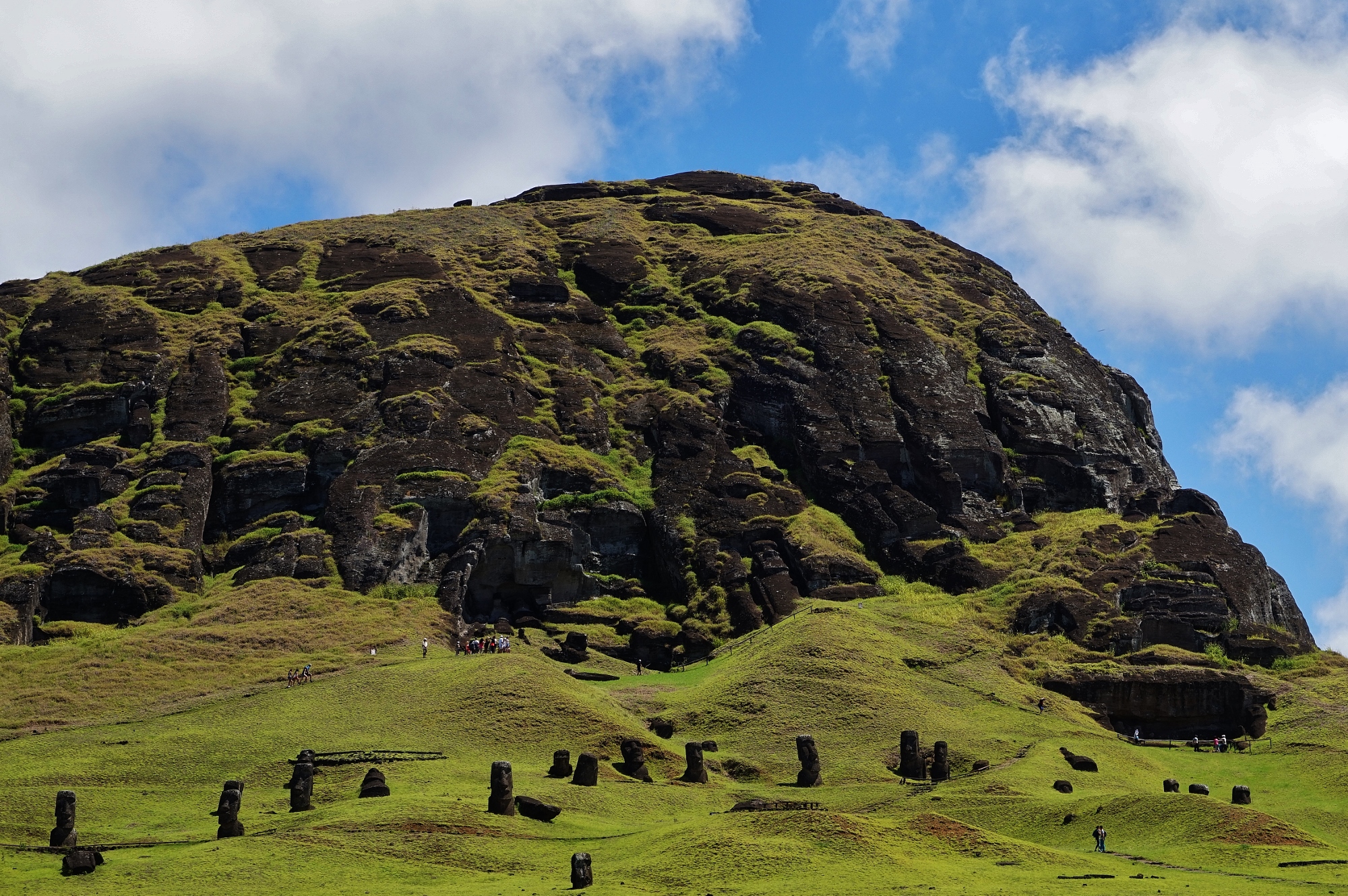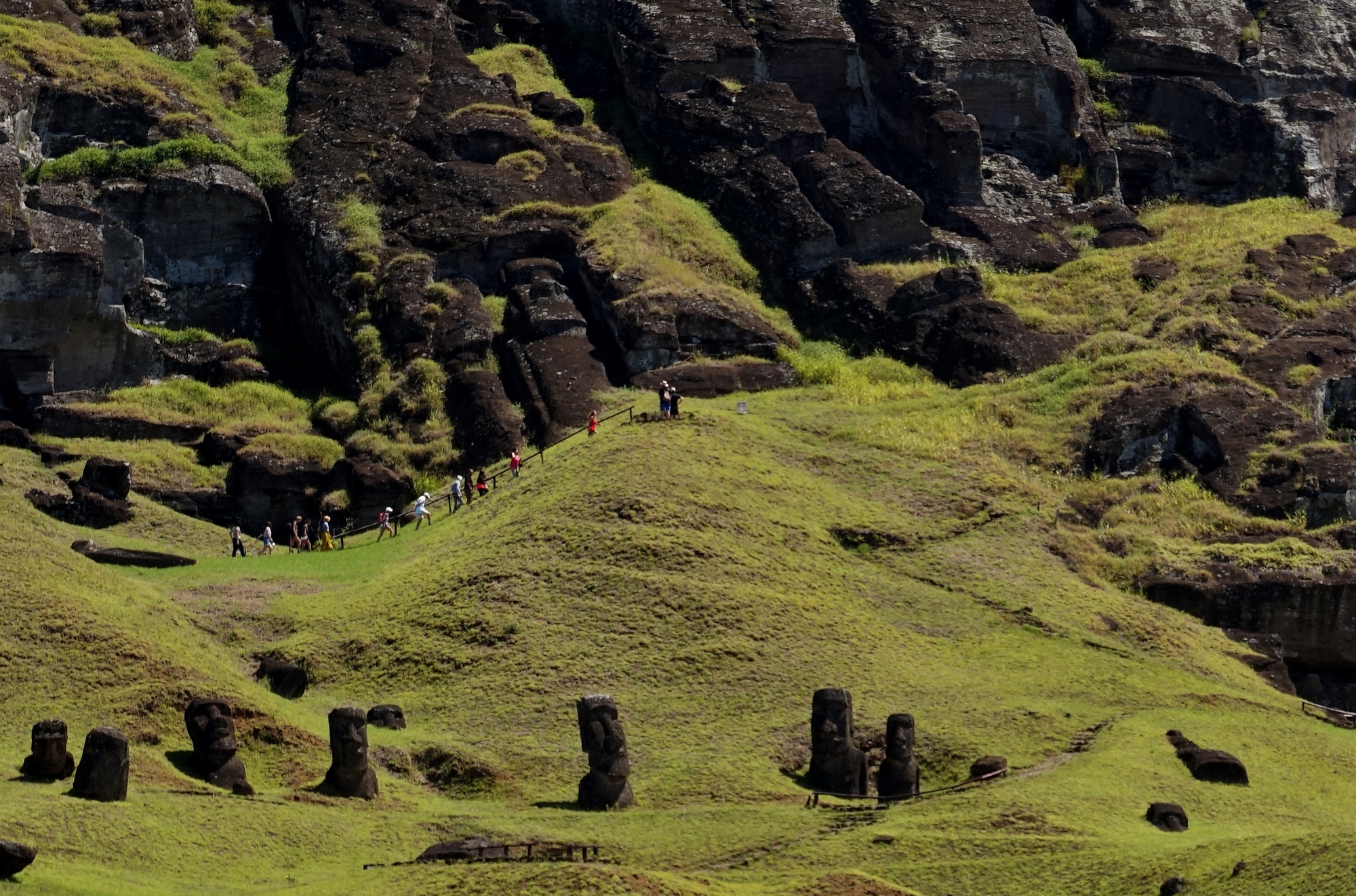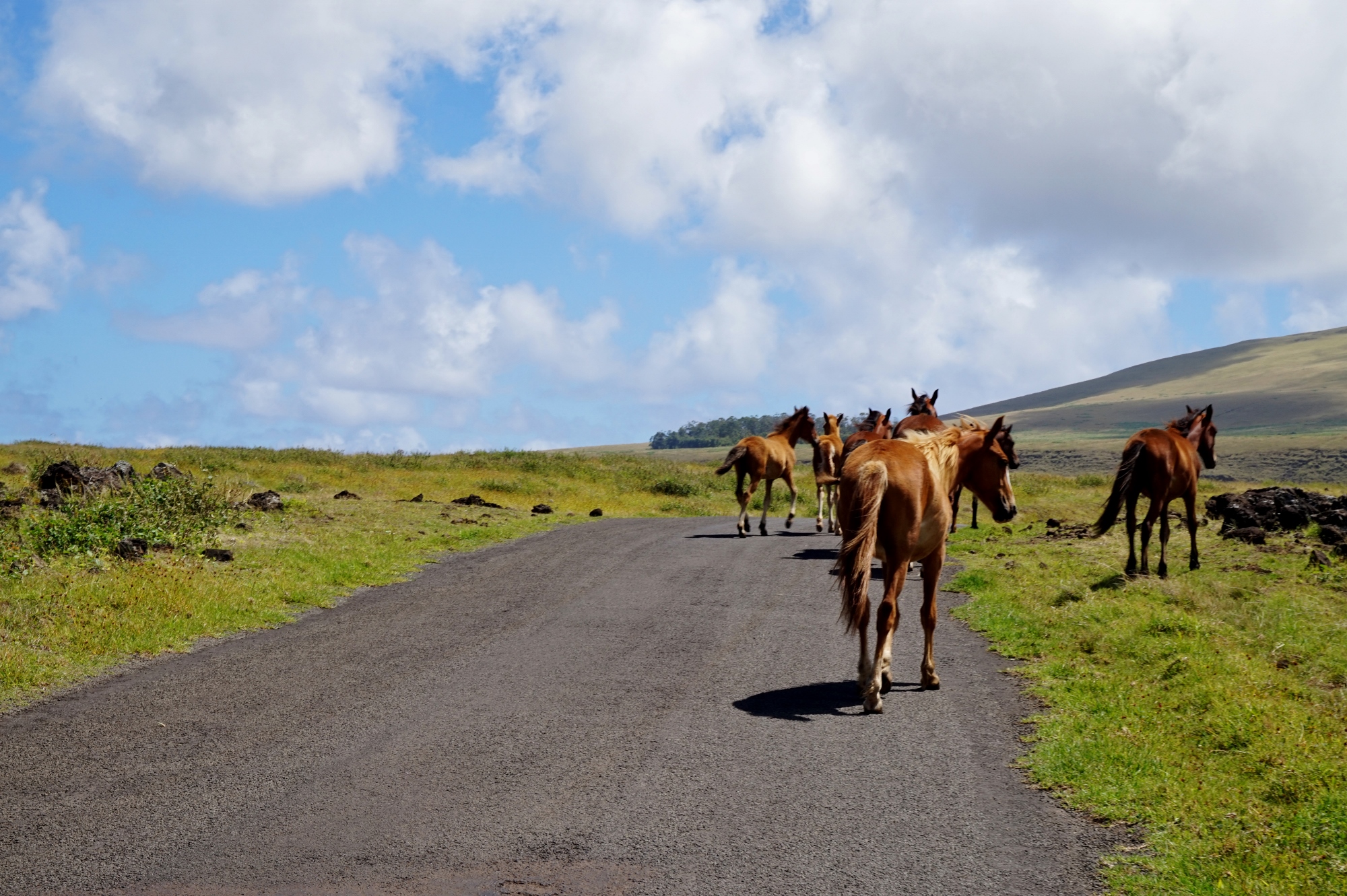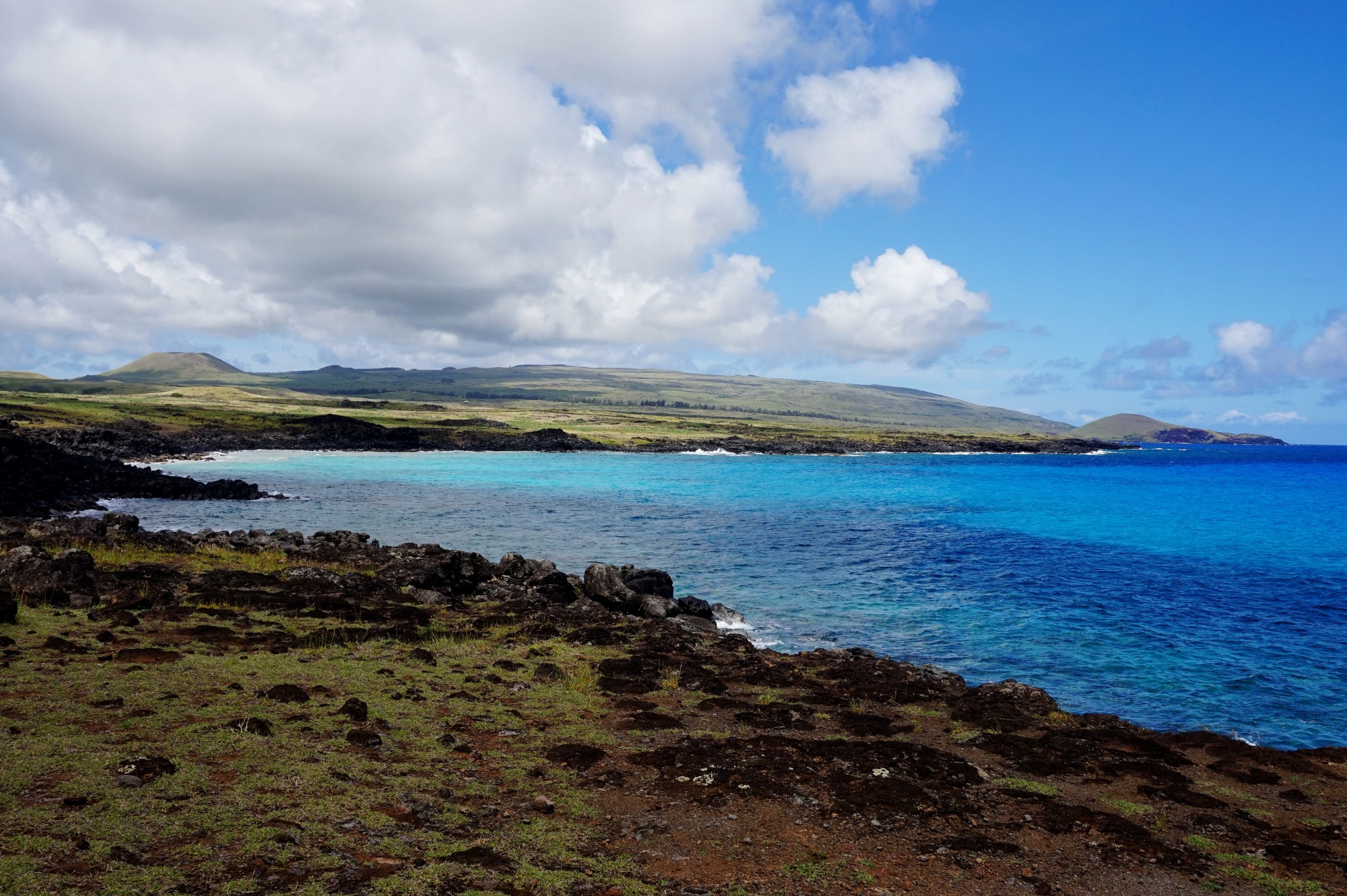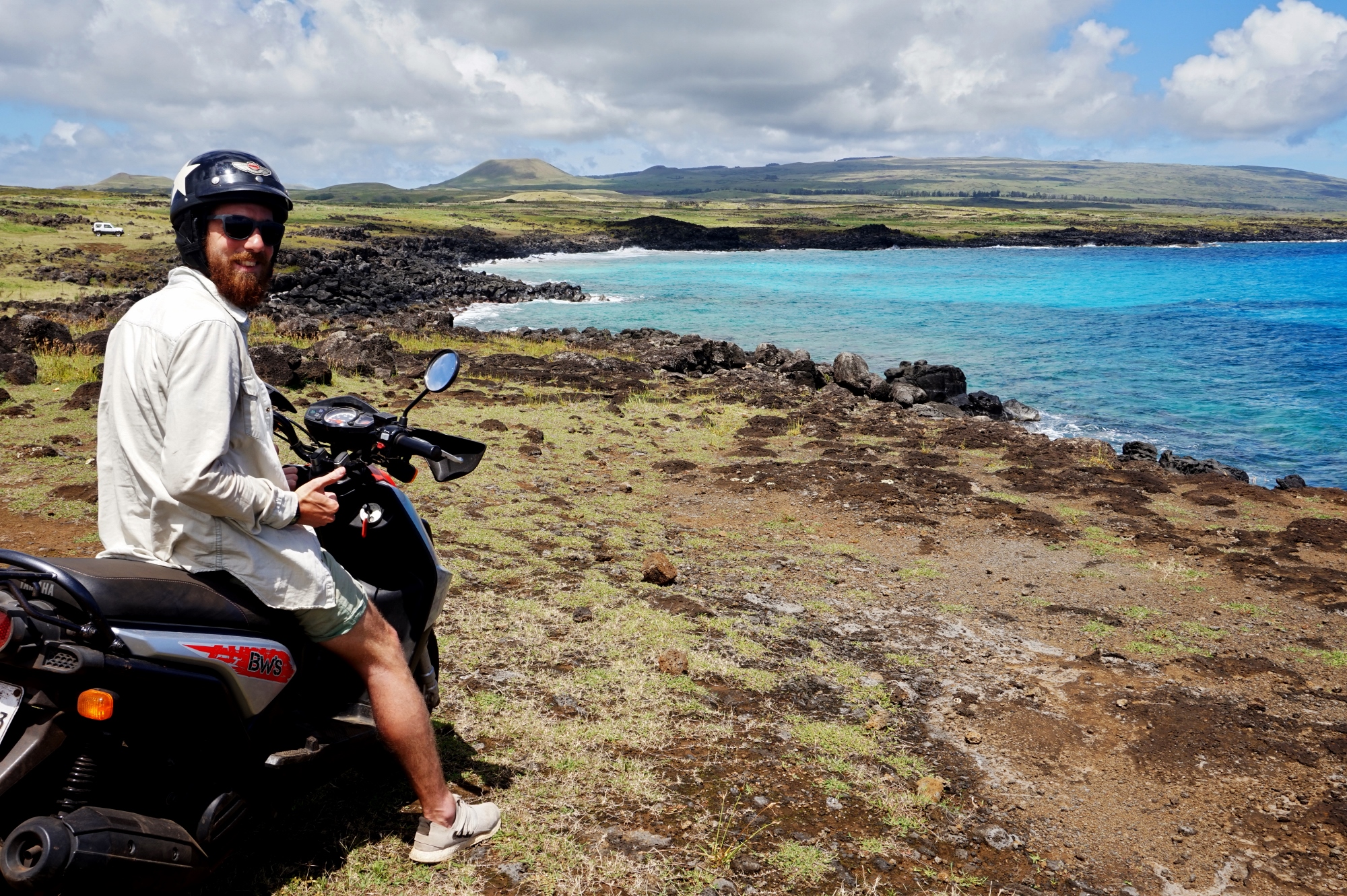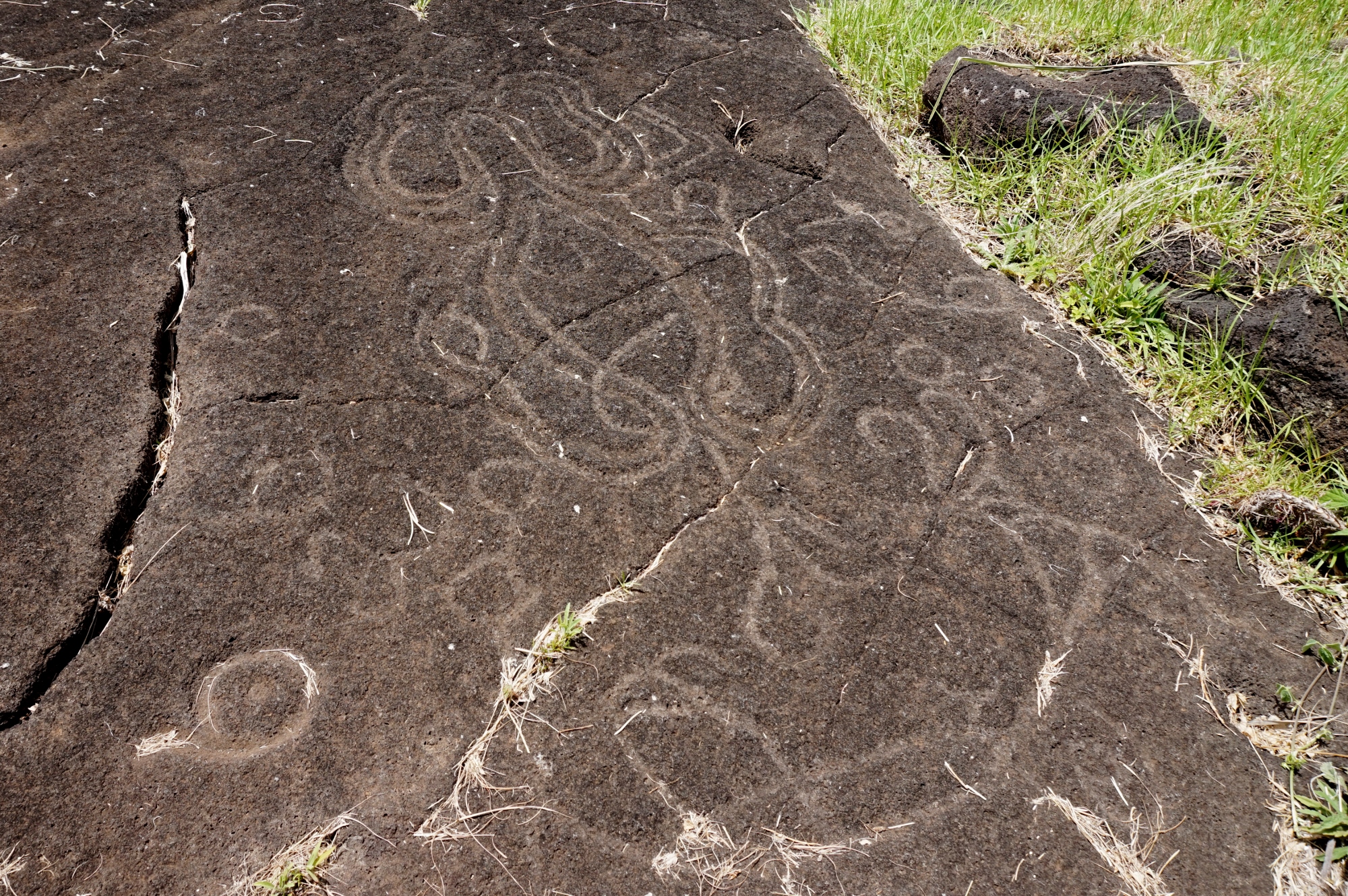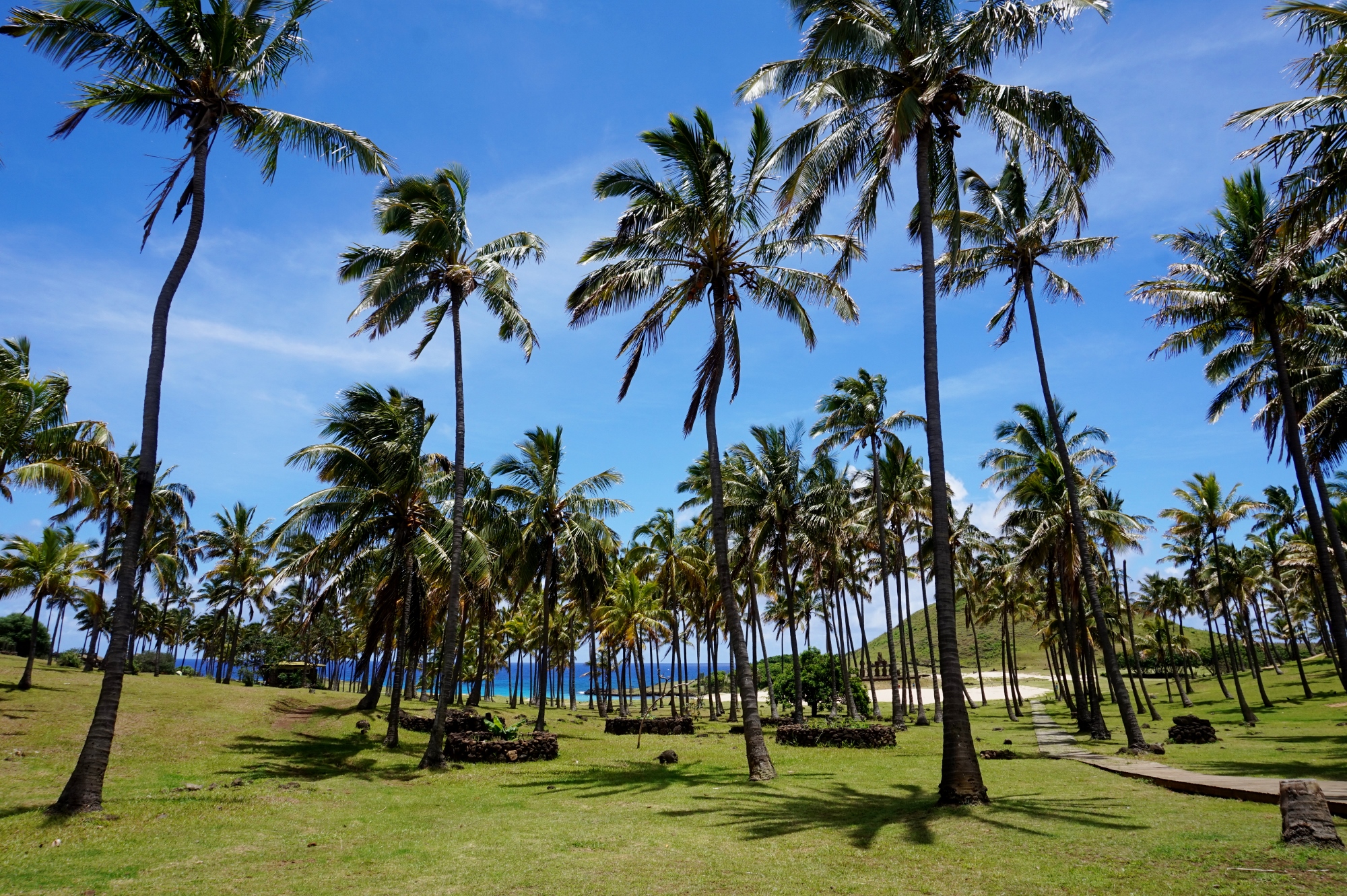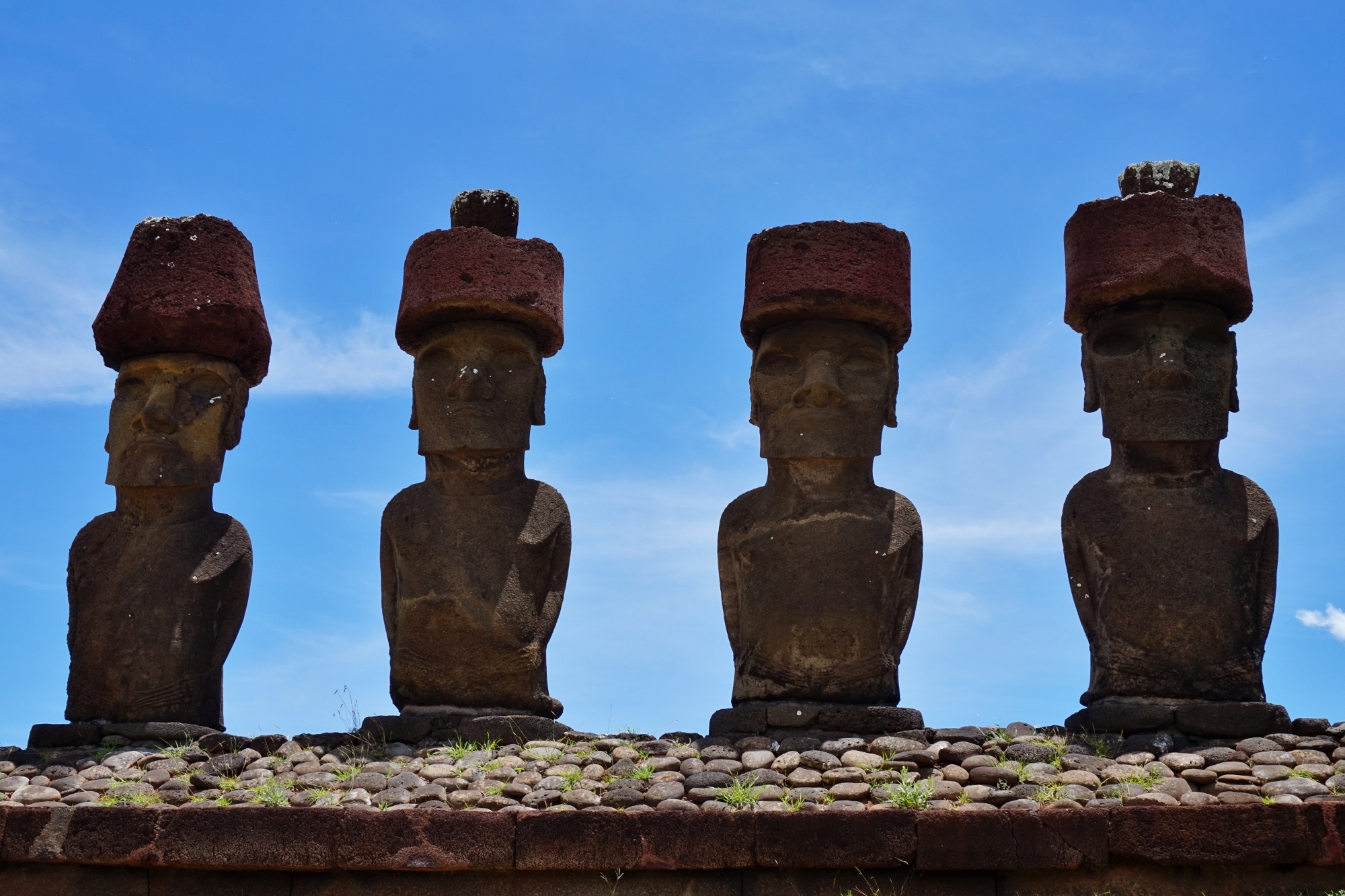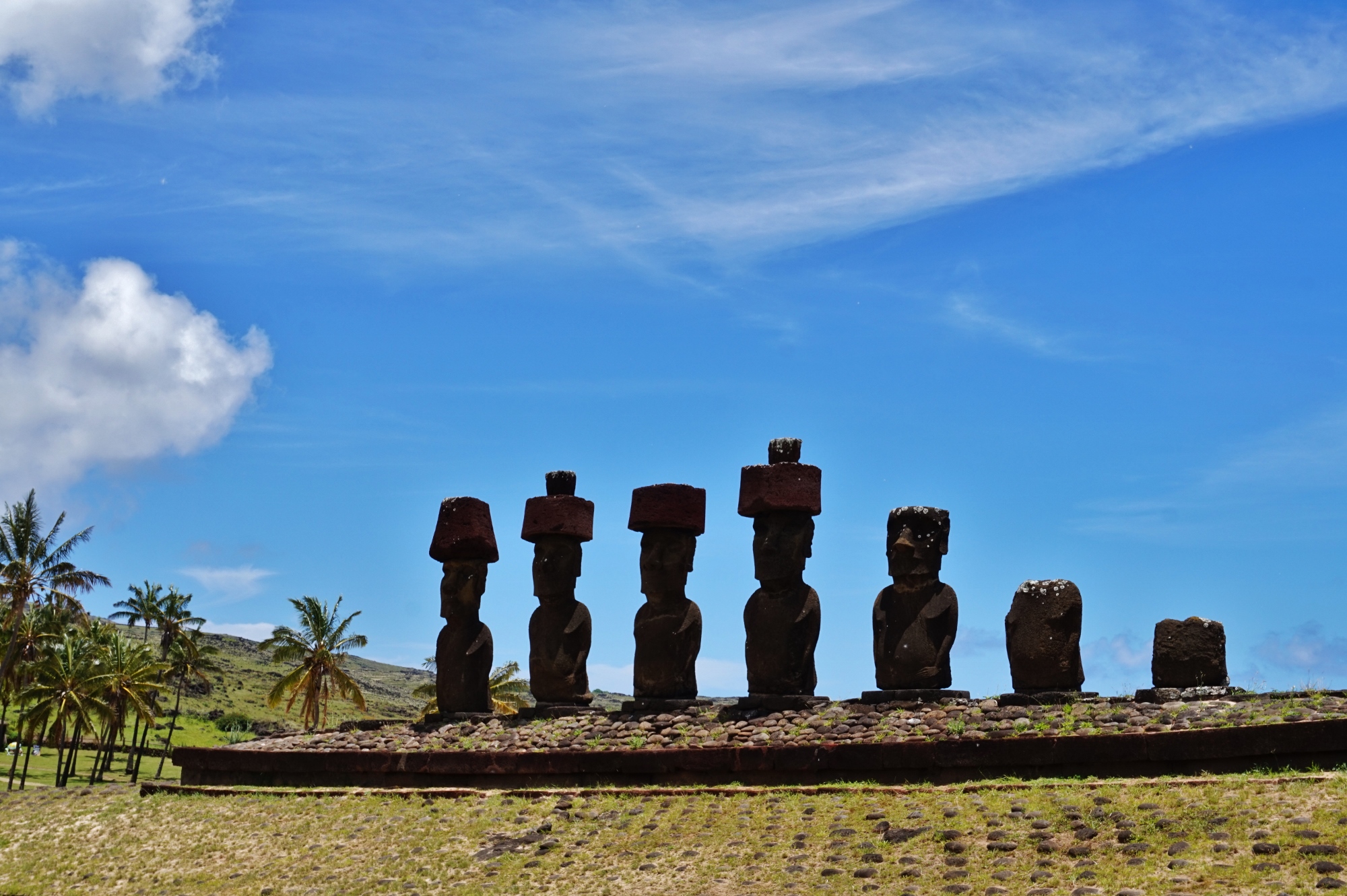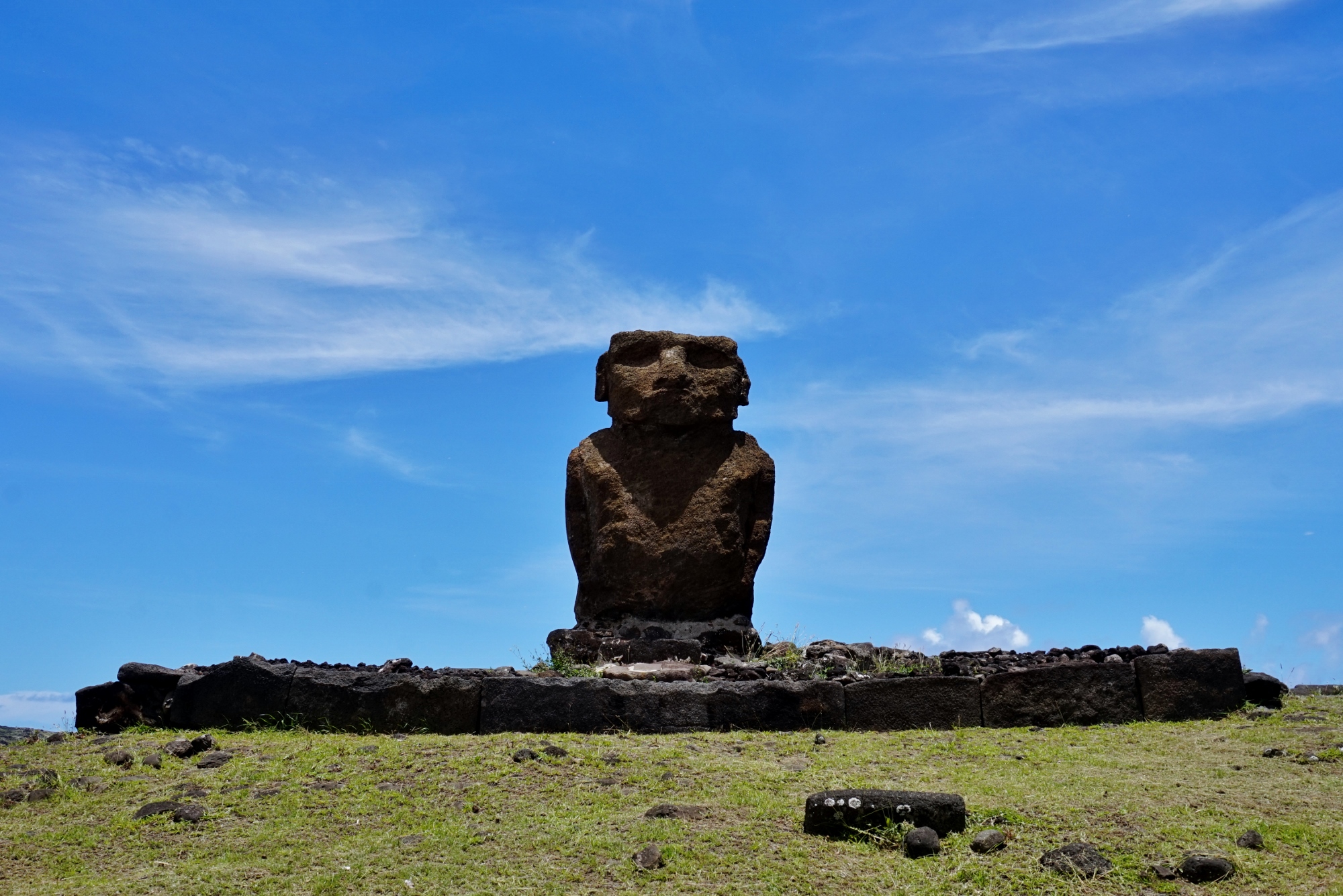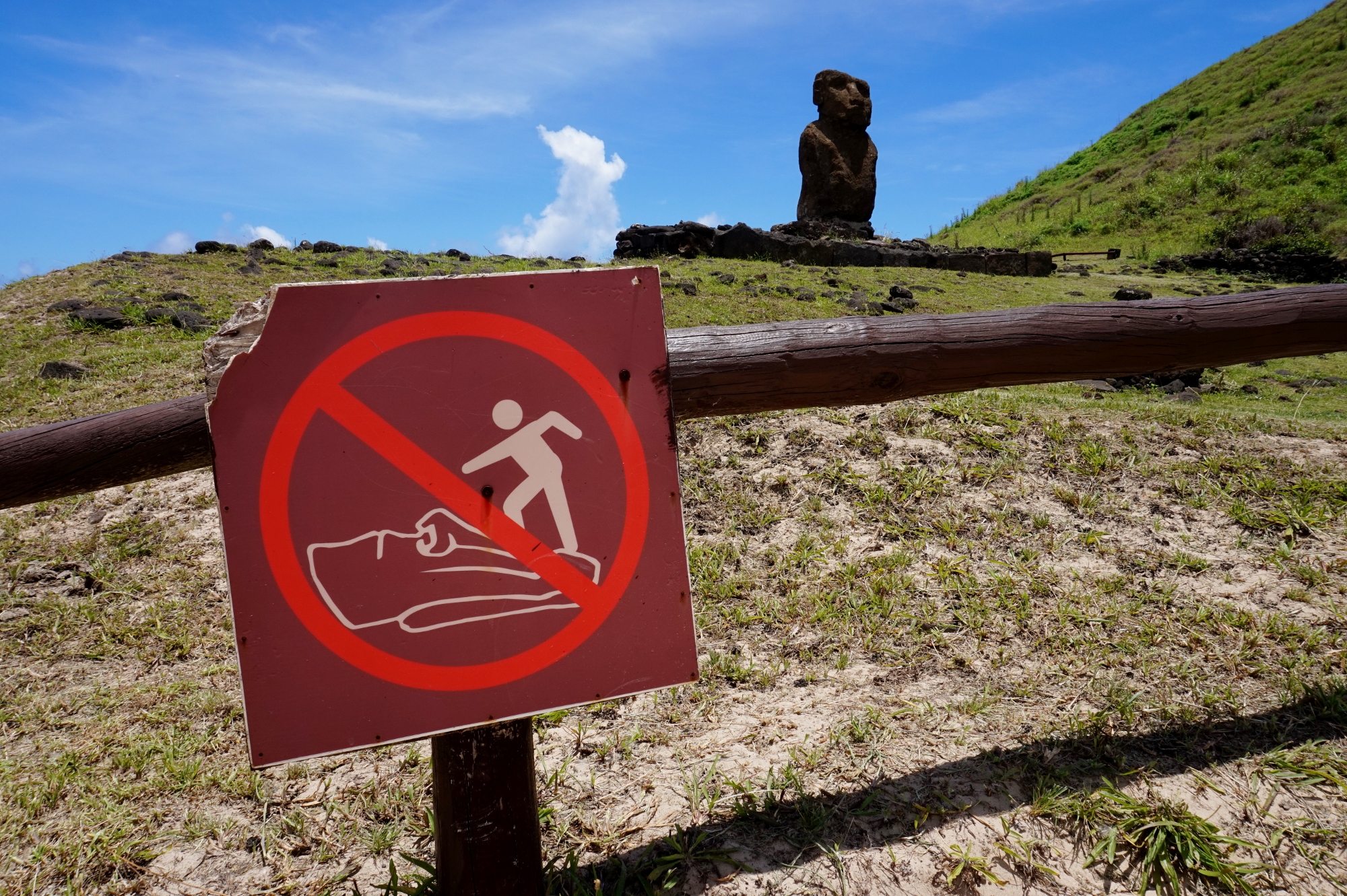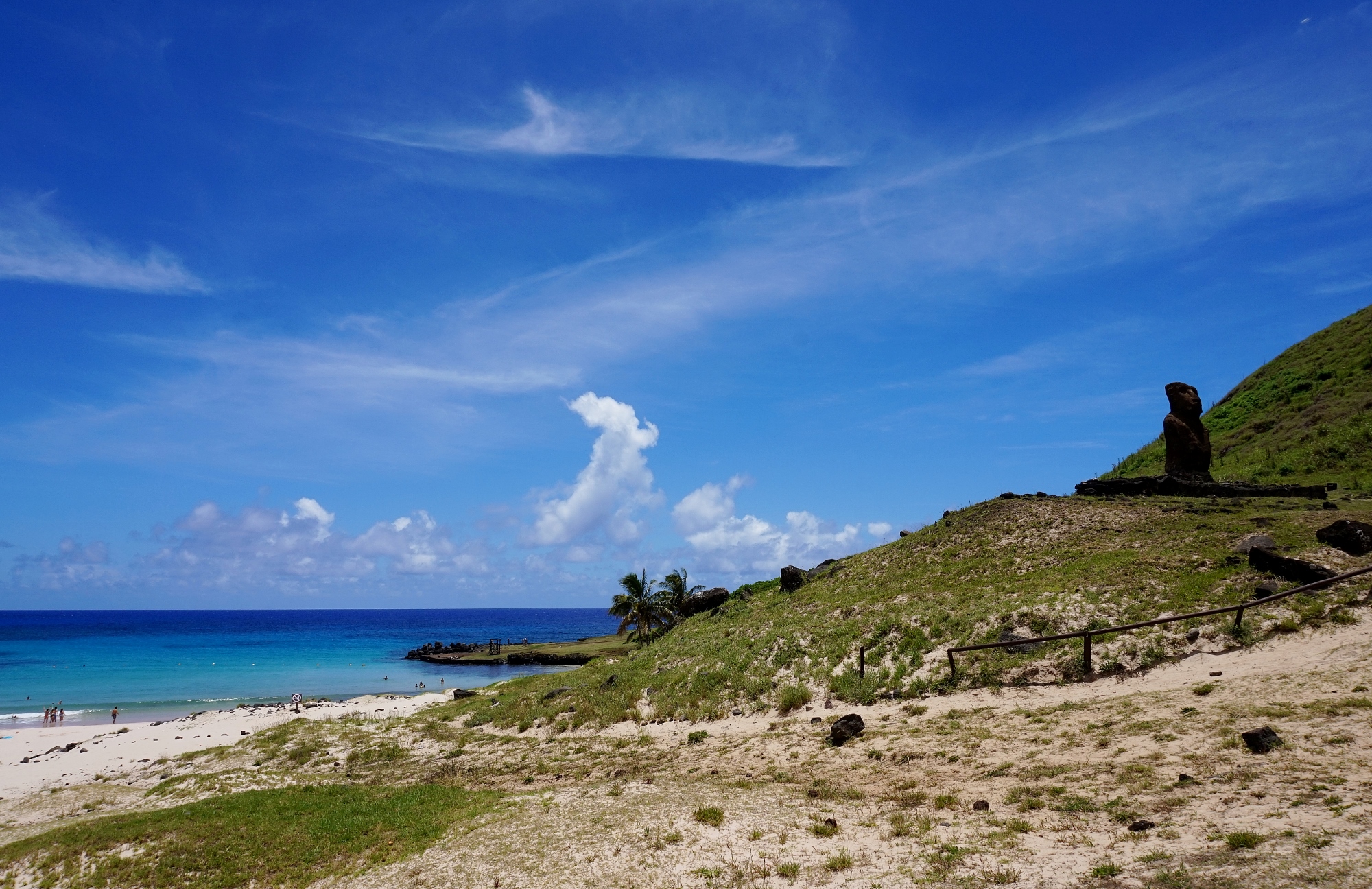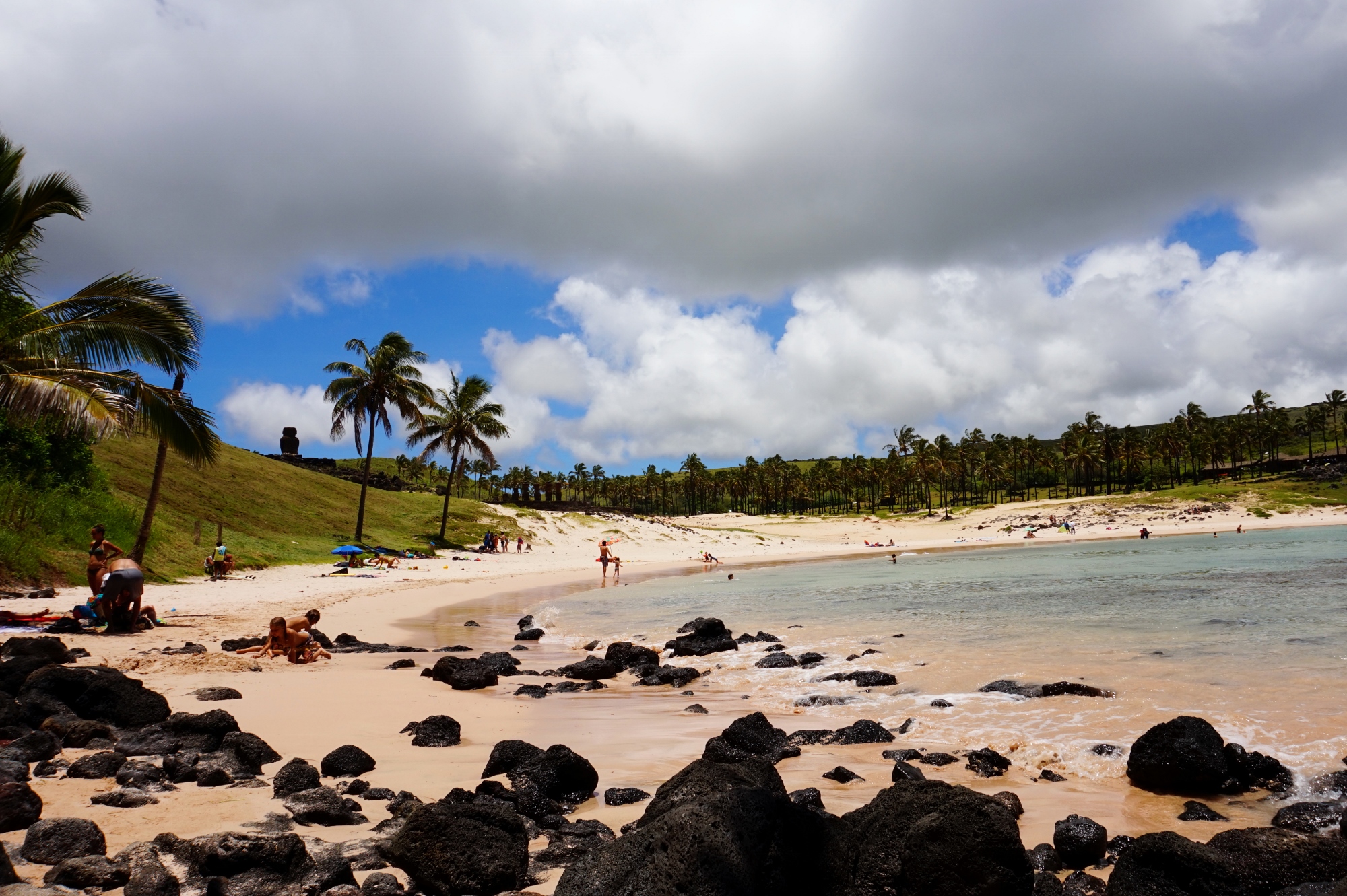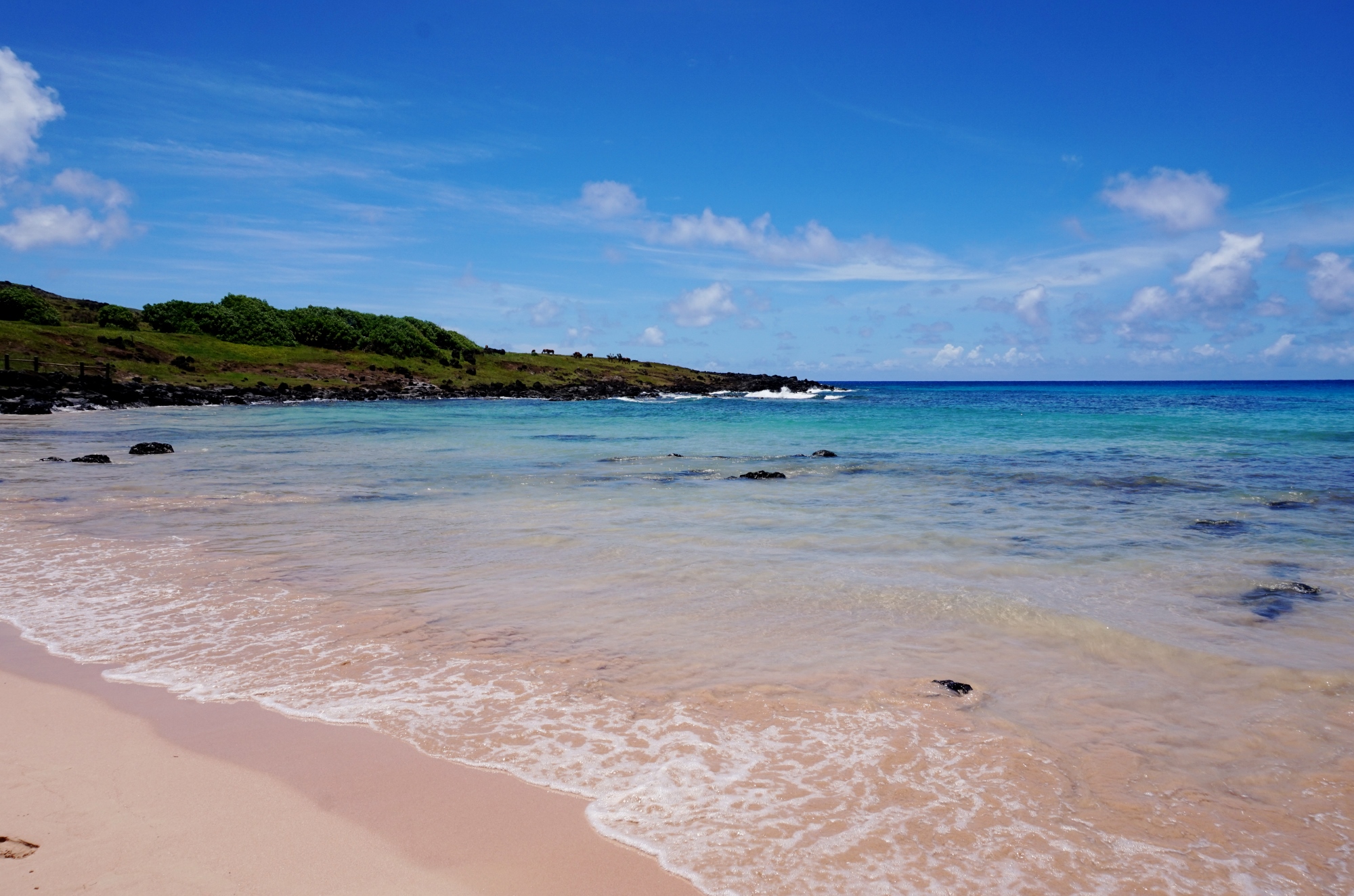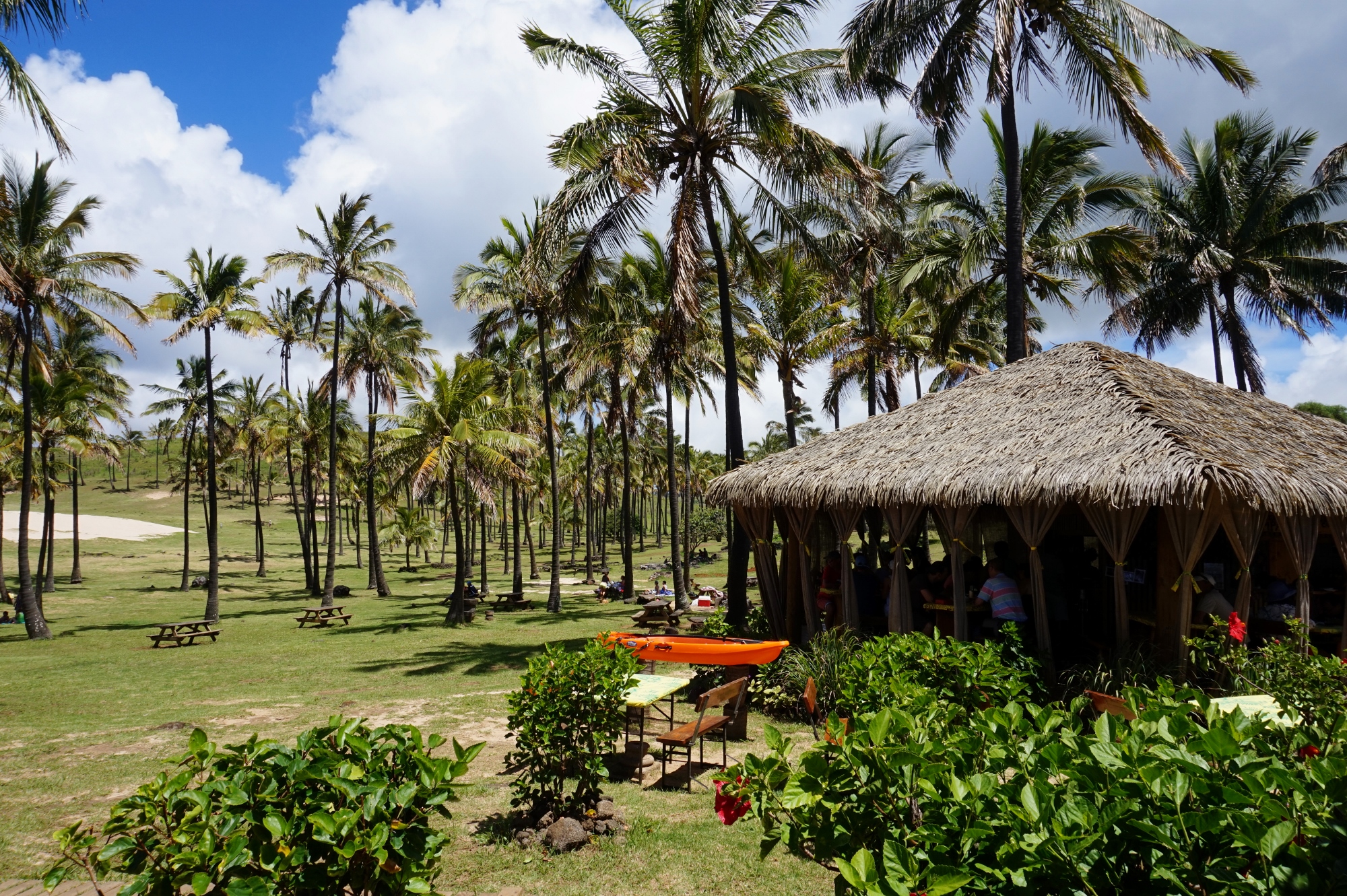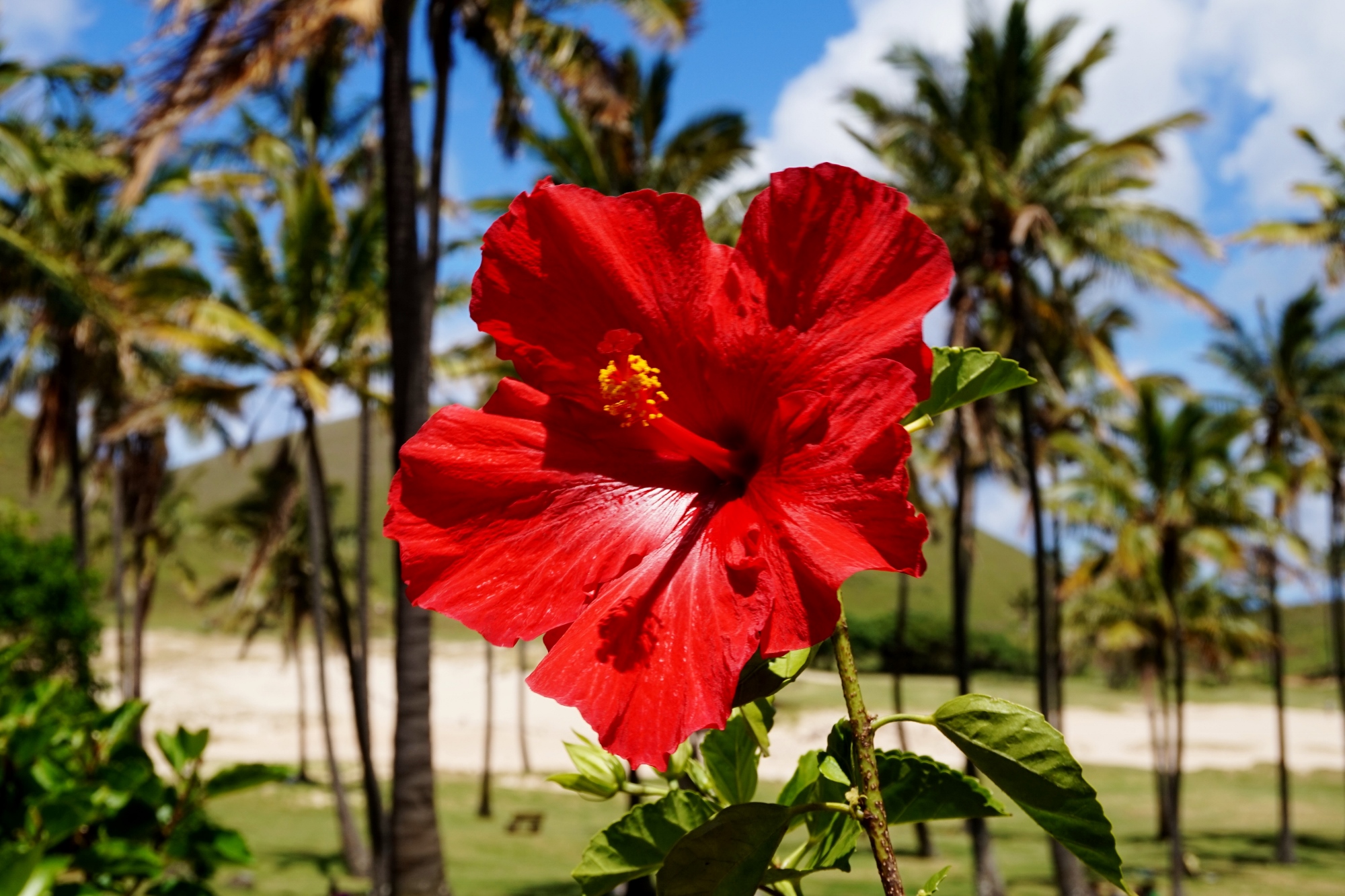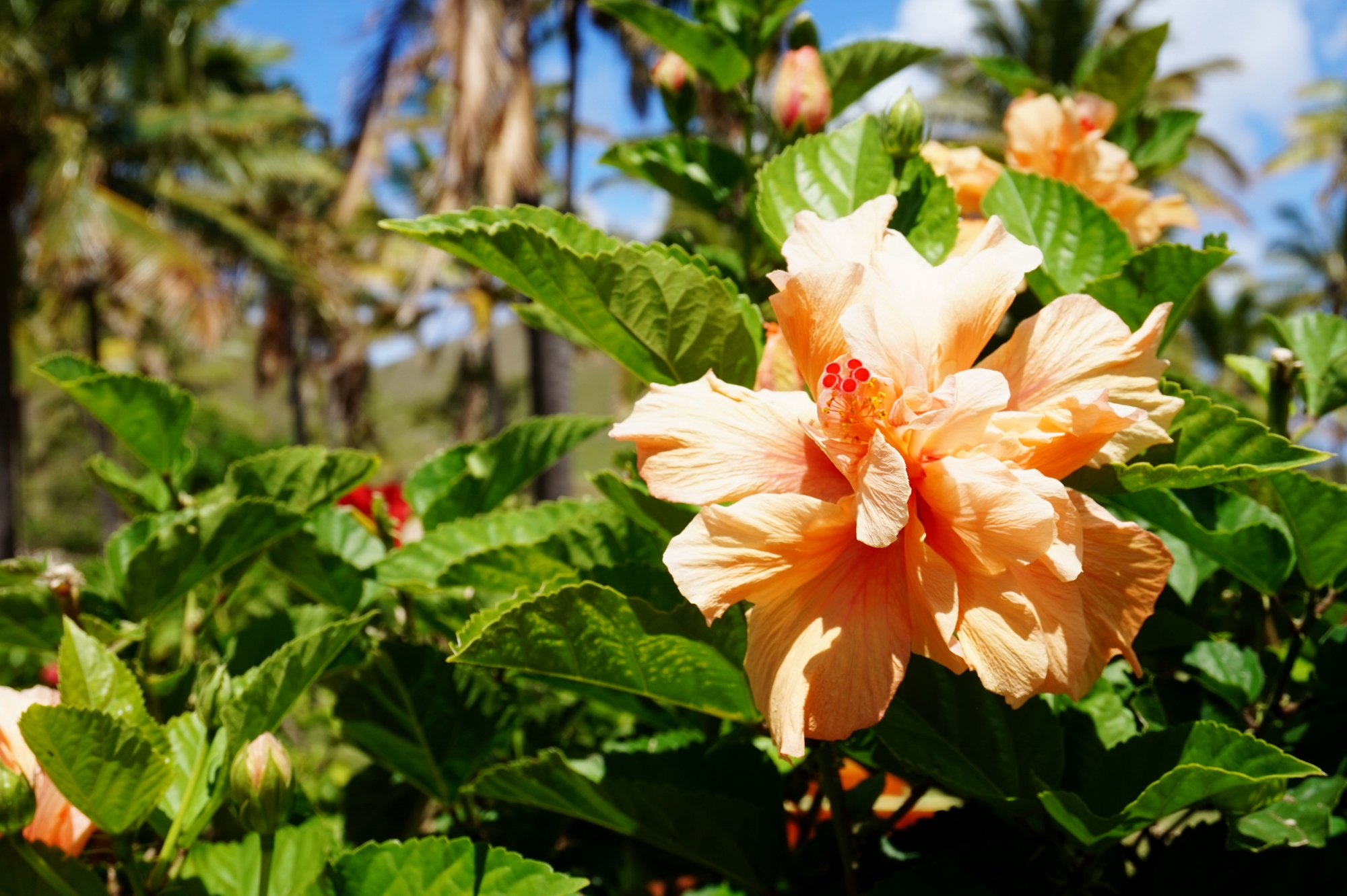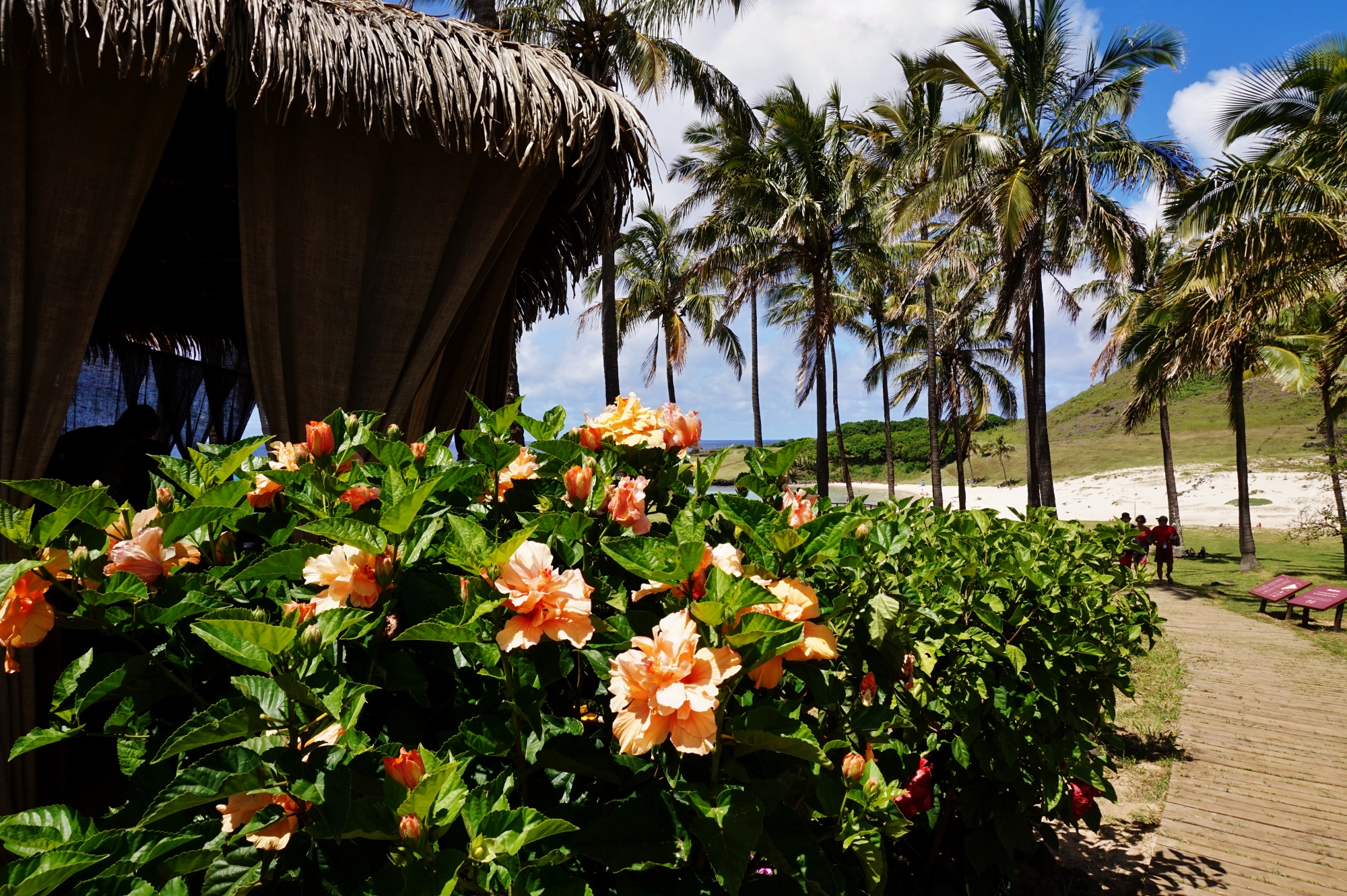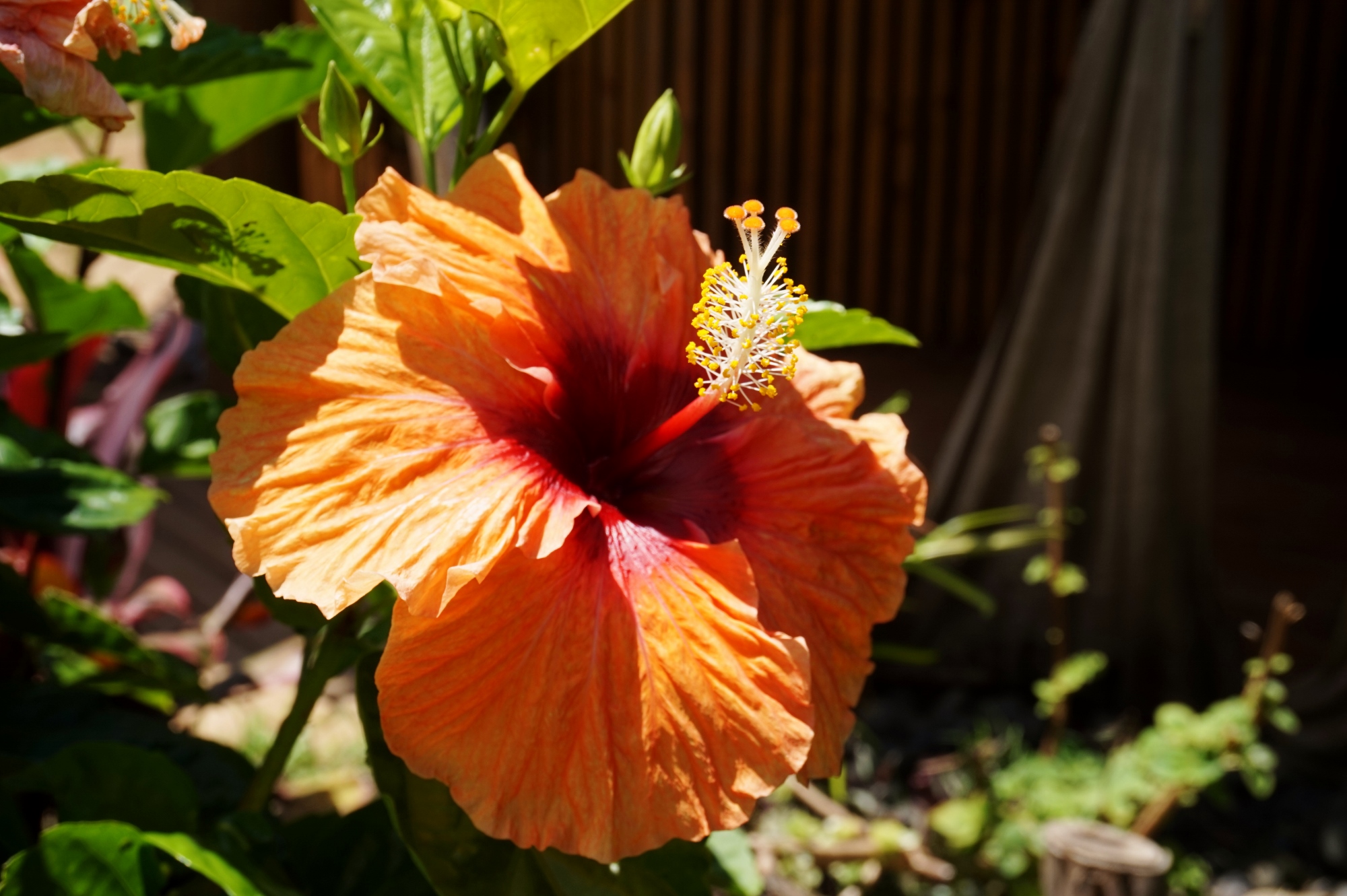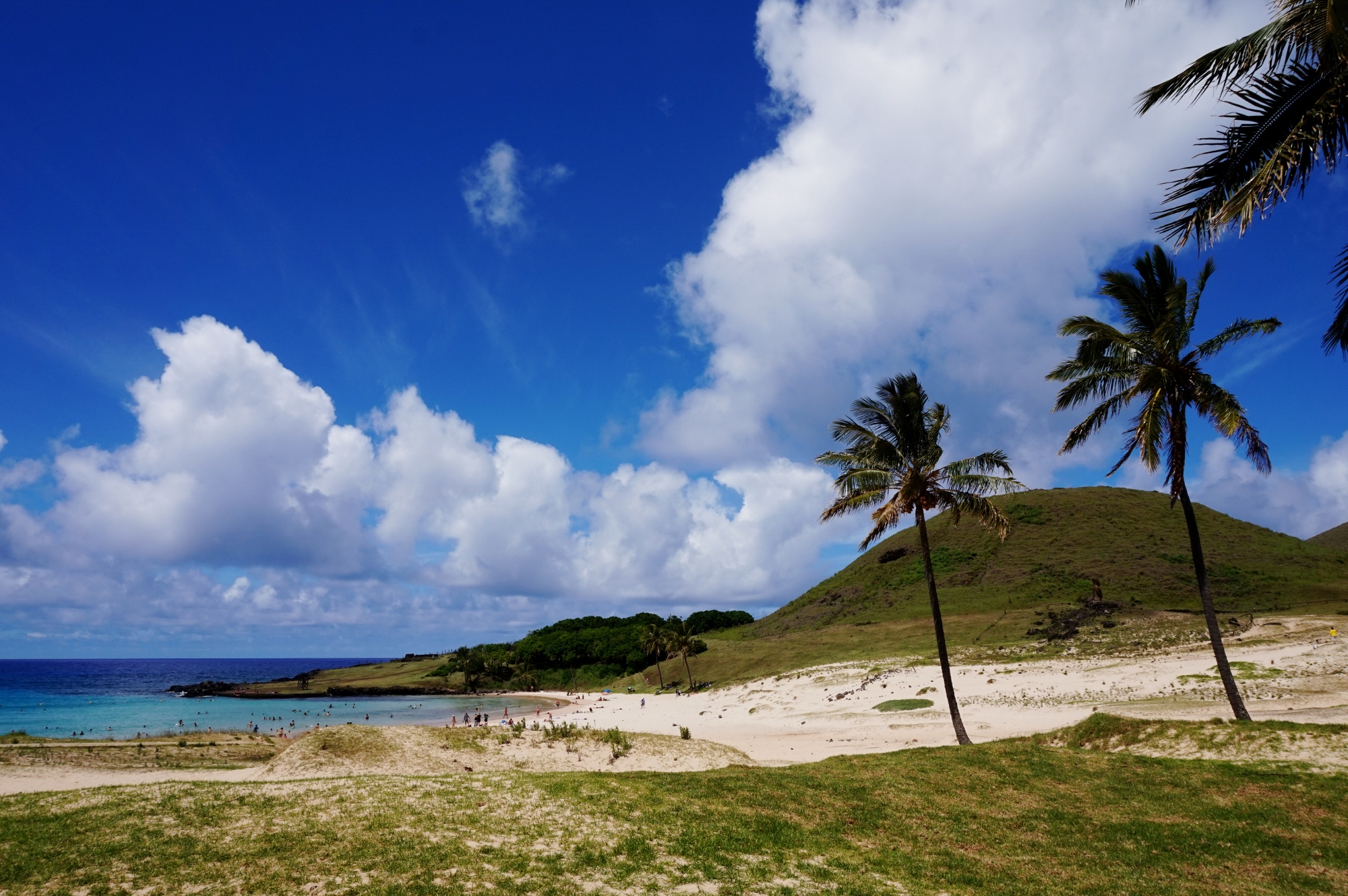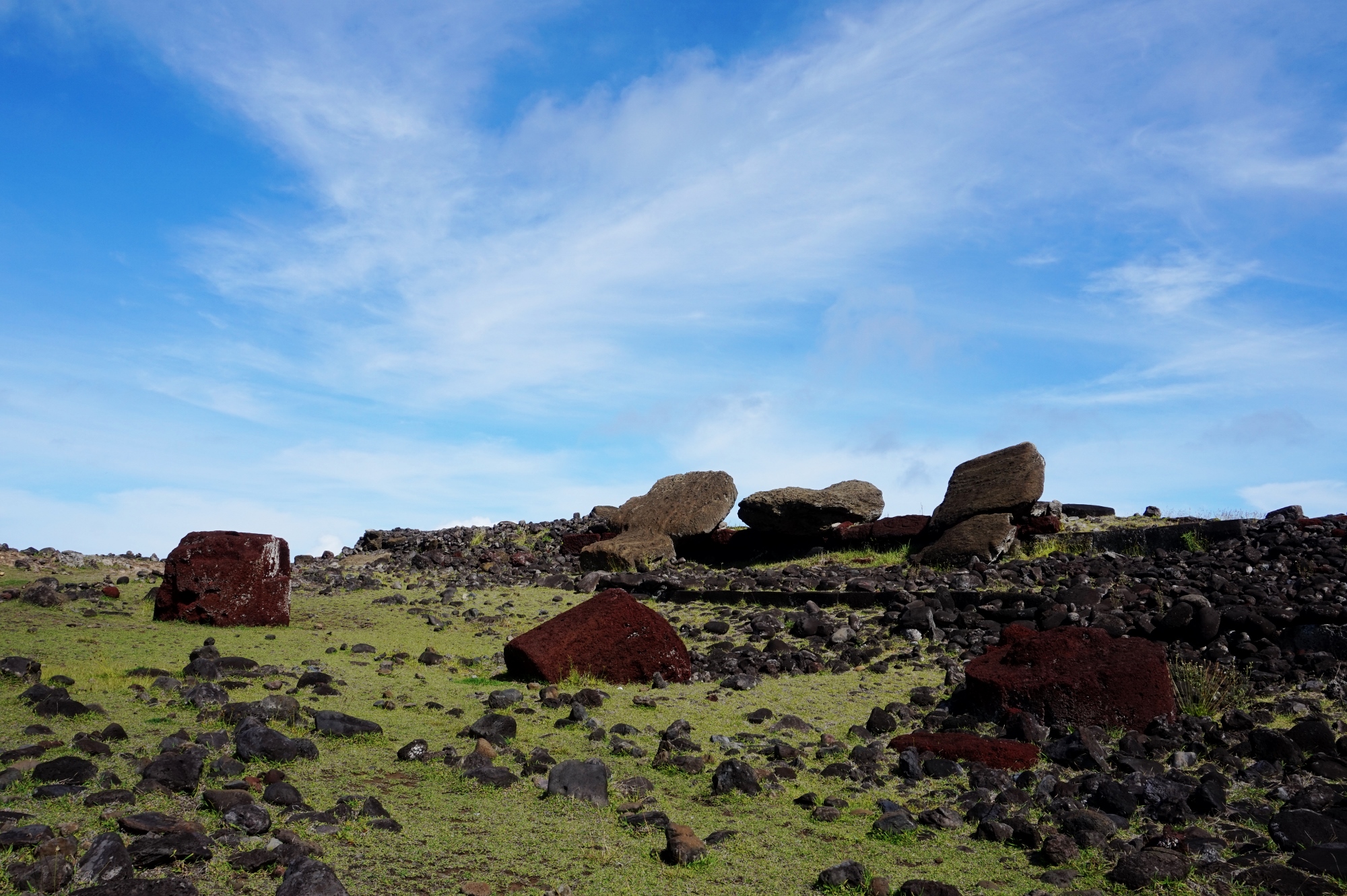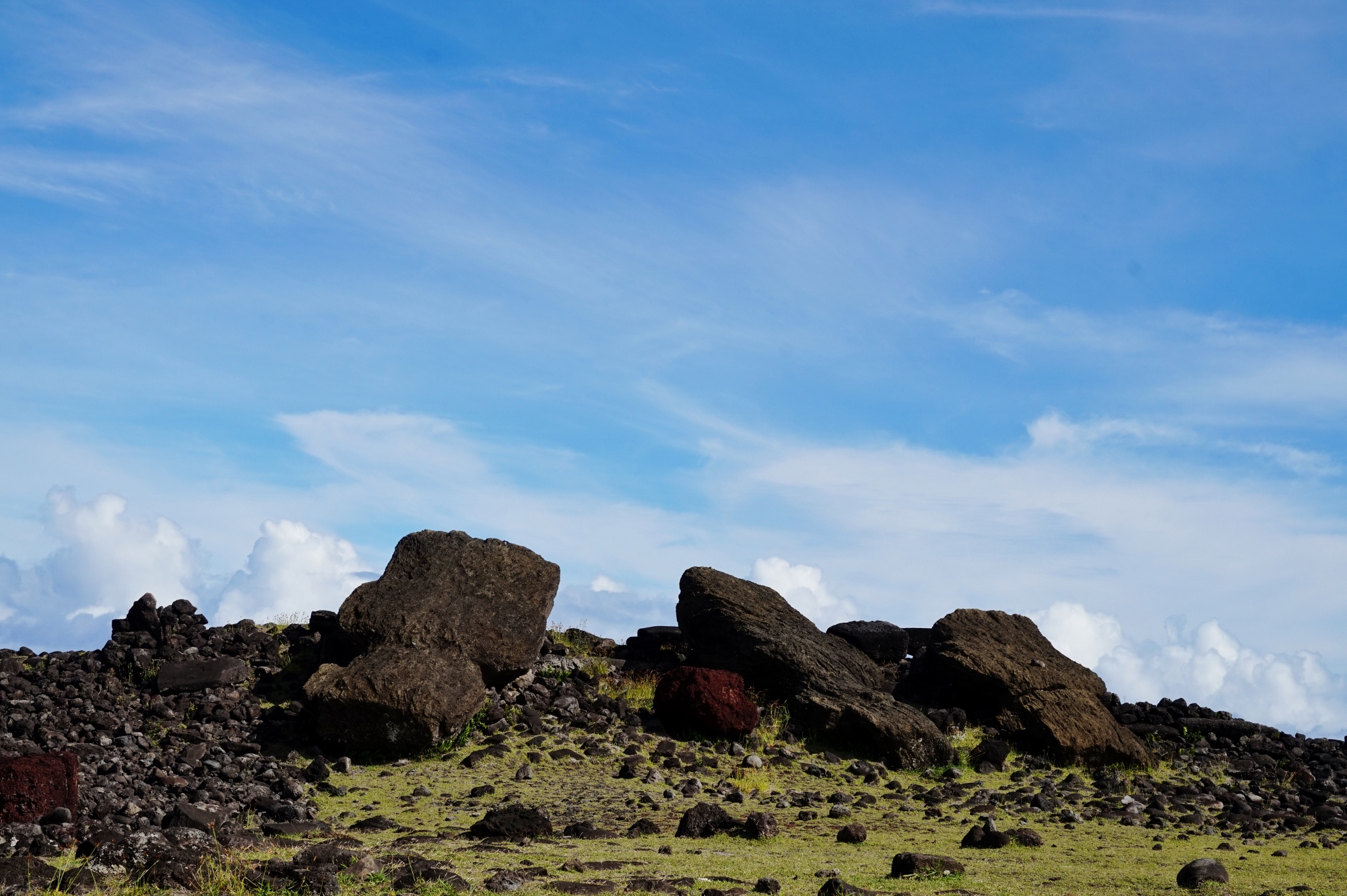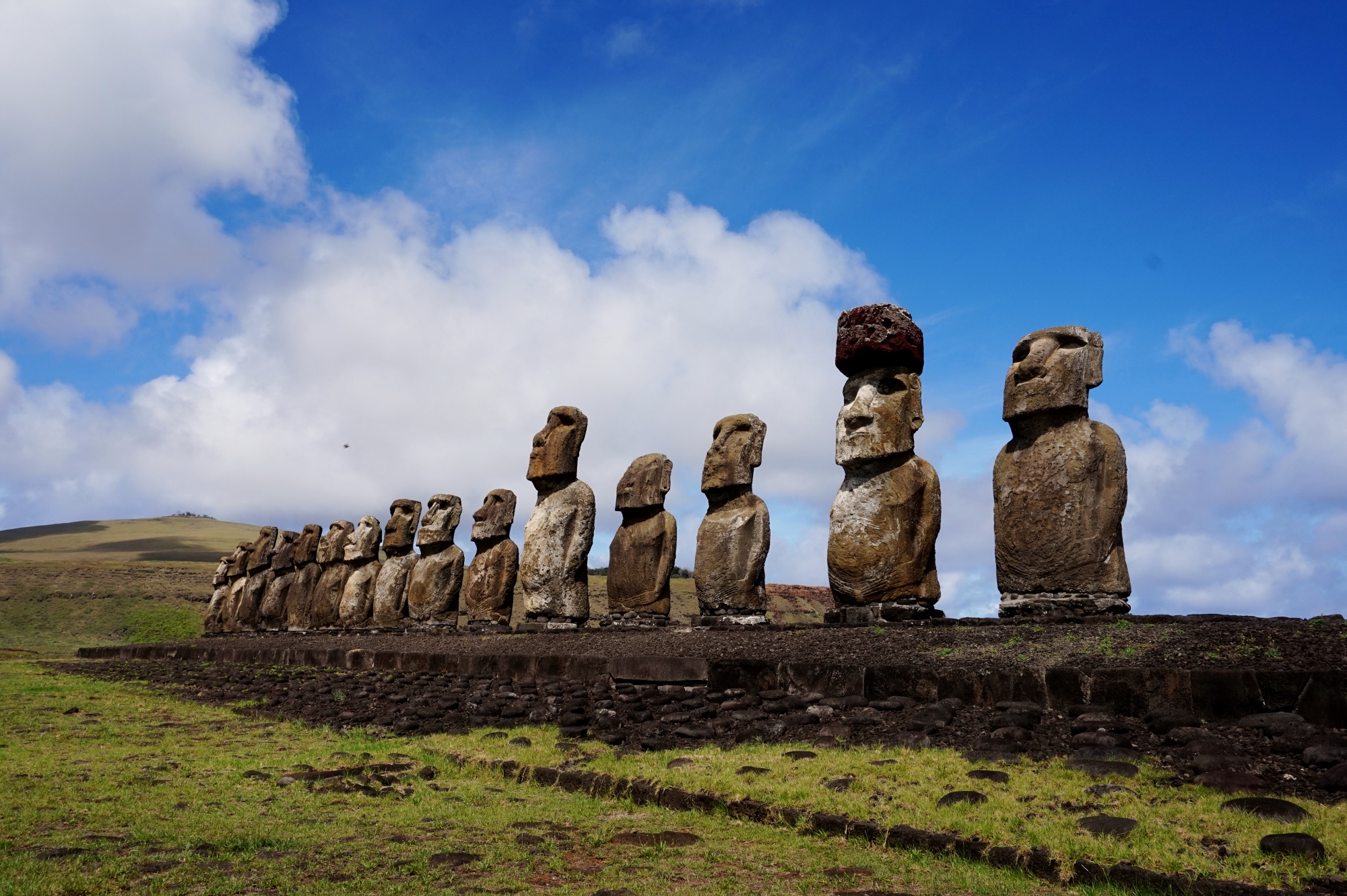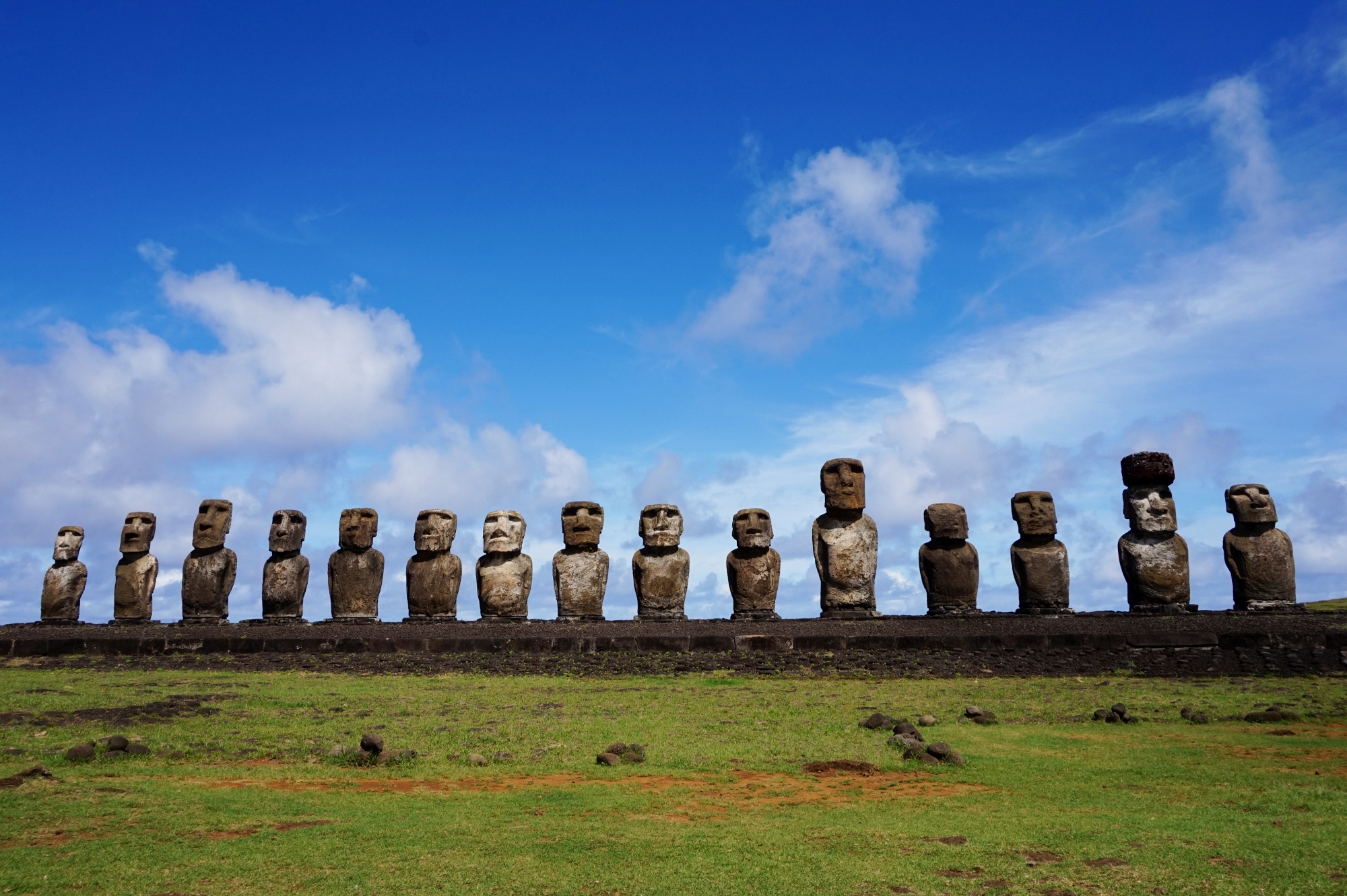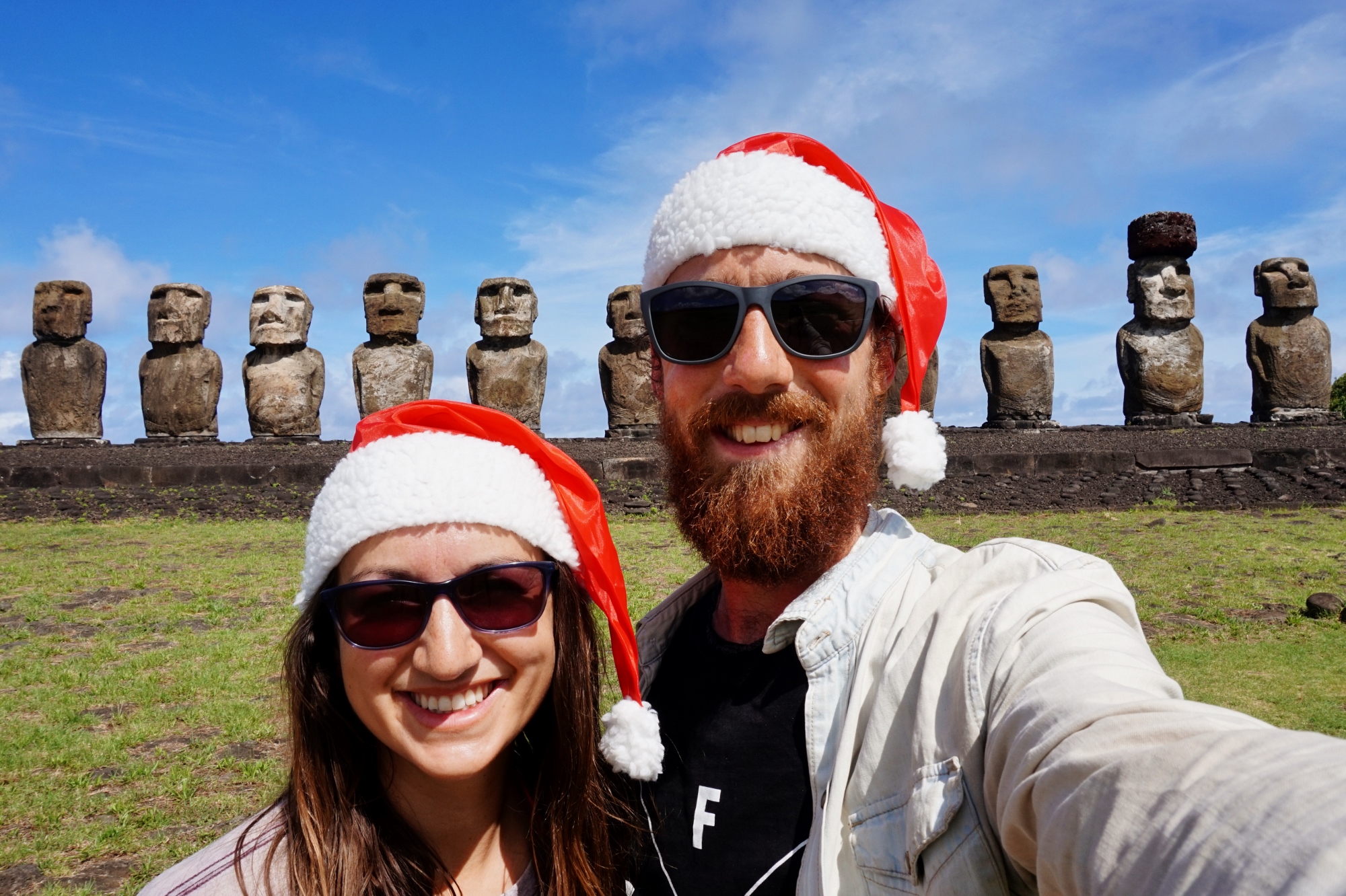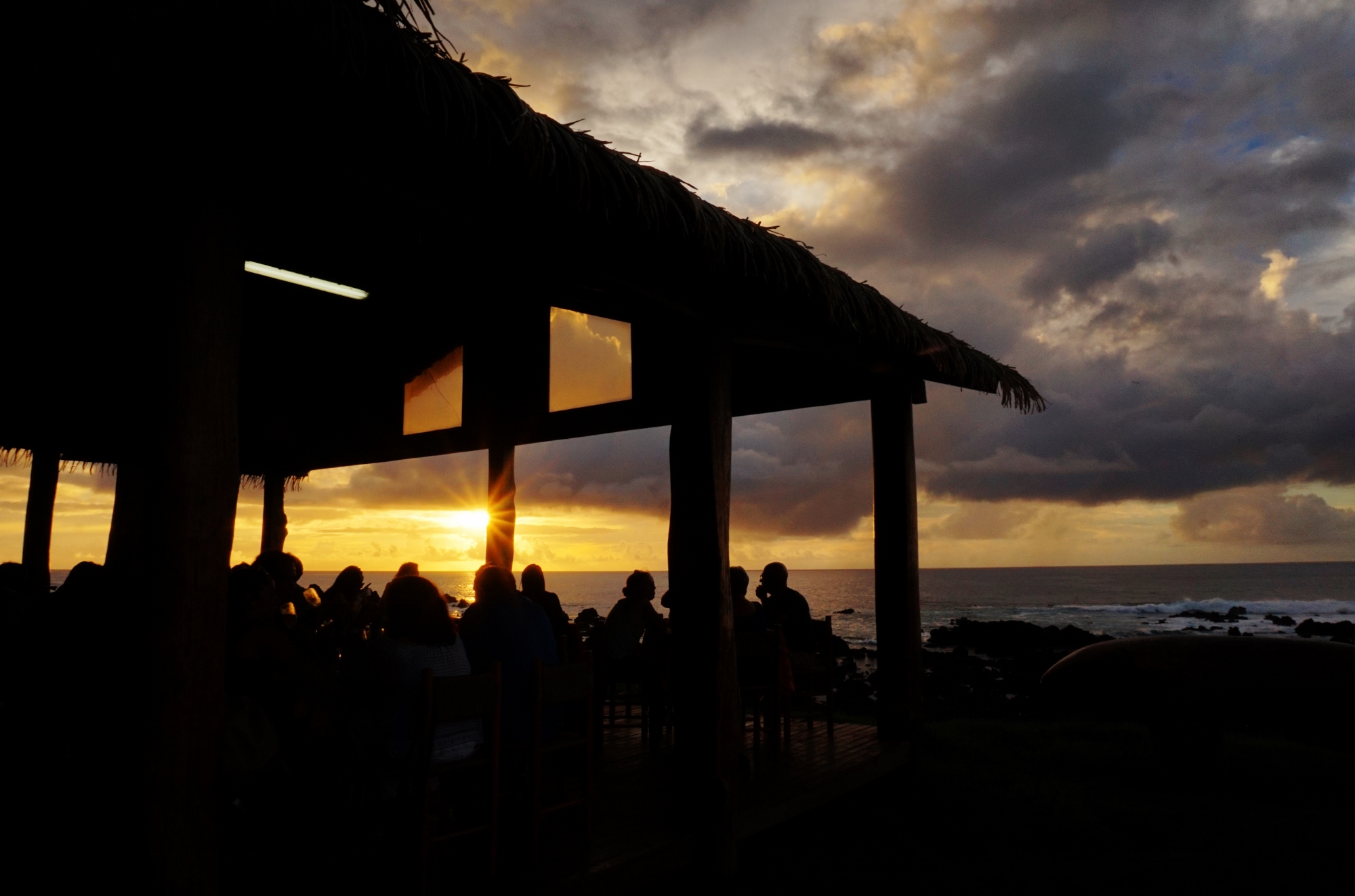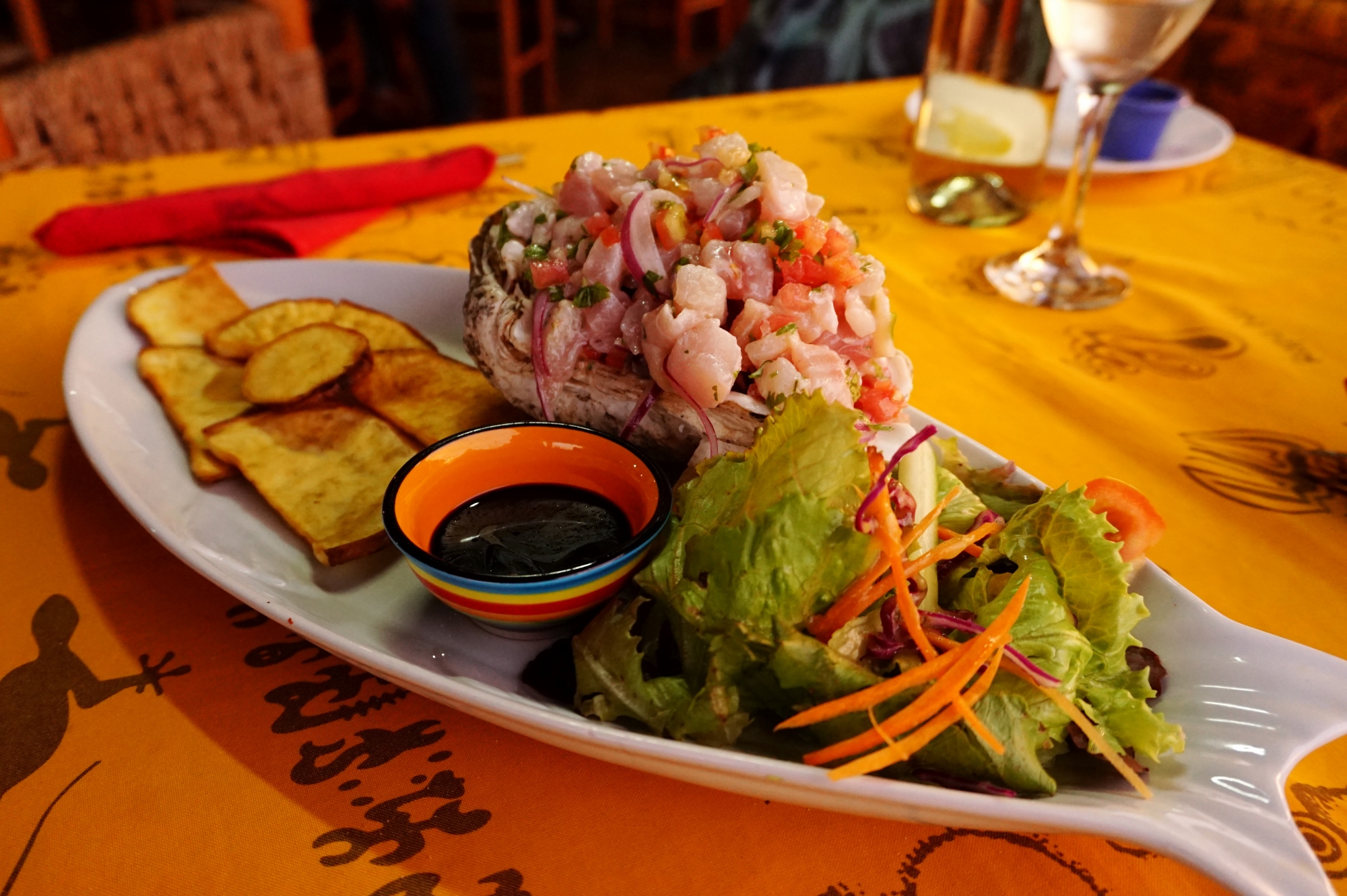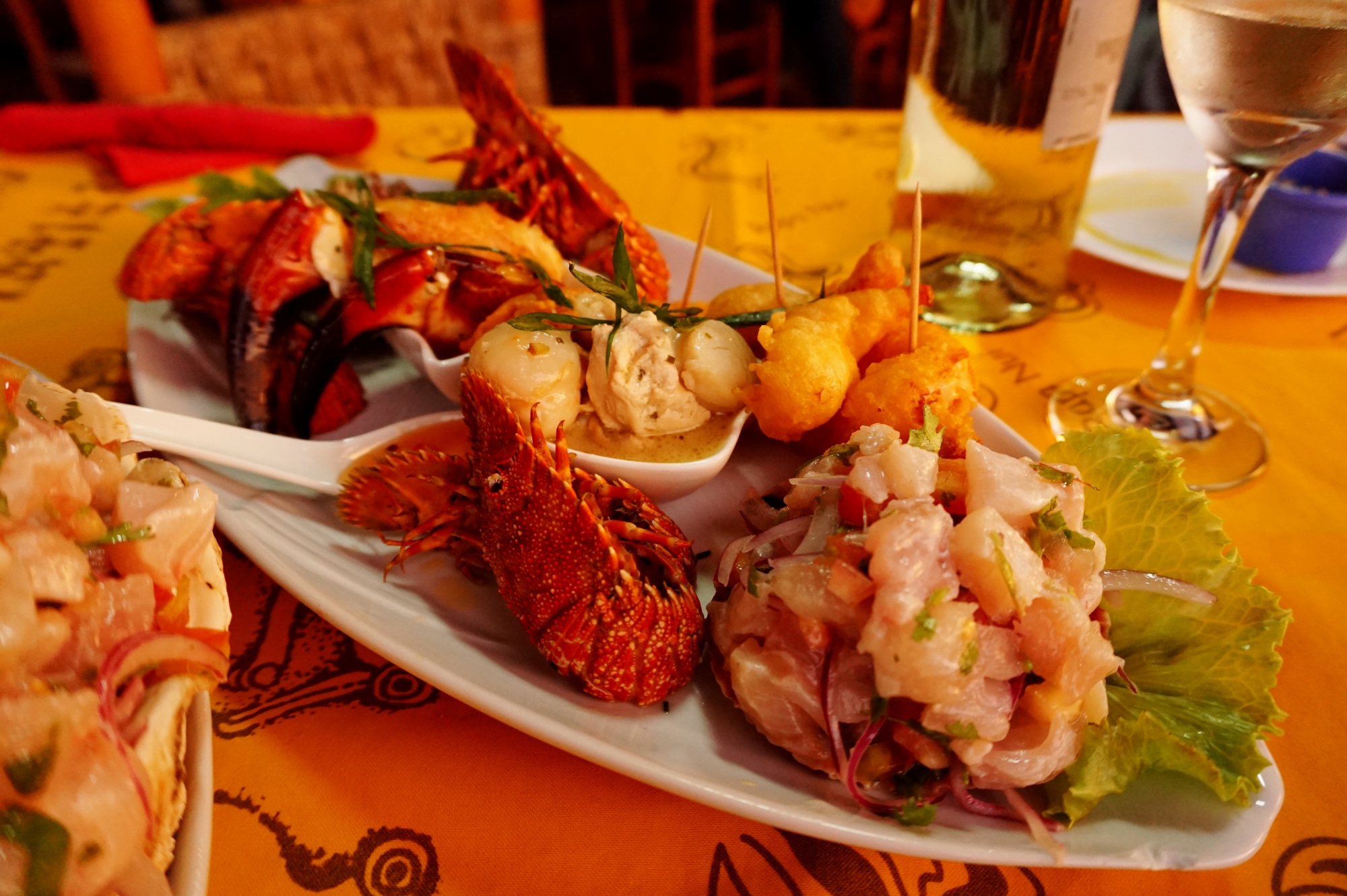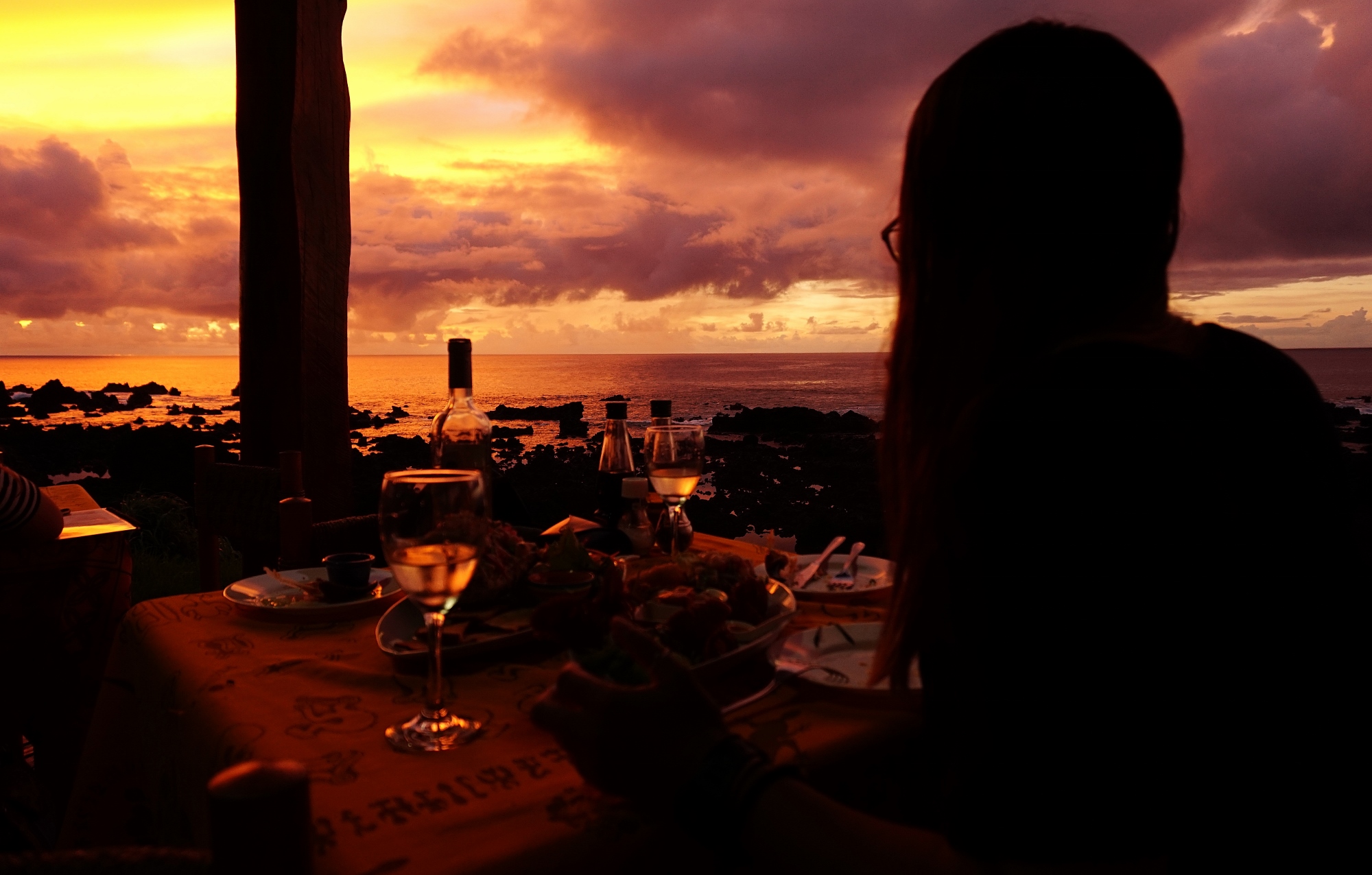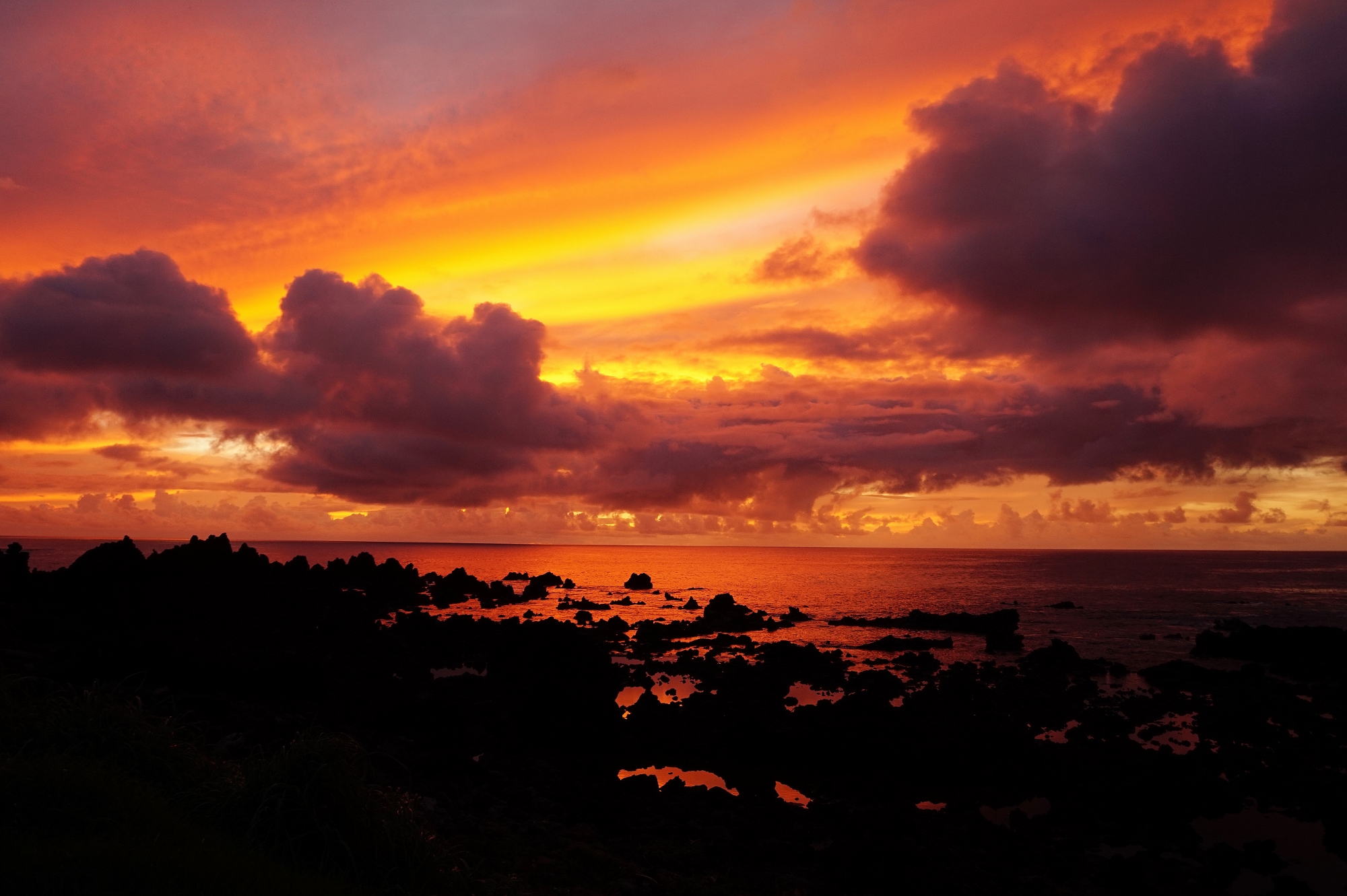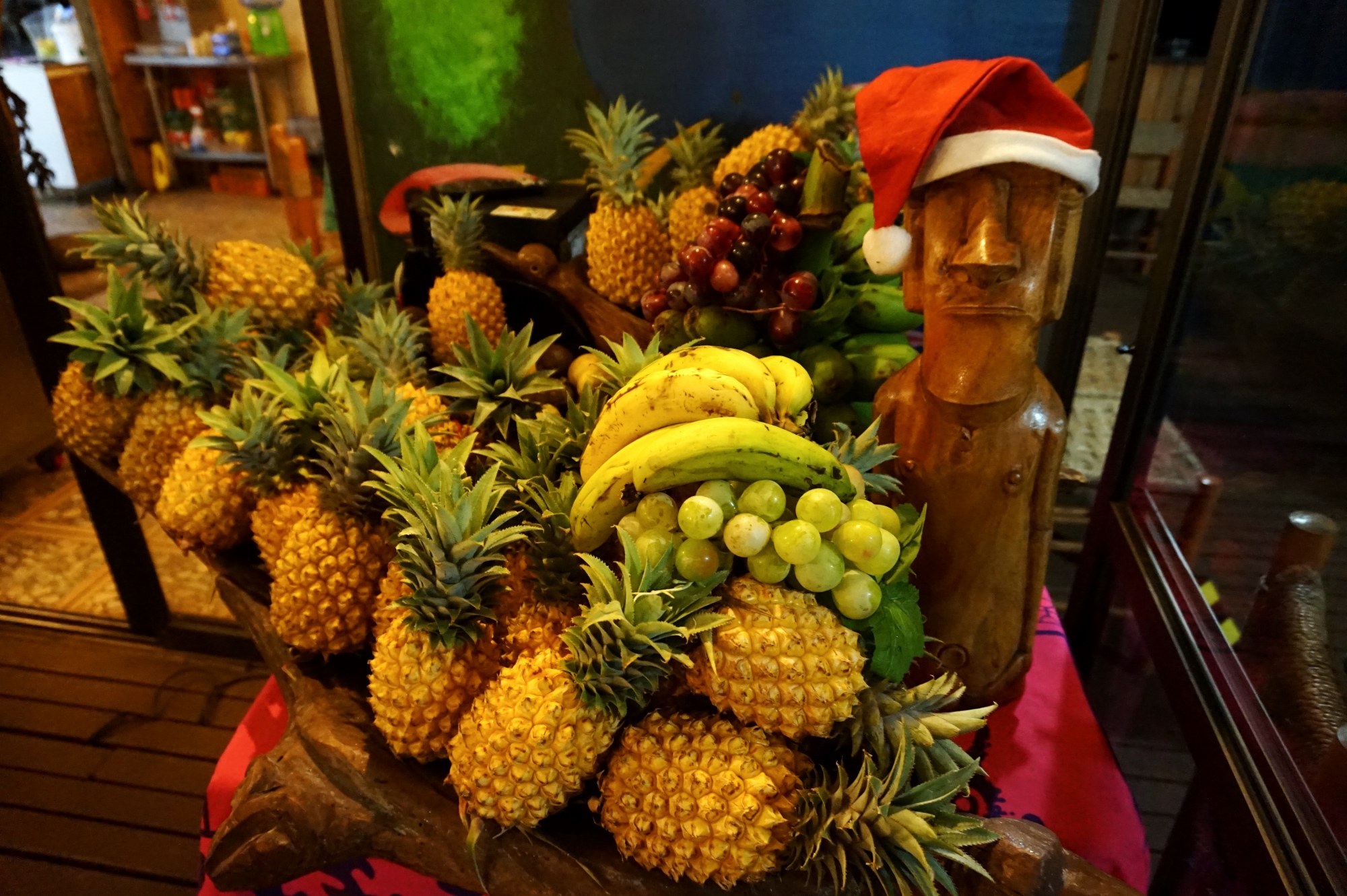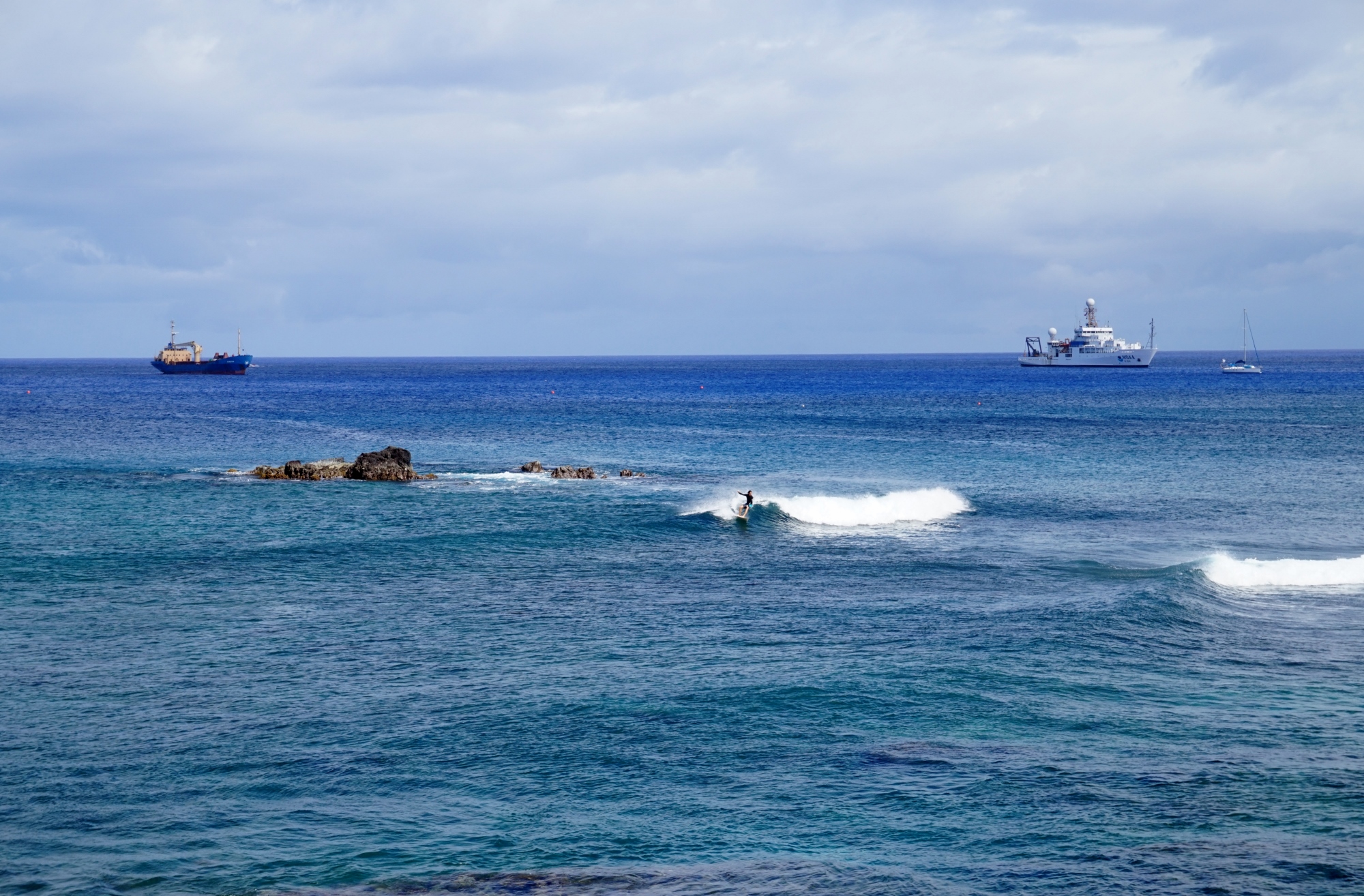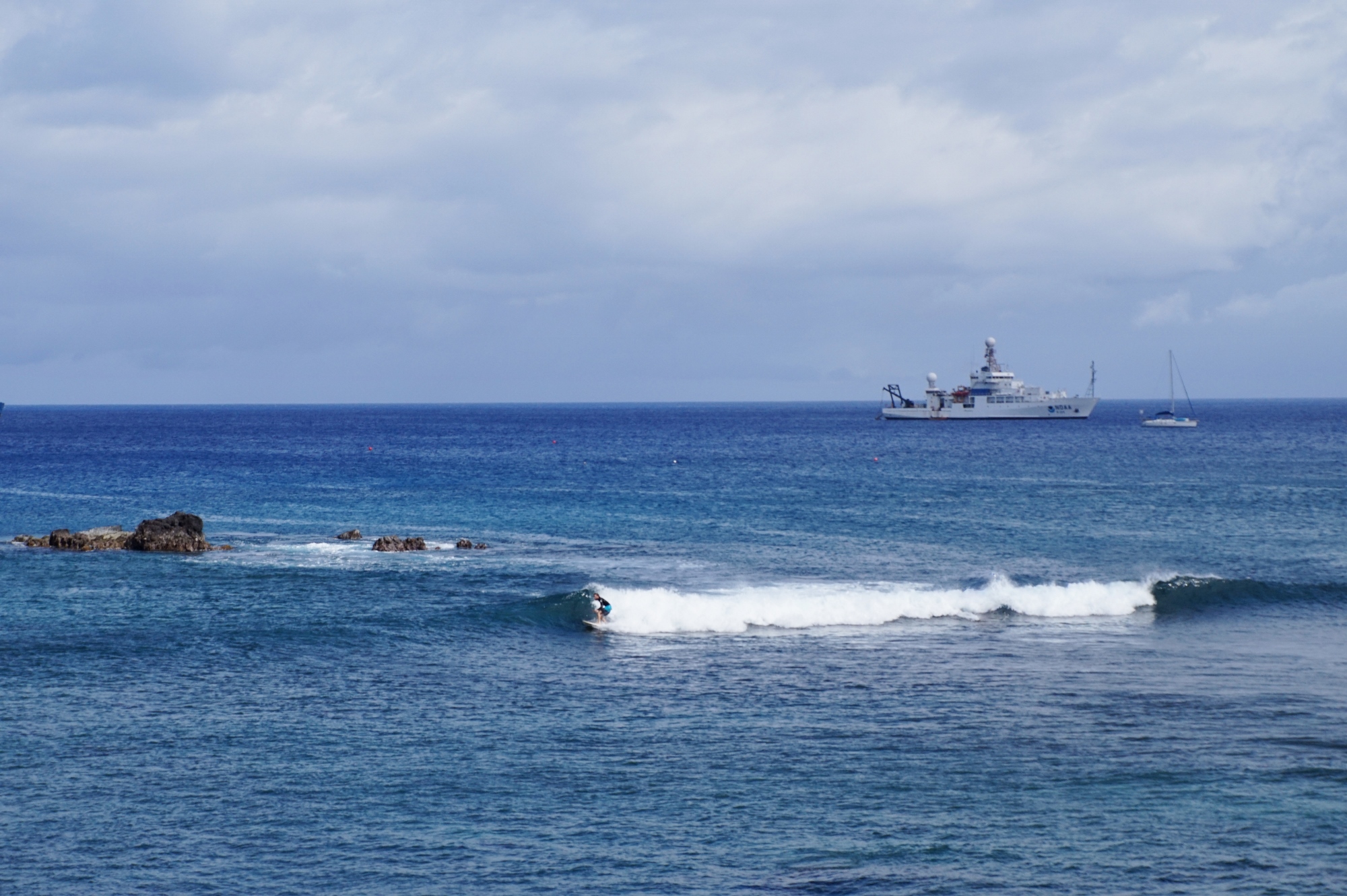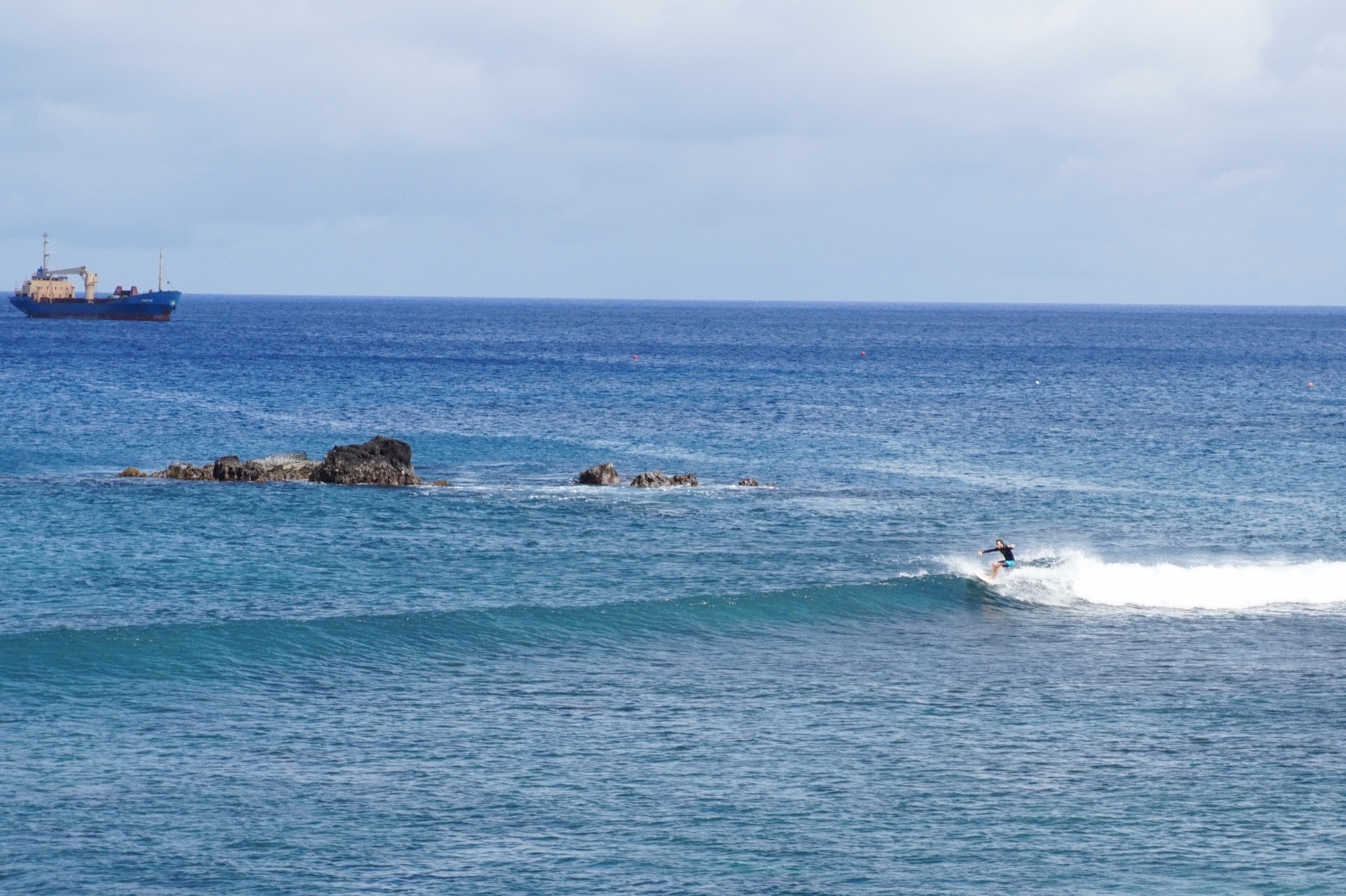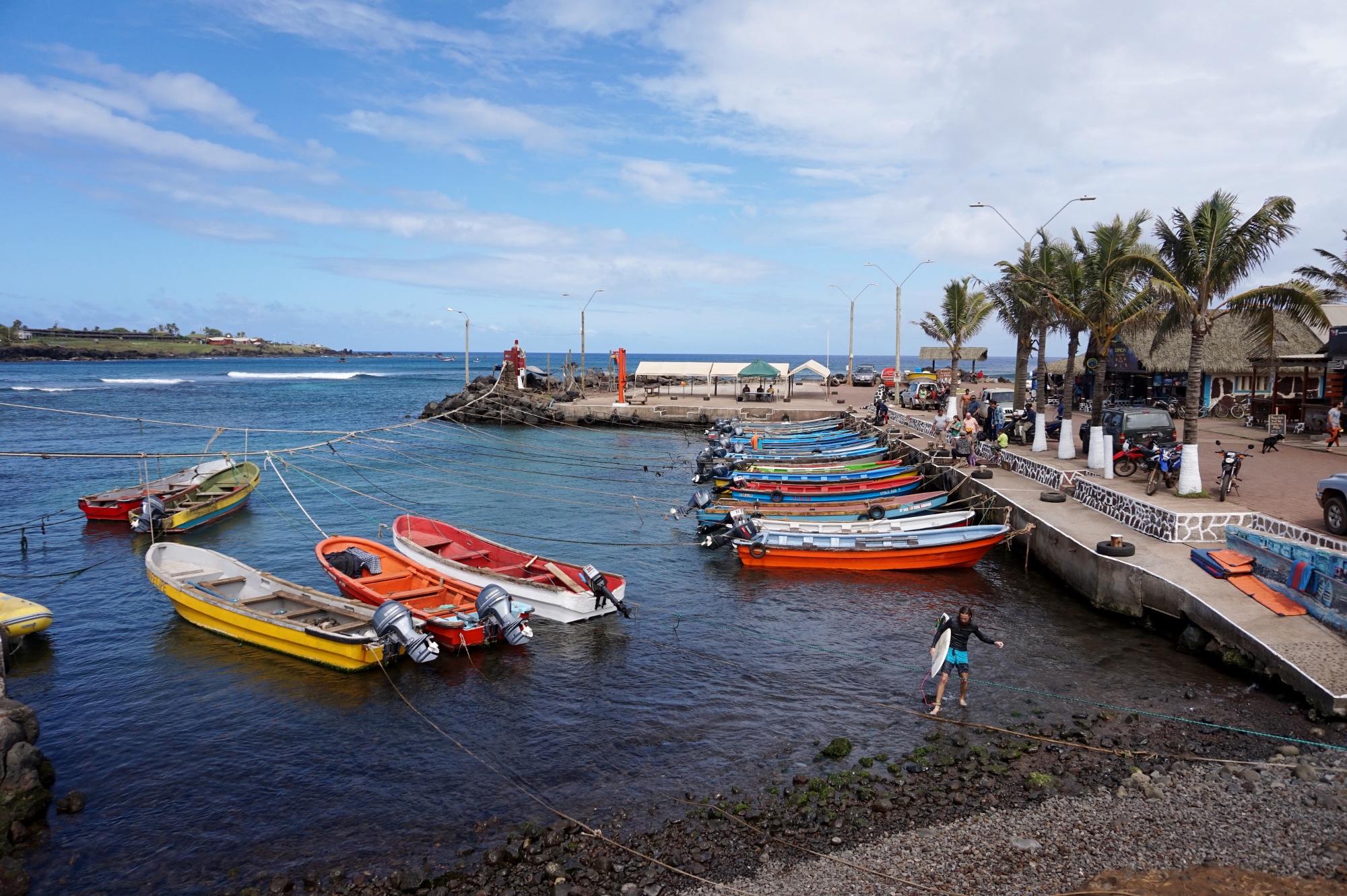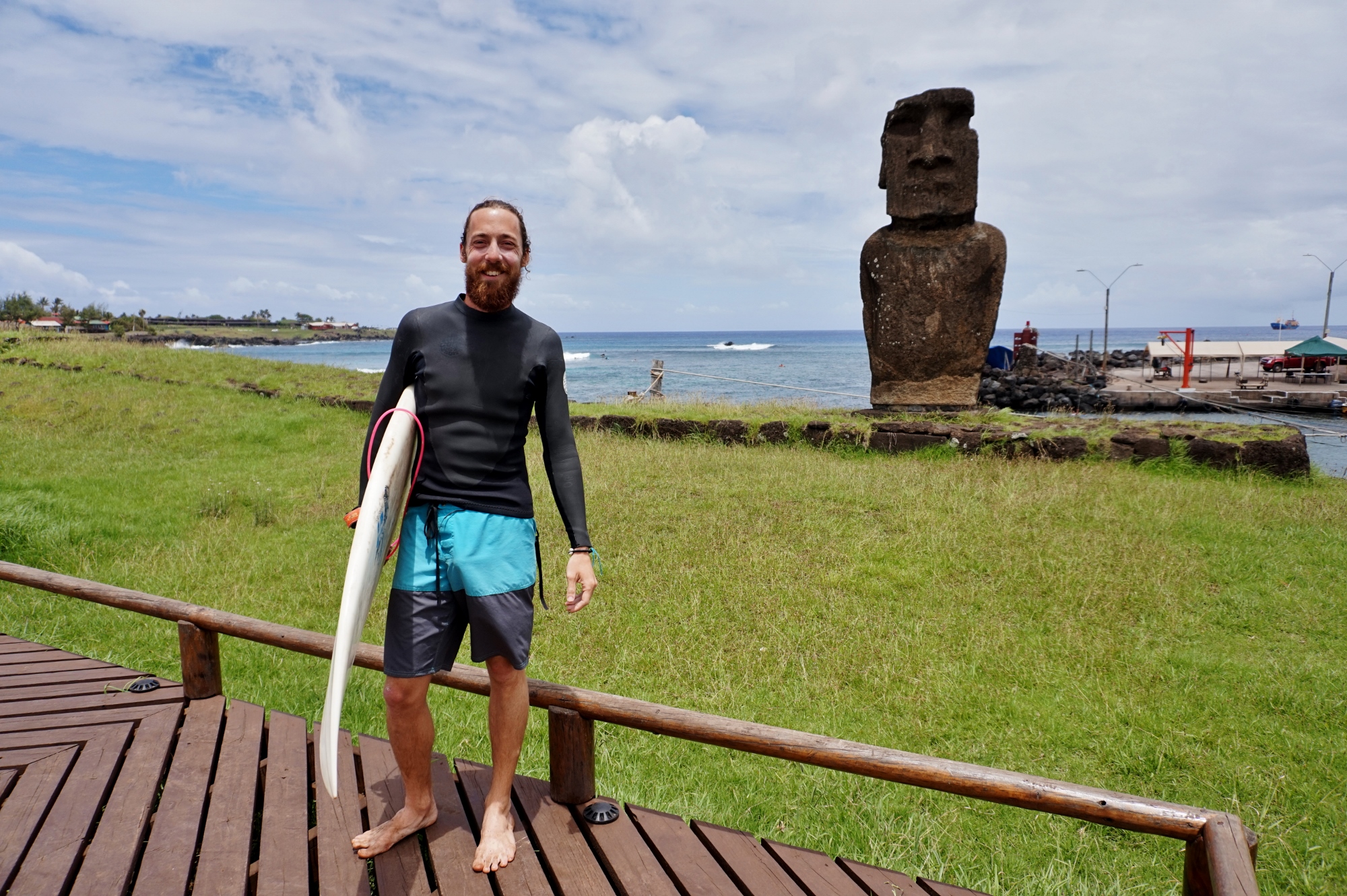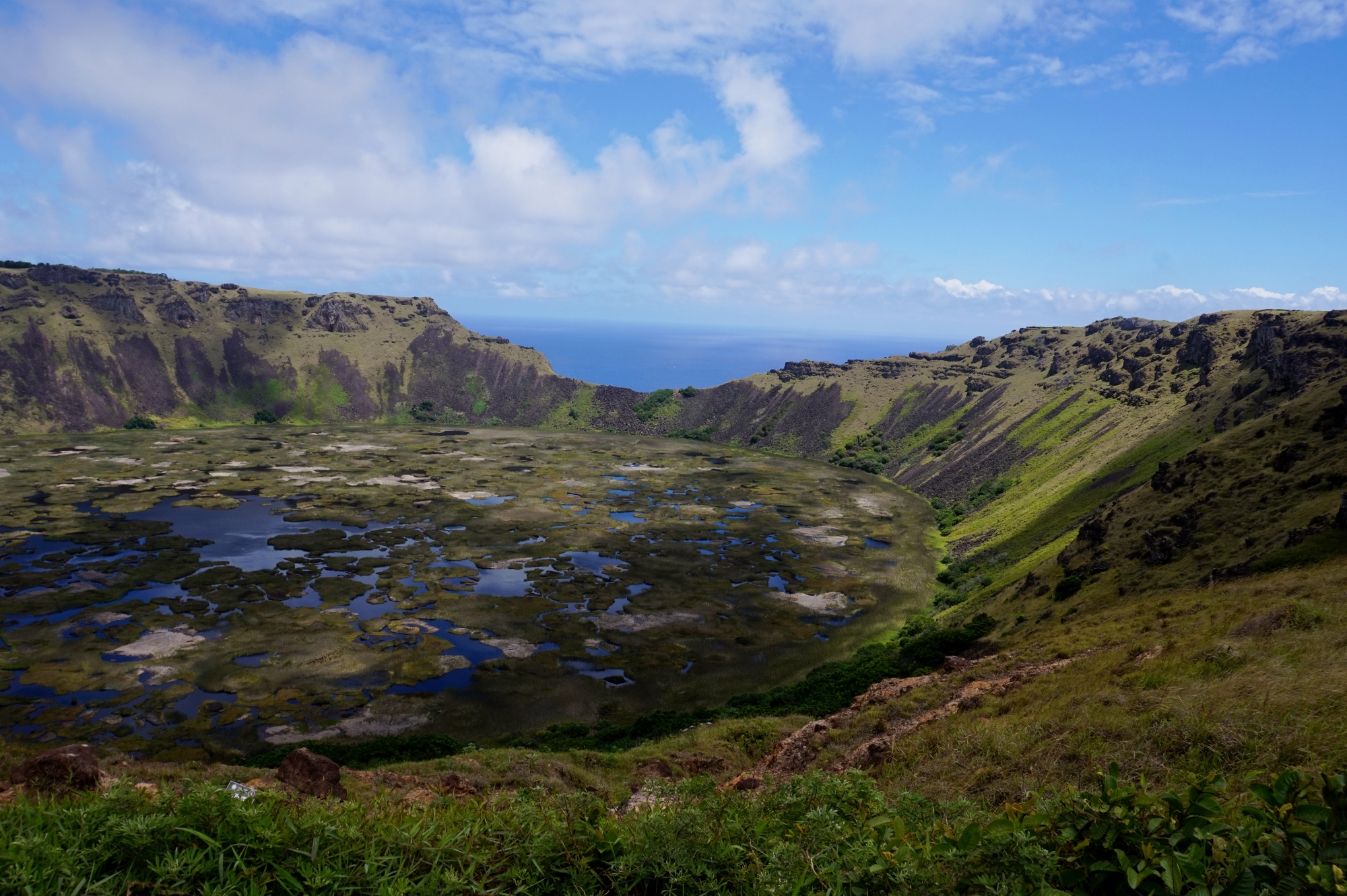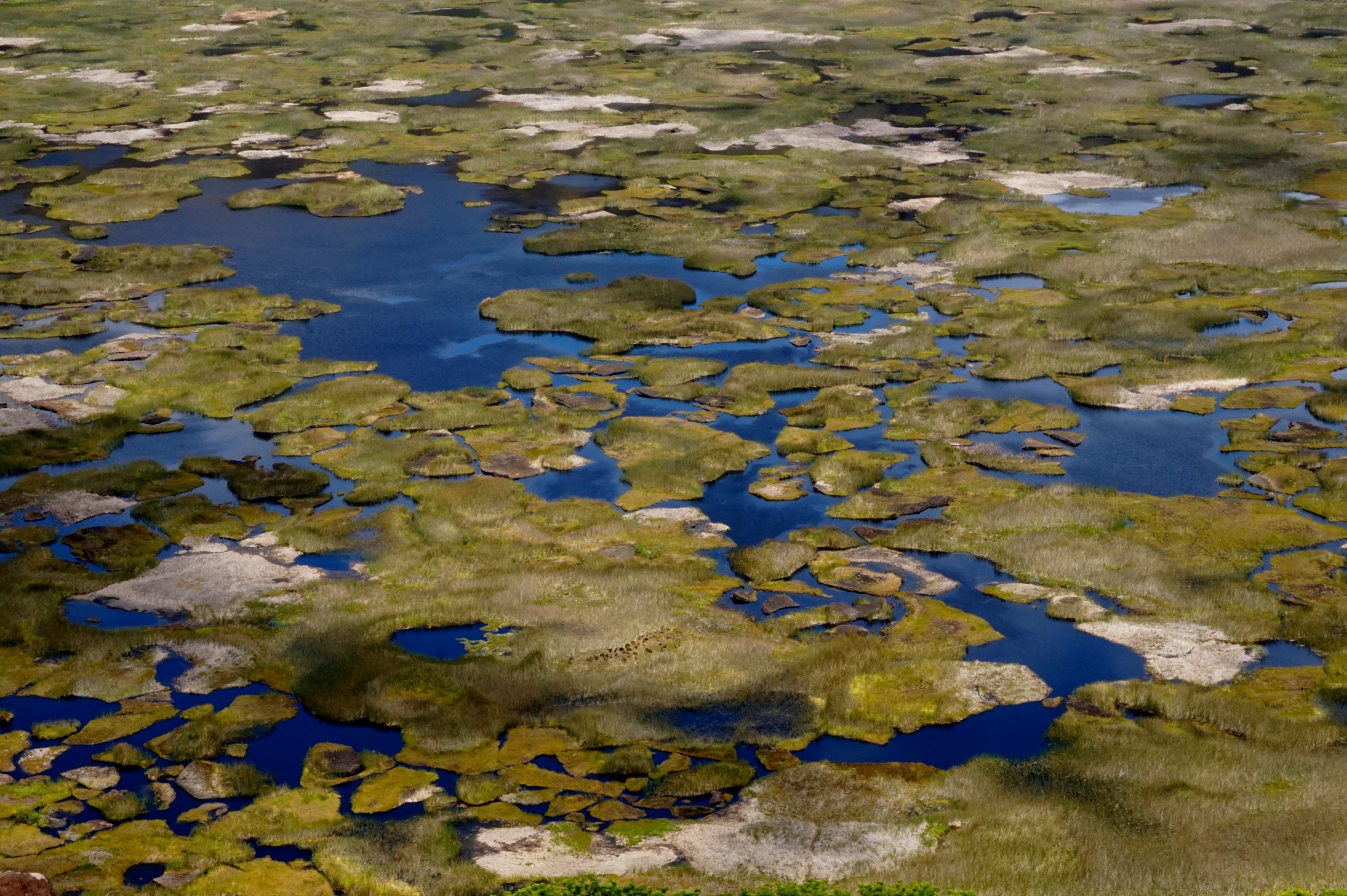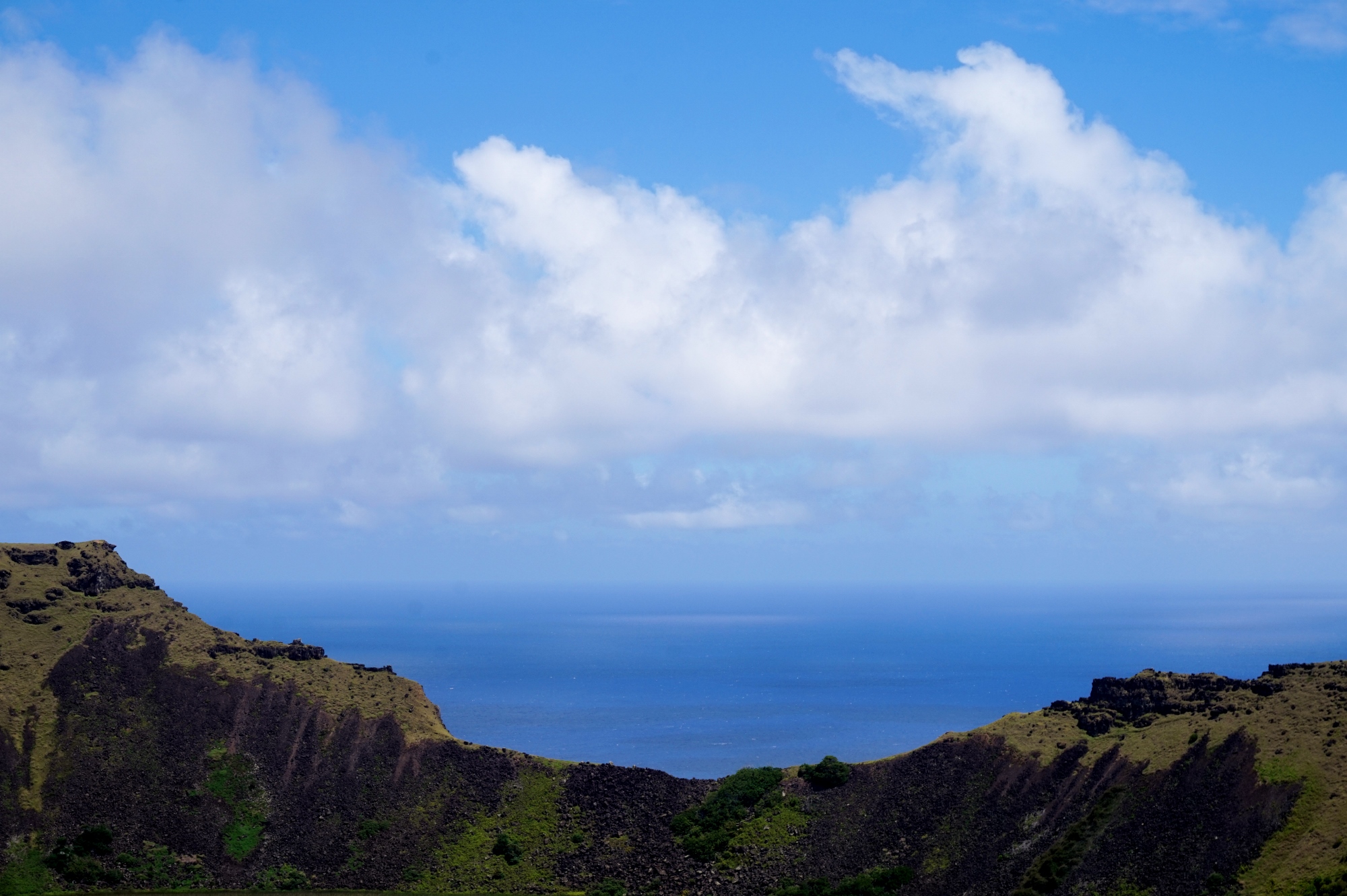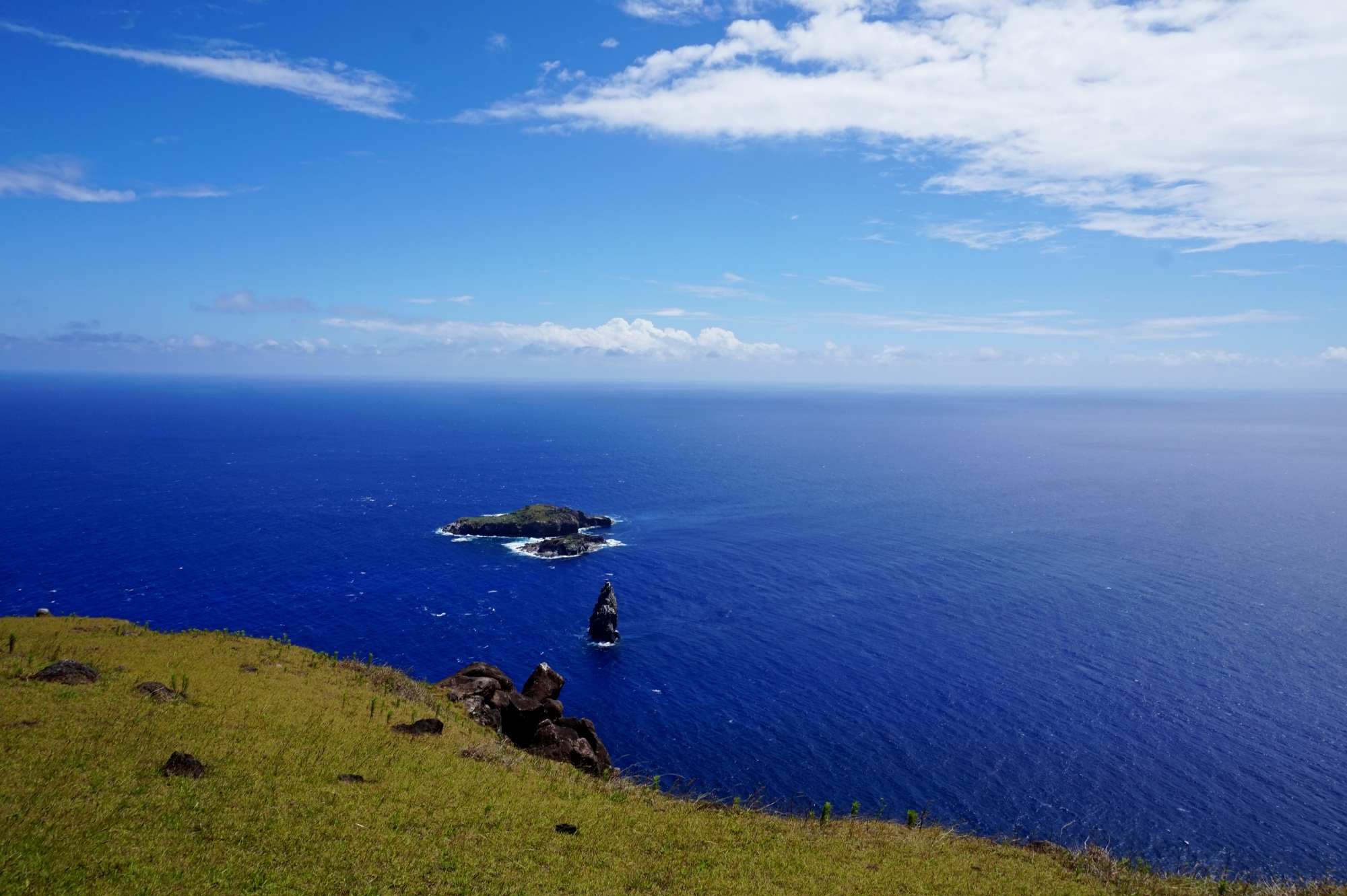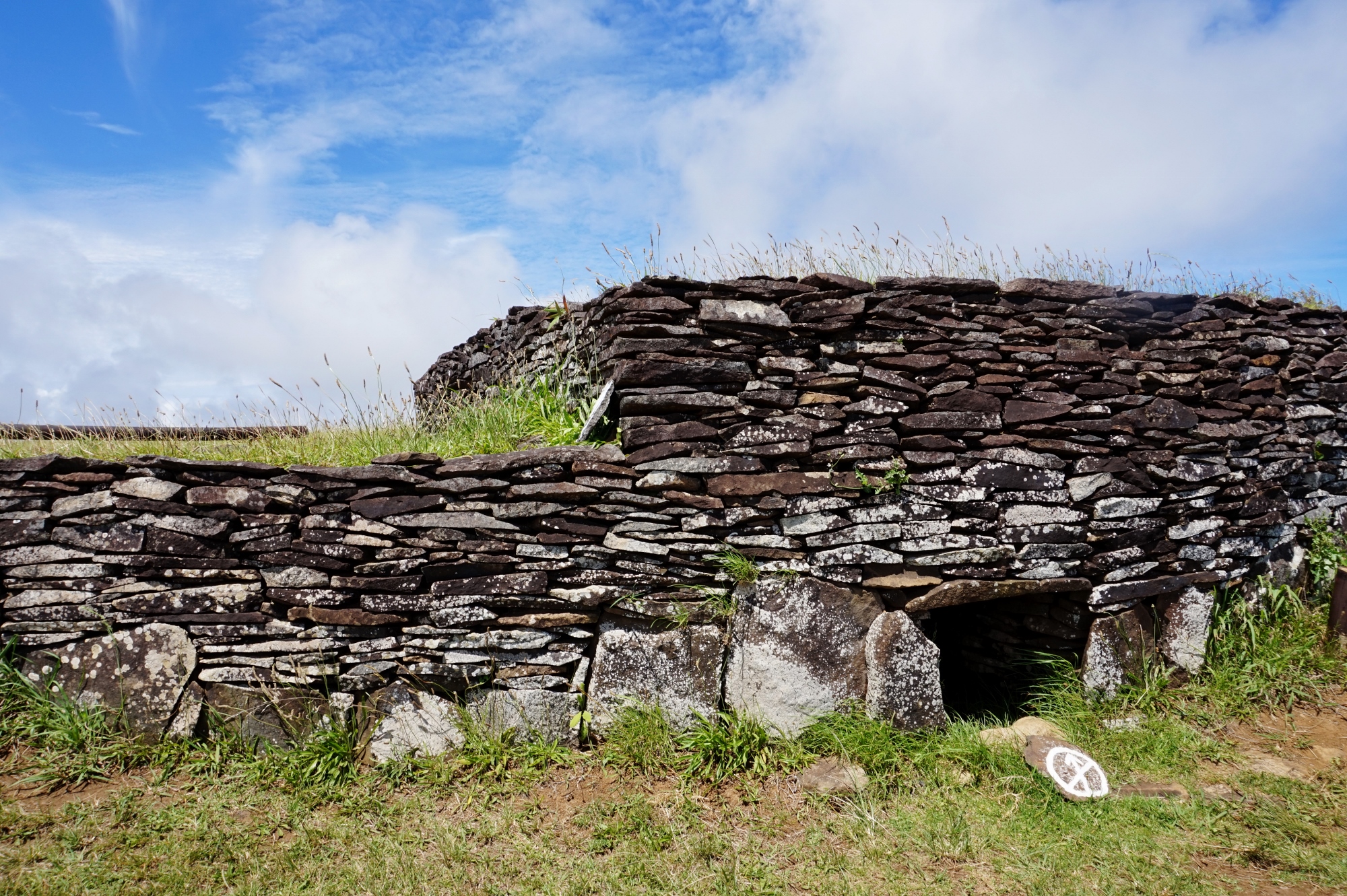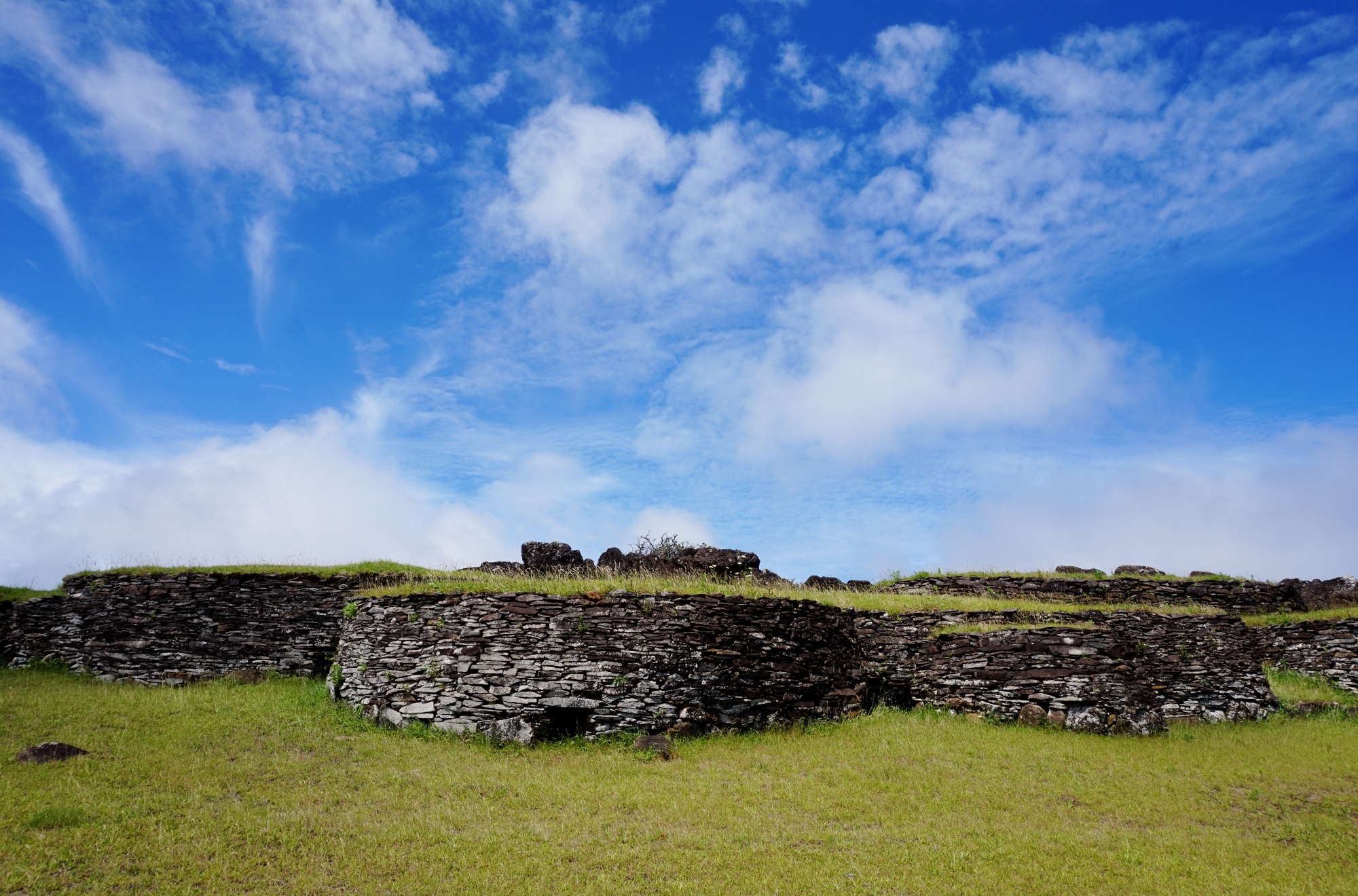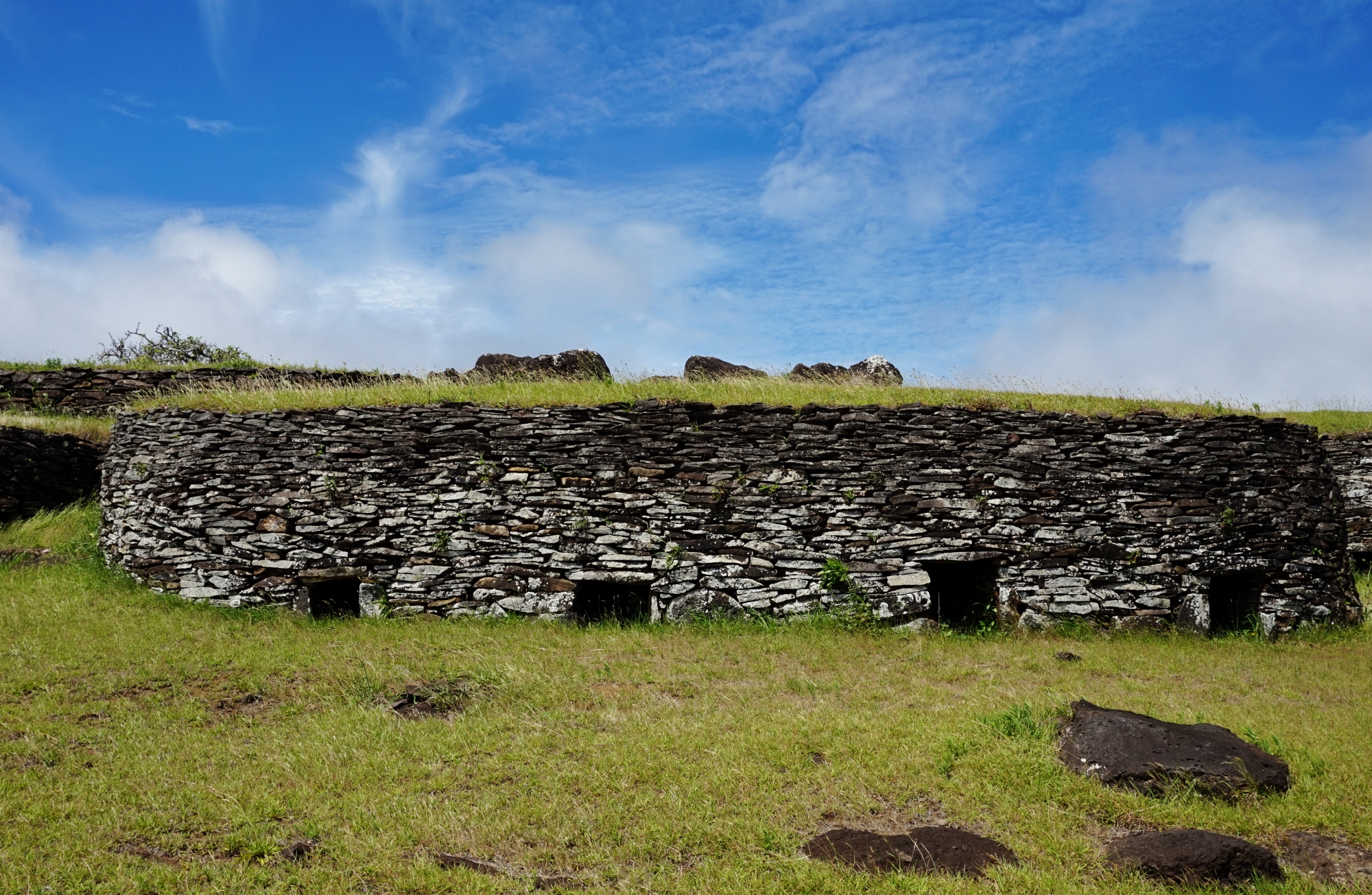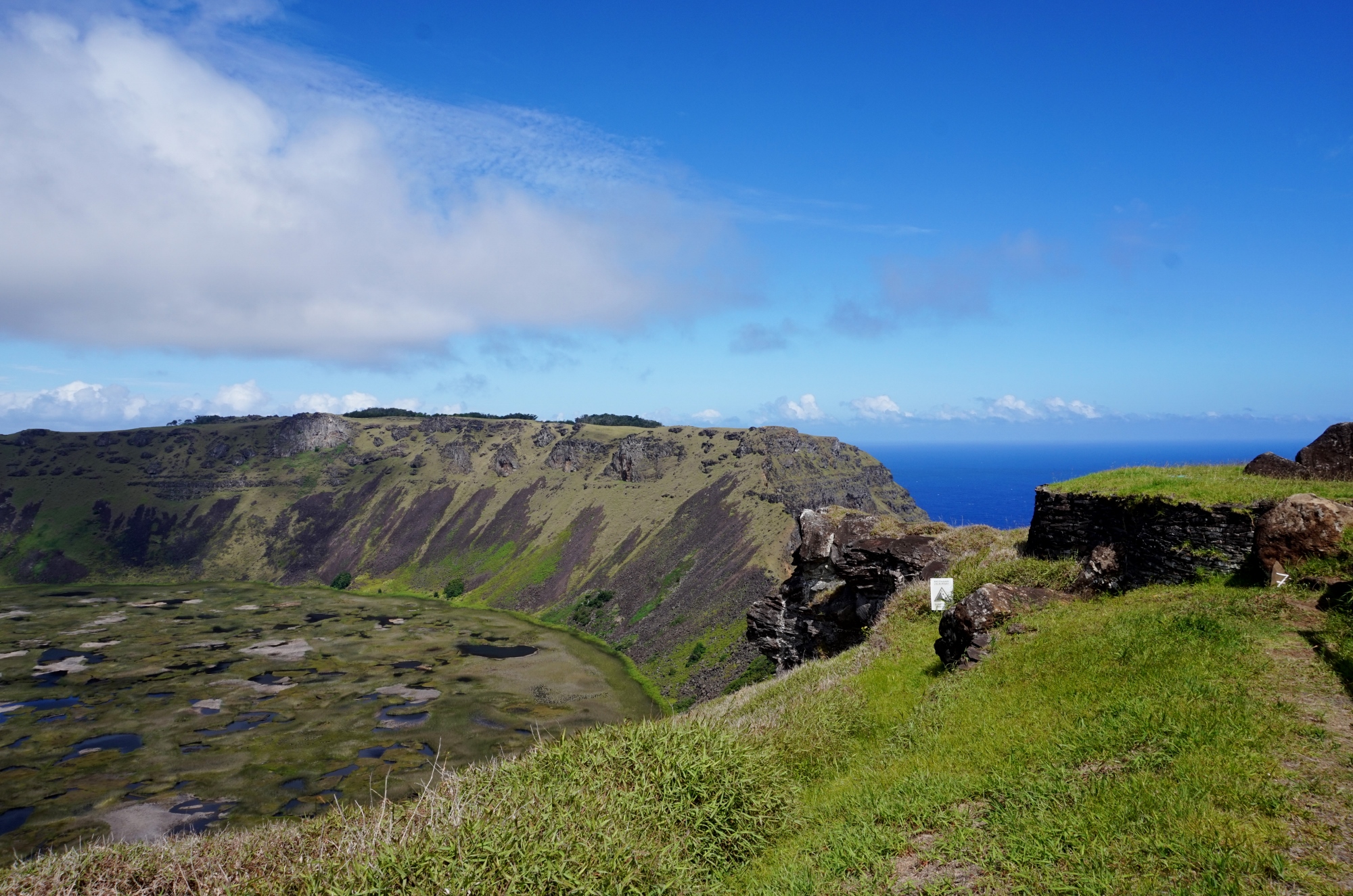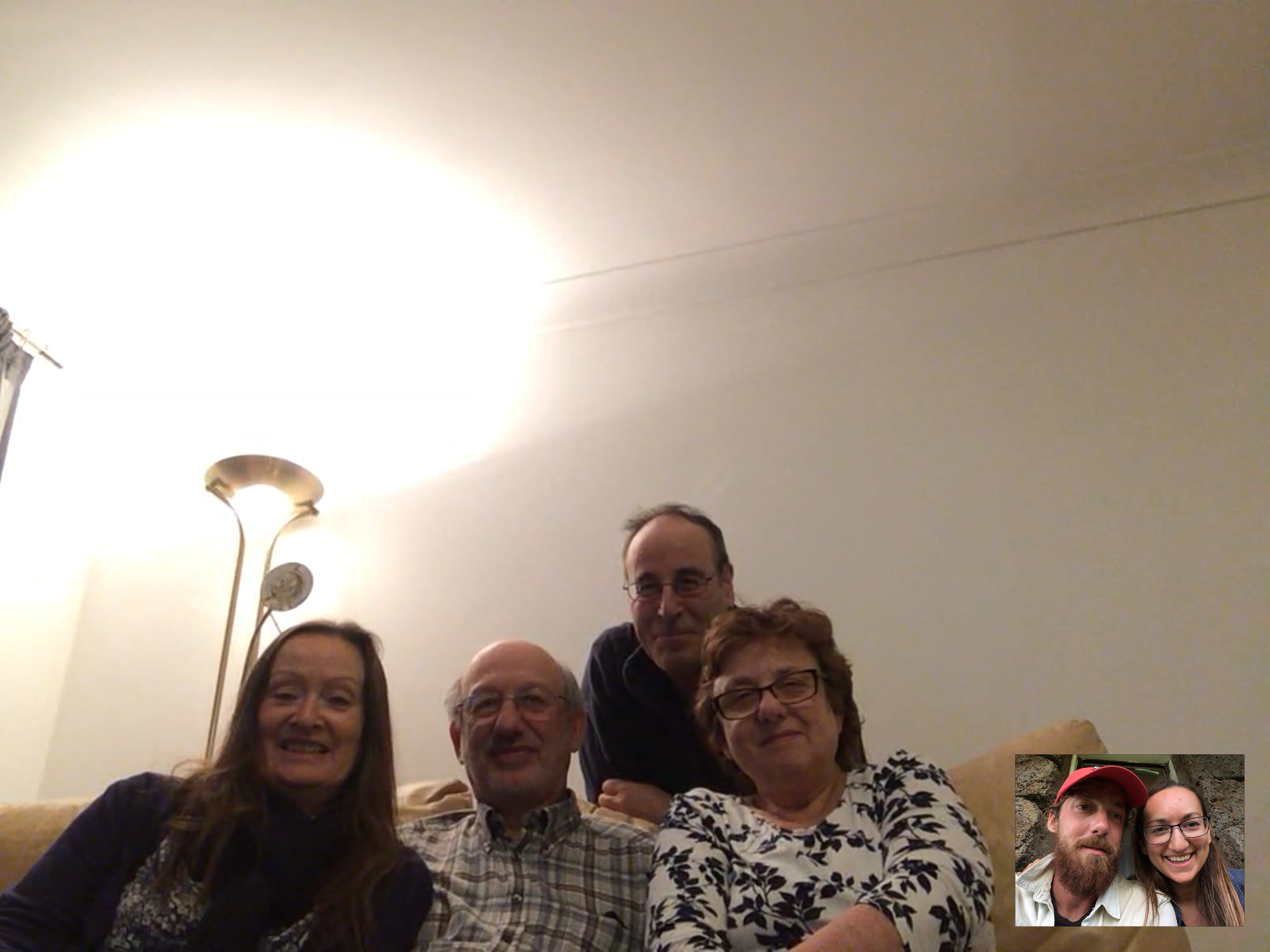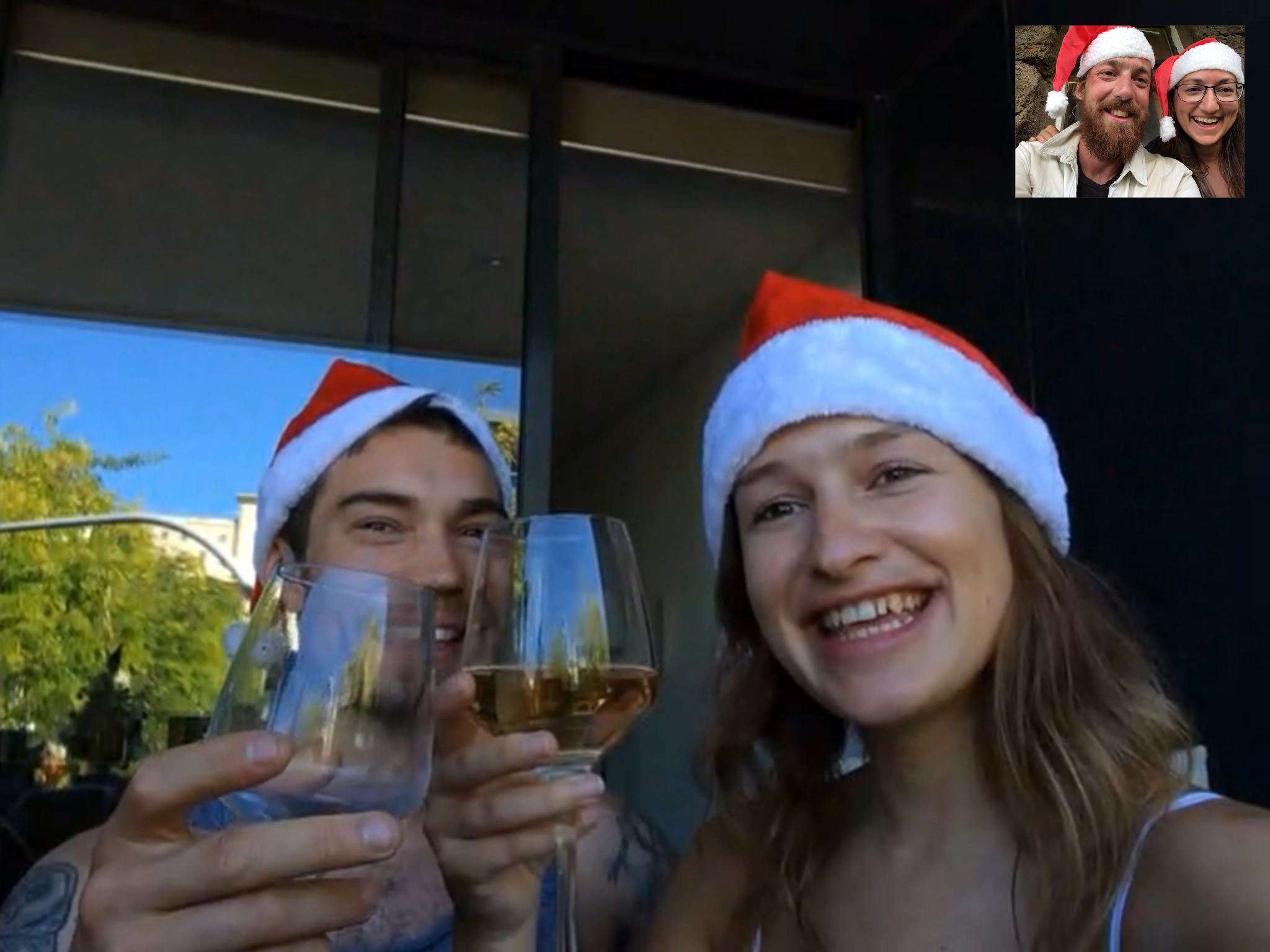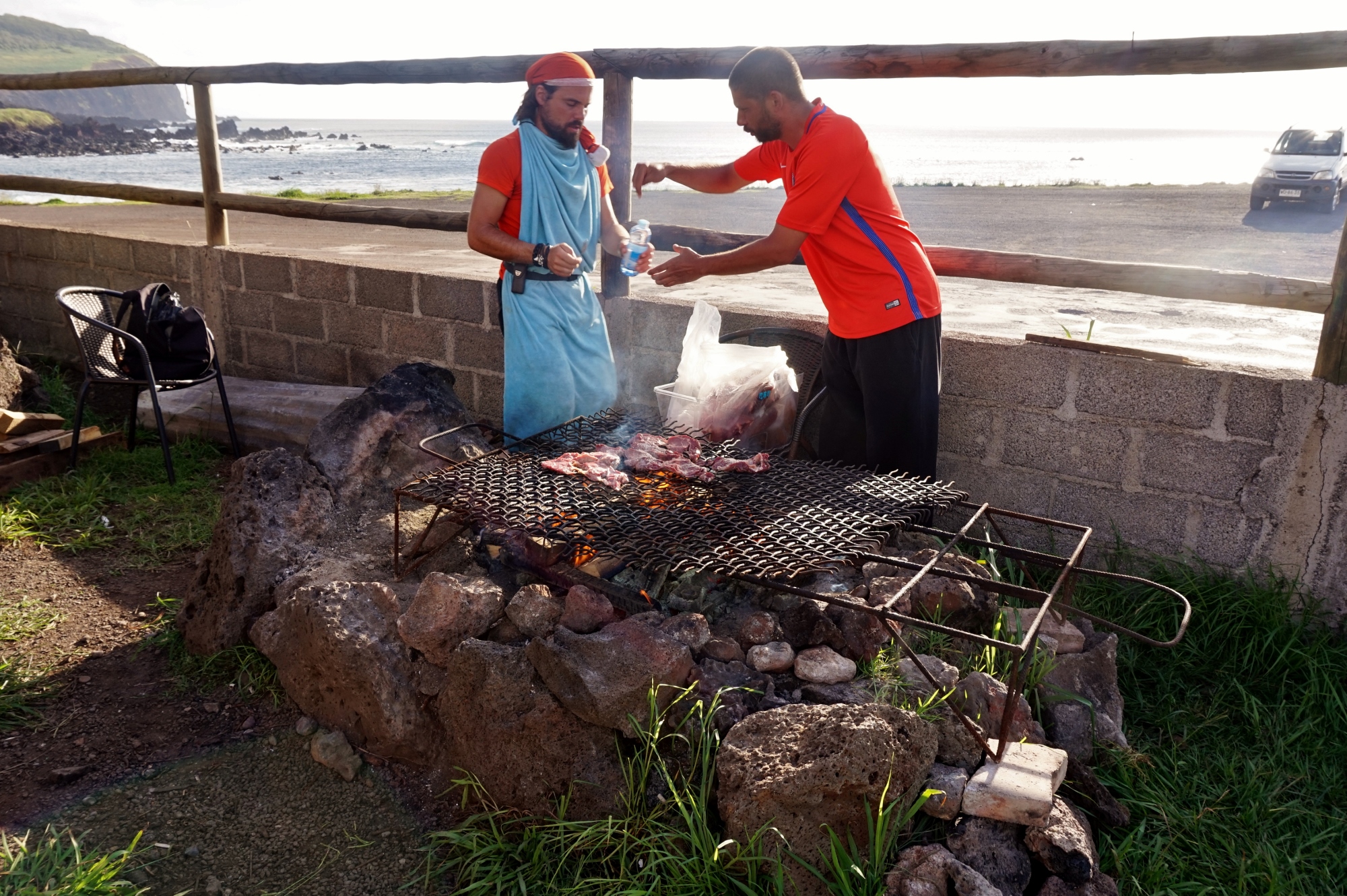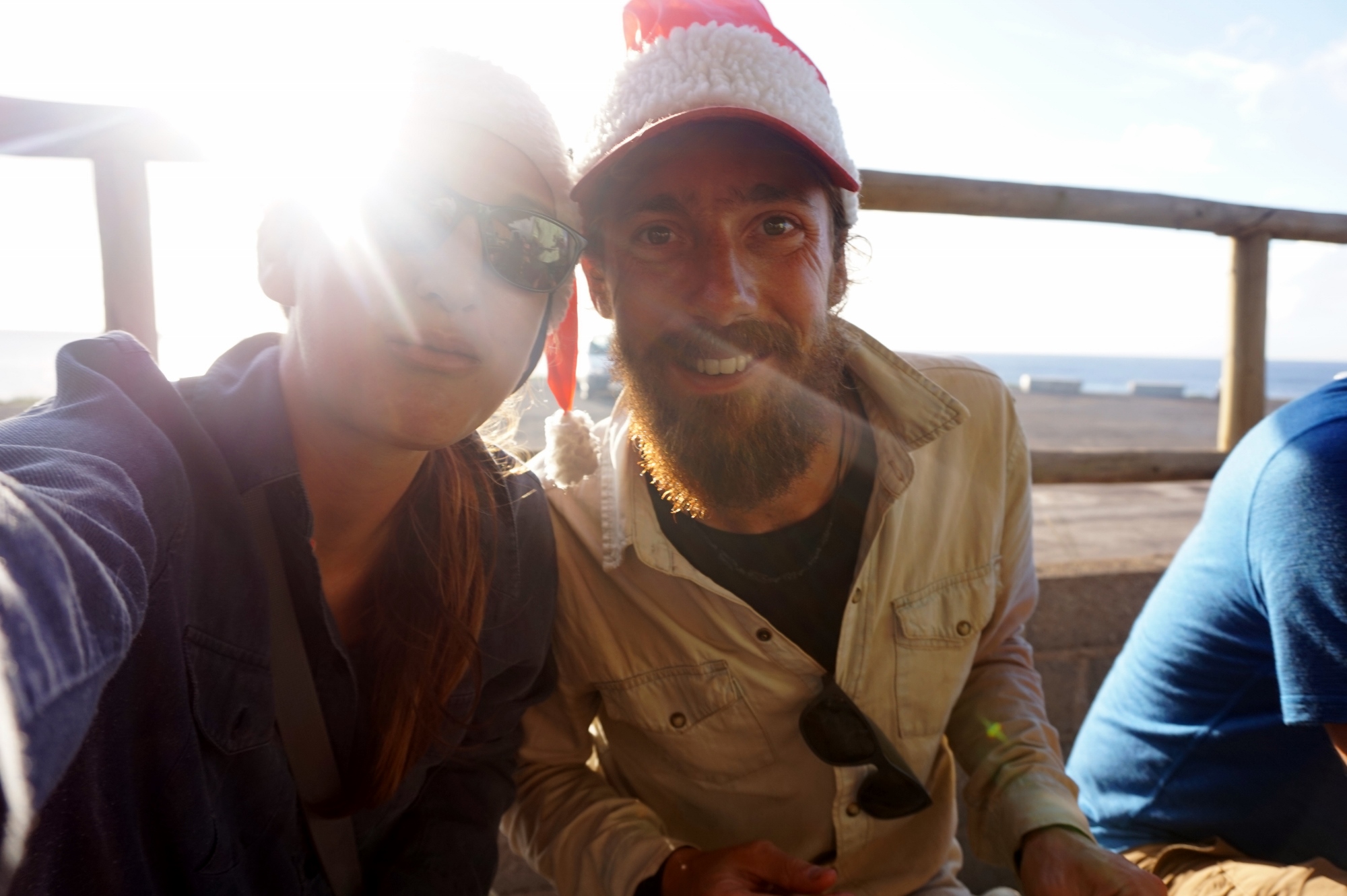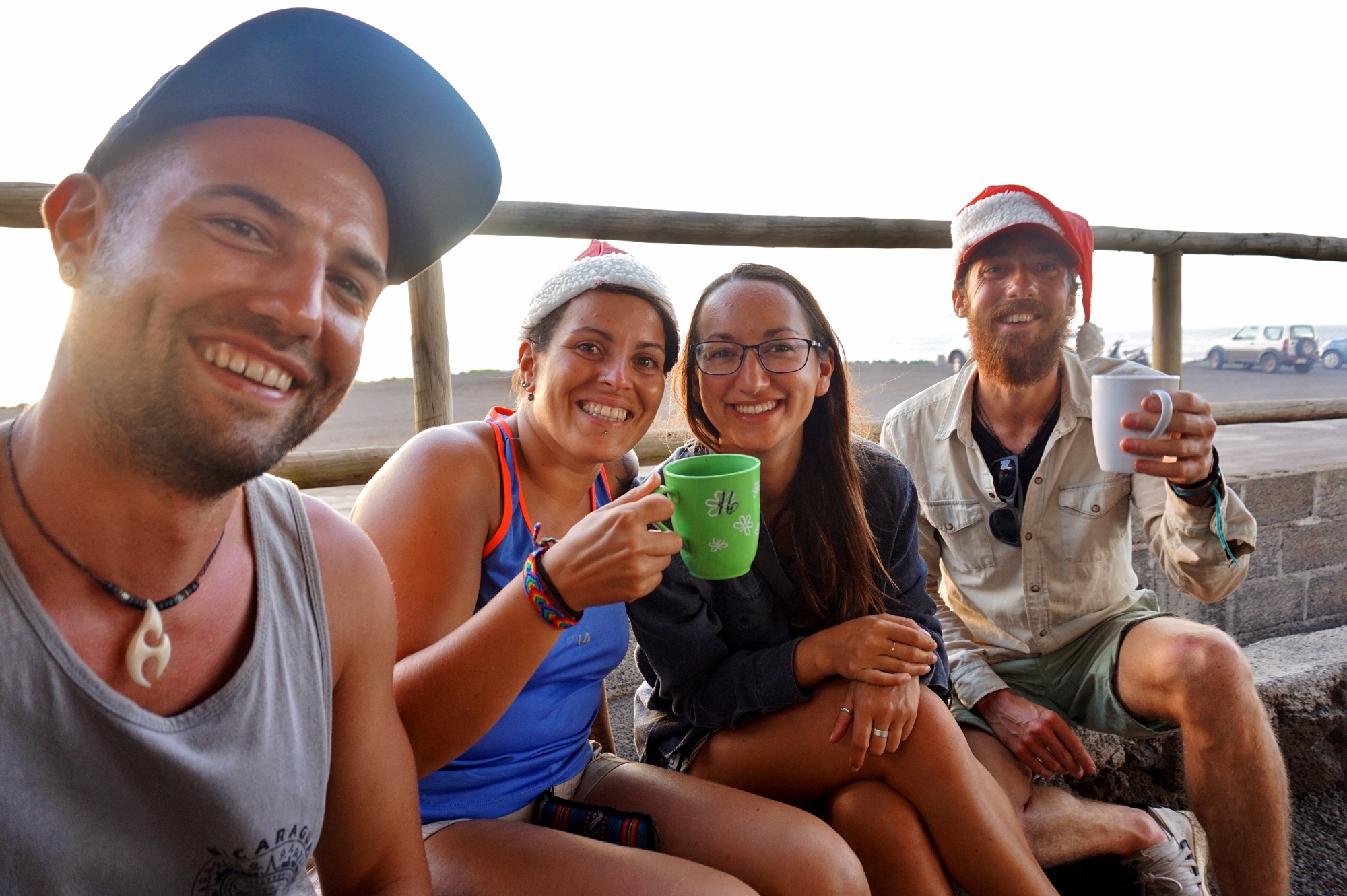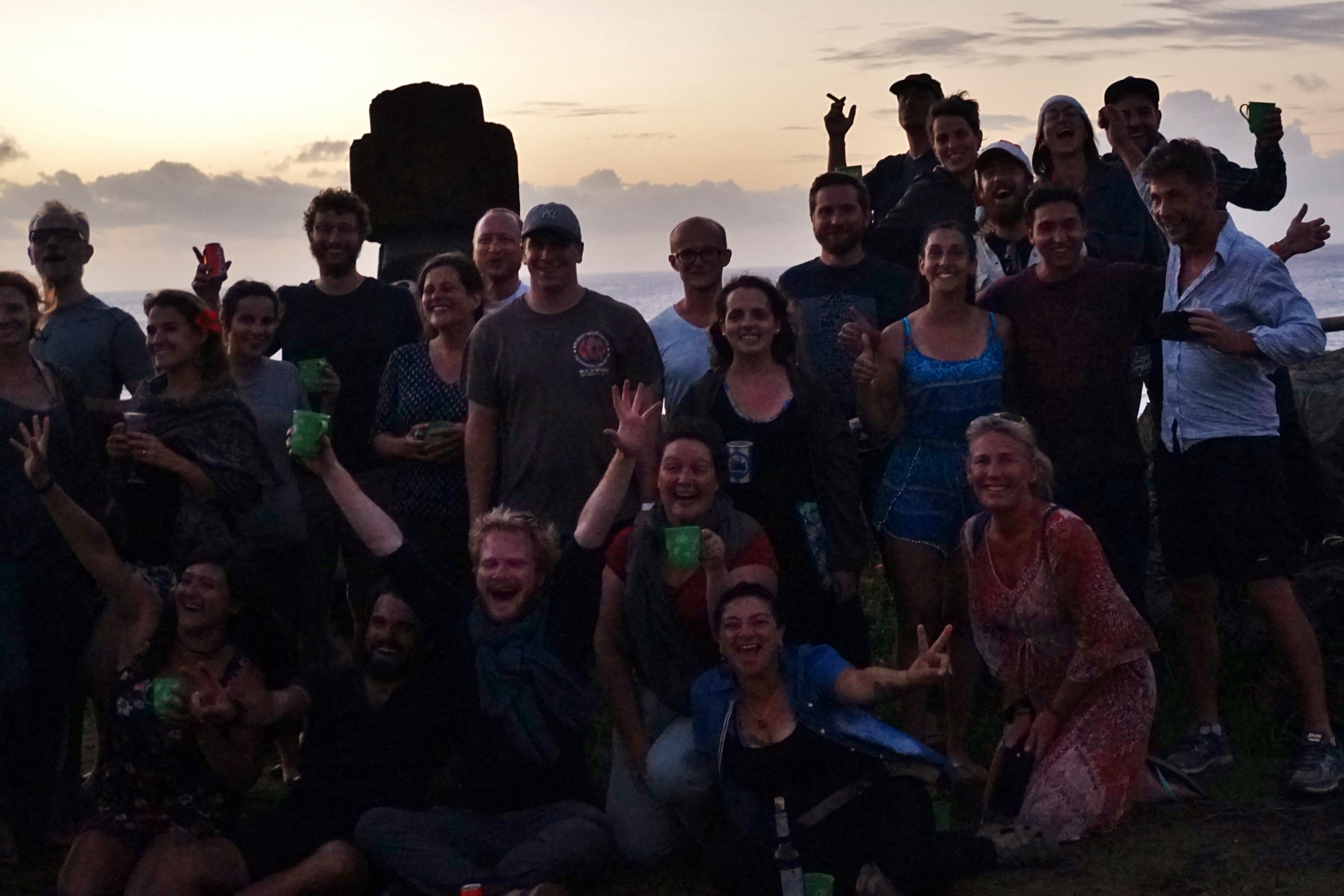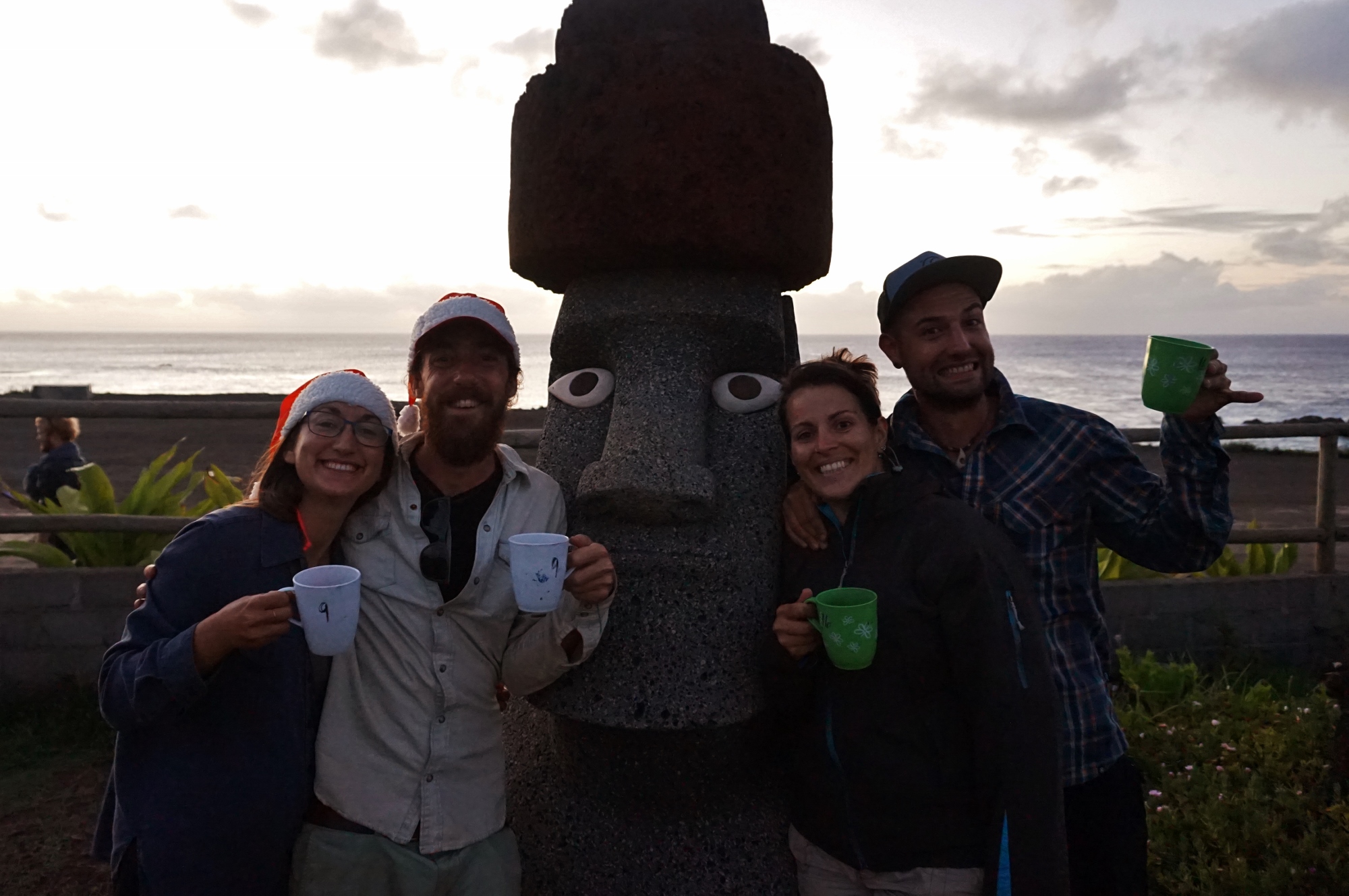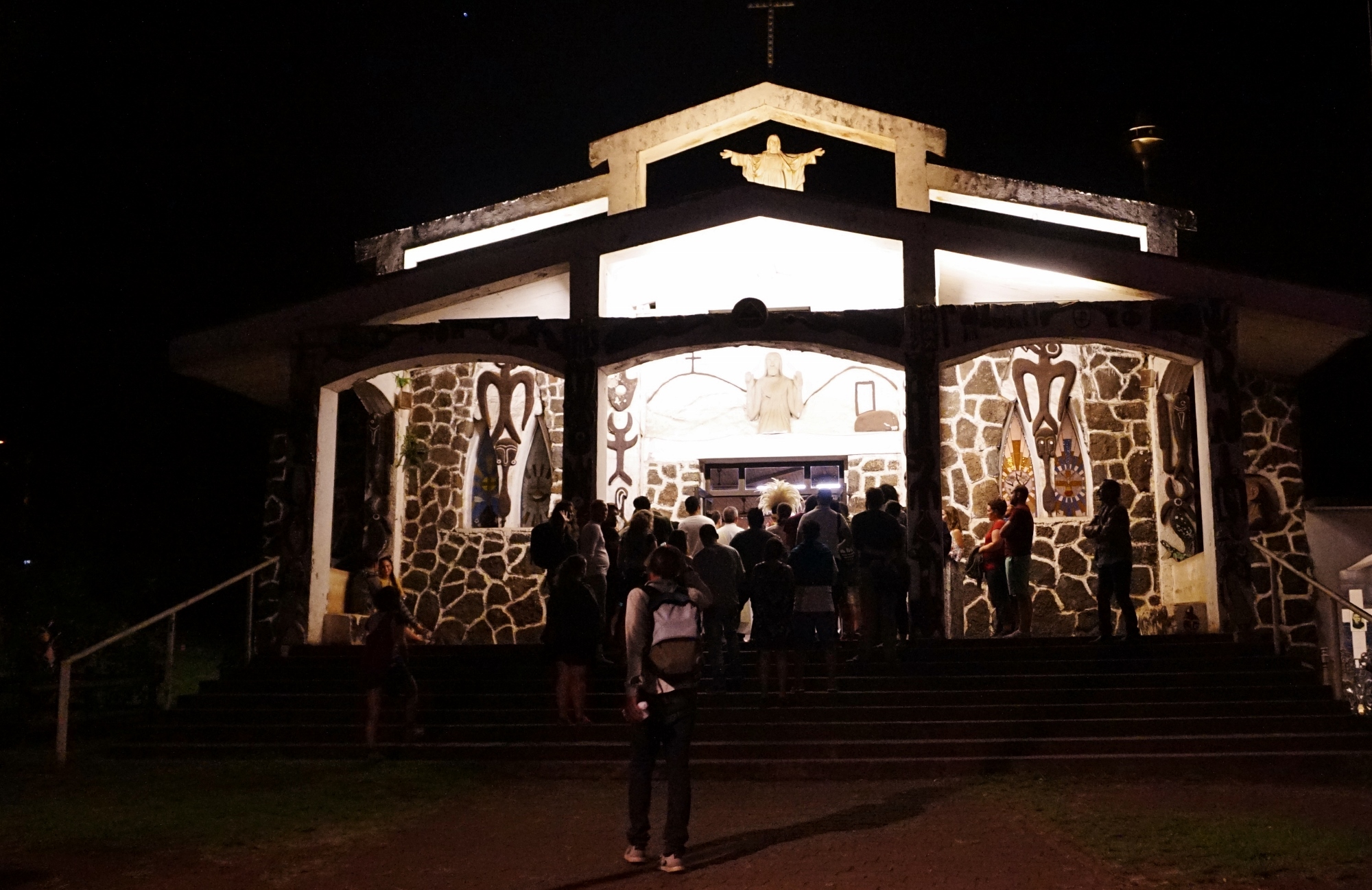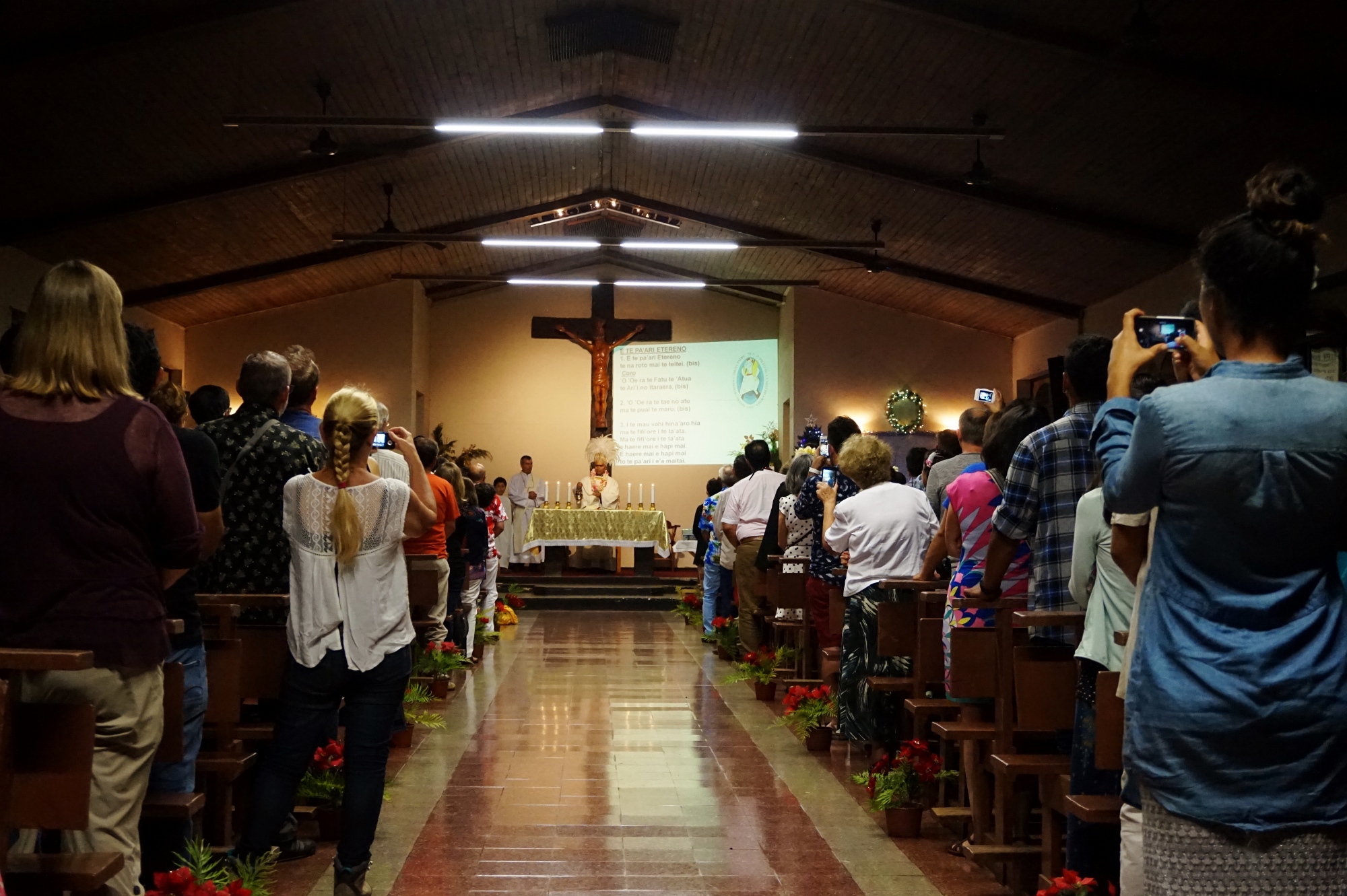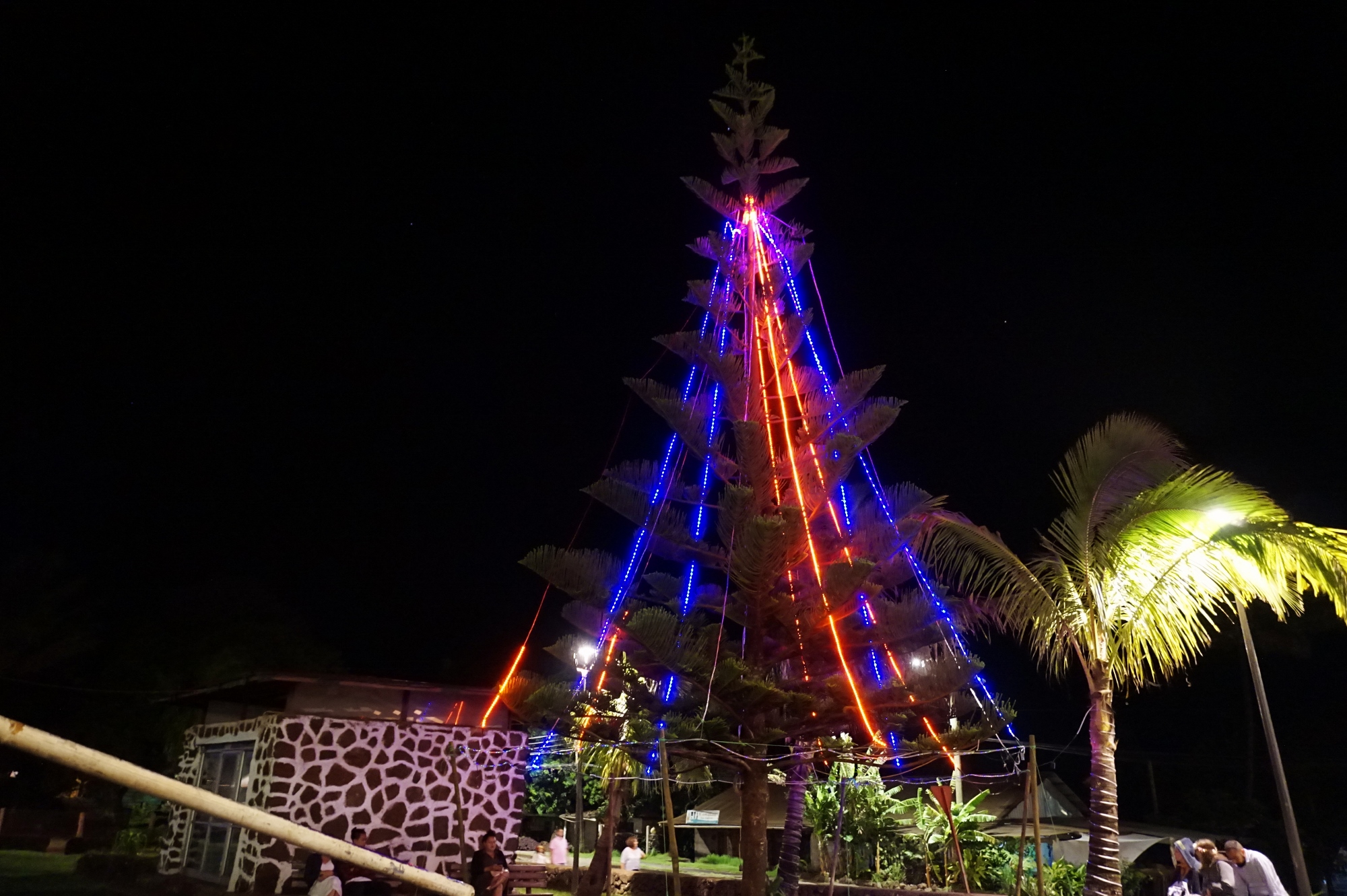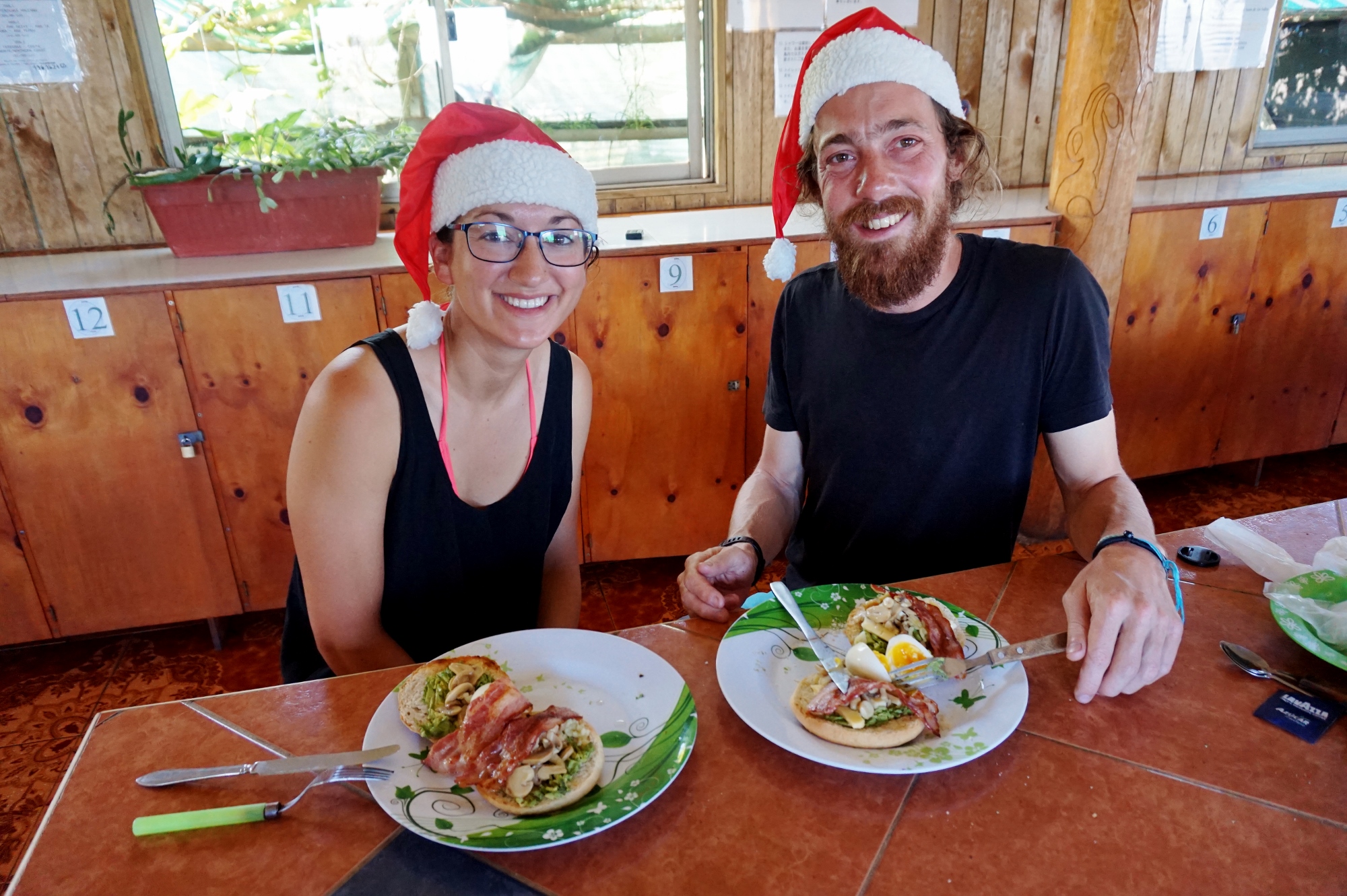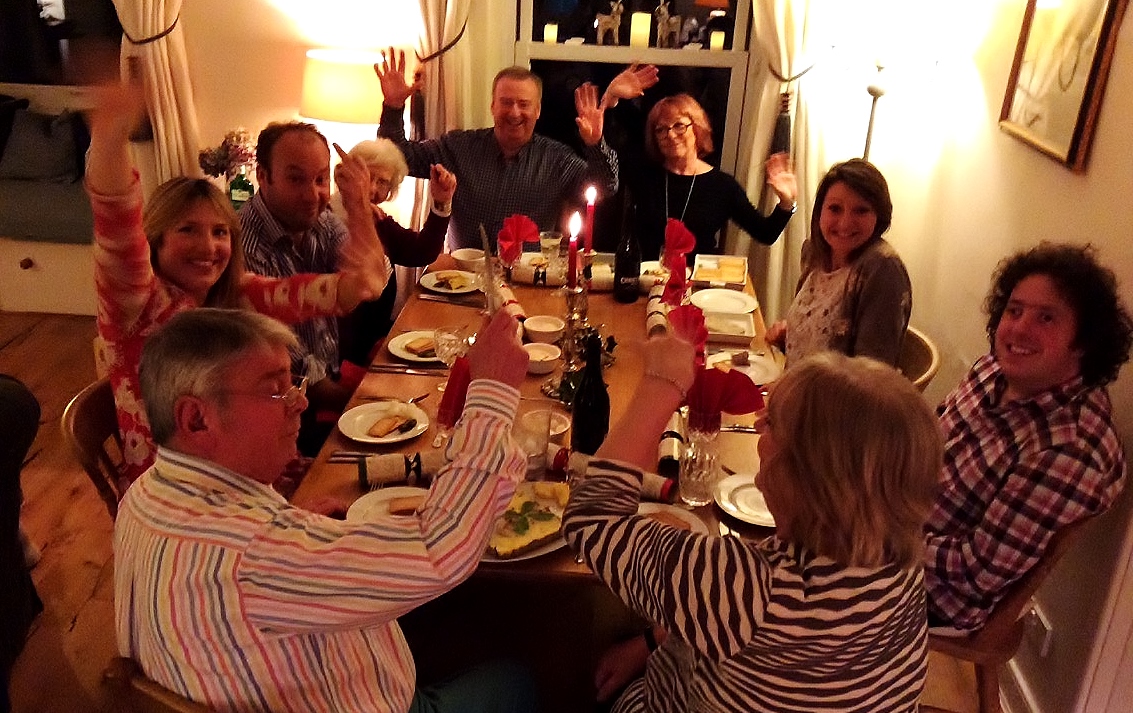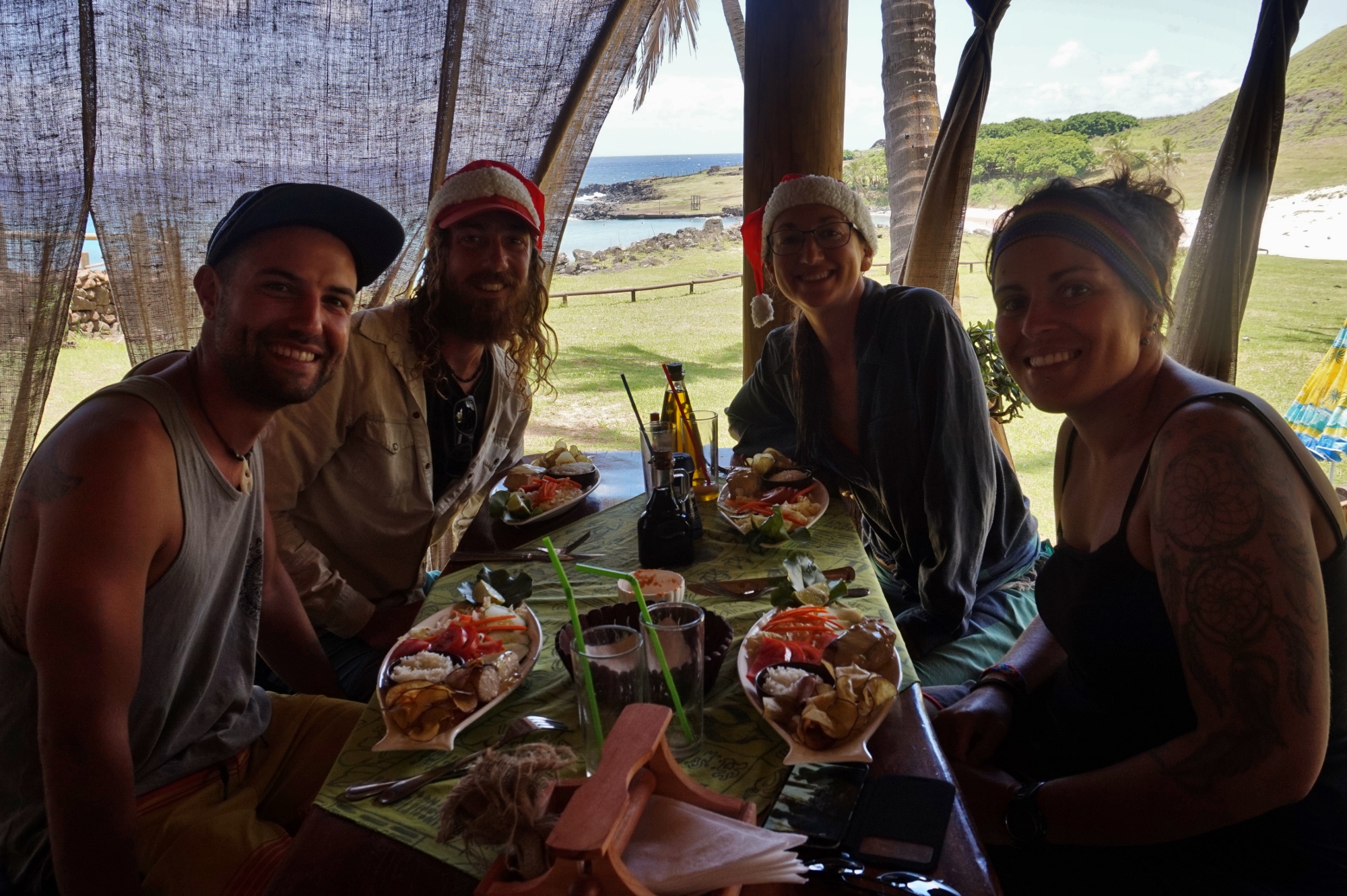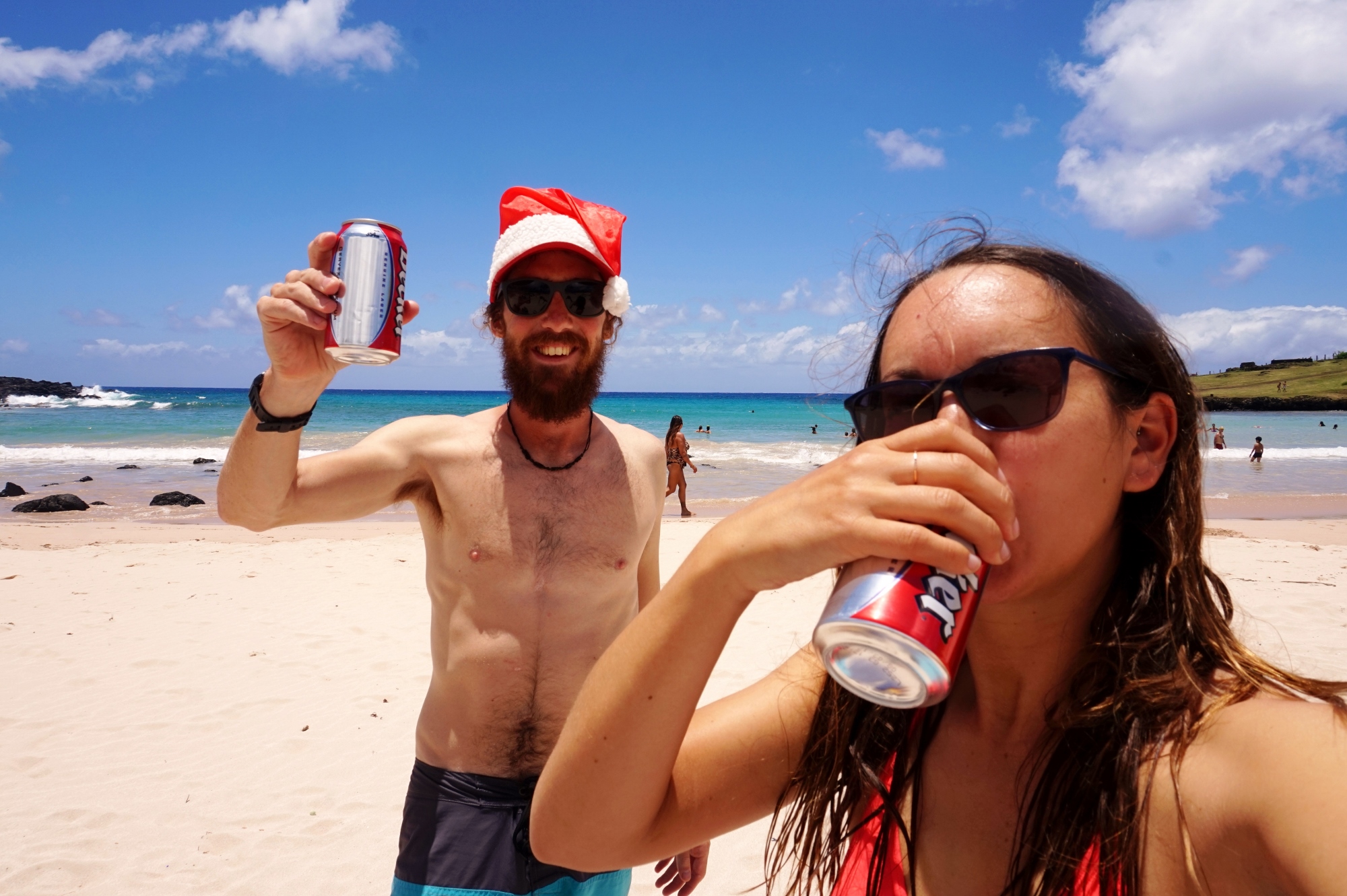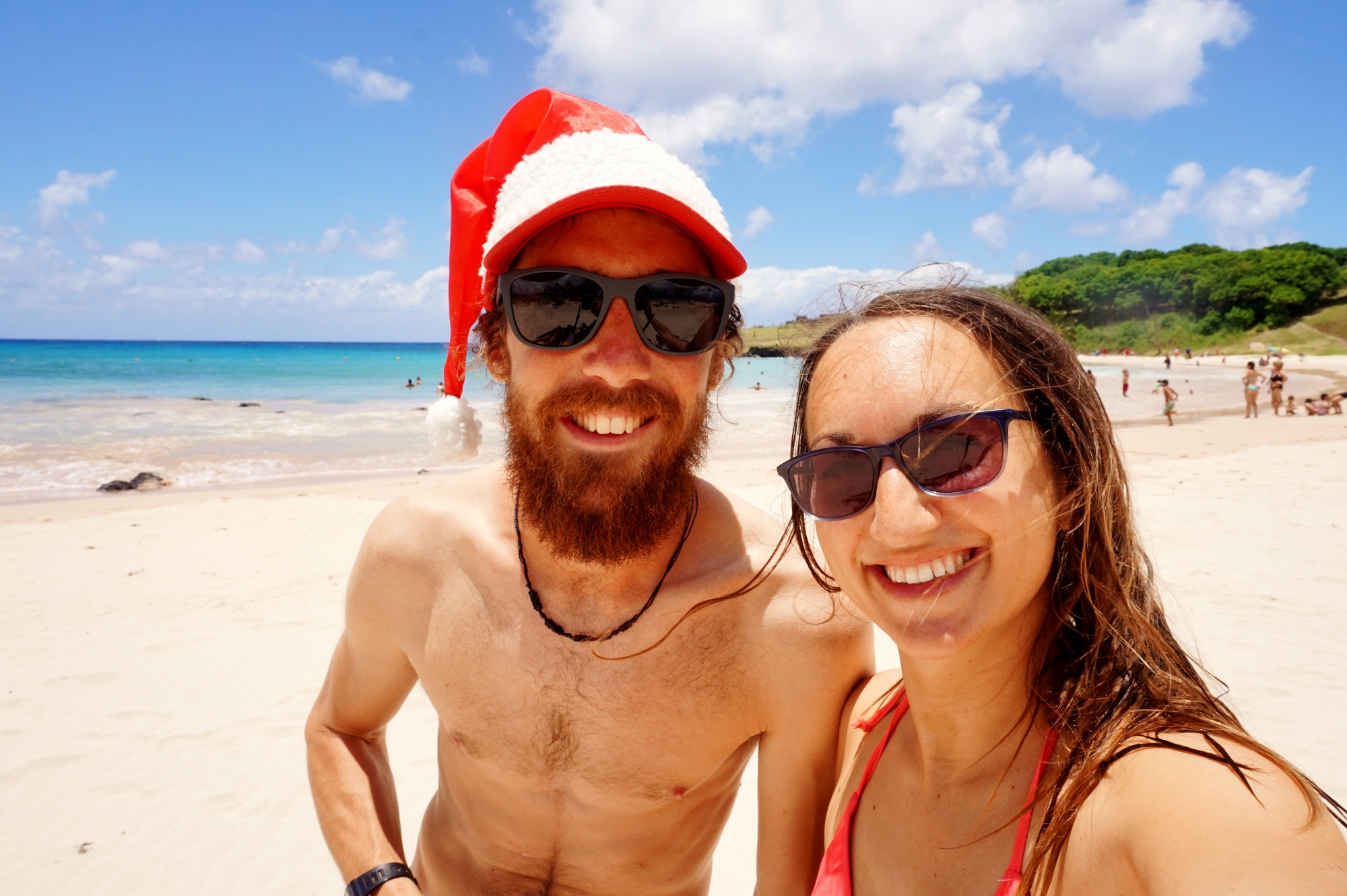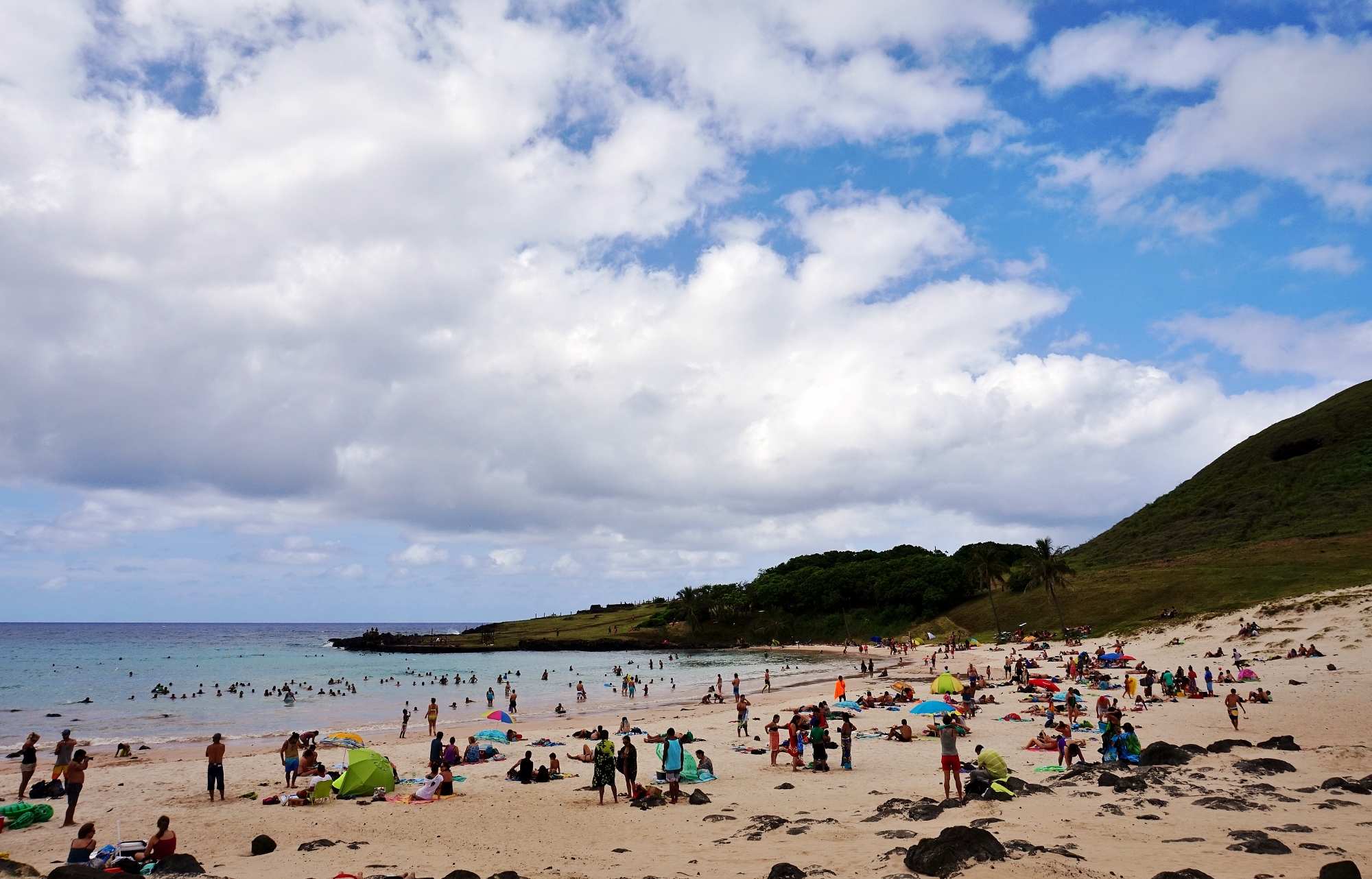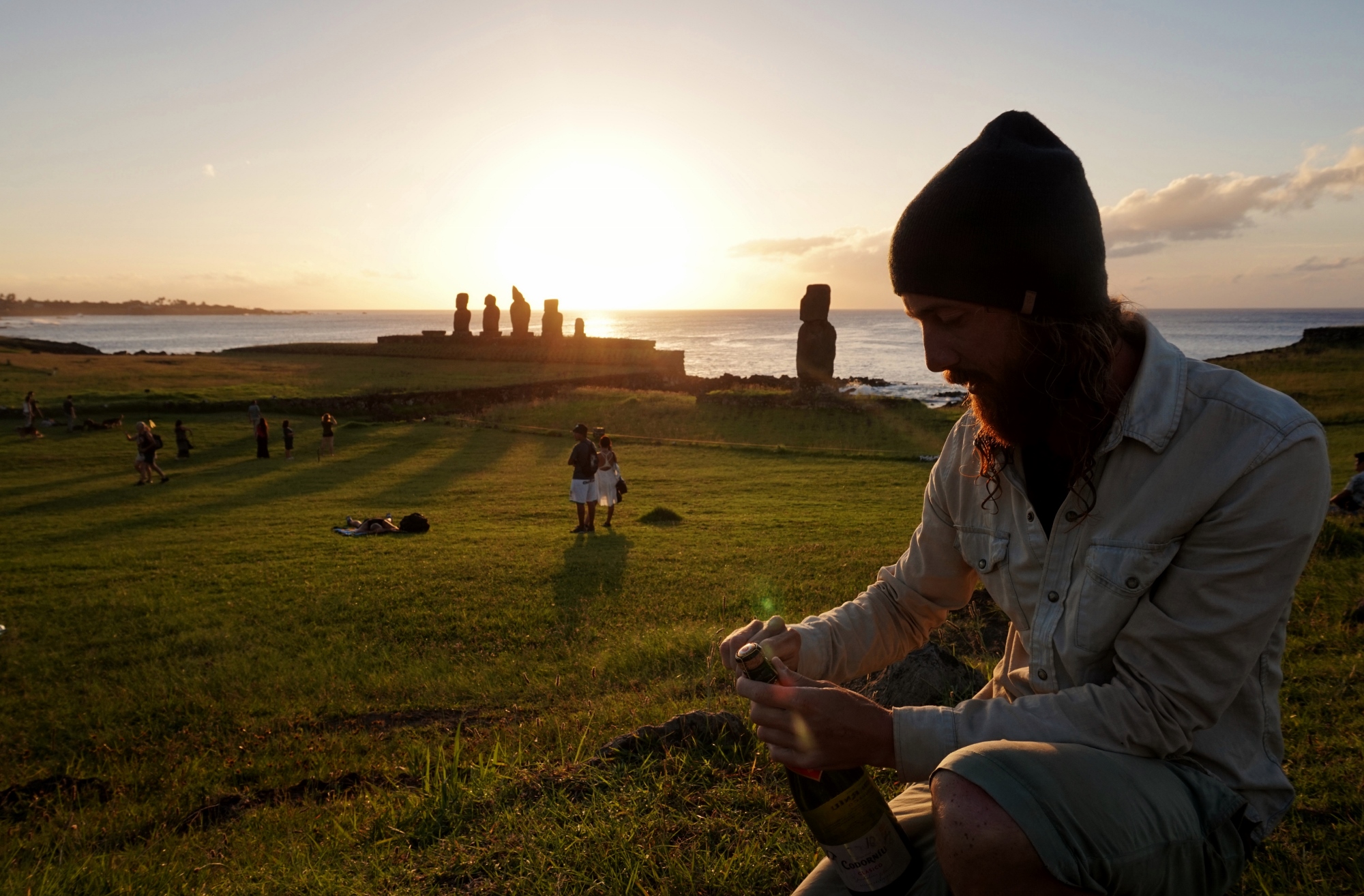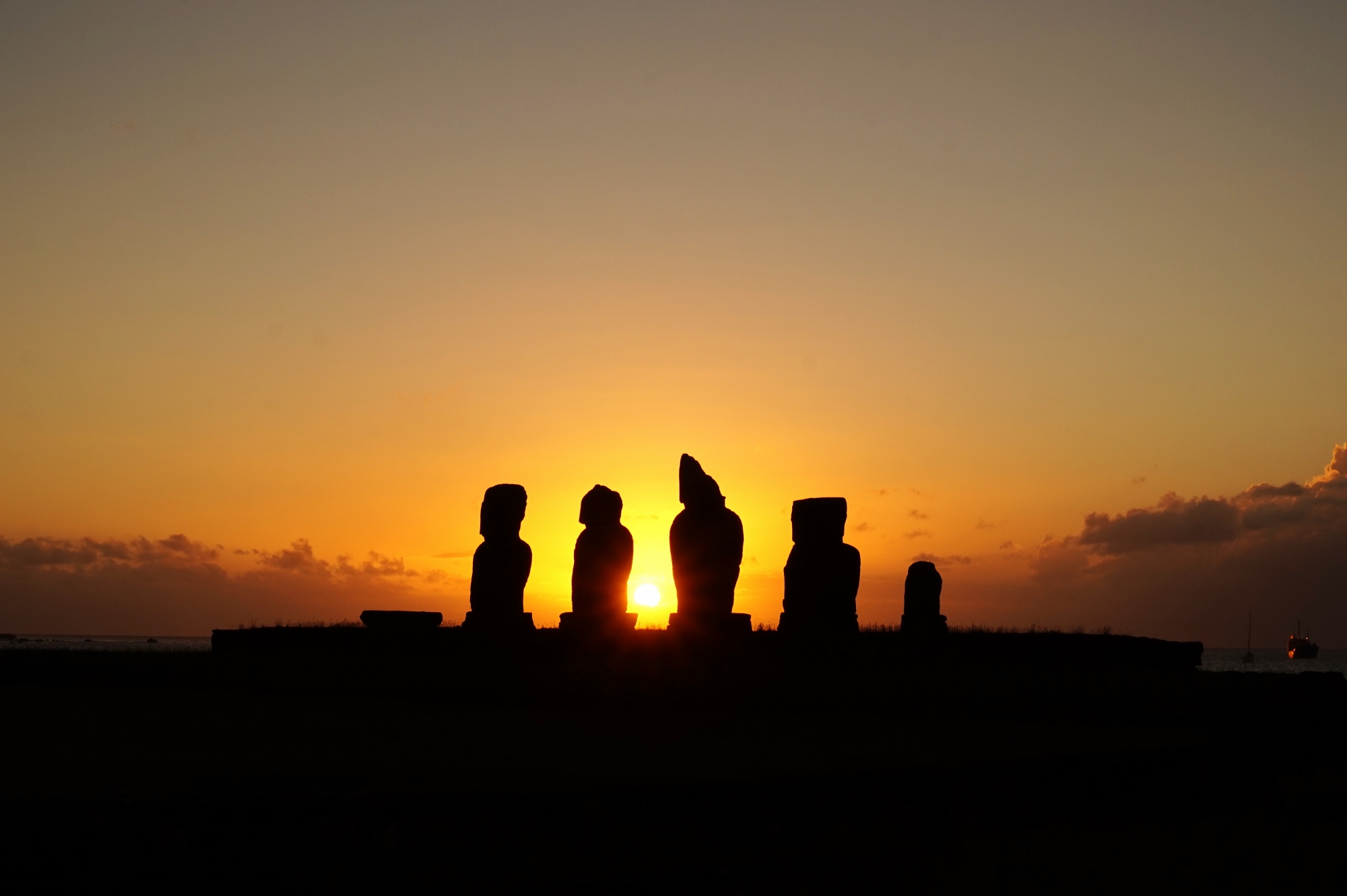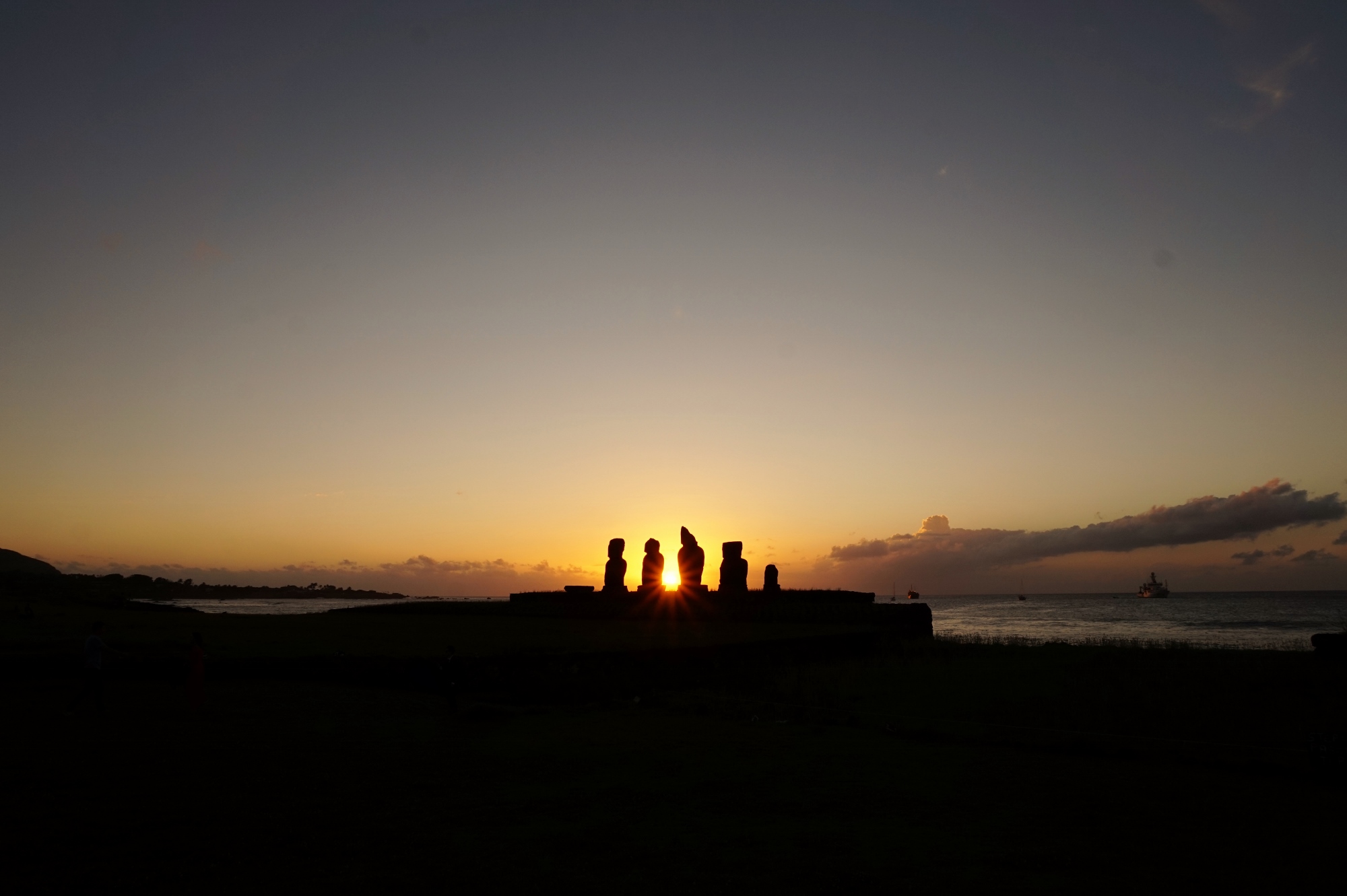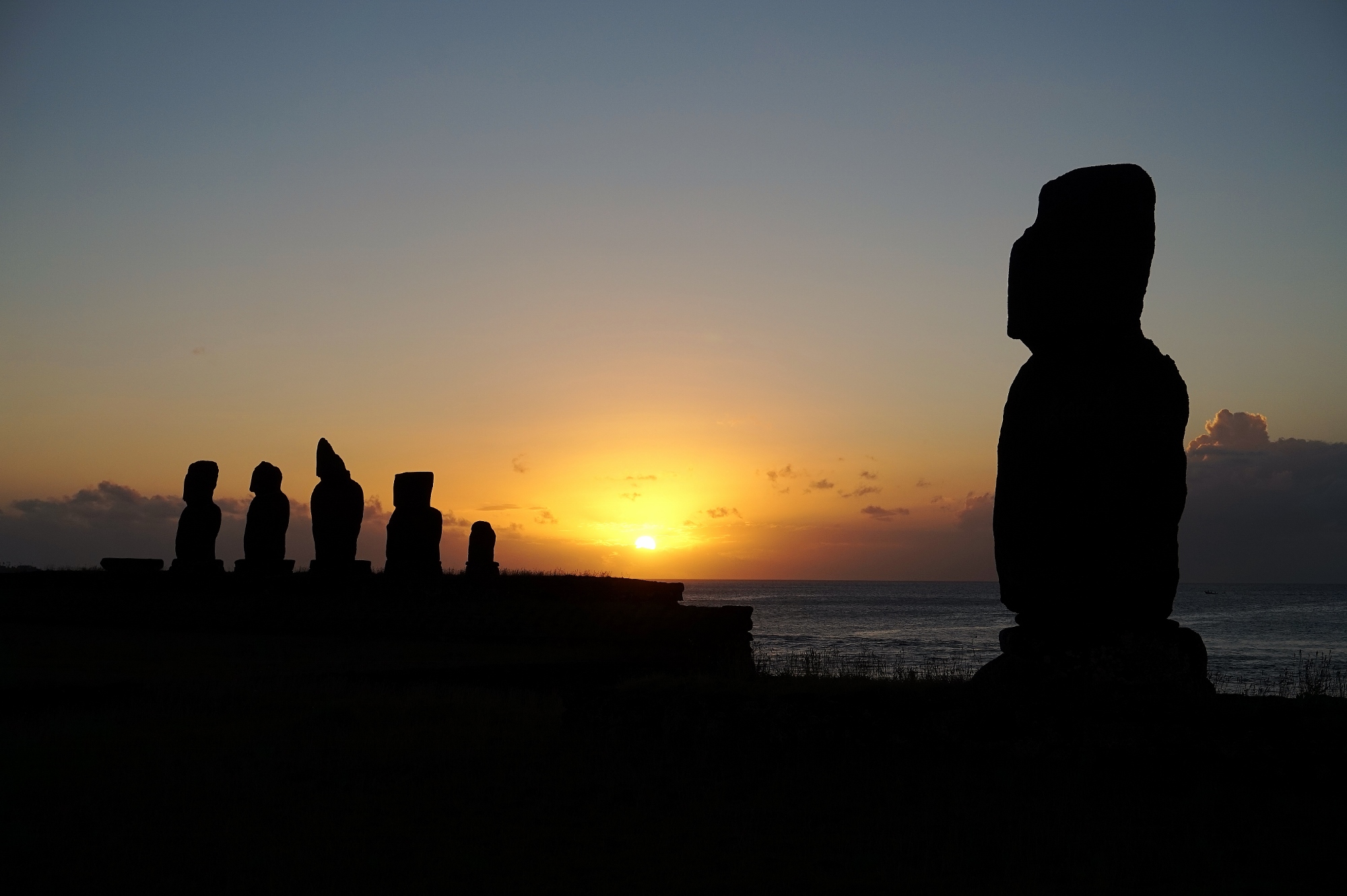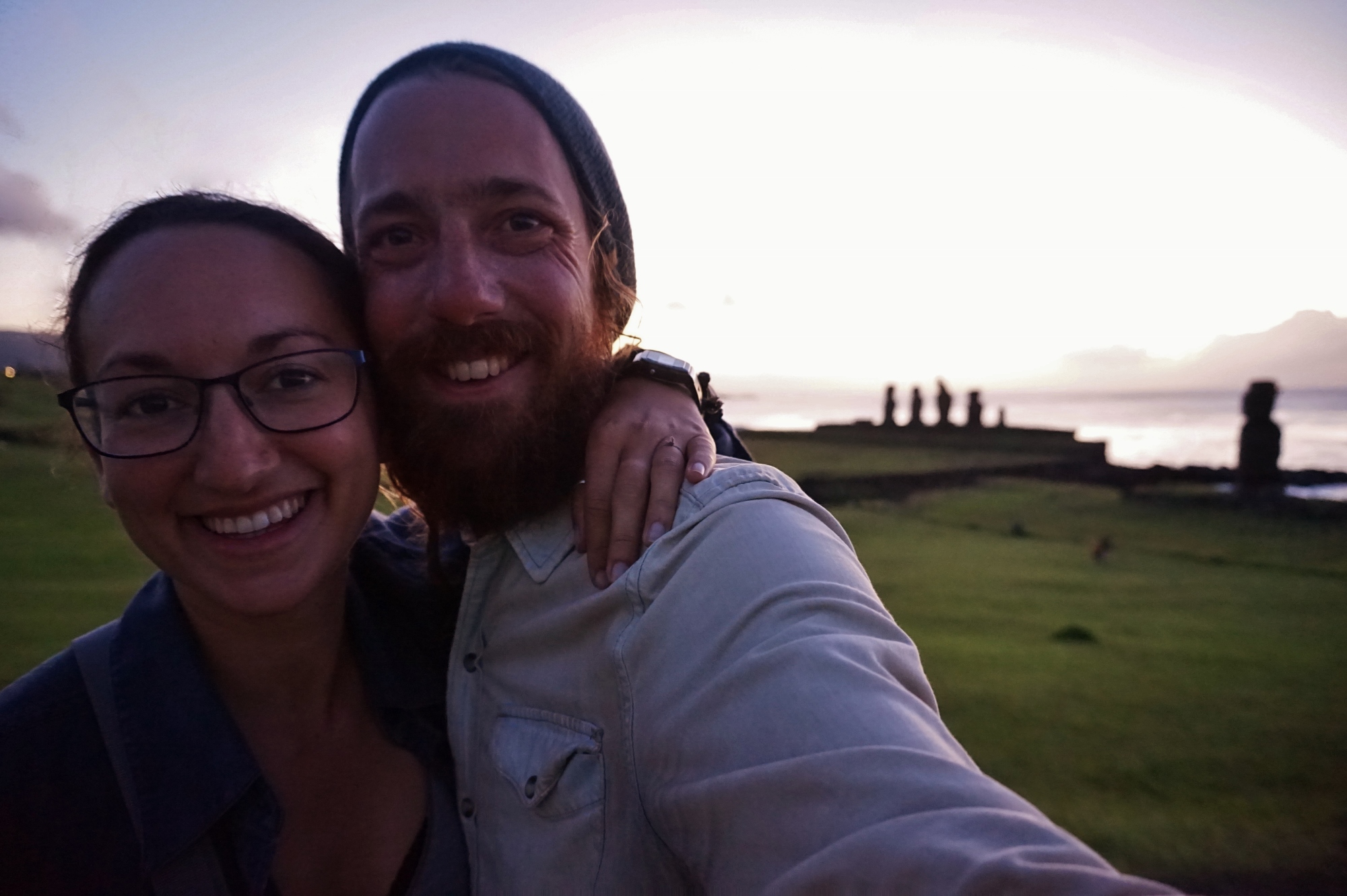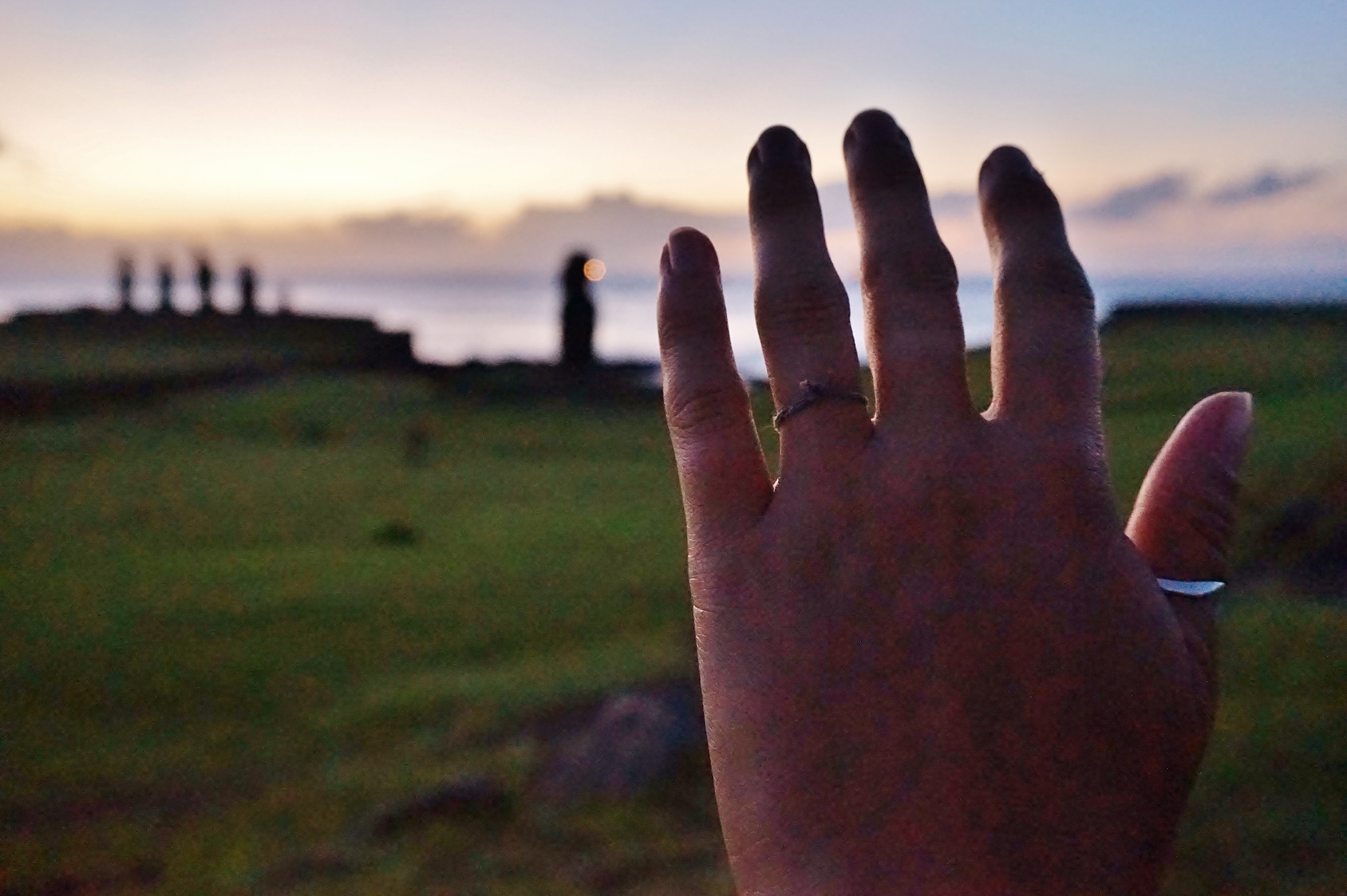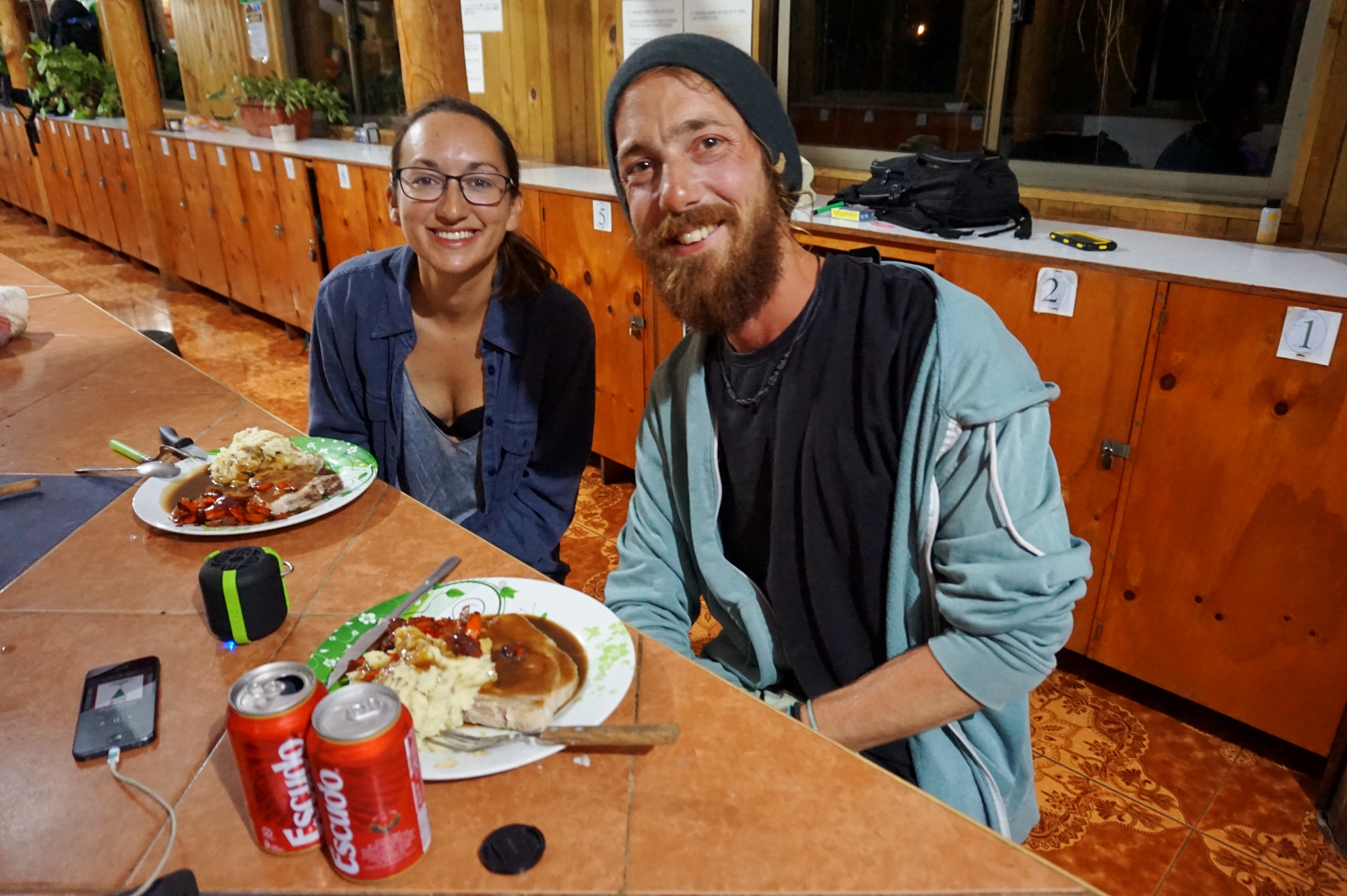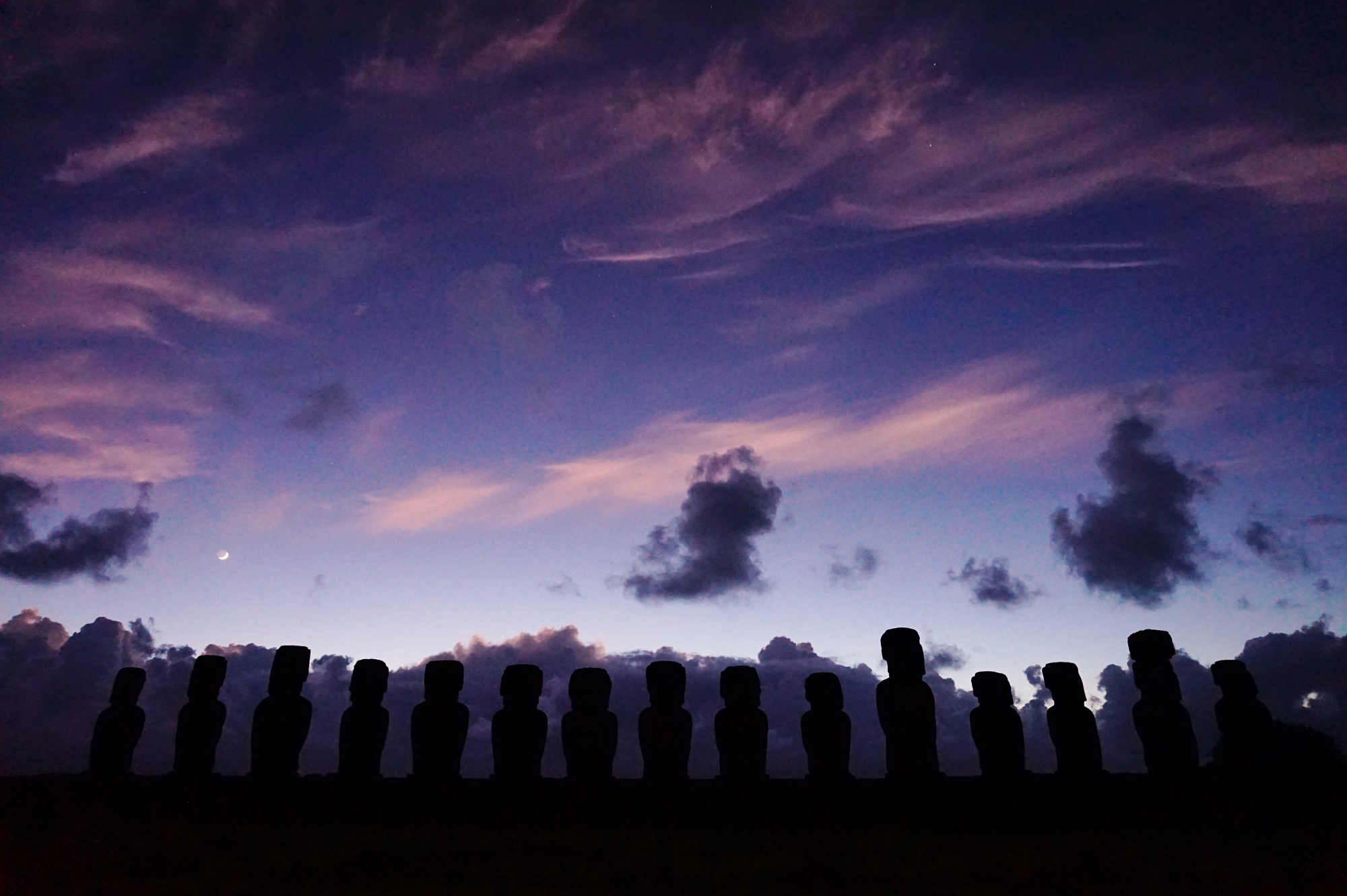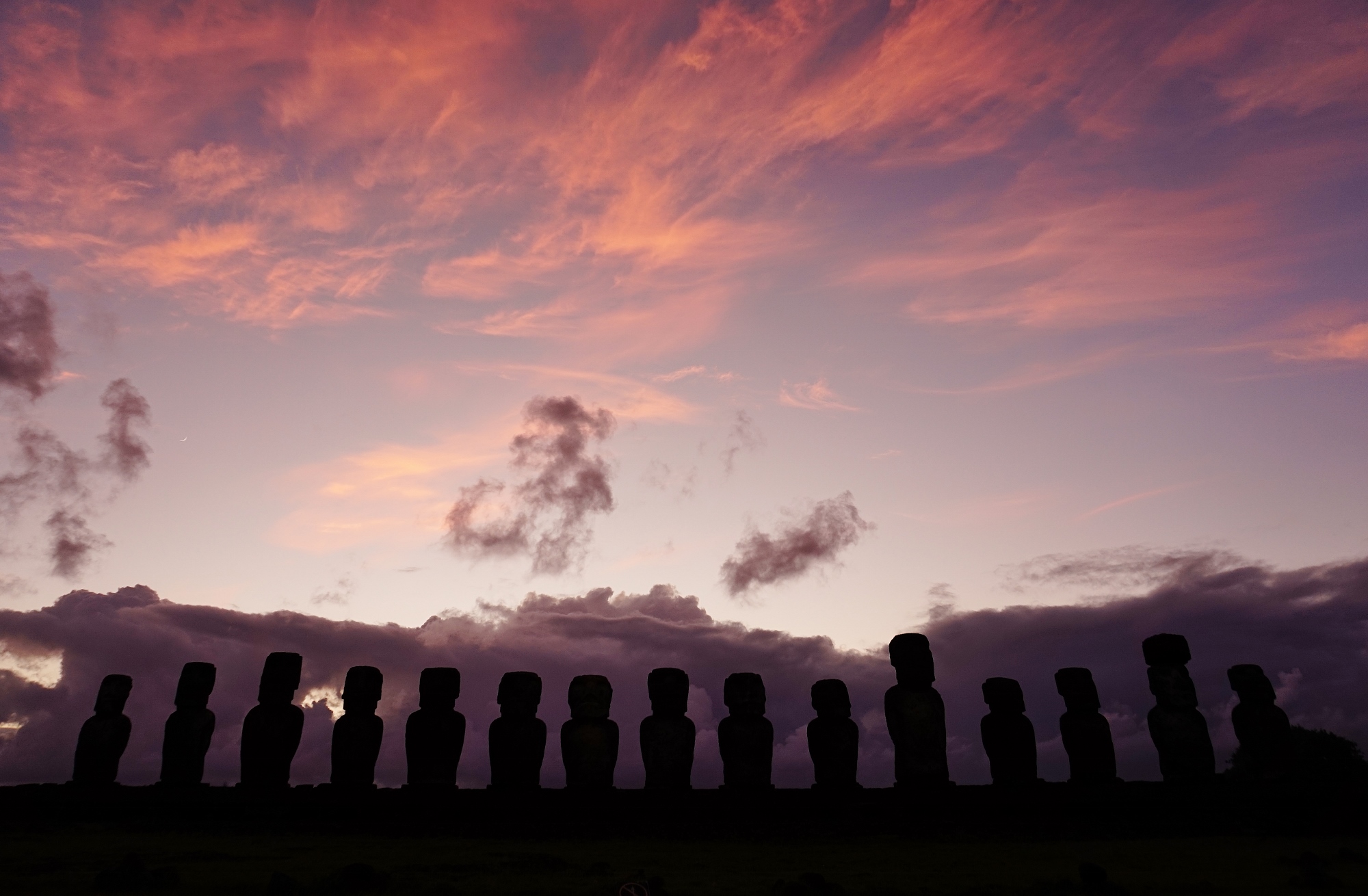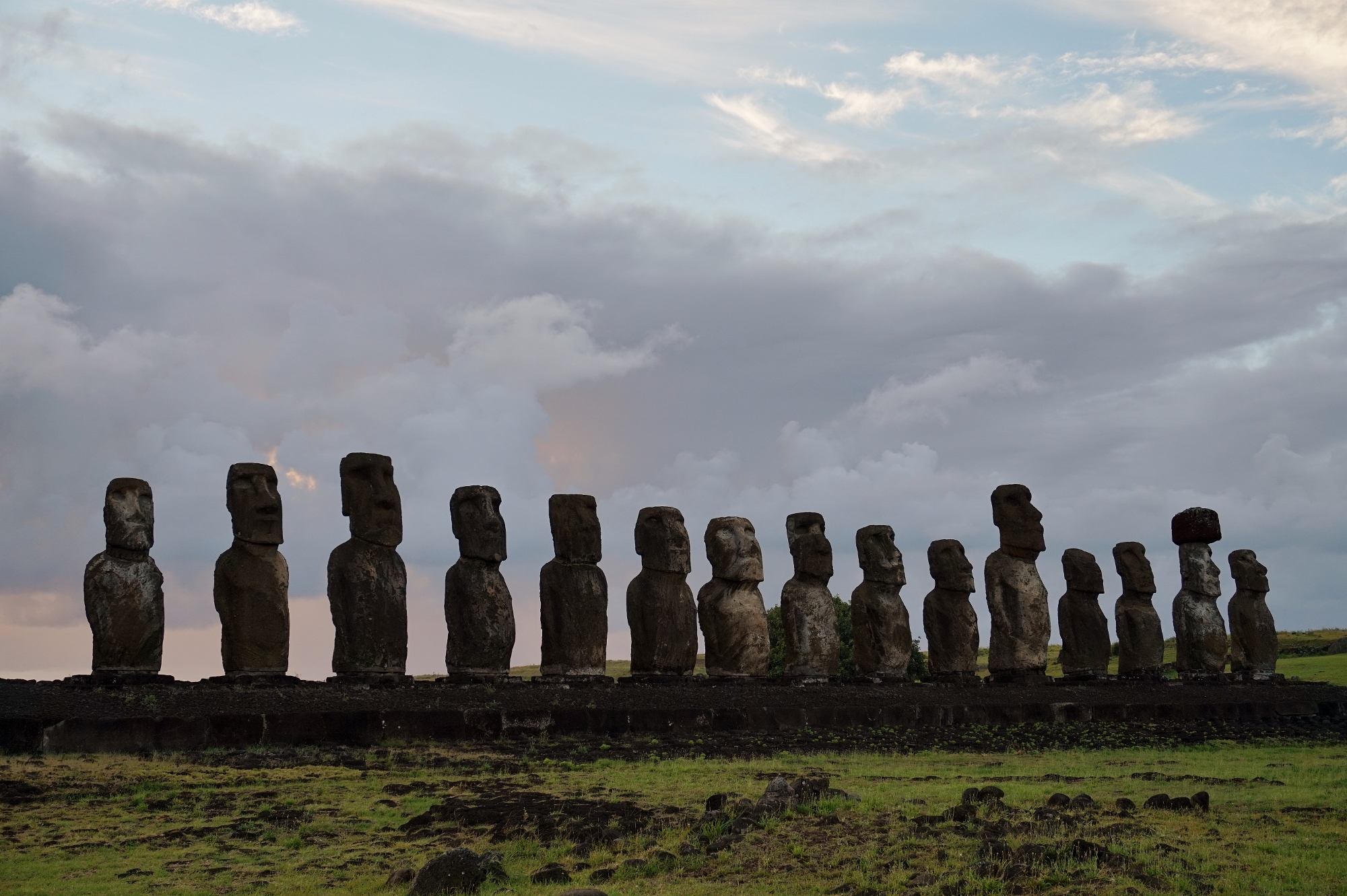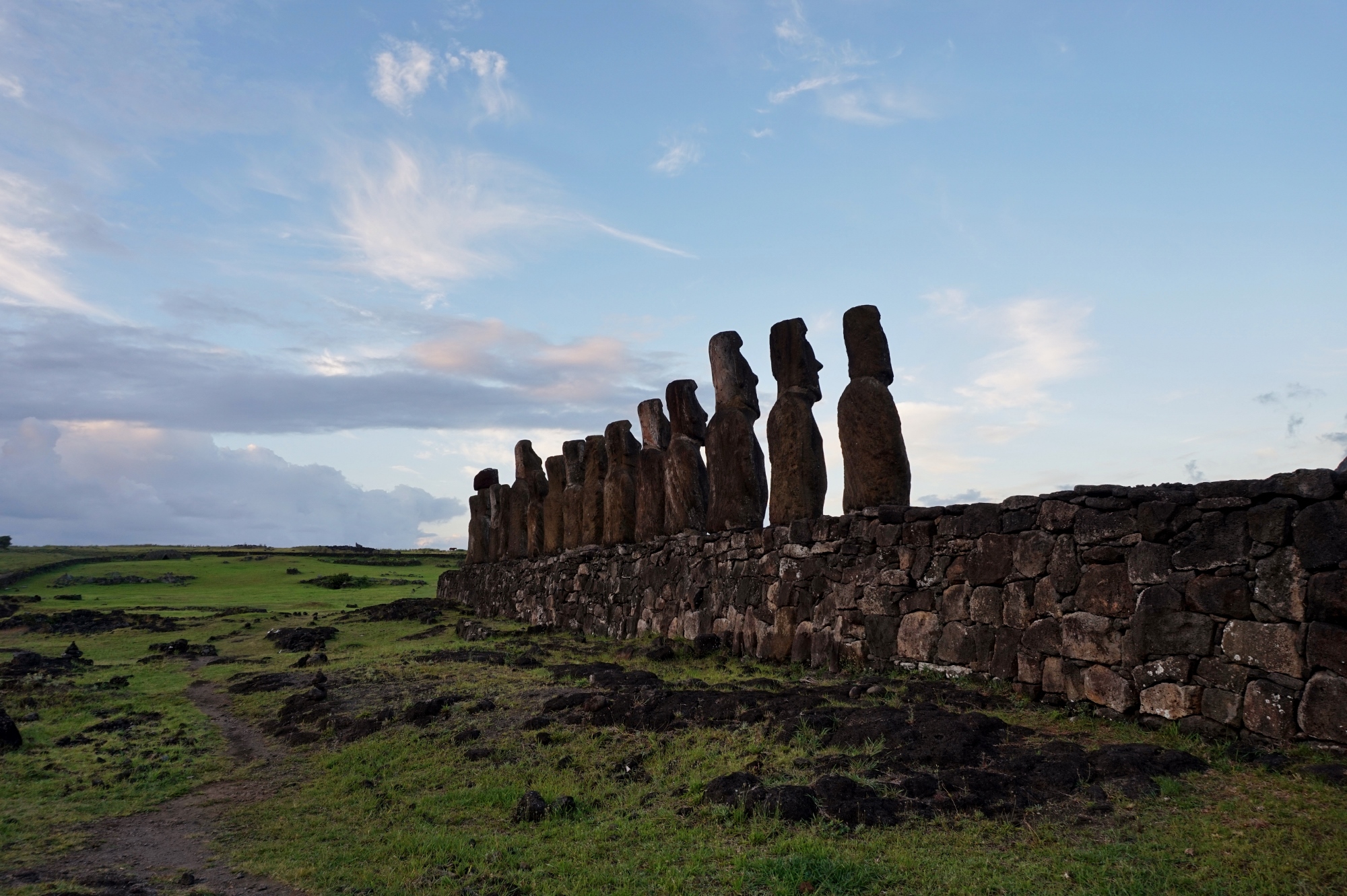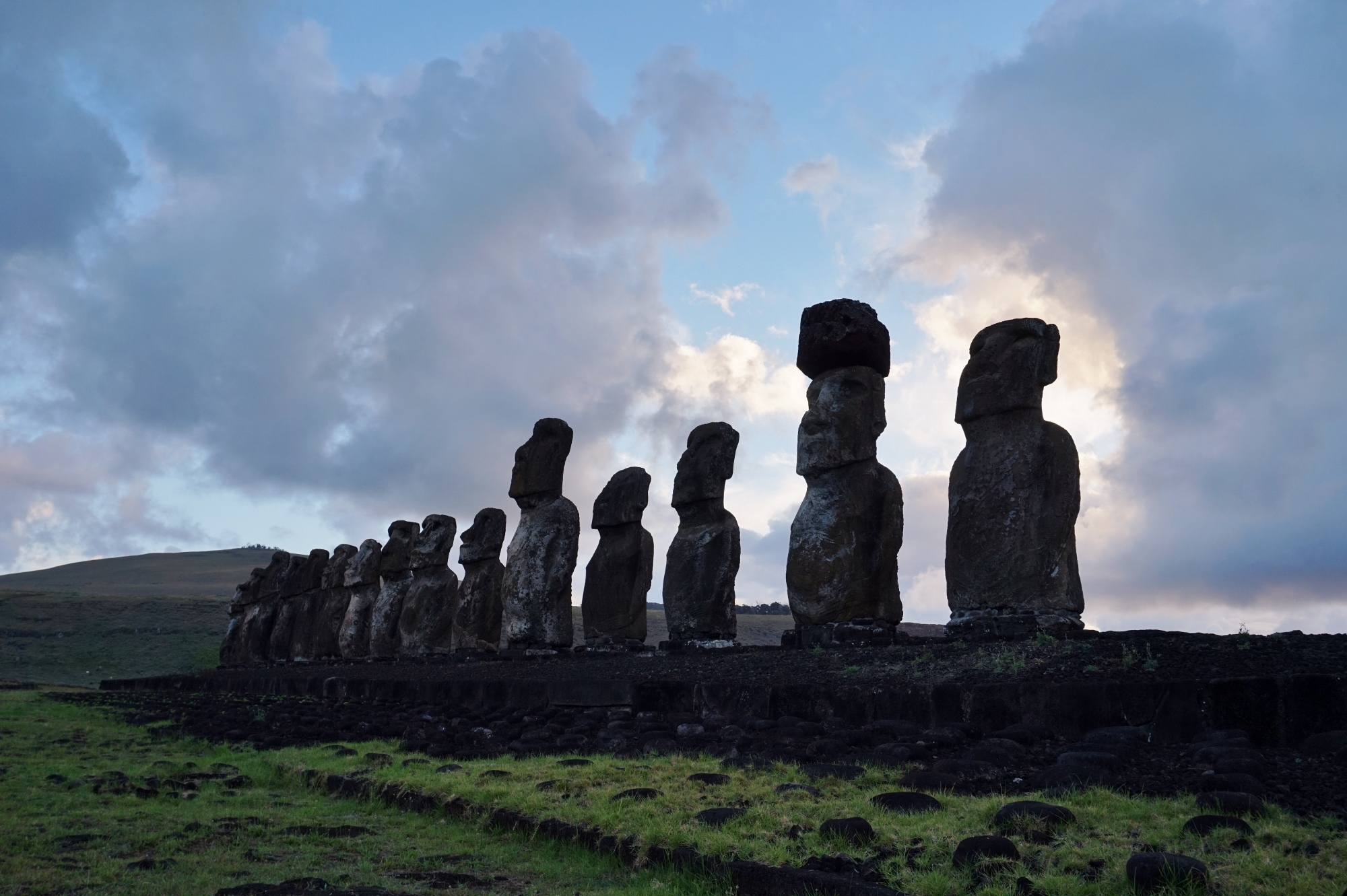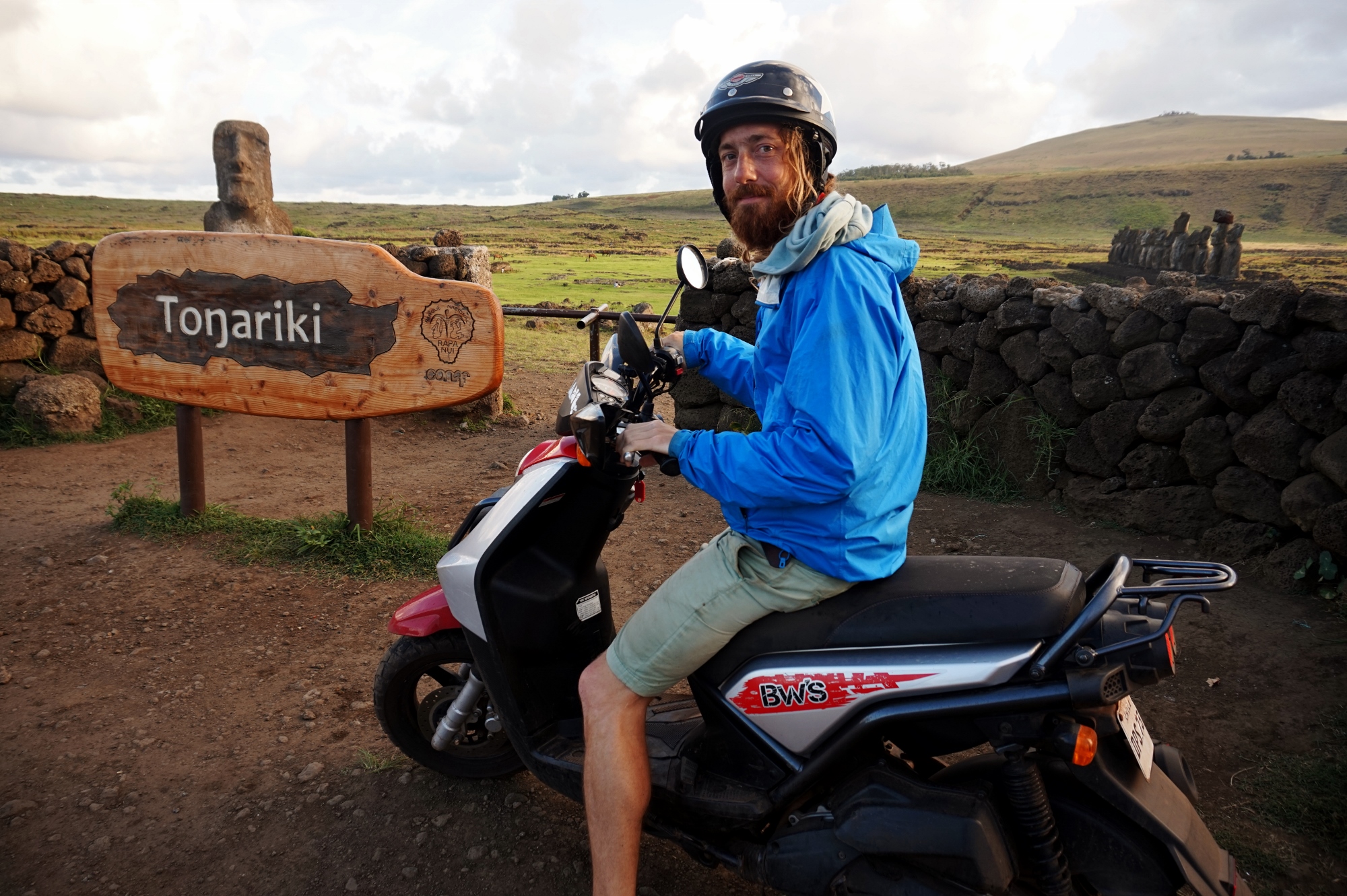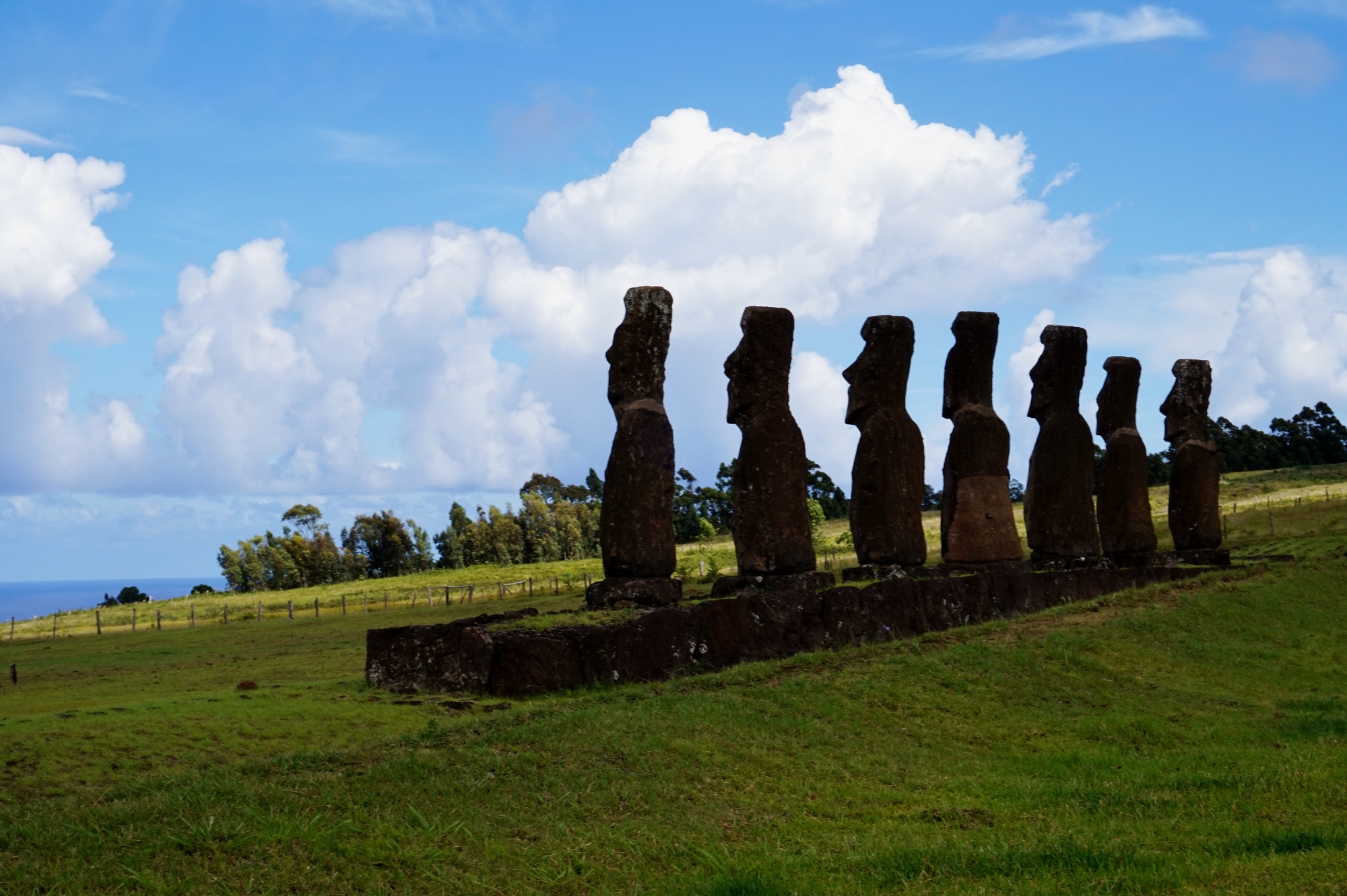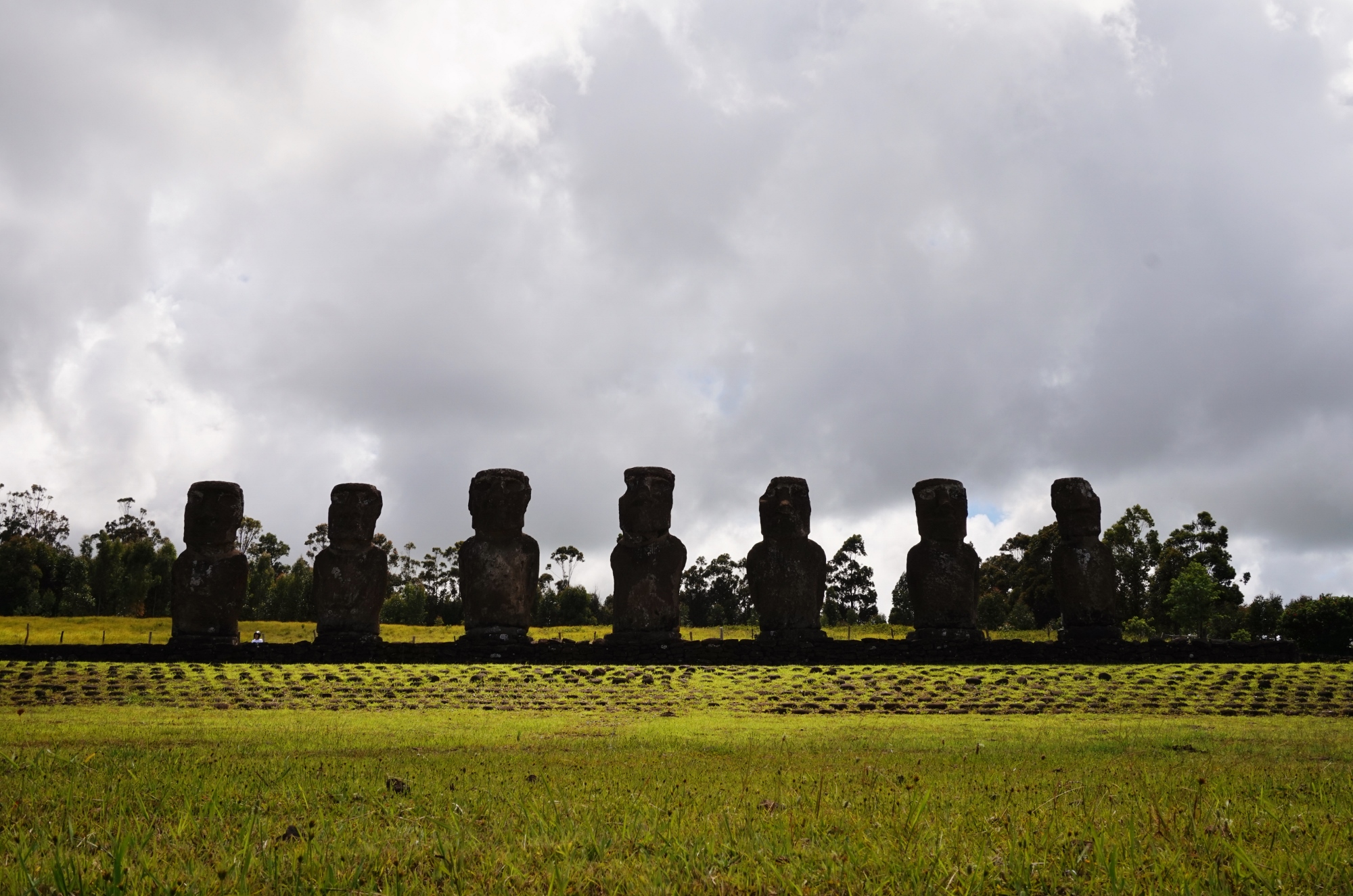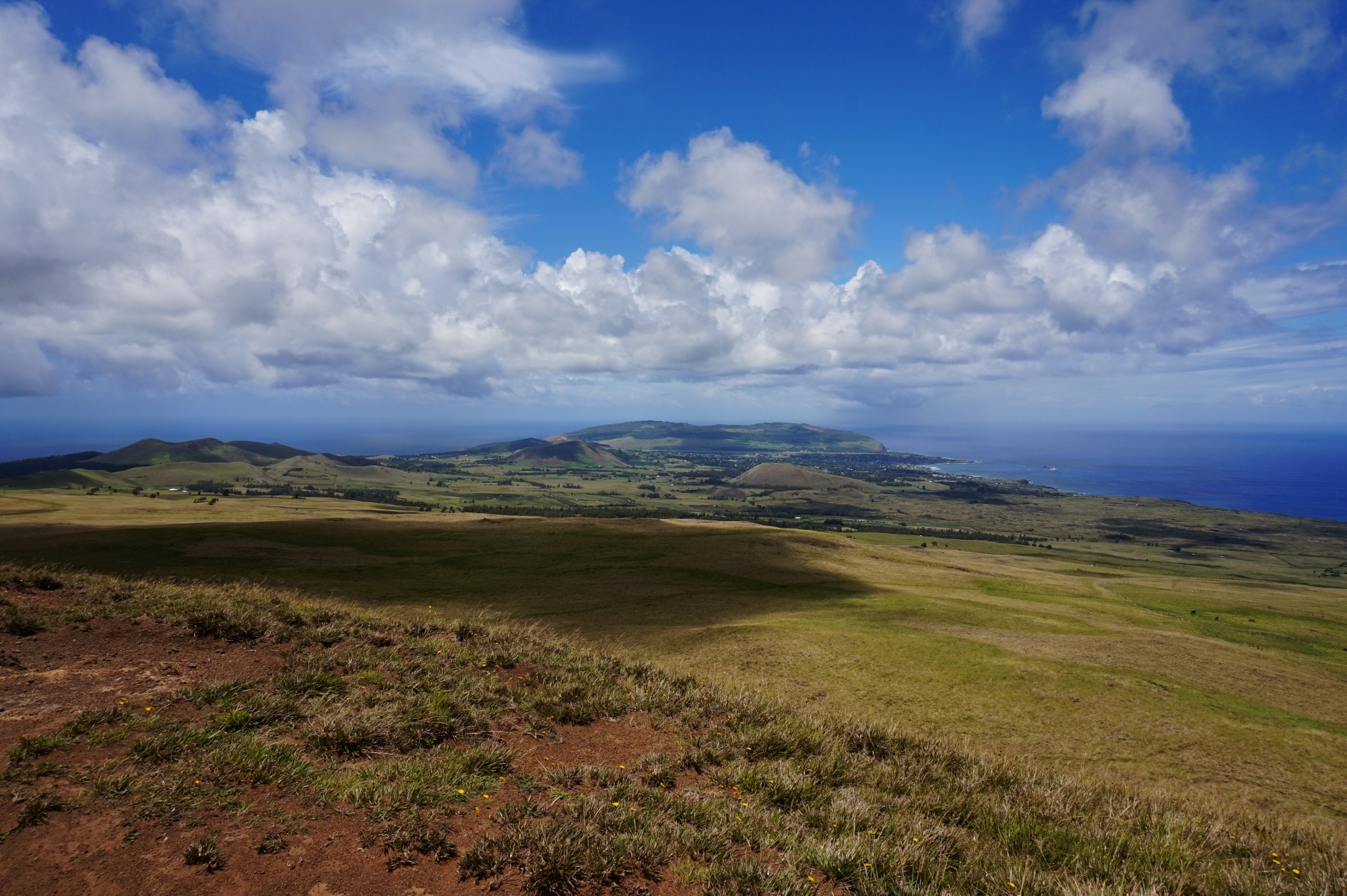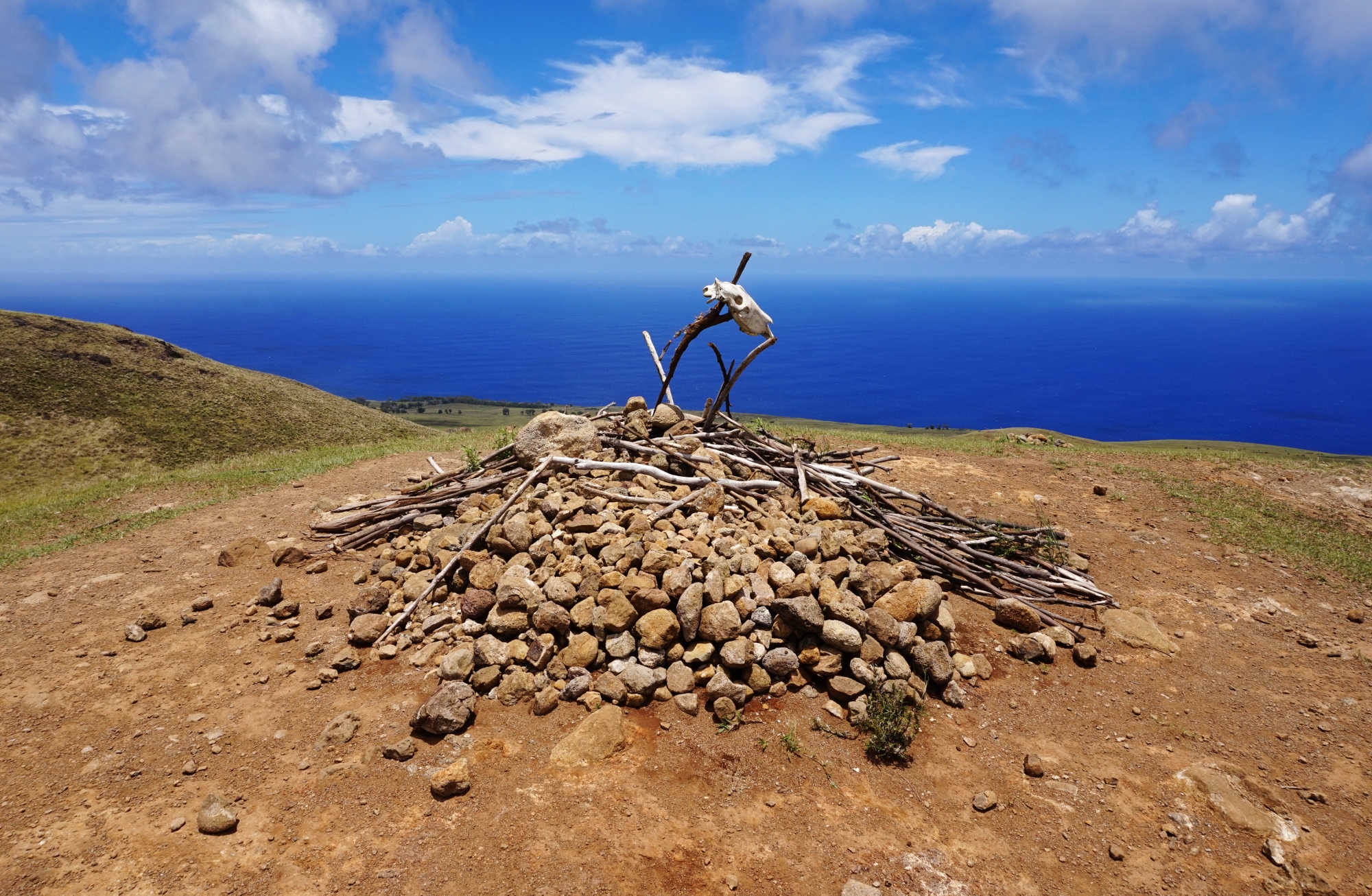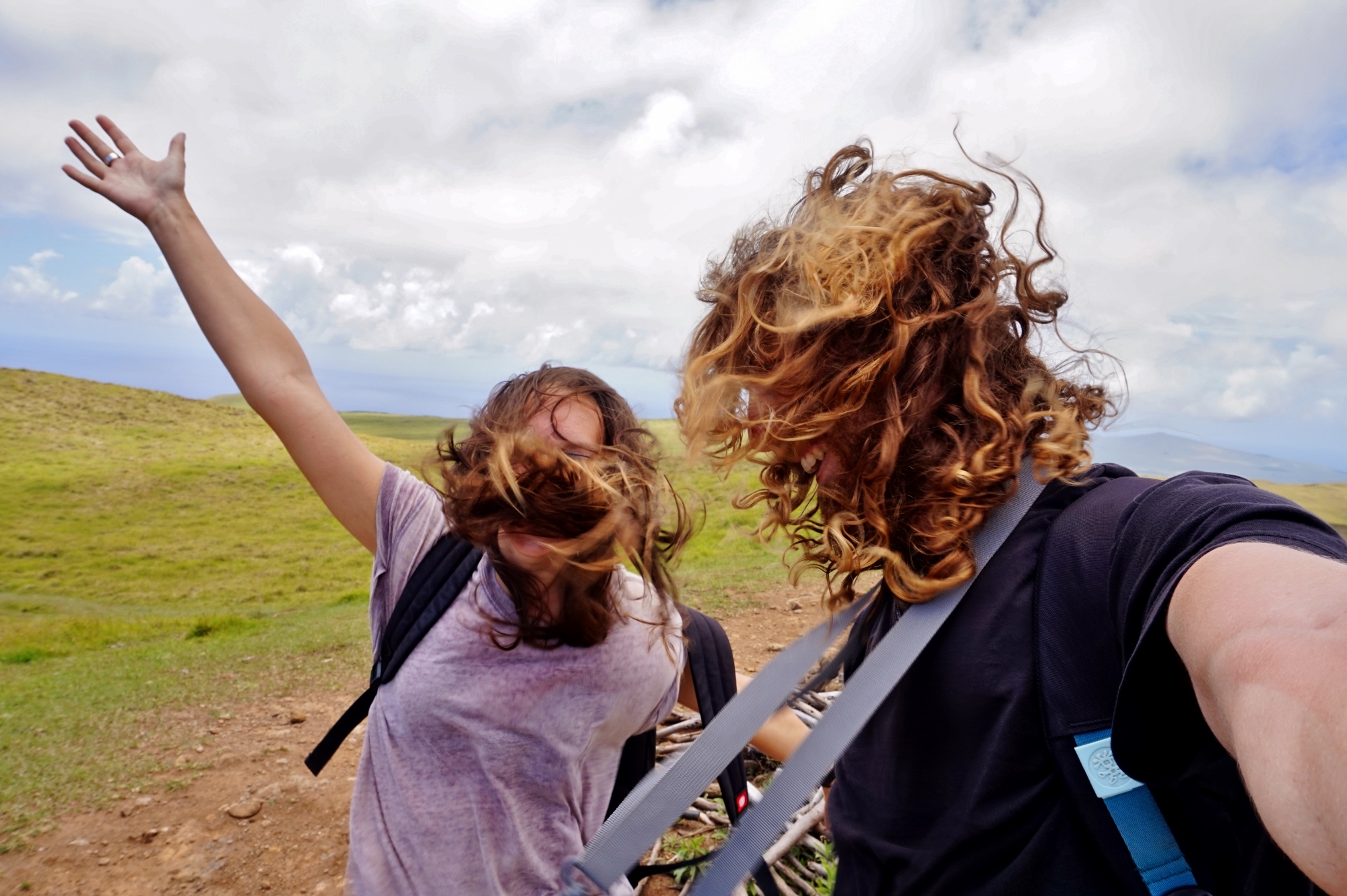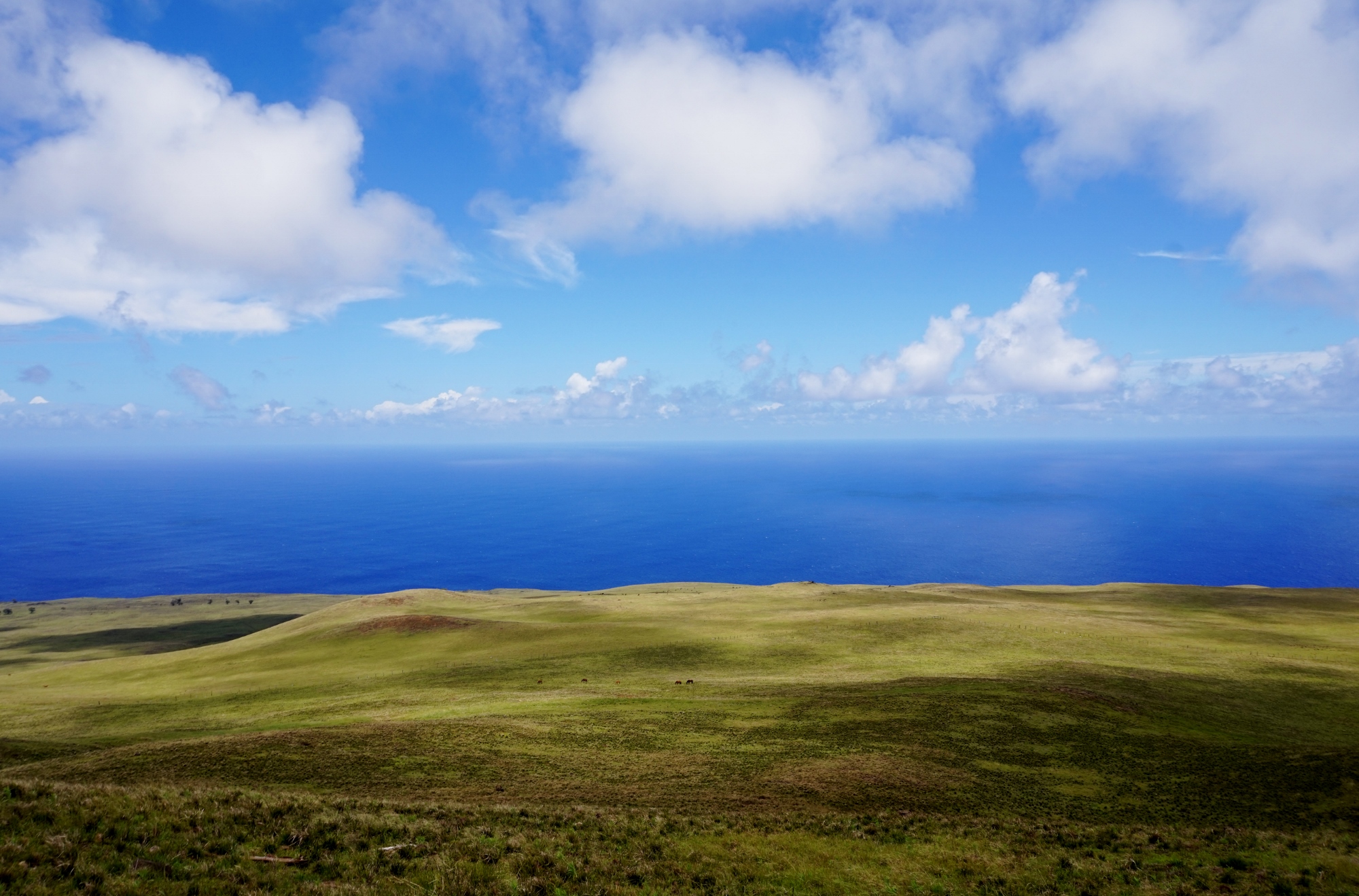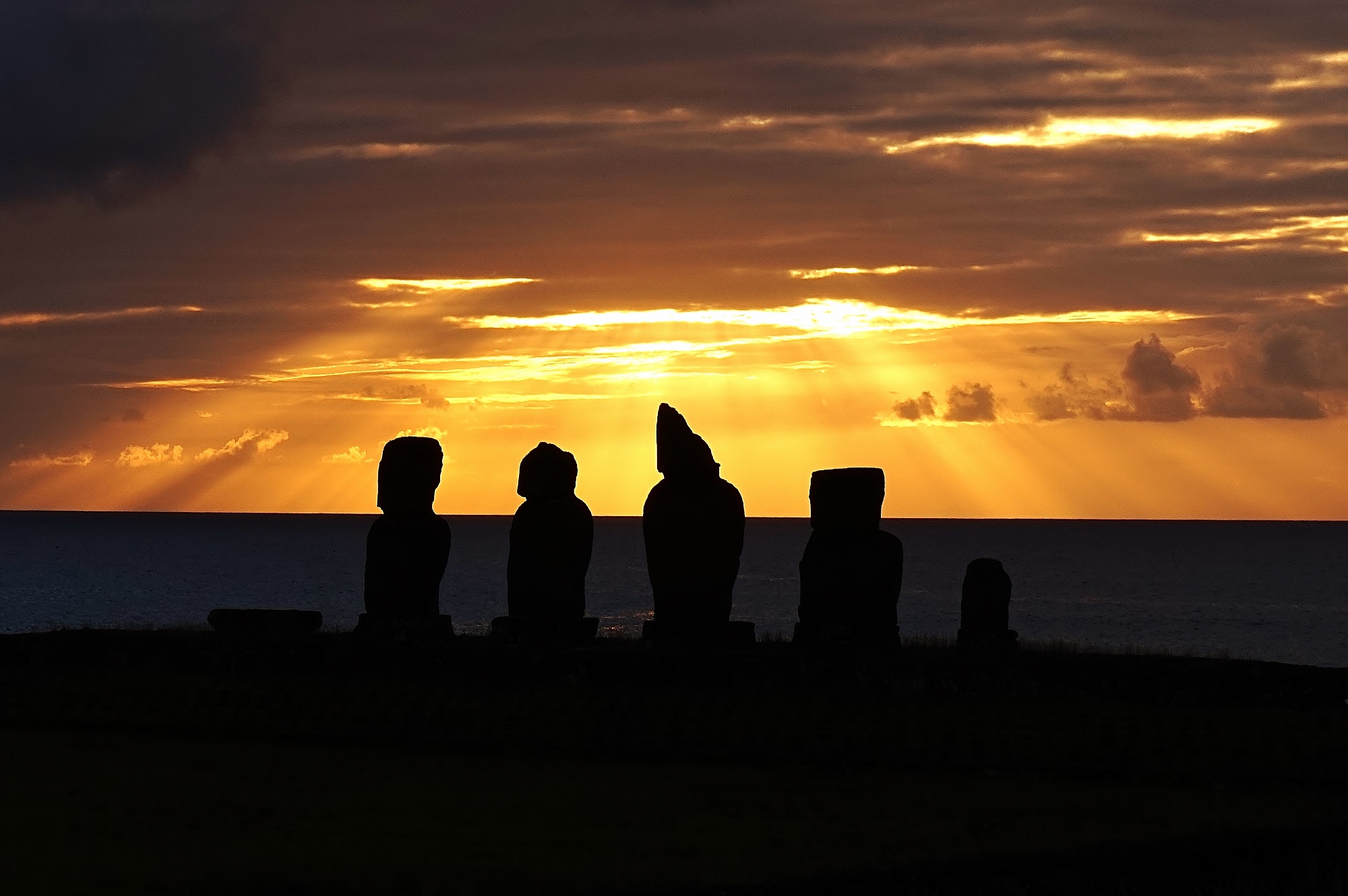EASTER ISLAND

It's Wednesday 28th of December, Christmas is over and I have just woken up on the floor in Santiago airport. A week ago we awoke in the same spot awaiting our flight to Easter Island, but now lying on the tiles it seems like nothing happened. A new string tied around Helen's engagement finger caught my eye and then I remembered the tattoos.
Wednesday 21st December
To save some cash we spent the night in Santiago airport as our flight from Punta Arenas arrived late Tuesday night and our flight to Easter Island was the following morning. For anyone thinking of sleeping in airports www.sleepinginairports.net might come in handy. We dined on overpriced steak and chips then found a quiet unused corridor and fell asleep on the floor. We both slept surprisingly well.
When boarding I was expecting a tiny rickety plane as it's only a small island, making the silver fortress that sat on the tarmac seem a bit unnecessary. We then realised this flight is the islands main lifeline carefully loaded with crates of all shapes and sizes like a 3D Tetris. Somehow we got the front seats with loads of leg room so kicked back and settled in. It was a five hour flight west to the Island which is 2086km from the next nearest inhabited island.
A bit of history
(Scroll past this bit if you are only interested in seeing pictures of stone heads or reading about our engagement)
The island was formed by three volcanoes and is splattered with satellite cones (small craters) from past eruptions, leaving an interesting and undulating topography. If covered in concrete this could be the worlds best skatepark. Luckily there hasn't been any volcanic activity for over 10,000 years. Historians believe Polynesians made this journey with nothing but the wind and the stars sometime between 800 and 1200 AD.
Easter Island got its name when Dutch explorers discovered the island on Easter Sunday 1722. We landed on Wednesday 21st December 2016.
It is also known by its Polynesian name Rapa Nui. It is mostly known for its giant stone heads called Moai. The Moai were carved and erected when an important member of a tribe died and would stand looking over the town. It was believed the Mana (spirit / energy) of the deceased lived on within the Moai. All the stone heads on the island had been knocked over at the end of the Moai period which explains why many are in quite a bad state. Some historians believe it was the first contact with the Europeans in 1722 that lead to the stone heads being toppled. Their arrival would have been like aliens landing on earth for us as the islanders had not had contact with other people for maybe 1000 years, and would have given them a window into another world. The first European account did not mention any of heads pushed over, yet by 1825 there was not a single Moai left standing. There is also the thought that contact with the outside world and the effect this would have had on the people, mentally and physically in the case of new disease, caused the people to lose faith in their old gods/Moai and lead them to topple their once sacred statues.
Others say the lack of trees on the island lead to their downfall. When the first Polynesians arrived, the island would have been covered in dense forest and there are still questions as to whether the people cut them all down to clear the land to grow crops, or in the quest to build bigger and bigger Moai. This has resulted in serious soil erosion, and when you move around the island, the lack of trees is very noticeable and quite strange. Archaeologists and historians till this day are still coming up with theories as to why, but the truth seems to have died with the original tribes and communities that inhabited the island. All the Moai that are standing on the island today have been restored and re-erected.
1862 was the worst year in the island's history with the arrival of Peruvian ships forcibly removing 1500 natives to use as slaves, half of the island's population. This included many chiefs and elders and sadly meant that much of the history, stories and culture was lost as most of these men either died on route to Peru or in Peru. There was international intervention to send those that were left home, but it was too little too late and only 15 people arrived back alive. Unfortunately they brought smallpox with them, so the already depleted population was decreased even further. In 1877, an island census counted just 111 people.
In 1888, Chile made its claim to Easter Island with a document presented in Spanish for the people to sign. For a while nothing much changed. However in 1903, a company managed to obtain the island on a 25 year lease to use the land for a Merino wool sheep farm. The islanders were only permitted to be in Hanga Roa, they were forbidden to use the remaining 95% of their island. The lease was eventually revoked in 1953.
The islanders were finally given Chilean citizenship in 1966 and they have received benefits from Chile including no income tax, subsidised fuel and air travel, free schooling and healthcare and interestingly, land on the island can only be owned by the Rapanui. In 1966 the American government did a deal with the Chilean government as the US saw it as a good place to have an emergency landing strip in the Pacific for its space craft. They paid to enlarge the islands runway and there is still a NASA base on the island.
Lesson over now back to us
Our island home was a tent at a campsite called Mihinoa which sits on the edge of a small headland overlooking the Pacific. Our host was there to meet us at the airport (if you can call some simple palm roofed and bamboo clad buildings an airport). She instantly draped some garlands of tropical plants round our necks and said 'Iorana' in Rapa Nui which means Hello. The island has Polynesian heritage and shares more cultural similarities with Hawaii and Tahiti than Chile and South America.
The Airport
The campsite
We walked the headland into the capital city (village) called Hanga Roa. Surrounded by tropical vegetation, extinct volcanos and the vivid blue of the Pacific. In the centre of town by a colourful harbour I saw a shoulder high wave breaking over volcanic reef. To add the cherry on top, at the entrance to the harbour a giant Moai (Giant stone head) sat calmly with its back to the ocean looking over the town. I have had a Moai head as an ornament at home since I was a teenager. It was a gift from a friend and I have always thought it looked ace with its blocky features and calm focused expression, often watching over what I was doing from a desk or shelf. I never actually thought I would ever be standing in the gaze of a real life full sized one.
We explored the village then headed back to make dinner. Food can be pretty pricey on the island so we bought a couple of kilos of veg and basics from the mainland. Most importantly Nutella and avocados. (These are like cigarettes in a prison).
Other than Hanga Roa the whole island is a national park. At the far edge of town you can watch the sunset behind Tahai, a set of impressive looking Moai.
We got talking to a couple called Oli and Crystal from Switzerland. They had been sitting behind us on the plane and were also staying for Christmas. They had just traveled south through Central America and northern areas of South America, with plans to head down through Patagonia then on to travel around south east Asia. Realising we were doing each other trips in reverse we got on like a house on fire and had loads of stories and tips to swap. You can follow their journey at www.travelpod.com/members/oli-stel
Thursday 22nd December
We woke up to the pitter patter of rain which isn't the best weather for exploring the island or having a quiet lie in. Instead we cooked up a massive breakfast of avo, eggs, bacon etc and made a back up plan. Helen decided to visit the island's little museum and I visited the islands little reef. The paddle out was quite shallow and more than once I scraped the fins. The wave was shoulder high, offering long left and right hand rides. In fact you had to kick out of the top of the wave to avoid hitting the shallow rocky shoreline. The crazy thing was that there was only one other person out, then eventually only me and a massive turtle which took me by surprise. Anywhere else in the world this wave would have been packed. The water here is so clear it's like surfing on glass which is a tad scary over urchin covered volcanic rock.
As you walk the headland road into town there is a big protest by the locals outside a swanky looking hotel /restaurant, apparently the owner had no right to build there even though the Chilean government mysteriously granted permission. Unsuspecting tourists were paying top dollar for sea views only to be obscured by pirate flags and big painted protest statements. We wondered if guests admitted to staying there to the local taxi drivers or whether they said they were staying at our campsite over the road, then would sneak back.
The rain cleared up in the afternoon and the island was soon bathed in sunshine, it was scorching. We took this as a good sign and rented a moped for the following day to watch sunrise on the opposite coast.
Oli and Crystal met us in the evening and we went in search of Ana Kakenga a small lava tube cave / tunnel that splits in two directions and ends at two jaggedy 'windows' that overlook the setting sun with the surf exploding onto the rocks below. It was a tiny entrance that you had to almost crawl through in the dark. It soon opened up into a bigger chamber where you can pick to sit at one of the two natural openings. We had the cave to ourselves and stayed watching the sky turn to lava.
Then headed back to town with just enough light left to follow the path. The shadows of dozing horses merged with the rocky terrain only got startled and whimper if we passed too close causing us to get startled and whimper.
Friday 23rd December
We rose long before the sun and scooted out of town. The sky was full of stars and the road full of potholes. The main place to watch sunrise on the island is Tongariki, an Ahu (traditional raised platform) supporting 15 giant Moai. They are some of the biggest on the island and at this time of year the sun rises directly behind them. We made it from coast to coast in about 40 minutes being careful not to crash into the many stray dogs and wild horses that roam the island.
When we arrived it was still dark and we could just make out 15 dark shadows on the horizon, spaced like an old mans gappy teeth. Soon the colours of dawn arrived bringing out more details and creating a beautiful backdrop. We couldn't take our eyes off them. The tallest is around ten meters high and one of them was complete with its Pukau "Top Knot" a giant carved redish rock that is thought to represent the hairstyle the men would wear.
Helen squeezed my hand and said it was the most amazing sight she had seen on the entire trip. We walked around the platform behind the Moai where the waves were breaking gently on the shore. No other folk had bothered to walk round and we had this perfect little moment to ourselves (and 15 giant stone men). It was at this point I asked Helen to marry me. She wasn't expecting it and after a slightly perplexed look, her eyes filled with tears and she said Yeah! We stood for a moment like schoolchildren behind a bike shed hidden from the rest of the world. We have now been together for almost seven years and what a crazy and fantastic seven years they have been. We made a life in London, Sydney and a Van, seen the tops of the Himalayas and the bottom of South America and had a whole load of other adventures in between. Even though there have been many great places and moments on the trip this was the most perfect. We walked back round to the front to catch the full effect of the sunrise, with the light bursting inbetween the Moai, creating amazing long shadows.
As it was still only 8am and I was driving / riding, we decided a boozey celebration would have to wait. Rather than opening the champagne we opened an avocado and ate our packed-breakfast.
About a five minute ride inland from Tongariki is Rano Raraku. This was where all the Moai were carved straight from the rocky hillside. It is also the place where the most famous photos of the Easter Island heads are taken. Most people don't realise all the heads in Easter Island have bodies. The head is usually only a third of the total size. In the crater above / behind the hillside you used to be able to visit this guy.
Unfortunately the path was closed, but he was excavated a few years back to show the world that the Moai do have bodies. They were carved lying down on their backs, then cut away from the hillside and stood up so their backs could be carved with Petroglyphs. Apparently each one took roughly two years to carve. Once complete they would be transported across the island to stand on an Ahu, have their top knot added and a set of eyes carved. The eyes were always the last parts to be created. This is one of the most amazing places on the island as you can get realy close to Moai and there are loads of them (397 to be precise). As these guys never left the quarry, they were never knocked over and didn't suffer the same levels of erosion as the Moai near the coasts, meaning a lot more detail remains. After the Moai period came to an end many of the statues near completion were slowly buried by landslides and now only the heads are visible.
As we left we noticed an absolutely gigantic Moai half carved in the rock face. If it had been finished it would have been the tallest Moai produced standing at 21m tall!
This seemed like as good as time as ever to take a Christmas photo. This has now become a bit of a tradition after our Christmas pic from Australia last year.
We continued our adventure around the island following the ocean road round the north coast stopping at various interesting bits of rock our book pointed out.
We eventually ened up at Anakena, a tropical paradise with imported palms from Tahiti. It's one of only two sandy beaches on the island. As you head down towards the beach you see Ahu Nau Nau with four impressive Moai. Due to spending a long time buried in sand these guys are also well preserved and all still have their topknots. The other two that share the Ahu weren't so fortunate.
Another Moai, Ahu Ature Huki stands a little way behind up the hillside. Even though he was as solid as a rock he looked a little squashed.
The sun was high, it was super hot, and the few shady trees on the beach were taken, so we jumped in the sea. A peculiar long thin silver fish wriggled past and we couldn't decide whether it was a fish or some sort of sea snake. We decided it was the latter, causing an ungraceful dash to the shore. (Probably to the amusement of the local families and kids watching us from their shady palm trees).
We noticed a palm roofed shack serving beers overlooking the beach, this was like a palm tree but better. We grabbed a table with a sea view, relaxed and toasted our engagement. It was a pretty spot so we booked a table for Christmas lunch.
Leaving in the late afternoon we headed back on the costal road to Hanga Roa via a couple more Moai all of which were toppled. It's a shame to see so many of their faces in the dirt with cracked and scattered top knots.
We also found time to revisit Tongariki to see the Moai in daylight and see their features a little clearer.
The lady at the campsite managed to book us the best table overlooking the ocean at a highly recommended fish restaurant called Tataku Vave. The sky was incredible as was the food and wine. We ordered a fish platter with scallops, crab, lobster, octopus, prawns and a few other bits, plus a plate of cerviche, a dish of raw fish cooked with citric juices.
Christmas Eve
After another five star breakfast I nipped off for a morning surf and H had a lie in. Again I had the reef pretty much to myself except for a large turtle which popped up next to me in the harbour on my paddle back to shore. It was the biggest turtle I have seen and actually made me feel a tad nervous. I paddled the rest of the way with my feet in the air in case it mistook one of my toes for breakfast.
We managed to get in touch with my folks to share our news. The wifi was pretty patchy but they got the message and mum burst into tears. Dad was welling up too as were me and H. It was a really heartfelt moment. The whole family were up in Aberdovey for Christmas and it was lovely to sea all their pixelated happy faces.
We had decided to keep the bike for the weekend so scooted up to the top of Rano Kau volcano. It had a grand crater at the top, one side was slowly slipping into the ocean. Apparently there are plants here which grow nowhere else in the world due to the crater's micro climate. The reeds you can see floating in the crater lake are apparently nine feet tall and some of the plants that grow here have cancer fighting properties that are now being incorporated into modern medicine.
As you follow the craters edge you come to a thin headland which is the sight of Orongo village. After the Moai period ceased the many tribes on the island competed in a yearly 'Birdman' competition. A member of each tribe would live in tiny rock houses built into the hillside. Then when seeing migrating Sooty Terns, they would scale the near vertical cliffs and swim out 2km on a reed surfboard to Motu Nui island and live in the caves there until the Terns would lay their eggs. The goal for the competitors was to be the first to steal an egg and return to the main land securing power for his tribe for the next year. It was a massive contrast in culture to the crafting and worshiping of the Moai. Personally I preferred the giant heads.
We managed to share or news with Malcom and Christine in the evening. They were spending Christmas with Malcom's side of the family in London and were all super excited and happy for us too. They were slightly less surprised than my folks, as I had been in touch to ask their blessing. Due to a technical fault their blessing came as a link to the Churchill nodding dog saying Ooooooooh Yes! Without an accompanying video message. It was good enough for me.
We then got hold of Lucy and Andy in Melbourne. They were drinking champagne as it was already Christmas Day. We shared our news and a toast.
Back at camp a French traveler had volunteered to cook a massive BBQ for everyone for a small price, buying pretty much a whole cow plus a load of Chilean wine. Other people made plates of pasta, salad etc and we all drank and ate on the cliff top as the sun set.
After a very large amount of booze we all wobbled our way to midnight mass. It was all spoken and sung in Rapa Nui and the priest wore a long white robe with a big white feathered head dress. It was like an eclectic blend of Christian and Polynesian cultures.
The night ended sitting above the cliffs with a final beer. The island had gone to sleep and the stars were out in force. Me and Helen sat quietly and saw in Christmas Day.
Christmas Day
Woke late with a red wine head and rattled about in the camp kitchen trying to make something that resembled breakfast.
We walked into town to a free wifi spot to wish my folks Merry Christmas then scooted across the island back to Anakena beach.
Oli and Crystal were joining us for lunch and we met them on the sand. It was another scorcher and slowly the beach filled with pretty much everyone on the island. Our Christmas lunch was a set menu of white fish with rice in a zesty sauce followed by a sweet fruit salad and a freshly squeezed fruit juice. It wasn't your typical turkey and brussel sprouts but it was damn good. We lazed away the rest of the afternoon splitting our time between sea and sand. A small swell was building so I taught H to body surf.
We arrived back in Hanga Roa mid afternoon and wished H's folks a Happy Christmas. I squeezed in a quick Christmas surf then met H by the harbour with a bottle of champagne. We walked the path out of town back to the sunset spot and we again drank to our engagement, then to Christmas, then to life in general, but by then we had finished the champagne. I tied a small piece of thread round H's finger as a place holder ring. We call it her engagement string.
Boxing Day
We got up before the sun again and biked back over to Tongariki (the sunrise spot). The bike needed to be back by 9am and we wanted to get as much use out of it as possible. The sky wasn't as spectacular as before but it was amazing just to see those 15 giant Moai again. We went back to our secret spot to relive the moment a little, and it was still empty.
Without a set of wheels anymore we hitched a lift to Akivi, a set of Moai in the centre of the island which is also the start of the walk up to Terevaka volcano, the islands highest point. Our first lift was from a local man in town who invited us round for tea and coffee if we saw him in town later (unfortunately we didn't) he dropped us off by a turning which lead up to the centre of the island. Our next lift came from two guys who worked somewhere near where we were heading. A lot of conversations we seem to have with Chilean men tend to focus around Sanchez, a Chilean football player who plays for Arsenal. They all support Arsenal and enjoy listing how many British football teams they know. We nod and smile away as we realise they know more than us, and they realise we don't know anything about football.
The Moai at Akivi were the first to be excavated. They sit looking out from the centre of the island towards the coast, apparently there used to be a settlement here. It's a pretty spot surrounded by tranquil countryside.
Just to the right of the Ahu is the start of the hike up to the volcano. The walk is quite uninspiring as there are no trees, however the 360 view from the top is worth the walk. It was rather windy at the top! In total it took about three hours up and down.
We hitched back to Hanga Roa with a man who runs horse treks to the top. I think he may have galloped past us a couple of times already. He dropped us on the edge of town and we walked back via the coast. Annoyingly a surf competition had got underway on the main reef break in town, ruling out some afternoon waves. Instead we headed back to camp showered and made fajitas which we ate looking over the ocean. It was lovely. Shortly after we grabbed a bottle of red and headed back to the sun set spot. We met up with Oli and Crystal and stared at the Moai for the final time. The sky was looking rather heavenly.
Tuesday 27th December
I rose early and crept out for a dawn surf. I watched the colours of dawn wash across the island and paddled out under a pink sky. It was a lovely morning, the waves were still in the shoulder to head high region and I had the reef to myself for the most part. After many long rides I paddled back into the harbour round 8:30ish, dropped the board back in the shop and joined H to check out.
We had two hours to kill and decided to do something a little out of character. Tattoos are a big part of the Polynesian / Rapa Nui culture. I have never really wanted one although me and H have spoken about it a couple of times over the past two years. Not only did it seem like a fitting end to our time here but it also was a nice symbol of our promise to each other and our grand adventure. Now the only thing we needed was a symbol.

